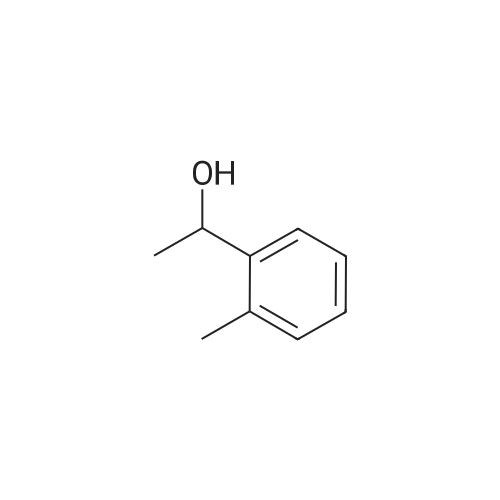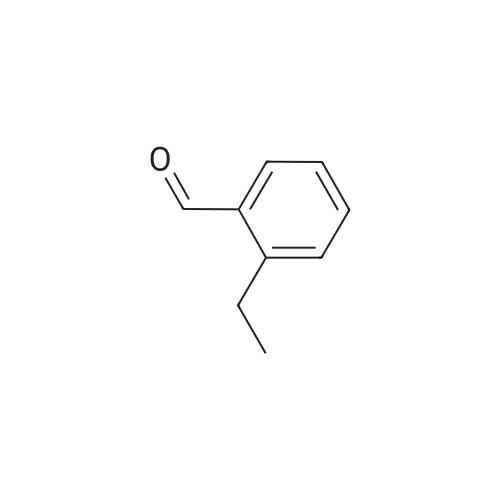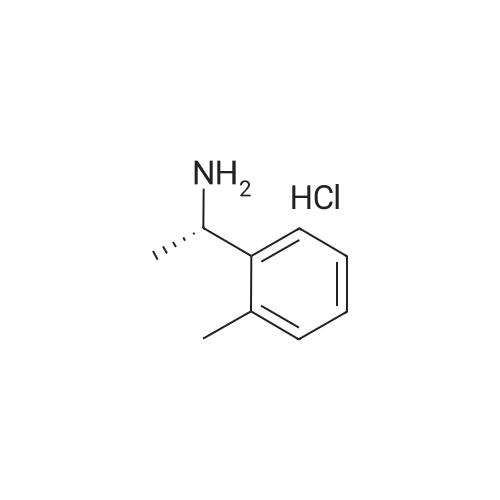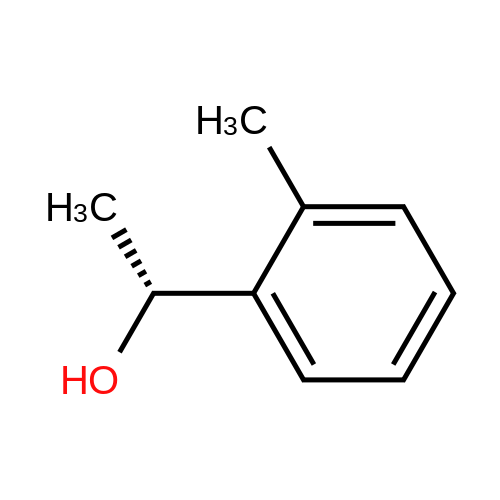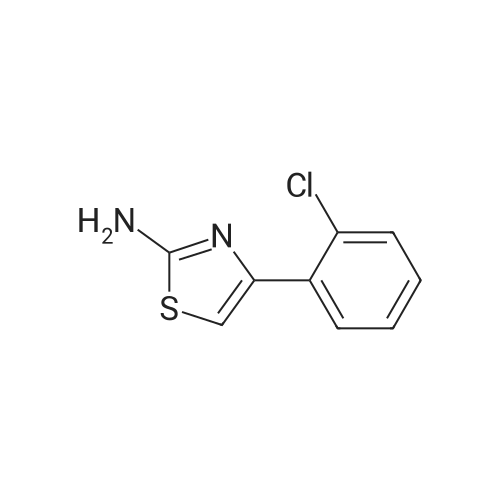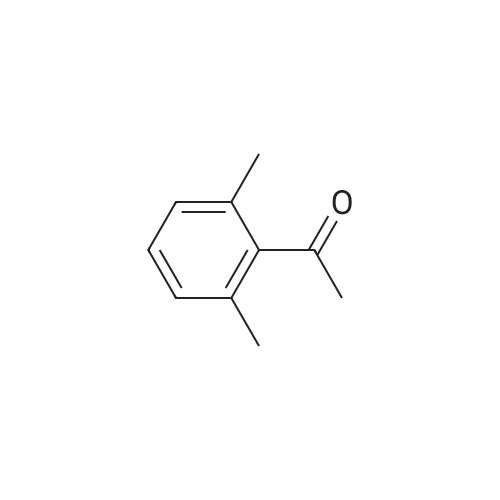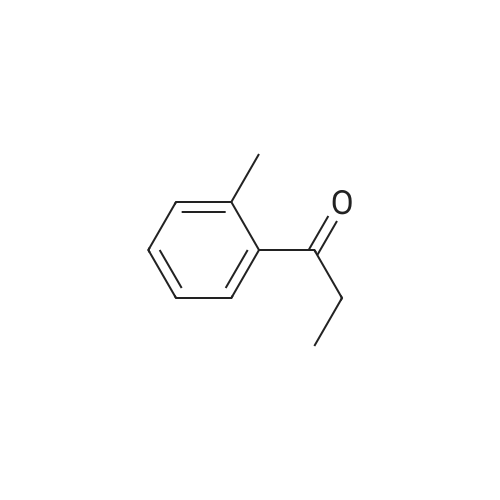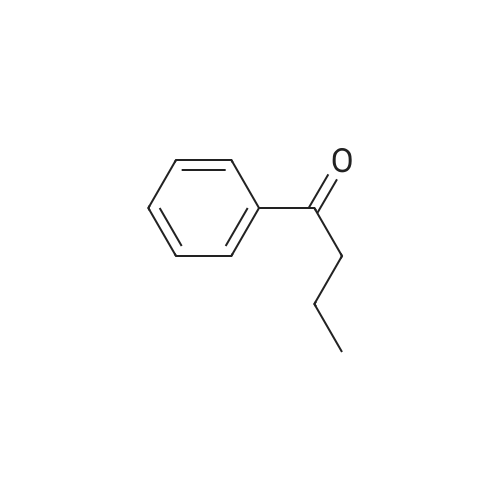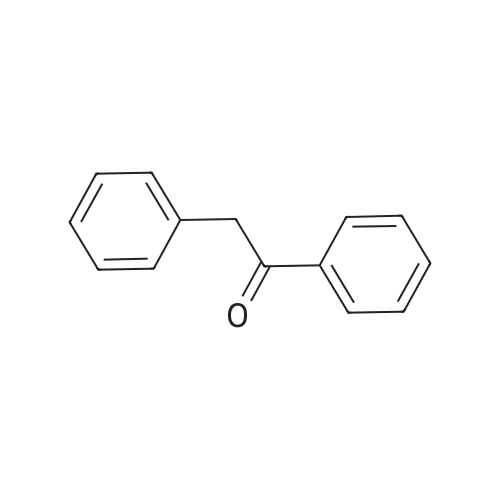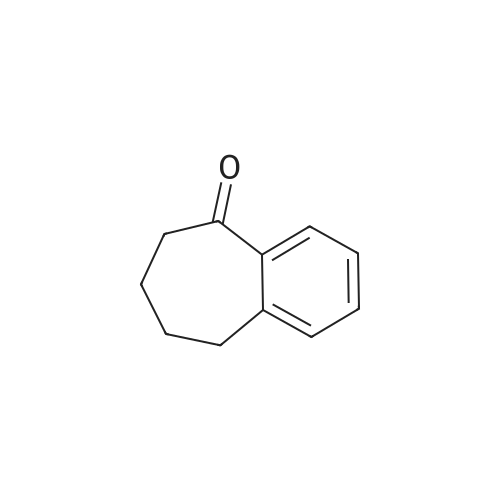Heterocyclic Building Blocks
Aliphatic Heterocycles (14712)
(1R,5S)-3-azabicyclo[3.1.0]hexane (11)1,2-dithiolane (7)1,4-diazepan-2-one (5)1,4-diazepan-5-one (8)1,4-dioxane (17)1,4-oxazepane (8)10,11-dihydro-5H-dibenzo[b,f]azepine (9)11,12-Didehydro-5,6-dihydrodibenz[b,f]azocine (14)3-((((9H-fluoren-9-yl)methoxy)carbonyl)glycyl)-2,2-dimethyloxazolidine-4-carboxylic acid (8)3H-diazirine (11)4-benzyl-1,4-oxazepane (5)tetrahydro-2H-thiopyran 1,1-dioxide (6)benzazepin (2)benzoxaphosphole (35)
Azetidines (2992)
1-(azetidin-1-yl)-2-bromoethan-1-one (3)1-(azetidin-3-yl)-1H-pyrazole (7)1-(phenylsulfonyl)azetidine (7)1-benzhydrylazetidine (13)1-benzylazetidine (6)1-methylazetidine (6)1-phenylazetidine (8)2,7-diazaspiro[3.5]nonane (7)2-azaspiro[3.3]heptane (11)2-imino-N-((6R,7R)-8-oxo-5-thia-1-azabicyclo[4.2.0]oct-2-en-7-yl)-2-(thiazol-4-yl)acetamide (3)3-bromoazetidine (3)3-methylazetidin-3-ol (3)3-methyleneazetidine (8)3-phenylazetidine (5)4-(azetidin-1-yl)piperidine (6)azetidin-2-one (10)azetidin-2-ylmethanol (6)azetidin-3-amine (4)azetidin-3-ol (8)azetidin-3-yl acetate (3)azetidin-3-ylmethanamine (3)azetidine-2-carboxylic acid (6)azetidine-3-carboxylic acid (5)benzyl azetidine-1-carboxylate (9)methyl azetidine-2-carboxylate (3)N-((6R,7R)-8-oxo-5-thia-1-azabicyclo[4.2.0]oct-2-en-7-yl)-2-phenylacetamide (5)tert-butyl azetidine-1-carboxylate (64)
Benzimidazoles (4426)
(1H-benzo[d]imidazol-2-yl)methanamine (6)(1H-benzo[d]imidazol-2-yl)methanol (13)1,2-diphenyl-1H-benzo[d]imidazole (7)1-benzyl-1H-benzo[d]imidazole (6)1-ethyl-1H-benzo[d]imidazole (4)1-methyl-1H-benzo[d]imidazole (37)1-phenyl-1H-benzo[d]imidazole (4)1H-benzo[d]imidazol-2-amine (7)1H-benzo[d]imidazol-5-amine (4)1H-benzo[d]imidazol-6-amine (6)1H-benzo[d]imidazole-2-carbaldehyde (4)1H-benzo[d]imidazole-2-carboxylic acid (7)1H-benzo[d]imidazole-2-thiol (10)1H-benzo[d]imidazole-4-carboxylic acid (6)1H-benzo[d]imidazole-5-carboxylic acid (4)2-((pyridin-2-ylmethyl)thio)-1H-benzo[d]imidazole (7)2-(1H-benzo[d]imidazol-2-yl)ethan-1-amine (5)2-(chloromethyl)-1H-benzo[d]imidazole (9)2-benzyl-1H-benzo[d]imidazole (7)2-bromo-1H-benzo[d]imidazole (3)2-chloro-1H-benzo[d]imidazole (17)2-methyl-1H-benzo[d]imidazole (19)4-bromo-1H-benzo[d]imidazole (10)4-methyl-1H-benzo[d]imidazole (7)5,6-dichloro-1H-benzo[d]imidazole (4)5-bromo-1H-benzo[d]imidazole (9)5-chloro-1H-benzo[d]imidazole (5)5-methoxy-1H-benzo[d]imidazole (2)5-methyl-1H-benzo[d]imidazole (5)6-chloro-1H-benzo[d]imidazole (12)methyl (1H-benzo[d]imidazol-2-yl)carbamate (5)methyl 1H-benzo[d]imidazole-2-carboxylate (3)tert-butyl 1H-benzo[d]imidazole-1-carboxylate (5)benzimidazol-amine (27)benzimidazole-carboxylate (6)benzimidazole-carboxylic acid (43)benzimidazole-hydrochloride (4)benzoimidazol-methanol (4)benzoimidazol-one (50)benzoimidazole-thione (3)bromo-benzimidazole (83)chloro-benzimidazole (5)dimethyl-benzoimidazole (23)dioxaborolane-benzimidazole (3)hydroxy-benzimidazole (23)methylbenzimidazole (2)phenyl-benzoimidazole (73)piperidine-benzimidazole (5)trifluoromethyl-benzimidazole (4)
Benzofurans (3708)
1-(benzofuran-2-yl)ethan-1-one (3)2,2-dimethyl-2,3-dihydrobenzofuran (7)2,3-dihydrobenzofuran-3-amine (11)2,3-dihydrobenzofuran-5-amine (3)2,3-dihydrobenzofuran-7-amine (5)2-(benzofuran-3-yl)acetic acid (3)2-bromodibenzo[b,d]furan (6)2-ethylbenzofuran (3)2-methylbenzofuran (5)3-methylbenzofuran (4)4-bromobenzofuran (3)4-phenyldibenzo[b,d]furan (8)5,7,8-trimethylchromane (3)5-bromo-2,3-dihydrobenzofuran (6)5-chloro-2,3-dihydrobenzofuran (5)5-fluoro-2,3-dihydrobenzofuran (5)5-methoxyisobenzofuran-1(3H)-one (5)6-bromo-2,3-dihydrobenzofuran (7)6-fluoro-2,3-dihydrobenzofuran (6)6-methoxybenzofuran (4)7-bromo-2,3-dihydrobenzofuran (6)7-bromobenzofuran (6)7-fluoro-2,3-dihydrobenzofuran (6)benzofuran-2(3H)-one (7)benzofuran-2-carbaldehyde (5)benzofuran-2-carboxylic acid (21)benzofuran-2-ylboronic acid (8)benzofuran-3(2H)-one (15)benzofuran-3-carboxylic acid (6)benzofuran-3-yl(phenyl)methanone (11)methyl benzofuran-2-carboxylate (6)aminobenzofuran (5)benzofuran-carboxylate (5)benzofuran-carboxylic acid (67)benzofuran-hydrochloride (37)benzofuran-methanol (2)benzofuran-one (88)benzofuranopyrimidine (4)bromobenzofuran (17)bromoisobenzofuran (1)chlorobenzofuran (9)chloroisobenzofuran (10)dihydrobenzofuran (100)dihydroisobenzofuran (10)dimethoxyisobenzofuran (4)epoxyisobenzofuran (4)ethylbenzofuran (3)fluorobenzofuran (19)fluoroisobenzofuran (5)hexahydroisobenzofuran (5)hydroxy-benzofuran (10)hydroxybenzofuran (8)hydroxyisobenzofuran (2)iodo-benzofuran (14)iodoisobenzofuran (2)isobenzofuran (36)methoxybenzofuran (14)methoxyisobenzofuran (4)methylbenzofuran (25)methylbenzofuro (13)methylisobenzofuran (2)nitrobenzofuran (8)nitroisobenzofuran (3)phenyl-benzofuran (4)piperidine-benzofuran (6)tetrahydrobenzofuran (6)
Benzothiazoles (2415)
2-(methylthio)benzo[d]thiazole (6)2-bromobenzo[d]thiazole (28)2-chlorobenzo[d]thiazole (21)2-methylbenzo[d]thiazole (26)4-bromobenzo[d]thiazole (9)4-chlorobenzo[d]thiazole (7)4-fluorobenzo[d]thiazole (6)4-methylbenzo[d]thiazole (10)5-chlorobenzo[d]thiazole (5)5-nitrobenzo[d]thiazole (3)6-bromobenzo[d]thiazole (7)6-chlorobenzo[d]thiazole (6)6-fluorobenzo[d]thiazole (5)6-methoxybenzo[d]thiazole (6)6-methylbenzo[d]thiazole (6)6-nitrobenzo[d]thiazole (3)7-bromobenzo[d]thiazole (8)7-chlorobenzo[d]thiazole (6)7-fluorobenzo[d]thiazole (9)benzo[d]thiazol-2-amine (30)benzo[d]thiazol-5-amine (3)benzo[d]thiazol-6-amine (3)benzo[d]thiazol-6-ol (2)benzo[d]thiazole-2-carbonitrile (11)benzo[d]thiazole-2-thiol (11)benzo[d]thiazole-6-carboxylic acid (5)methyl benzo[d]thiazole-6-carboxylate (5)benzothiazol-amine (6)benzothiazole-carboxylate (18)benzothiazole-carboxylic acid (27)benzothiazole-chloride (39)benzothiazole-nitrile (22)benzothiazole-thione (11)benzothiazolyl-bromide (4)bromobenzothiazole (7)chlorobenzothiazole (4)dichlorobenzothiazole (10)hydroxy-benzothiazole (17)methoxybenzothiazole (4)methylbenzothiazole (7)nitrobenzothiazole (3)trifluoromethyl-benzothiazole (17)
Benzothiophenes (1107)
2-(benzo[b]thiophen-2-yl)-4,5-dihydrooxazole (10)2-methylbenzo[b]thiophene (4)3-bromobenzo[b]thiophene (5)3-chlorobenzo[b]thiophene (6)3-methylbenzo[b]thiophene (4)4,5,6,7-tetrahydrobenzo[b]thiophene (21)5-bromobenzo[b]thiophene (3)5-chlorobenzo[b]thiophene (4)6-bromobenzo[b]thiophene (4)7-bromobenzo[b]thiophene (5)benzo[b]thiophen-2-amine (5)benzo[b]thiophen-2-ylboronic acid (5)benzo[b]thiophene-2-carbaldehyde (6)benzo[b]thiophene-2-carbonitrile (3)benzo[b]thiophene-2-carboxylic acid (32)benzo[b]thiophene-3-carbaldehyde (6)ethyl benzo[b]thiophene-2-carboxylate (9)methyl benzo[b]thiophene-2-carboxylate (27)benzothiophene-amine (4)benzothiophene-bromide (33)benzothiophene-carboxylate (35)benzothiophene-carboxylic acid (58)benzothiophene-dioxaborolane (8)benzothiophene-nitrile (4)benzothiophene-piperazine (5)
Benzoxazoles (2790)
2-chlorobenzo[d]oxazole (11)2-methylbenzo[d]oxazole (26)2-phenylbenzo[d]oxazole (22)3-phenylbenzo[d]oxazol-3-ium (8)5-bromobenzo[d]oxazole (3)5-chlorobenzo[d]oxazole (5)5-methylbenzo[d]oxazole (3)6-chlorobenzo[d]oxazole (4)benzo[d]oxazol-2-amine (16)benzo[d]oxazole-2-thiol (6)methyl benzo[d]oxazole-2-carboxylate (3)amino-benzoxazole (23)benzoxazol-amine (11)benzoxazol-one (3)benzoxazole-carboxylate (2)benzoxazole-carboxylic acid (25)benzoxazole-chloride (4)benzoxazole-methanol (4)dioxaborolane-benzoxazole (3)methyl-benzoxazole (110)phenyl-benzoxazole (4)trifluoromethyl-benzoxazole (1)
Carbazole Series (497)
1-methyl-9H-carbazole (7)2,3,4,9-tetrahydro-1H-carbazol-1-one (7)2-bromo-9H-carbazole (4)3,9-diphenyl-9H-carbazole (7)3-(tert-butyl)-9H-carbazole (3)3-bromo-9-phenyl-9H-carbazole (16)3-bromo-9H-carbazole (4)3-chloro-9H-carbazole (3)3-methyl-9H-carbazole (3)7H-benzo[c]carbazole (5)9-([1,1'-biphenyl]-4-yl)-9H-carbazole (9)9-(p-tolyl)-9H-carbazole (5)9-benzyl-9H-carbazole (7)9-ethyl-9H-carbazole (11)carbazole-carboxylic acid (9)carbazolyl-phenyl-boronic acid (17)carbazolyl-phenyl-boronic acid/ester (6)
Dioxolanes (1577)
(3aS,6aS)-tetrahydrofuro[3,4-d][1,3]dioxole (6)1,3-dioxolan-2-one (11)2,2-difluorobenzo[d][1,3]dioxole (24)2,2-dimethyl-1,3-dioxolane (27)2,2-dimethylbenzo[d][1,3]dioxole (7)2-phenyl-1,3-dioxolane (18)4-bromobenzo[d][1,3]dioxole (6)4-methyl-1,3-dioxolane (5)5,6-dihydro-[1,3]dioxolo[4,5-g]isoquinolino[3,2-a]isoquinolin-7-ium (4)5-bromobenzo[d][1,3]dioxole (12)5-chlorobenzo[d][1,3]dioxole (5)5-nitrobenzo[d][1,3]dioxole (4)9-((3aS,4R,6aR)-tetrahydrofuro[3,4-d][1,3]dioxol-4-yl)-9H-purine (7)benzo[d][1,3]dioxol-5-amine (3)benzothiophene-dioxaborolane (8)dioxaborolane-benzyl (3)dioxaborolane-indazole-carboxylate (3)dioxaborolane-indoline (2)dioxaborolane-phenol (44)
Furans (6958)
2,3-dihydrofuran-3-one (9)2-(bromomethyl)furan (3)2-(chloromethyl)furan (3)2-(furan-2-yl)-4,4,5,5-tetramethyl-1,3,2-dioxaborolane (6)2-bromofuran (21)2-chlorofuran (3)2-methylfuran (29)2-nitrofuran (8)3-bromofuran (11)4-methylisobenzofuran-1(3H)-one (3)5-nitro-2,3-dihydrobenzofuran (3)5-phenylfuran-2-carbaldehyde (9)5-phenylfuran-2-carboxylic acid (6)6-chloro-2,3-dihydrobenzofuran (3)6-fluoroisobenzofuran-1(3H)-one (3)7-chloro-2,3-dihydrobenzofuran (3)ethyl furan-2-carboxylate (6)furan-2,5-dione (8)furan-2-carbaldehyde (19)furan-2-carbonitrile (4)furan-2-carboxylic acid (29)furan-2-ylmethanol (7)furan-3-carboxylic acid (9)furo[3,2-b]pyridine (7)furo[3,2-c]pyridine (7)methyl furan-2-carboxylate (14)N-(furan-2-ylmethyl)aniline (5)aminodihydrofuran (7)aminofuran (6)aminofuro (3)Bromo-naphtho-benzofuran (2)bromofuran (32)chlorofuran (2)chlorofuro (11)cyanofuran (54)dibromofuran (5)dichlorofuro (3)dihydrofuran (31)dihydrofuro (15)dihydroxydihydrofuran (8)dimethylfuran (10)formylfuran (10)furan-one (248)furanopyrimidine (12)furochromen (6)furopyridine (31)furopyrrole (6)hexahydrofuro (6)hydroxydihydrofuran (34)methyldihydrofuran (11)methylfuran (58)nitrofuran (10)trifluoromethyl-furan (22)
Imidazoles (4701)
1,1'-diphenyl-4,4',5,5'-tetrahydro-1H,1'H-2,2'-biimidazole (11)1,2-dimethyl-1H-imidazole (6)1,3-diphenyl-1H-imidazol-3-ium (14)1,3-diphenyl-4,5-dihydro-1H-imidazol-3-ium (5)1-(imidazo[1,2-a]pyridin-3-yl)ethan-1-one (3)1-(phenylsulfonyl)-1H-imidazole (5)1-benzyl-1H-imidazole (20)1-decyl-3-methyl-1H-imidazol-3-ium (14)1-ethyl-1H-imidazole (3)1-isopropyl-1H-imidazole (5)1-phenyl-1H-imidazole-4-carboxylic acid (5)1-trityl-1H-imidazole (15)1H-imidazo[4,5-b]pyridine (14)1H-imidazo[4,5-c]pyridine (12)1H-imidazol-2-amine (6)1H-imidazole-2-carboxylic acid (7)1H-imidazole-4-carbonitrile (2)1H-imidazole-4-carboxylic acid (4)2-(pyridin-2-yl)-1H-benzo[d]imidazole (5)2-bromo-1H-imidazole (13)2-bromoimidazo[1,2-a]pyridine (5)2-ethyl-1H-imidazole (3)2-methyl-1-phenyl-1H-imidazole (10)2-methylimidazo[1,2-a]pyridine (8)2-phenyl-1H-benzo[d]imidazole (26)2-phenyl-1H-imidazole (24)2-phenylimidazo[1,2-a]pyridine (12)2-propyl-1H-imidazole (5)3-bromoimidazo[1,2-a]pyrazine (6)3-bromoimidazo[1,2-a]pyridine (26)3-bromoimidazo[1,2-a]pyrimidine (6)3-iodoimidazo[1,2-a]pyridine (10)3-methylimidazo[1,2-a]pyridine (3)4,5,6,7-tetrahydro-3H-imidazo[4,5-c]pyridine (5)4-(1H-imidazol-1-yl)benzaldehyde (6)4-bromo-1-phenyl-1H-imidazole (9)4-methyl-1-phenyl-1H-imidazole (6)4-methyl-1H-imidazole (6)4-phenyl-1H-imidazole (8)5,6,7,8-tetrahydroimidazo[1,2-a]pyrazine (15)5,6,7,8-tetrahydroimidazo[1,2-a]pyridine (12)5,6,7,8-tetrahydroimidazo[1,5-a]pyrazine (11)5-benzyl-1H-imidazole (1)5-bromoimidazo[1,2-a]pyridine (6)5-chloro-1H-imidazole (2)5-fluoro-1H-benzo[d]imidazole (7)5-iodo-1H-imidazole (4)5-methylimidazo[1,2-a]pyridine (4)5-phenyl-1H-imidazole (6)6,7-dihydro-5H-pyrrolo[1,2-a]imidazole (9)6-bromoimidazo[1,2-a]pyrazine (11)6-bromoimidazo[1,2-a]pyridine (14)6-bromoimidazo[1,2-a]pyrimidine (5)6-chloroimidazo[1,2-a]pyridine (4)6-chloroimidazo[1,2-b]pyridazine (30)7-methylimidazo[1,2-a]pyridine (3)8-bromoimidazo[1,2-a]pyrazine (7)8-bromoimidazo[1,2-a]pyridine (15)8-chloroimidazo[1,2-a]pyrazine (8)8-chloroimidazo[1,2-a]pyridine (7)8-fluoroimidazo[1,2-a]pyridine (3)8-methylimidazo[1,2-a]pyridine (9)ethyl 1H-imidazole-2-carboxylate (6)ethyl 2-(imidazo[1,2-a]pyridin-3-yl)acetate (3)ethyl imidazo[1,2-a]pyridine-2-carboxylate (25)ethyl imidazo[1,2-a]pyridine-3-carboxylate (13)imidazo[1,2-a]pyridin-3-amine (7)imidazo[1,2-a]pyridin-8-amine (7)imidazo[1,2-a]pyridin-8-ol (3)imidazo[1,2-a]pyridine-2-carbaldehyde (8)imidazo[1,2-a]pyridine-2-carboxylic acid (21)imidazo[1,2-a]pyridine-3-carbaldehyde (8)imidazo[1,2-a]pyridine-3-carboxylic acid (14)imidazo[1,2-a]pyridine-7-carboxylic acid (3)imidazo[1,2-a]pyridine-8-carboxylic acid (6)imidazo[1,2-a]pyrimidine-3-carboxylic acid (5)imidazo[1,2-c]pyrimidine (6)imidazo[1,5-a]pyrazine (9)imidazo[2,1-b]thiazole (14)methyl 1H-imidazole-2-carboxylate (4)methyl 1H-imidazole-5-carboxylate (5)methyl imidazo[1,2-a]pyridine-8-carboxylate (3)tert-butyl 1H-imidazole-1-carboxylate (6)amino-imidazole (79)aminoimidazole-carboxylate (21)benzyl-methyl-imidazole (2)biimidazole (5)bromo-imidazole (89)bromo-imidazopyridine (83)bromo-methyl-imidazole (88)bromoimidazo (102)bromoimidazole carboxylate (21)chloro-imidazopyridine (76)chloroimidazo (62)dibromoimidazo (8)dichloroimidazo (9)dihydroimidazo (25)dimethyl-imidazol (78)dimethylimidazo (9)dimethylimidazolium (6)fluoroimidazo (23)hydroxy-imidazopyridine (3)imidazol-amine (95)imidazol-ethanol (13)imidazol-hydrochloride (63)imidazol-methanol (22)imidazol-pyridine (96)imidazole-carboxylate (67)imidazole-carboxylic acid (50)imidazolyl-ethanol (3)imidazolyl-nitrile (36)imidazolyl-pyrimidine (2)imidazopyrazine (96)imidazopyridazine (62)imidazopyridin-amine (39)imidazopyridin-one (25)imidazopyridine (614)imidazopyridine-carbonitrile (7)imidazopyridine-carboxylate (74)imidazopyridine-carboxylic acid (65)imidazopyrimidine (83)imidazoquinoline (2)imidazothiazole (42)iodoimidazo (18)iodomethyl-imidazole (9)methoxyimidazo (13)methyl-imidazopyridine (82)methyl-nitro-imidazole (44)methylimidazo (121)methylimidazole (5)methylimidazolium (29)nitro-imidazole-carboxylate (6)nitroimidazole (19)phenylimidazo (7)phenylimidazole (8)piperidin-imidazolyl (39)pyrroloimidazole (13)tetrahydroimidazo (40)trifluoromethyl-imidazole (35)trifluoromethyl-imidazopyridine (28)
Imidazolidines (1145)
(3aR,6aS)-tetrahydro-1H-thieno[3,4-d]imidazol-2(3H)-one (18)1-phenylimidazolidin-2-one (8)3-phenyl-2-thioxoimidazolidin-4-one (6)3-phenylimidazolidine-2,4-dione (4)imidazolidin-2-one (14)imidazolidine-2,4-dione (17)benzylimidazolidine (8)dioxoimidazolidin (3)imidazolidin-one (34)methylimidazolidine (3)oxoimidazolidine (8)thioxoimidazolidin (9)
Indazoles (3077)
(1H-indazol-4-yl)boronic acid (3)(1H-indazol-6-yl)boronic acid (4)1-(1H-indazol-1-yl)ethan-1-one (7)1-(tetrahydro-2H-pyran-2-yl)-1H-indazole (17)1-benzyl-1H-indazole (7)1-ethyl-1H-indazole (7)1H-indazol-3-amine (23)1H-indazol-3-ol (10)1H-indazol-4-amine (12)1H-indazol-4-ol (4)1H-indazol-5-amine (3)1H-indazol-6-amine (5)1H-indazol-6-ol (6)1H-indazol-7-amine (6)1H-indazole-3-carbaldehyde (19)1H-indazole-3-carbonitrile (9)1H-indazole-3-carboxylic acid (24)1H-indazole-4-carboxylic acid (8)1H-indazole-5-carboxylic acid (4)1H-indazole-7-carboxylic acid (4)2,3-dimethyl-2H-indazole (4)2-methyl-2H-indazole (34)3-(piperidin-4-yl)-1H-indazole (5)3-chloro-1H-indazole (13)4,5,6,7-tetrahydro-1H-indazole (12)4-chloro-1H-indazole (18)4-fluoro-1H-indazole (22)4-methoxy-1H-indazole (7)4-methyl-1H-indazole (12)4-nitro-1H-indazole (10)5-bromo-1H-indazole (14)5-chloro-1H-indazole (9)5-methoxy-1H-indazole (5)5-nitro-1H-indazole (5)6-(trifluoromethyl)-1H-indazole (6)6-bromo-1H-indazole (23)6-chloro-1H-indazole (14)6-fluoro-1H-indazole (15)6-methoxy-1H-indazole (14)6-methyl-1H-indazole (9)6-nitro-1H-indazole (9)7-bromo-1H-indazole (18)7-chloro-1H-indazole (7)7-fluoro-1H-indazole (12)7-methoxy-1H-indazole (5)7-nitro-1H-indazole (11)methyl 1H-indazole-3-carboxylate (23)methyl 1H-indazole-4-carboxylate (10)methyl 1H-indazole-5-carboxylate (3)methyl 1H-indazole-6-carboxylate (9)methyl 1H-indazole-7-carboxylate (8)methyl 2-methyl-2H-indazole-3-carboxylate (3)tert-butyl 1H-indazole-1-carboxylate (29)amino-indazole (20)amino-indazole-carboxylate (11)bromo-fluoro-indazole (43)bromo-indazol-amine (4)bromo-indazole (167)bromo-indazole-carboxylate (25)bromo-methoxy-indazole (13)bromo-nitro-indazole (12)bromomethyl-indazole (22)chlorindazole-carboxylic-acid (6)chloro-indazole (41)chloro-indazole-amine (1)chloro-indazole-carboxylate (3)chloro-methyl-indazole (27)dimethyl-indazole (13)dioxaborolan-indazole (27)dioxaborolane-indazole-carboxylate (3)fluoro-indazol-amine (24)fluoro-indazole-carboxylate (20)fluoro-indazole-carboxylic-acid (2)fluoro-methyl-indazole (73)indazol-amide (3)indazol-amine (84)indazol-boronic acid (35)indazol-one (8)indazole-benzene (30)indazole-carbonitrile (25)indazole-carboxylate (36)indazole-carboxylic acid (64)indazole-hydrochloride (2)indazole-hydroxyl (10)indazole-methanol (6)iodo-indazol-amine (3)iodo-indazole (65)iodo-indazole-carboxylate (4)iodomethyl-indazole (24)methoxy-indazole-carboxylate (1)methoxyindazole-carboxylic-acid (2)methyl-indazolamide (13)methyl-nitro-indazole (25)methylindazole (6)nitro-indazol-amine (2)tetrahydropyran-indazole (4)trifluoromethyl-indazole (11)
Indoles (7655)
(1-(tert-butoxycarbonyl)-1H-indol-2-yl)boronic acid (17)(1H-indol-2-yl)boronic acid (3)(1H-indol-2-yl)methanol (7)(3aS,7aS)-octahydro-1H-indole (5)(9H-fluoren-9-yl)methyl (2-(1H-indol-3-yl)ethyl)carbamate (12)1,2,3,4-tetrahydrocyclopenta[b]indole (5)1,2-dimethyl-1H-indole (4)1-(1H-indol-1-yl)ethan-1-one (9)1-(1H-indol-3-yl)ethan-1-one (6)1-(phenylsulfonyl)-1H-indole (26)1-(triisopropylsilyl)-1H-pyrrolo[2,3-b]pyridine (8)1-benzyl-1H-indole (10)1-ethyl-1H-indole (7)1-methyl-1H-indole (45)1-methyl-1H-indole-2-carboxylic acid (8)1-methyl-1H-indole-3-carbaldehyde (9)1-methyl-1H-pyrrolo[2,3-b]pyridine (14)1-phenyl-1H-indole (5)1H-indol-3-ol (5)1H-indol-3-yl acetate (5)1H-indol-4-amine (9)1H-indol-4-ol (7)1H-indol-5-ol (4)1H-indol-6-amine (14)1H-indol-6-ol (6)1H-indol-7-amine (8)1H-indole-2-carbaldehyde (18)1H-indole-2-carbonitrile (9)1H-indole-3-carbonitrile (17)1H-indole-3-carboxylic acid (26)1H-indole-4-carboxylic acid (9)1H-indole-5-carbonitrile (5)1H-indole-5-carboxylic acid (4)1H-indole-6-carbonitrile (4)1H-indole-6-carboxylic acid (5)1H-indole-7-carbonitrile (6)1H-indole-7-carboxylic acid (7)1H-pyrrolo[2,3-b]pyridine-3-carbaldehyde (7)1H-pyrrolo[2,3-b]pyridine-5-carbaldehyde (5)2,3,4,5-tetrahydro-1H-pyrido[4,3-b]indole (12)2,3,4,9-tetrahydro-1H-pyrido[3,4-b]indole (13)2,3-dimethyl-1H-indole (9)2-(1,3,2-dioxaborolan-2-yl)-1-methyl-1H-indole (6)2-(1H-indol-1-yl)acetic acid (5)2-(1H-indol-3-yl)acetic acid (23)2-(1H-indol-3-yl)ethan-1-amine (4)2-(1H-indol-3-yl)ethan-1-ol (10)2-(2-methyl-1H-indol-3-yl)acetic acid (5)2-(4-fluorophenyl)-1H-indole (4)2-methyl-1H-indole-3-carbaldehyde (3)2-methyl-1H-pyrrolo[2,3-b]pyridine (12)3-(1-oxoisoindolin-2-yl)piperidine-2,6-dione (21)3-(1H-indol-3-yl)propanoic acid (4)3-(piperidin-4-yl)-1H-indole (8)3-iodo-1H-pyrrolo[2,3-b]pyridine (11)3-methyl-1H-indole (26)3H-indole (8)4-bromo-1H-indole (25)4-chloro-1H-indole (22)4-fluoro-1H-indole (24)4-fluoro-1H-pyrrolo[2,3-b]pyridine (6)4-fluoroindoline-2,3-dione (3)4-methoxy-1H-indole (11)4-methyl-1H-indole (13)4-nitro-1H-indole (6)5-(4,4,5,5-tetramethyl-1,3,2-dioxaborolan-2-yl)-1H-indole (5)5-(benzyloxy)-1H-indole (8)5-bromo-1-methyl-1H-indole (4)5-chloro-1H-indole (30)5-chloro-1H-indole-2-carboxylic acid (6)5-chloro-1H-pyrrolo[2,3-b]pyridine (13)5-fluoro-1H-indole (22)5-fluoro-1H-pyrrolo[2,3-b]pyridine (9)5-fluoroindolin-2-one (4)5-methoxy-1H-indole (11)5-methoxy-2-methyl-1H-indole (5)5-methyl-1H-indole (17)5-nitro-1H-indole (6)6-(trifluoromethyl)-1H-indole (5)6-bromo-1-methyl-1H-indole (3)6-bromo-1H-indole (15)6-bromo-1H-pyrrolo[2,3-b]pyridine (6)6-chloro-1H-indole (19)6-chloro-1H-pyrrolo[2,3-b]pyridine (13)6-fluoro-1H-indole (17)6-methoxy-1H-indole (12)6-methyl-1H-indole (18)6-methyl-1H-pyrrolo[2,3-b]pyridine (8)6-nitro-1H-indole (8)7-bromo-1H-indole (24)7-bromoindoline-2,3-dione (3)7-chloro-1H-indole (21)7-fluoro-1H-indole (18)7-fluoro-1H-indole-2-carboxylic acid (5)7-methoxy-1H-indole (8)7-methyl-1H-indole (30)7-nitro-1H-indole (11)9H-pyrido[3,4-b]indole (5)benzo[cd]indol-2(1H)-one (5)ethyl 1H-indole-3-carboxylate (6)ethyl 5-chloro-1H-indole-2-carboxylate (5)ethyl 5-fluoro-1H-indole-2-carboxylate (5)ethyl 6-chloro-1H-indole-2-carboxylate (5)ethyl 7-chloro-1H-indole-2-carboxylate (5)methyl 1H-indole-3-carboxylate (21)methyl 1H-indole-4-carboxylate (9)methyl 1H-indole-5-carboxylate (7)methyl 1H-indole-6-carboxylate (9)methyl 1H-indole-7-carboxylate (7)methyl 2-(1H-indol-3-yl)acetate (3)N-(2-(1H-indol-3-yl)ethyl)acetamide (5)spiro[indoline-3,4'-piperidin]-2-one (18)tert-butyl 1H-indole-1-carboxylate (18)tert-butyl 1H-pyrrolo[2,3-b]pyridine-1-carboxylate (9)tert-butyl 2-(1,3,2-dioxaborolan-2-yl)-1H-indole-1-carboxylate (6)tert-butyl 3-(hydroxymethyl)-1H-indole-1-carboxylate (10)tert-butyl 3-bromo-1H-indole-1-carboxylate (9)tert-butyl 3-iodo-1H-indole-1-carboxylate (7)tert-butyl 5-methoxy-1H-indole-1-carboxylate (6)tryptophan (23)aminoindole (5)azaindole (44)benzoindole (11)benzyloxyindole (1)biindolinylidene (1)bromo-indole-carboxylate (55)bromo-indole-carboxylic acid (28)bromo-methyl-indole (3)bromoindole (7)chlorindole-carboxylic-acid (2)chloro-indole-carboxylate (41)chloro-methyl indole (108)chloroindole (6)cyanoindole (5)dihydroindolo (14)dimethyl-indole (103)dioxaborolan-indole (88)fluorindole-carboxylic acid (25)fluorindole-carboxylic-acid (4)fluoro-indole-carboxylate (53)fluoroindole (5)fluoromethyl-indole (102)formyl-indole-carboxylate (15)formylindole (44)hydroxyindole (7)hydroxyisoindoline (2)hydroxymethy-indole-carboxylate (2)indol-amine (85)indol-methanamine (17)indol-methanol (7)indol-one (244)indole-boronic acid (82)indole-carbonitrile (33)indole-ethanol (6)indole-ethylamine (3)indole-hydrochloride (94)indole-hydroxyl (136)indolecarboxylate (2)indolecarboxylic (203)iodo-indole (46)isoindole (26)methoxy-indole-carboxylate (26)methoxy-methyl-indole (86)methoxyindole (9)methyl-nitro-indole (5)methylindole (16)nitro-indole-carboxylate (18)nitroindole (6)phenyl-indole (162)piperidine-indole (104)pyridinoindole (25)pyrimido-indole (5)trifluoromethyl-indole (46)
Indolines (4462)
(E)-[3,3'-biindolinylidene]-2,2'-dione (5)(Z)-3-((1H-pyrrol-2-yl)methylene)indolin-2-one (8)(Z)-3-(phenyl(phenylamino)methylene)indolin-2-one (5)(Z)-3-benzylideneindolin-2-one (7)1-(indolin-1-yl)ethan-1-one (9)1-benzylindoline-2,3-dione (5)1-methylindolin-2-one (14)1-methylindoline (3)1-methylindoline-2,3-dione (8)2-(1,3-dioxoisoindolin-2-yl)propanoic acid (3)2-methylindoline (7)2-methylisoindolin-1-one (7)3,3-dimethylindolin-2-one (5)3,3-dimethylindoline (7)4-bromoindoline (4)4-chloroindoline-2,3-dione (6)4-methylindoline (3)5-(4,4,5,5-tetramethyl-1,3,2-dioxaborolan-2-yl)indoline (5)5-bromoindolin-2-one (5)5-bromoindoline (8)5-bromoisoindoline-1,3-dione (3)5-chloroindolin-2-one (3)5-fluoroindoline (3)5-methoxyindoline (4)5-methylindolin-2-one (3)5-methylindoline (3)6-bromoindolin-2-one (8)6-bromoindoline-2,3-dione (4)6-chloroindolin-2-one (5)6-chloroindoline (3)6-chloroindoline-2,3-dione (5)6-fluoroindolin-2-one (5)6-fluoroindoline-2,3-dione (3)7-bromoindoline (3)7-fluoroindolin-2-one (3)7-fluoroindoline-2,3-dione (6)7-methylindoline-2,3-dione (7)indoline-2-carboxylic acid (3)methyl indoline-6-carboxylate (3)spiro[cyclopropane-1,3'-indolin]-2'-one (6)tert-butyl indoline-1-carboxylate (24)aminoindoline (10)aminoisoindoline (6)bromoindoline (17)bromoisoindolin (5)bromoisoindoline (6)chloroindolin (4)chloroisoindoline (3)dibromoindoline (12)dichloroindoline (16)difluoroindoline (1)dimethylindoline (21)dioxaborolane-indoline (2)dioxoindoline (8)dioxoisoindolin (72)fluoroindolin (9)fluoroindoline (9)fluoroisoindoline (10)hydroxy-indoline (3)hydroxyindolin (5)hydroxyisoindolin (40)indolin-one (186)indoline-carboxylate (59)indoline-carboxylic acid (19)indoline-nitrile (4)indoline-oxazine (4)isoindolin (14)isoindoline (20)methoxyindoline (12)methoxyisoindoline (9)methylindoline (46)methylisoindoline (18)nitroindolin (6)nitroindoline (11)nitroisoindoline (8)oxoindoline (32)oxoisoindoline (16)spiro-indoline-piperidine (34)trifluoromethyl-indoline (18)
Isoquinolines (2691)
1,3-dichloroisoquinoline (14)1-bromoisoquinoline (20)1-chloroisoquinoline (20)1-methylisoquinoline (9)1H-benzo[de]isoquinoline-1,3(2H)-dione (14)2-methyl-3,4-dihydroisoquinolin-1(2H)-one (6)3-bromoisoquinoline (10)3-chloroisoquinoline (20)3-methylisoquinoline (8)4-bromoisoquinolin-1(2H)-one (3)4-bromoisoquinoline (33)4-chloroisoquinoline (11)4-fluoroisoquinoline (6)5,6-dihydro-[1,3]dioxolo[4,5-g]isoquinolino[3,2-a]isoquinolin-7-ium (4)5-bromoisoquinoline (17)5-chloroisoquinoline (6)5-methoxyisoquinoline (6)5-nitroisoquinoline (7)6-bromo-3,4-dihydroisoquinolin-1(2H)-one (4)6-bromoisoquinoline (9)6-methoxy-3,4-dihydroisoquinolin-1(2H)-one (3)7-bromo-3,4-dihydroisoquinolin-1(2H)-one (5)7-bromoisoquinoline (6)7-chloroisoquinoline (6)7-fluoroisoquinoline (3)7-methoxyisoquinoline (5)8-bromoisoquinoline (17)8-chloroisoquinoline (7)8-fluoroisoquinolin-1(2H)-one (3)8-fluoroisoquinoline (10)8-methoxyisoquinoline (7)isoquinolin-1-amine (18)isoquinolin-1-ol (8)isoquinolin-3-amine (13)isoquinolin-3-ol (6)isoquinolin-4-amine (16)isoquinolin-4-ol (9)isoquinolin-4-ylboronic acid (3)isoquinolin-5-amine (9)isoquinolin-5-ol (7)isoquinolin-8-amine (6)isoquinoline-1-carbonitrile (7)isoquinoline-1-carboxylic acid (10)isoquinoline-3-carboxylic acid (7)isoquinoline-4-carboxylic acid (12)isoquinoline-5-carboxylic acid (5)isoquinoline-5-sulfonyl chloride (3)isoquinoline-6-carboxylic acid (3)methyl isoquinoline-3-carboxylate (3)methyl isoquinoline-4-carboxylate (6)tert-butyl 3,4-dihydroisoquinoline-2(1H)-carboxylate (19)aminoisoquinoline (13)aminoisoquinoline-carboxylic-acid (4)bromoisoquinoline (69)chloroisoquinoline (101)dibromoisoquinoline (9)dichloroisoquinoline (14)dihydroisoquinoline (107)ethynylisoquinoline (2)fluoroisoquinoline (78)hydroxyisoquinoline (11)iodo-isoquinoline (12)Isoquinolin-boronic-acid (5)isoquinolin-one (102)isoquinoline-benzene (27)isoquinoline-hydrochloride (7)isoquinoline-methanol (7)isoquinolinecarboxylate (4)isoquinolinecarboxylic (2)methoxyisoquinoline (59)methylisoquinoline (59)nitroisoquinoline (23)phenoxyisoquinoline (3)trifluoromethyl-isoquinoline (7)
Isoxazoles (3402)
(3-phenylisoxazol-5-yl)methanol (7)3-bromoisoxazole (7)3-methyl-5-phenylisoxazole (6)3-methylisoxazole (30)3-phenylisoxazol-5-amine (8)5-(thiophen-2-yl)isoxazole (5)5-cyclopropylisoxazole (5)5-methyl-3-phenylisoxazole (4)5-methylisoxazole (16)5-phenylisoxazole-3-carboxylic acid (15)ethyl isoxazole-3-carboxylate (8)ethyl isoxazole-4-carboxylate (5)isoxazol-3-amine (7)isoxazol-3-ylmethanol (3)isoxazol-5-amine (15)isoxazol-5-ylmethanol (5)isoxazole-3-carboxylic acid (8)isoxazole-5-carboxylic acid (7)methyl 5-phenylisoxazole-3-carboxylate (6)N-((5R,6R)-7-oxo-4-thia-1-azabicyclo[3.2.0]heptan-6-yl)-3-phenylisoxazole-4-carboxamide (1)aminoisoxazole (7)bromoisoxazole (5)dihydroisoxazol (2)dimethylisoxazole (17)ethylisoxazol (2)isoxazole (2)isoxazole-carboxylate (42)isoxazolecarboxylic (48)methylisoxazole (52)phenylisoxazole (28)
Morpholines (4974)
(R)-3-phenylmorpholine (7)(S)-3-phenylmorpholine (10)2,2-dimethylmorpholine (5)2,6-dimethylmorpholine (5)2-(methoxymethyl)morpholine (4)2-(morpholin-2-yl)acetic acid (5)2-ethylmorpholine (3)2-isopropylmorpholine (4)2-methylmorpholine (7)2-phenylmorpholine (8)3-(4-morpholinophenyl)oxazolidin-2-one (5)3-(methoxymethyl)morpholine (4)3-ethylmorpholine (4)3-isopropylmorpholine (5)3-methylmorpholine (13)3-phenylmorpholine (8)4-(2-fluorophenyl)morpholine (8)4-(3-phenoxypropyl)morpholine (7)4-(o-tolyl)morpholine (6)4-(pyrazin-2-yl)morpholine (5)4-(pyridin-4-yl)morpholine (5)4-(pyrimidin-2-yl)morpholine (9)4-benzylmorpholin-3-one (6)4-morpholinoaniline (4)4-morpholinobenzaldehyde (8)4-morpholinobenzoic acid (5)4-phenylmorpholin-3-one (6)6,6-dimethylmorpholine-3-carboxylic acid (5)benzyl morpholine-4-carboxylate (5)ethyl morpholine-2-carboxylate (4)methyl 2-(morpholin-3-yl)acetate (3)methyl morpholine-2-carboxylate (4)methyl morpholine-3-carboxylate (10)morpholin-2-ylmethanamine (8)morpholin-2-ylmethanol (12)morpholin-3-ylmethanol (14)morpholine-2-carbonitrile (4)morpholine-2-carboxylic acid (12)morpholine-3-carboxylic acid (10)morpholino(phenyl)methanone (11)tert-butyl (morpholin-2-ylmethyl)carbamate (3)tert-butyl 2-(bromomethyl)morpholine-4-carboxylate (3)tert-butyl morpholine-4-carboxylate (23)benzylmorpholine (25)cyanomorpholine (6)dimorpholine (3)dioxaborolane-morpholine (33)diphenylmorpholine (3)ethylmorpholine (9)hydroxyethyl-morpholine (3)hydroxymethylmorpholine (12)isopropylmorpholine (9)methylmorpholine (68)morpholin-hydrochloride (122)morpholin-methanol (21)morpholine-carboxylic acid (41)morpholine-nitrile (26)morpholinecarboxylate (10)morpholinobenzaldehyde (11)morpholinobenzo (13)morpholinobenzoic (8)morpholinobenzonitrile (10)morpholinoethanamine (3)morpholinoethanone (5)morpholinoethoxy (1)morpholinoethyl (5)morpholinomethyl (16)morpholinone (4)morpholinophenyl (14)morpholinopropoxy (6)morpholinopyridine (11)morpholinopyrimidin (6)morpholinosulfonyl (7)oxomorpholine (6)phenylmorpholine (14)pyrazo-morpholine (16)pyrimidine-morpholine (65)trifluoromethyl-phenyl-morpholine (13)
Naphthyridines (946)
1,5-naphthyridine-3-carboxylic acid (6)1,6-naphthyridine (22)1,7-naphthyridine (23)2,7-naphthyridine (5)3-bromo-1,5-naphthyridine (8)4-bromo-1,5-naphthyridine (5)4-chloro-1,5-naphthyridine (6)5,6,7,8-tetrahydro-1,6-naphthyridine (22)5,6,7,8-tetrahydro-1,7-naphthyridine (6)bromo-naphthyridin-one (5)bromo-naphthyridine (60)chloro-naphthyridin-one (5)chloro-naphthyridine (75)fluoro-naphthyridine (2)hydroxy-naphthyridine (16)methoxy-naphthyridine (6)methyl-naphthyridine (54)naphthyridin-amine (19)naphthyridin-one (56)naphthyridine hydrochloride (18)naphthyridine-carboxylate (34)naphthyridine-carboxylic acid (33)tetrahydronaphthyridin (20)
Oxadiazoles (3551)
1,2,4-oxadiazole (19)1,2,5-oxadiazole (12)1,3,4-oxadiazole (25)2,5-diphenyl-1,3,4-oxadiazole (6)2-phenyl-1,3,4-oxadiazole (26)3-phenyl-1,2,4-oxadiazole (23)benzo[c][1,2,5]oxadiazole (18)methyl-oxadiazole (99)oxadiazo-pyridine (4)oxadiazol-amide (3)oxadiazole-carboxylic acid (2)phenyl-oxadiazole (98)
Oxazines (239)
2,2-dimethyl-2H-benzo[b][1,4]oxazin-3(4H)-one (3)2-methyl-2H-benzo[b][1,4]oxazin-3(4H)-one (3)2H-pyrido[3,2-b][1,4]oxazin-3(4H)-one (8)3,4-dihydro-2H-pyrido[3,2-b][1,4]oxazine (5)6-amino-2H-benzo[b][1,4]oxazin-3(4H)-one (3)6-bromo-2H-benzo[b][1,4]oxazin-3(4H)-one (7)6-bromo-3,4-dihydro-2H-benzo[b][1,4]oxazine (5)6-chloro-2H-benzo[b][1,4]oxazin-3(4H)-one (8)6-chloro-3,4-dihydro-2H-benzo[b][1,4]oxazine (5)7-bromo-3,4-dihydro-2H-benzo[b][1,4]oxazine (7)spiro[benzo[d][1,3]oxazine-4,4'-piperidin]-2(1H)-one (5)amino-benzooxazine (4)benzoxazin-one (48)benzoxazine (10)benzoxazine-carboxylate (9)bromo-benzooxazin-one (10)dimethyl-pyridooxazin (24)hydroxy-benzooxazine (2)indenotriazolooxazine (5)indoline-oxazine (4)methy-pyrazolooxazine (4)methyl-benzooxazine (4)nitro-benzooxazin (8)phenoxazine (7)pyrazolooxazine (17)pyridooxazin-one (1)pyridoxazine (36)triazol-oxazine (5)
Oxazoles (2023)
2-bromooxazole (7)2-chlorooxazole (7)2-methyloxazole (19)2-phenyloxazole (16)3,4-diphenylisoxazole (8)4,5-diphenyloxazole (7)4-(oxazol-5-yl)aniline (3)4-methyloxazole (9)5-(4-nitrophenyl)oxazole (3)5-methyloxazole (5)6-bromobenzo[d]oxazole (3)ethyl oxazole-4-carboxylate (8)ethyl oxazole-5-carboxylate (3)methyl oxazole-4-carboxylate (9)oxazol-2-amine (8)oxazole-4-carboxylic acid (4)oxazolo[4,5-b]pyridine (7)oxazolo[5,4-b]pyridine (5)aminooxazole (3)bioxazole (12)bromooxazole (4)bromooxazolo (3)chlorooxazole (5)chlorooxazolo (8)dimethyloxazole (6)diphenyloxazole (7)indenoxazole (58)methyloxazole (30)methyloxazolo (4)oxazole-carboxylate (99)oxazole-carboxylic acid (108)oxazolooxazole (2)phenyloxazole (16)trifluoromethyl-oxazole (61)
Oxazolidines (1300)
(R)-4-benzyloxazolidin-2-one (5)(S)-4-benzyloxazolidin-2-one (11)3-(4-morpholinophenyl)oxazolidin-2-one (5)3-phenyloxazolidin-2-one (4)4-isopropyloxazolidine (6)oxazolidine (21)oxazolidine-2,5-dione (9)benzyloxazolidine (1)dimethyloxazolidin (6)dimethyloxazolidine (8)dioxooxazolidin (2)isopropyloxazolidine (1)methyloxazolidin (7)oxazolidinone (5)oxazolopyrazin-one-hydrochloride (3)phenyloxazolidin (9)phenyloxazolidine (2)propionyloxazolidin (5)
Oxazolines (1579)
(3aR,8aS)-2-(pyridin-2-yl)-3a,8a-dihydro-8H-indeno[1,2-d]oxazole (6)(3aS,8aR)-2-(pyridin-2-yl)-3a,8a-dihydro-8H-indeno[1,2-d]oxazole (7)(4R,5S)-4,5-diphenyl-2-(pyridin-2-yl)-4,5-dihydrooxazole (5)(R)-4-benzyl-2-(pyridin-2-yl)-4,5-dihydrooxazole (7)(R)-4-phenyl-2-(pyridin-2-yl)-4,5-dihydrooxazole (7)(S)-4-benzyl-2-(pyridin-2-yl)-4,5-dihydrooxazole (8)(S)-4-phenyl-2-(pyridin-2-yl)-4,5-dihydrooxazole (6)1,3-bis(4,5-dihydrooxazol-2-yl)benzene (8)2,2'-(1,3-diphenylpropane-2,2-diyl)bis(4,5-dihydrooxazole) (5)2,2'-(2-phenylethane-1,1-diyl)bis(4,5-dihydrooxazole) (5)2,3-dihydropyrazolo[5,1-b]oxazole (7)2,6-bis(4,5-dihydrooxazol-2-yl)pyridine (12)2-(6-benzhydrylpyridin-2-yl)-4,5-dihydrooxazole (10)2-(6-cyclopropylpyridin-2-yl)-4,5-dihydrooxazole (10)2-(benzo[b]thiophen-2-yl)-4,5-dihydrooxazole (10)2-(pyridin-2-ylmethyl)-4,5-dihydrooxazole (14)2-(quinolin-2-yl)-4,5-dihydrooxazole (7)2-phenyl-4,5-dihydrooxazole (18)4,4',5,5'-tetrahydro-2,2'-bioxazole (10)4-(tert-butyl)-2-(pyridin-2-yl)-4,5-dihydrooxazole (16)4-isopropyl-2-(pyridin-2-yl)-4,5-dihydrooxazole (16)bis((3aR,8aS)-3a,8a-dihydro-8H-indeno[1,2-d]oxazol-2-yl)methane (5)bis((3aS,8aR)-3a,8a-dihydro-8H-indeno[1,2-d]oxazol-2-yl)methane (5)bis(4,5-dihydrooxazol-2-yl)methane (22)dihydrooxazole (484)
Piperazines (7422)
(9H-fluoren-9-yl)methyl piperazine-1-carboxylate (7)(R)-2-benzylpiperazine (5)1,4-diphenylpiperazine (7)1-(2-chlorophenyl)piperazine (4)1-(2-fluorophenyl)piperazine (8)1-(3-methoxyphenyl)piperazine (4)1-(4-(4,4,5,5-tetramethyl-1,3,2-dioxaborolan-2-yl)phenyl)piperazine (10)1-(5-(4,4,5,5-tetramethyl-1,3,2-dioxaborolan-2-yl)pyridin-2-yl)piperazine (6)1-(methylsulfonyl)piperazine (5)1-(phenylsulfonyl)piperazine (16)1-(piperidin-4-yl)piperazine (6)1-(pyridin-3-yl)piperazine (13)1-(pyridin-3-ylmethyl)piperazine (6)1-benzhydryl-4-benzylpiperazine (1)1-benzhydrylpiperazine (9)1-benzyl 4-(tert-butyl) piperazine-1,4-dicarboxylate (10)1-benzyl-4-methylpiperazine (10)1-ethyl-4-phenylpiperazine (4)1-ethylpiperazine (5)1-isopropylpiperazine (4)1-methyl-4-(pyridin-2-yl)piperazine (5)1-methyl-4-phenylpiperazine (22)1-methylpiperazin-2-one (6)1-methylpiperazine (21)10-(3-(piperazin-1-yl)propyl)-10H-phenothiazine (2)2-(4-(benzyloxy)phenyl)-4,4,5,5-tetramethyl-1,3,2-dioxaborolane (10)2-(piperazin-1-yl)benzonitrile (6)2-(piperazin-1-yl)ethan-1-amine (6)2-(piperazin-1-yl)ethan-1-ol (9)2-(piperazin-1-yl)pyrazine (9)2-(piperazin-1-yl)pyrimidine (11)2-phenylpiperazine (17)3-(piperazin-1-yl)aniline (3)3-(piperazin-1-yl)benzoic acid (3)3-(piperazin-1-yl)pyridazine (7)3-methylpiperazin-2-one (7)4-(piperazin-1-yl)benzaldehyde (5)4-(piperazin-1-yl)pyrimidine (13)benzyl 2-methylpiperazine-1-carboxylate (7)benzyl 3-(hydroxymethyl)piperazine-1-carboxylate (6)benzyl 3-methylpiperazine-1-carboxylate (5)phenyl(piperazin-1-yl)methanone (20)piperazine-2,5-dione (9)tert-butyl 3-oxopiperazine-1-carboxylate (7)tert-butyl 4-(pyridin-2-yl)piperazine-1-carboxylate (12)tert-butyl 4-benzylpiperazine-1-carboxylate (13)tert-butyl 4-phenylpiperazine-1-carboxylate (23)tert-butyl piperazine-1-carboxylate (30)benzothiophene-piperazine (5)benzylpiperazine (14)butylpiperazine (3)cyanopiperazine (3)dimethylpiperazine (39)dioxaborolane-piperazine (37)ethylpiperazine (12)hydroxymethyl-piperazine-carboxylate (16)isobutylpiperazine (6)isopropylpiperazine (8)methylpiperazine (161)oxopiperazine (12)phenylpiperazine (16)piperazin-amine (50)piperazin-pyrimidin (6)piperazine-carboxylate (47)piperazine-carboxylic acid (38)piperazine-hydrochloride (191)piperazine-hydroxyl (71)piperazine-methanol (5)piperazine-pyrazine (15)piperazine-pyridine (141)piperazine-quinoline (49)propylpiperazine (10)pyrazol-piperazine (39)trifluoromethyl-phenyl-piperazin (23)trifluoromethyl-piperazine (45)trimethylpiperazine (5)
Piperidines (21838)
(9H-fluoren-9-yl)methyl piperidine-1-carboxylate (16)(E)-N-(3-oxo-1-phenyl-3-(piperidin-1-yl)prop-1-en-2-yl)benzamide (6)(R)-2-phenylpiperidine (10)(R)-3-aminopiperidin-2-one (3)(R)-N-(piperidin-3-yl)-7H-pyrrolo[2,3-d]pyrimidin-4-amine (5)(S)-2-phenylpiperidine (11)(S)-N-phenylpiperidine-2-carboxamide (1)1,3-dihydrospiro[indene-2,4'-piperidine] (5)1,4'-bipiperidine (8)1-((benzyloxy)carbonyl)piperidine-2-carboxylic acid (5)1-((benzyloxy)carbonyl)piperidine-3-carboxylic acid (3)1-(methylsulfonyl)piperidine (6)1-(phenylsulfonyl)piperidine (23)1-(piperidin-1-yl)ethan-1-one (13)1-(piperidin-4-yl)piperazine (6)1-benzyl 3-methyl piperidine-1,3-dicarboxylate (3)1-benzyl-N-methylpiperidin-3-amine (6)1-benzylpiperidin-3-one (5)1-benzylpiperidin-4-amine (8)1-benzylpiperidin-4-one (8)1-isopropylpiperidine (5)1-methyl-4-phenylpiperidine (4)1-methylpiperidin-2-one (3)1-oxa-8-azaspiro[4.5]decane (5)1-phenylpiperidin-2-one (8)2,2-dimethylpiperidin-4-one (6)2,2-dimethylpiperidine (21)2,7-diazaspiro[3.5]nonane (7)2,8-diazaspiro[4.5]decan-3-one (6)2,8-diazaspiro[4.5]decane (5)2-(piperidin-1-yl)ethan-1-amine (8)2-(piperidin-1-yl)ethan-1-ol (10)2-(piperidin-1-yl)pyridine (11)2-(piperidin-1-yl)pyrimidine (16)2-(piperidin-2-yl)ethan-1-ol (8)2-(piperidin-4-yl)ethan-1-ol (5)2-(piperidin-4-yl)pyridine (5)2-methylpiperidin-4-one (6)2-methylpiperidine (14)2-phenylpiperidine (14)3,3-difluoropiperidin-4-one (3)3,3-difluoropiperidine (29)3,3-dimethylpiperidin-4-one (3)3,3-dimethylpiperidine (5)3-(1-oxoisoindolin-2-yl)piperidine-2,6-dione (21)3-(piperidin-1-yl)pyridine (5)3-(piperidin-4-yl)-1H-indazole (5)3-(piperidin-4-yl)-1H-indole (8)3-(piperidin-4-yl)pyridine (5)3-fluoropiperidin-4-one (3)3-fluoropiperidine (26)3-methoxypiperidine (7)3-methylpiperidin-4-one (3)3-methylpiperidine (10)3-phenylpiperidine (6)4,4-difluoropiperidine (5)4-(1H-pyrazol-1-yl)piperidine (11)4-(4,4,5,5-tetramethyl-1,3,2-dioxaborolan-2-yl)-1,2,3,6-tetrahydropyridine (11)4-(azetidin-1-yl)piperidine (6)4-(benzyloxy)piperidine (1)4-(piperidin-1-yl)pyrimidine (9)4-(pyrrolidin-1-yl)piperidine (6)4-benzylpiperidine (18)4-hydrazineylpiperidine (5)4-hydroxypiperidin-2-one (3)4-methyl-1-phenylpiperidine (6)4-methylenepiperidine (14)4-oxopiperidine-2-carboxylic acid (3)4-phenylpiperidin-4-ol (10)5-hydroxypiperidin-2-one (3)6-azaspiro[2.5]octane (10)6-oxopiperidine-2-carboxylic acid (3)7-azaspiro[3.5]nonane (7)azepane (25)benzyl 3-hydroxypiperidine-1-carboxylate (7)benzyl 4-oxopiperidine-1-carboxylate (12)benzyl piperidin-4-ylcarbamate (7)benzyl piperidine-1-carboxylate (50)benzyl-3-aminopiperidine-1-carboxylate (6)ethyl piperidine-1-carboxylate (5)ethyl piperidine-2-carboxylate (9)ethyl piperidine-3-carboxylate (13)ethyl piperidine-4-carboxylate (9)methyl 4-oxopiperidine-2-carboxylate (3)methyl piperidine-2-carboxylate (12)methyl piperidine-3-carboxylate (19)N-benzylpiperidin-4-amine (3)N-methylpiperidin-3-amine (5)N-phenylpiperidine-2-carboxamide (2)phenyl(piperidin-1-yl)methanone (21)phenyl(piperidin-4-yl)methanone (21)piperidin-2-ylmethanamine (6)piperidin-2-ylmethanol (11)piperidin-3-amine (17)piperidin-3-ol (27)piperidin-3-one (13)piperidin-3-ylmethanamine (5)piperidin-3-ylmethanol (15)piperidin-4-amine (14)piperidin-4-ol (34)piperidin-4-ylmethanamine (7)piperidin-4-ylmethanol (8)piperidine-2,4-dione (5)piperidine-2,6-dione (13)piperidine-2-carboxylic acid (26)piperidine-3-carboxamide (5)piperidine-3-carboxylic acid (14)piperidine-4-carboxylic acid (12)quinuclidine (12)spiro[benzo[d][1,3]oxazine-4,4'-piperidin]-2(1H)-one (5)spiro[chromane-2,4'-piperidin]-4-one (6)spiro[indene-2,4'-piperidin]-1(3H)-one (5)spiro[indoline-3,4'-piperidin]-2-one (18)spiro[indoline-3,4'-piperidine] (5)tert-butyl (2-oxopiperidin-3-yl)carbamate (4)tert-butyl (6-oxopiperidin-3-yl)carbamate (3)tert-butyl (piperidin-3-ylmethyl)carbamate (5)tert-butyl 2-oxopiperidine-1-carboxylate (3)tert-butyl 3-bromopiperidine-1-carboxylate (4)tert-butyl 4-oxopiperidine-1-carboxylate (16)tert-butyl 4-phenoxypiperidine-1-carboxylate (12)tert-butyl 4-phenylpiperidine-1-carboxylate (16)tert-butyl piperidin-3-ylcarbamate (9)acetylpiperidine (3)aminopiperidine (31)benzoylpiperidine (26)benzylpiperidine (32)bipiperidine (12)bromopiperidine (6)carbamoylpiperidine (4)chloropiperidine (6)cyanopiperidine (13)cyclopropylpiperidin (1)difluoropiperidine (19)dimethylpiperidine (46)dioxaborolane-piperidine (4)dioxopiperidine (14)ethylpiperidine (15)ethynylpiperidine (5)fluoropiperidine (33)formylpiperidine (9)hydroxyethyl-piperidine-carboxylate (3)hydroxymethyl-piperidine-carboxylate (22)hydroxypiperidine (45)isopropylpiperidine (11)methoxypiperidine (11)methylenepiperidine (5)methylpiperidine (182)oxoethyl-piperidine-carboxylate (4)oxopiperidine (51)pentamethylpiperidin (1)phenoxypiperidine (57)phenylpiperidine (28)piperidin-amine (1)piperidin-imidazolyl (39)piperidine-benzimidazole (5)piperidine-benzofuran (6)piperidine-carboxylate (516)piperidine-carboxylate-hydrochloride (54)piperidine-carboxylic acid (164)piperidine-ethanol (16)piperidine-hydrochloride (39)piperidine-indole (104)piperidine-pyrimidine (189)piperidine-triazole (20)piperidineacetic (5)piperidinecarboxylate (7)piperidinecarboxylic (6)piperidinemethanol (6)piperidinone (14)piperidinyl-phenyl-boronic acid (35)piperidinyl-phenyl-boronic acid/ester (11)propylpiperidine (8)pyrazole-piperidine (67)pyridin-piperidine (167)tetrahydropyrazolopyridine (8)tetramethylpiperidine (9)trifluoromethyl-phenyl-piperidine (27)trifluoromethyl-piperidine (89)
Purines (2022)
(R)-N-(9-(tetrahydrofuran-2-yl)-9H-purin-6-yl)benzamide (5)2-(acetoxymethyl)-5-(9H-purin-9-yl)tetrahydrofuran-3,4-diyl diacetate (6)2-(hydroxymethyl)-5-(9H-purin-9-yl)tetrahydrofuran-3,4-diol (28)2-chloro-7H-purine (3)2-chloro-9H-purine (5)7H-purin-2-amine (6)7H-purin-6-amine (9)9-((3aS,4R,6aR)-tetrahydrofuro[3,4-d][1,3]dioxol-4-yl)-9H-purine (7)9-(tetrahydrofuran-2-yl)-9H-purin-6-amine (30)9-(tetrahydrofuran-2-yl)-9H-purin-6-ol (6)9-(tetrahydrofuran-2-yl)-9H-purine (2)9H-purin-6-amine (3)amino-purin (184)chloro-purine (33)purin-one (52)
Pyrans (1092)
(S)-2-phenylchroman-4-one (17)1-(tetrahydro-2H-pyran-2-yl)-1H-indazole (17)2,2-dimethylchromane (5)2-(2-oxo-2H-chromen-4-yl)acetic acid (4)2-oxo-2H-chromene-3-carbonitrile (5)2-oxo-2H-chromene-3-carboxylic acid (14)2H-chromene (16)3,4-dihydro-2H-pyran (11)3,6-dihydro-2H-pyran (8)3-acetyl-2H-chromen-2-one (3)3-hydroxy-2-phenyl-4H-chromen-4-one (20)4-(trifluoromethyl)-2H-chromen-2-one (6)4-hydroxy-2H-chromen-2-one (10)4-methyl-2H-chromen-2-one (26)5-fluorochroman-4-one (3)5-fluorochromane (6)5-hydroxy-2-phenyl-4H-chromen-4-one (36)5-methoxy-2-phenyl-4H-chromen-4-one (10)6-bromochroman-4-one (6)6-chlorochroman-4-one (6)6-chlorochromane (6)6-fluorochroman-4-one (5)6-fluorochromane (6)6-methoxychromane (5)7-(diethylamino)-2H-chromen-2-one (8)7-bromochroman-4-one (4)7-bromochromane (7)7-chlorochromane (5)7-fluorochroman-4-one (5)7-hydroxy-2H-chromen-2-one (21)7-methoxy-2H-chromen-2-one (11)7-methoxychroman-4-one (3)8-bromochroman-4-one (4)8-bromochromane (6)8-chlorochromane (5)8-fluorochromane (5)8-methylchroman-4-one (4)8-methylchromane (10)chroman-2-one (5)chroman-2-ylmethanamine (3)chroman-3-amine (3)chroman-4-amine (20)chroman-4-ol (4)chromane-2-carboxylic acid (6)chromane-3-carboxylic acid (4)dihydro-2H-pyran-2,6(3H)-dione (5)ethyl 2-oxo-2H-chromene-3-carboxylate (5)isochromane (11)spiro[chromane-2,4'-piperidin]-4-one (6)tetrahydro-2H-pyran-2-one (16)tetrahydro-2H-thiopyran (10)tetrahydro-4H-pyran-4-one (12)thiochroman-4-one (10)amino-chromen (48)benzopyran (7)benzopyran-carboxylate (3)benzopyran-ethylamine (1)benzopyran-nitrile (1)bromo-chromen (34)chlorochroman (10)chroman-carboxylate (4)chroman-carboxylic (26)chroman-one (114)chromen-one (37)chromene-carbonitrile (4)chromene-carboxylic acid (27)furochromen (6)hydroxychroman-one (5)methoxy-chromen-one (5)methoxy-pyran (142)methyl-chromen (4)methyl-pyran (6)phenyl-chromen-one (153)phenylchroman (4)pyran-carboxylic acid (58)pyran-one (159)pyranopyridine (4)pyranoquinoline (5)pyranyl-carboxylate (7)thioglucopyranoside (4)trifluoromethyl-chroman (3)
Pyrazines (3350)
1,2,3,4-tetrahydropyrido[2,3-b]pyrazine (5)1-(pyrazin-2-yl)ethan-1-one (5)1H-pyrazolo[3,4-b]pyrazine (5)2,3-diphenylpyrazine (5)2,5-dibromopyrazine (4)2,5-dichloropyrazine (4)2,6-dibromopyrazine (9)2,6-dichloropyrazine (14)2-(piperazin-1-yl)pyrazine (9)2-(trifluoromethyl)pyrazine (6)2-bromo-3-methoxypyrazine (5)2-bromo-3-methylpyrazine (5)2-bromo-5-chloropyrazine (6)2-bromo-6-chloropyrazine (5)2-bromo-6-methylpyrazine (5)2-bromopyrazine (15)2-chloro-3-methylpyrazine (7)2-chloro-6-methylpyrazine (12)2-chloropyrazine (24)2-ethoxypyrazine (3)2-ethylpyrazine (9)2-fluoropyrazine (7)2-iodopyrazine (25)2-methoxypyrazine (28)2-methylpyrazine (16)2-phenylpyrazine (12)3-chloropyrazin-2-amine (6)3-chloropyrazine-2-carbonitrile (6)4,5,6,7-tetrahydropyrazolo[1,5-a]pyrazine (7)4-(pyrazin-2-yl)morpholine (5)5,6,7,8-tetrahydro-[1,2,4]triazolo[4,3-a]pyrazine (11)5,6,7,8-tetrahydroimidazo[1,2-a]pyrazine (15)5,6,7,8-tetrahydroimidazo[1,5-a]pyrazine (11)5-bromopyrazin-2-amine (13)5-bromopyrazin-2-ol (5)5-chloropyrazin-2-amine (9)5H-pyrrolo[2,3-b]pyrazine (14)6-bromopyrazin-2-amine (5)6-chloropyrazin-2-amine (11)[1,2,4]triazolo[1,5-a]pyrazine (9)[1,2,4]triazolo[4,3-a]pyrazine (11)ethyl pyrazine-2-carboxylate (10)imidazo[1,5-a]pyrazine (9)methyl 3-bromopyrazine-2-carboxylate (5)methyl 6-bromopyrazine-2-carboxylate (7)methyl 6-chloropyrazine-2-carboxylate (5)methyl pyrazine-2-carboxylate (19)pyrazin-2-amine (22)pyrazin-2-ol (7)pyrazin-2-ylmethanamine (11)Pyrazine Derivatives (97)pyrazine-2-carbaldehyde (16)pyrazine-2-carbohydrazide (3)pyrazine-2-carbonitrile (15)pyrazine-2-carboxamide (10)pyrazine-2-carboxylic acid (34)pyrazolo[1,5-a]pyrazine (5)pyrido[2,3-b]pyrazine (12)pyrido[3,4-b]pyrazine (11)tert-butyl pyrazin-2-ylcarbamate (8)aminopyrazine (11)bromopyrazine (25)chloro-triazolopyridazine (3)chloropyrazine (41)cyanopyrazine (3)dibromopyrazine (7)dichloropyrazine (21)dihydropyrazine (6)dimethylpyrazine (30)ethoxypyrazine (5)ethylpyrazine (7)fluoropyrazine (6)hydrazinylpyrazine (4)hydroxypyrazine (4)imidazopyrazine (96)iodopyrazine (17)methoxypyrazine (36)methylpyrazine (72)octahydropyrazino (3)oxazolopyrazin-one-hydrochloride (3)phenylpyrazin (5)piperazine-pyrazine (15)pyrazin-amine (86)pyrazin-one (60)pyrazine-nitrile (43)pyrazinecarboxylate (93)pyrazinecarboxylic (67)pyrazino (5)pyrazino-nitrile (23)pyrazolopyrazine (34)pyridopyrazine (39)pyrrolopyrazine (47)triazolopyrazine (49)trifluoromethyl-phenyl-pyrazin (1)trifluoromethyl-pyrazine (38)trimethylpyrazine (2)
Pyrazoles (16094)
(1-methyl-1H-pyrazol-3-yl)methanol (7)(1-phenyl-1H-pyrazol-4-yl)boronic acid (4)1,3-dimethyl-1H-pyrazole (28)1,3-diphenyl-1H-pyrazole (6)1,4,5,6-tetrahydropyrrolo[3,4-c]pyrazole (6)1,5-diphenyl-1H-pyrazole (13)1-(2-chlorophenyl)-1H-pyrazole (3)1-(3-chlorophenyl)-1H-pyrazole (3)1-(4-methoxybenzyl)-1H-pyrazole (5)1-(azetidin-3-yl)-1H-pyrazole (7)1-(tetrahydro-2H-pyran-2-yl)-1H-pyrazole (9)1-(tetrahydro-2H-pyran-4-yl)-1H-pyrazole (6)1-benzyl-1H-pyrazolo[3,4-b]pyridine (9)1-benzyl-4-bromo-1H-pyrazole (5)1-benzyl-4-iodo-1H-pyrazole (5)1-cyclopentyl-1H-pyrazole (5)1-cyclopropyl-1H-pyrazole (9)1-methyl-1H-pyrazol-3-amine (14)1-methyl-3-phenyl-1H-pyrazole (21)1-methyl-4-(4,4,5,5-tetramethyl-1,3,2-dioxaborolan-2-yl)-1H-pyrazole (6)1-methyl-5-phenyl-1H-pyrazole (7)1-phenyl-1H-pyrazol-3-amine (3)1-phenyl-1H-pyrazol-3-ol (3)1-phenyl-1H-pyrazol-5-amine (4)1-phenyl-1H-pyrazole-3-carboxylic acid (9)1-phenyl-1H-pyrazole-4-carbaldehyde (4)1-phenyl-1H-pyrazole-4-carbonitrile (13)1-phenyl-1H-pyrazole-4-carboxylic acid (17)1-phenyl-1H-pyrazole-5-carboxylic acid (3)1-phenyl-3-(trifluoromethyl)-1H-pyrazole (5)1-trityl-1H-pyrazole (5)1H-pyrazol-4-amine (6)1H-pyrazol-4-ol (3)1H-pyrazol-5-amine (19)1H-pyrazole-4-carbaldehyde (17)1H-pyrazole-4-carbonitrile (5)1H-pyrazole-4-carboxylic acid (6)1H-pyrazole-4-sulfonyl chloride (8)1H-pyrazole-5-carboxamide (3)1H-pyrazole-5-carboxylic acid (10)1H-pyrazolo[3,4-b]pyrazine (5)1H-pyrazolo[3,4-b]pyridin-5-amine (3)1H-pyrazolo[3,4-d]pyrimidin-4-amine (5)1H-pyrazolo[4,3-d]pyrimidine (5)2,3-dihydropyrazolo[5,1-b]oxazole (7)2,4-dihydro-3H-pyrazol-3-one (10)2,6-di(1H-pyrazol-1-yl)pyridine (5)2-(1H-pyrazol-1-yl)pyridine (16)2-(1H-pyrazol-1-yl)pyrimidine (6)2-(1H-pyrazol-3-yl)pyridine (5)2-phenyl-2,4-dihydro-3H-pyrazol-3-one (23)3-(tert-butyl)-1-phenyl-1H-pyrazole (4)3-bromo-1-methyl-1H-pyrazole (16)3-bromopyrazolo[1,5-a]pyridine (6)3-bromopyrazolo[1,5-a]pyrimidine (11)3-chloro-1-methyl-1H-pyrazole (7)3-cyclopropyl-1H-pyrazole (5)3-iodo-1-methyl-1H-pyrazole (6)3-iodo-1H-pyrazolo[3,4-b]pyridine (4)3-methyl-1-phenyl-1H-pyrazole (23)3-phenyl-1H-pyrazol-5-amine (11)4,5,6,7-tetrahydro-1H-pyrazolo[3,4-c]pyridine (7)4,5,6,7-tetrahydro-1H-pyrazolo[4,3-c]pyridine (14)4,5,6,7-tetrahydropyrazolo[1,5-a]pyrazine (7)4,5,6,7-tetrahydropyrazolo[1,5-a]pyridine (6)4-(1H-pyrazol-1-yl)benzoic acid (3)4-(1H-pyrazol-1-yl)piperidine (11)4-bromo-1-methyl-1H-pyrazole (14)4-bromo-1-phenyl-1H-pyrazole (11)4-bromo-1H-pyrazolo[3,4-b]pyridine (4)4-bromopyrazolo[1,5-a]pyridine (8)4-chloro-1H-pyrazole (10)4-chloro-1H-pyrazolo[3,4-b]pyridine (5)4-chloro-1H-pyrazolo[3,4-d]pyrimidine (5)4-iodo-1H-pyrazole (9)4-methyl-1-phenyl-1H-pyrazole (6)4-methyl-1H-pyrazole (11)4-nitro-1H-pyrazole (8)4-phenyl-1H-pyrazole (18)5,6-dihydro-4H-pyrrolo[1,2-b]pyrazole (8)5-(difluoromethyl)-1H-pyrazole (6)5-bromo-1H-pyrazole (11)5-bromo-1H-pyrazolo[3,4-b]pyridine (11)5-bromo-1H-pyrazolo[3,4-c]pyridine (5)5-chloro-1H-pyrazole (8)5-chloro-1H-pyrazolo[3,4-b]pyridine (3)5-chloropyrazolo[1,5-a]pyrimidine (24)5-cyclopropyl-1H-pyrazole (6)5-iodo-1H-pyrazole (4)5-nitro-1H-pyrazole (9)5-nitro-1H-pyrazolo[3,4-b]pyridine (3)5-phenyl-1H-pyrazole-3-carboxylic acid (12)6,7-dihydro-5H-pyrazolo[5,1-b][1,3]oxazine (13)6-bromopyrazolo[1,5-a]pyridine (8)6-bromopyrazolo[1,5-a]pyrimidine (7)6-chloro-1H-pyrazolo[3,4-d]pyrimidine (12)7-chloropyrazolo[1,5-a]pyrimidine (8)ethyl 1-phenyl-1H-pyrazole-3-carboxylate (4)ethyl 1-phenyl-1H-pyrazole-4-carboxylate (13)ethyl 1H-pyrazole-4-carboxylate (11)ethyl pyrazolo[1,5-a]pyridine-3-carboxylate (11)ethyl pyrazolo[1,5-a]pyrimidine-3-carboxylate (6)methyl 1H-pyrazole-4-carboxylate (10)methyl 1H-pyrazolo[3,4-b]pyridine-5-carboxylate (3)methyl pyrazolo[1,5-a]pyridine-3-carboxylate (16)pyrazolo[1,5-a]pyrazine (5)pyrazolo[1,5-a]pyridine-2-carboxylic acid (5)pyrazolo[1,5-a]pyridine-3-carboxylic acid (12)pyrazolo[1,5-a]pyrimidine-3-carboxylic acid (7)tert-butyl 1H-pyrazolo[3,4-b]pyridine-1-carboxylate (7)tert-butyl 4-(4,4,5,5-tetramethyl-1,3,2-dioxaborolan-2-yl)-1H-pyrazole-1-carboxylate (3)amino-pyrazole-carboxylate (65)amino-pyrazolopyridine (13)aminopyrazolo (5)benzylpyrazol-amide (4)bipyrazole (5)bromo-methyl-pyrazole (164)bromo-pyrazol-amide (7)bromo-pyrazole-carboxylate (59)bromo-pyrazolopyridine (115)bromo-pyrazolopyrimidine (42)bromo-trifluoromethyl-pyrazole (7)bromopyrazolo (34)chloro-methyl-pyrazole (153)chloro-pyrazolamide (1)chloro-pyrazole (23)chloro-pyrazole-carboxylate (36)chloro-pyrazolopyridine (38)chloro-pyrazolopyrimidine (75)chloropyrazolo (33)dichloropyrazolo (11)difluoromethyl-pyrazole (30)difluoromethyl-pyrazole-carboxylate (5)dihydropyrazolo (28)dimethyl-pyrazol-amide (38)dimethyl-pyrazole-carboxylate (16)dimethyl-pyrazole-carboxylic acid (13)dimethylpyrazole (5)dimethylpyrazolo (6)dioxaborolan-pyrazole (157)ethyl-pyrazol-amide (4)ethylpyrazole (7)fluoropyrazolo (9)hydroxy-pyrazole (73)hydroxy-pyrazolopyrimidine (6)hydroxypyrazolo (10)iodo-methyl-pyrazole (36)iodo-pyrazole-carboxylate (19)iodopyrazolo (4)isopropyl-pyrazol-amide (3)methoxy-pyrazolo-pyridine (30)methoxypyrazolo (16)methy-pyrazolooxazine (4)methyl-hydrox-ypyrazole (6)methyl-nitro-pyrazole (48)methyl-pyrazol-one (80)methyl-pyrazole-carboxylic acid (147)methyl-pyrazolone (54)methyl-pyrazolopyridine (142)methylpyrazole (7)methylpyrazolo (32)nitro-pyrazole-carboxylate (6)phenyl-pyrazol-amide (83)phenyl-pyrazole-carboxylate (39)phenylpyrazole (3)pyrazo-morpholine (16)pyrazol-amine (43)pyrazol-boronic acid (62)pyrazol-methanol (34)pyrazol-one (39)pyrazol-piperazine (39)pyrazol-pyridine (508)pyrazole-carbonitrile (37)pyrazole-carboxylate (38)pyrazole-carboxylic acid (278)pyrazole-ethanol (11)pyrazole-hydrochloride (77)pyrazole-methamine (3)pyrazole-phenyl-boronic-acid (3)pyrazole-piperidine (67)pyrazolo-pyrimidine (258)pyrazolooxazine (17)pyrazolopyrazine (34)pyrazolopyridin-ol (8)pyrazolopyridin-one (24)pyrazolopyridine (7)pyrazolopyridine-carbonitrile (16)pyrazolopyridine-carboxylate (63)pyrazolopyridine-carboxylic acid (48)pyrazolopyrimid-one (28)pyrazolopyrimidine (258)pyrazolotriazine (4)pyridine-pyrazole (508)pyrrolopyrazole (51)tetrahydropyran-pyrazole (6)tetrahydropyranopyrazole (4)tetrahydropyrazolo (23)trifluoromethyl-pyrazol-amide (24)trifluoromethyl-pyrazole (35)trifluoromethyl-pyrazolone (3)
Pyridazines (2753)
2-methylpyridazin-3(2H)-one (7)3,6-dichloropyridazine (20)3-(piperazin-1-yl)pyridazine (7)3-(trifluoromethyl)pyridazine (3)3-bromopyridazine (25)3-chloro-4-methylpyridazine (7)3-chloropyridazine (44)3-iodopyridazine (5)3-methoxypyridazine (14)3-methylpyridazine (6)3-phenylpyridazine (8)4-aminopyridazin-3(2H)-one (4)4-bromopyridazin-3(2H)-one (3)4-bromopyridazine (5)4-chloropyridazin-3(2H)-one (4)4-chloropyridazine (16)4-methoxypyridazine (5)4-methylpyridazine (3)6-chloropyridazin-3(2H)-one (5)6-chloropyridazin-3-amine (5)[1,2,4]triazolo[4,3-b]pyridazine (10)ethyl pyridazine-3-carboxylate (6)methyl pyridazine-3-carboxylate (7)pyridazin-3-amine (18)pyridazin-3-ol (3)pyridazin-4-amine (10)pyridazine-3-carboxylic acid (7)aminopyridazine (12)bromopyridazine (9)chloropyridazine (32)dichloropyridazine (17)dihydropyridazine (26)dimethylpyridazine (9)ethoxypyridazine (4)ethylpyridazin (2)hexahydropyridazine (9)Hexahydropyridazines (6)hydroxypyridazine (5)imidazopyridazine (62)methoxypyridazine (17)methylpyridazine (31)phenylpyridazin (12)pyridazin-amine (54)pyridazin-one (77)pyridazine-carboxylate (58)pyridazinecarboxylic (36)pyrrolopyridazine (3)triazolopyridazine (12)trifluoromethyl-pyridazine (23)
Pyridines (70454)
(2-chloropyridin-4-yl)boronic acid (6)(3-bromopyridin-2-yl)methanol (7)(3-chloropyridin-2-yl)methanamine (6)(3-fluoropyridin-2-yl)methanamine (5)(3-methylpyridin-2-yl)methanamine (5)(3-methylpyridin-2-yl)methanol (10)(3aR,8aS)-2-(pyridin-2-yl)-3a,8a-dihydro-8H-indeno[1,2-d]oxazole (6)(3aS,8aR)-2-(pyridin-2-yl)-3a,8a-dihydro-8H-indeno[1,2-d]oxazole (7)(4R,5S)-4,5-diphenyl-2-(pyridin-2-yl)-4,5-dihydrooxazole (5)(5-(trifluoromethyl)pyridin-3-yl)boronic acid (4)(5-bromopyridin-2-yl)methanamine (5)(5-bromopyridin-2-yl)methanol (5)(5-chloropyridin-2-yl)methanamine (5)(6-methylpyridin-2-yl)methanamine (6)(6-methylpyridin-2-yl)methanol (5)(6-phenoxypyridin-3-yl)boronic acid (5)(R)-3-(pyrrolidin-2-yl)pyridine (9)(R)-4-benzyl-2-(pyridin-2-yl)-4,5-dihydrooxazole (7)(R)-4-phenyl-2-(pyridin-2-yl)-4,5-dihydrooxazole (7)(S)-4-benzyl-2-(pyridin-2-yl)-4,5-dihydrooxazole (8)(S)-4-phenyl-2-(pyridin-2-yl)-4,5-dihydrooxazole (6)1,1'-diphenyl-[4,4'-bipyridine]-1,1'-diium (7)1,10-phenanthrolin-4-ol (3)1,2,3,4-tetrahydropyrido[2,3-b]pyrazine (5)1,2,3,6-tetrahydropyridine (21)1,3-dihydro-2H-pyrrolo[2,3-b]pyridin-2-one (19)1,3-dihydro-2H-pyrrolo[2,3-c]pyridin-2-one (5)1,3-dihydro-2H-pyrrolo[3,2-b]pyridin-2-one (11)1,4-di(pyridin-4-yl)benzene (5)1-(5-bromopyridin-2-yl)piperazine (6)1-(phenylsulfonyl)-1H-pyrrolo[2,3-b]pyridine (30)1-(pyridin-2-yl)ethan-1-amine (15)1-(pyridin-2-yl)ethan-1-one (36)1-(pyridin-2-yl-l2-azaneyl)ethan-1-one (12)1-(pyridin-3-yl)ethan-1-amine (17)1-(pyridin-3-yl)ethan-1-one (29)1-(pyridin-3-yl)piperazine (13)1-(pyridin-3-ylmethyl)piperazine (6)1-(pyridin-4-yl)ethan-1-amine (23)1-(pyridin-4-yl)ethan-1-one (14)1-benzyl-1,2,3,6-tetrahydropyridine (9)1-benzyl-1H-pyrazolo[3,4-b]pyridine (9)1-methyl-4-(pyridin-2-yl)piperazine (5)1-methylpyridin-1-ium iodide (5)1-phenyl-3-(4-(pyridin-4-yloxy)phenyl)urea (8)1H-imidazo[4,5-b]pyridine (14)1H-imidazo[4,5-c]pyridine (12)1H-pyrazolo[3,4-b]pyridin-5-amine (3)1H-pyrrolo[2,3-c]pyridin-7-ol (3)1H-pyrrolo[2,3-c]pyridine-2-carboxylic acid (4)1H-pyrrolo[3,2-b]pyridine-3-carboxylic acid (4)2,2':6',2''-terpyridine (15)2,2-dimethyl-1-(pyridin-2-yl-l2-azaneyl)propan-1-one (7)2,3'-bipyridine (11)2,3,4,5-tetrahydro-1H-pyrido[4,3-b]indole (12)2,3,4,9-tetrahydro-1H-pyrido[3,4-b]indole (13)2,3,5-trichloropyridine (13)2,3,6-trichloropyridine (16)2,3-dibromopyridine (21)2,3-dichloropyridine (38)2,3-difluoropyridine (13)2,3-dihydro-1H-pyrrolo[2,3-b]pyridine (10)2,3-dihydro-1H-pyrrolo[2,3-c]pyridine (5)2,3-dihydro-1H-pyrrolo[3,2-c]pyridine (7)2,3-dihydro-1H-pyrrolo[3,4-c]pyridine (6)2,3-dihydro-[1,4]dioxino[2,3-b]pyridine (5)2,3-dihydropyridin-2-one (5)2,3-dimethoxypyridine (7)2,3-dimethylpyridine (8)2,4,6-trichloropyridine (5)2,4,6-triphenylpyridine (7)2,4-dibromopyridine (5)2,4-dichloro-6-methylpyridine (8)2,4-dichloropyridine (50)2,4-dimethylpyridine (5)2,5-dibromopyridine (26)2,5-dichloropyridine (32)2,5-difluoropyridine (8)2,6-bis(4,5-dihydrooxazol-2-yl)pyridine (12)2,6-di(1H-pyrazol-1-yl)pyridine (5)2,6-dibromo-3-fluoropyridine (3)2,6-dibromopyridin-4-amine (3)2,6-dibromopyridine (28)2,6-dichloro-3-fluoropyridine (10)2,6-dichloro-3-methylpyridine (5)2,6-dichloro-3-nitropyridine (6)2,6-dichloro-4-iodopyridine (4)2,6-dichloro-4-methylpyridine (5)2,6-dichloronicotinonitrile (8)2,6-dichloropyridin-3-amine (11)2,6-dichloropyridine (49)2,6-difluoropyridine (29)2,6-dimethoxypyridine (11)2,6-dimethylpyridin-4-ol (4)2,6-dimethylpyridine (26)2-(1H-pyrazol-1-yl)pyridine (16)2-(1H-pyrazol-3-yl)pyridine (5)2-(2,2,2-trifluoroethoxy)pyridine (8)2-(2-chlorophenyl)pyridine (3)2-(4,4,5,5-tetramethyl-1,3,2-dioxaborolan-2-yl)pyridine (6)2-(4-fluorophenyl)pyridine (12)2-(6-benzhydrylpyridin-2-yl)-4,5-dihydrooxazole (10)2-(6-cyclopropylpyridin-2-yl)-4,5-dihydrooxazole (10)2-(benzyloxy)pyridine (18)2-(bromomethyl)pyridine (27)2-(chloromethyl)-3-methylpyridine (12)2-(chloromethyl)pyridine (12)2-(chloromethyl)pyridine 1-oxide (4)2-(difluoromethyl)pyridine (21)2-(methylsulfonyl)pyridine (11)2-(methylthio)pyridine (5)2-(p-tolyl)pyridine (6)2-(phenoxymethyl)pyridine (5)2-(piperidin-1-yl)pyridine (11)2-(piperidin-4-yl)pyridine (5)2-(pyridin-2-yl)-1H-benzo[d]imidazole (5)2-(pyridin-2-yl)acetonitrile (8)2-(pyridin-2-yl)pyrimidine (8)2-(pyridin-2-ylmethyl)-4,5-dihydrooxazole (14)2-(pyridin-3-yl)acetic acid (7)2-(pyridin-3-yl)acetonitrile (6)2-(pyrrolidin-2-yl)pyridine (5)2-(thiophen-2-yl)pyridine (5)2-(trifluoromethoxy)pyridine (6)2-(trifluoromethyl)pyridine (6)2-aminonicotinonitrile (6)2-benzylpyridine (12)2-bromo-3-(trifluoromethyl)pyridine (4)2-bromo-3-chloropyridine (25)2-bromo-3-fluoropyridine (26)2-bromo-3-iodopyridine (6)2-bromo-3-methoxypyridine (7)2-bromo-3-methylpyridine (25)2-bromo-3-nitropyridine (5)2-bromo-4-chloropyridine (7)2-bromo-4-methylpyridine (6)2-bromo-5-(trifluoromethyl)pyridine (6)2-bromo-5-chloropyridine (22)2-bromo-5-fluoropyridine (33)2-bromo-5-methoxypyridine (11)2-bromo-5-methylpyridine (19)2-bromo-5-nitropyridine (11)2-bromo-6-(trifluoromethyl)pyridine (6)2-bromo-6-chloropyridine (23)2-bromo-6-fluoropyridine (21)2-bromo-6-iodopyridine (5)2-bromo-6-methoxypyridine (15)2-bromo-6-methylpyridine (17)2-bromo-6-phenylpyridine (4)2-bromonicotinic acid (5)2-bromopyridin-3-amine (10)2-bromopyridin-3-ol (7)2-bromopyridine (10)2-bromopyridine 1-oxide (6)2-chloro-3,6-dimethylpyridine (4)2-chloro-3-(4,4,5,5-tetramethyl-1,3,2-dioxaborolan-2-yl)pyridine (4)2-chloro-3-(trifluoromethyl)pyridine (12)2-chloro-3-fluoropyridin-4-amine (3)2-chloro-3-fluoropyridine (20)2-chloro-3-iodopyridin-4-amine (3)2-chloro-3-iodopyridine (13)2-chloro-3-methoxypyridine (12)2-chloro-3-methylpyridine (17)2-chloro-3-nitropyridine (10)2-chloro-4,6-dimethylpyridine (7)2-chloro-4-(4,4,5,5-tetramethyl-1,3,2-dioxaborolan-2-yl)pyridine (14)2-chloro-4-(trifluoromethyl)pyridine (9)2-chloro-4-ethoxypyridine (5)2-chloro-4-fluoropyridine (10)2-chloro-4-iodopyridine (19)2-chloro-4-methoxypyridine (22)2-chloro-4-methylpyridine (31)2-chloro-5-(4,4,5,5-tetramethyl-1,3,2-dioxaborolan-2-yl)pyridine (6)2-chloro-5-(trifluoromethyl)pyridine (4)2-chloro-5-fluoropyridin-4-amine (3)2-chloro-5-fluoropyridine (16)2-chloro-5-iodopyridine (18)2-chloro-5-methylpyridine (11)2-chloro-5-nitropyridine (8)2-chloro-6-(trifluoromethyl)pyridine (16)2-chloro-6-fluoropyridine (14)2-chloro-6-iodopyridine (9)2-chloro-6-methoxypyridine (24)2-chloro-6-methyl-3-nitropyridine (4)2-chloro-6-methylnicotinonitrile (10)2-chloro-6-methylpyridine (49)2-chloroisonicotinaldehyde (14)2-chloroisonicotinic acid (17)2-chloroisonicotinonitrile (7)2-chloronicotinic acid (7)2-chloronicotinonitrile (9)2-chloropyridin-3-amine (11)2-chloropyridin-3-ol (9)2-chloropyridin-4-amine (28)2-chloropyridine 1-oxide (10)2-cyclopropyl-4-phenylquinoline (12)2-cyclopropylpyridine (20)2-ethoxypyridine (20)2-ethylpyridine (9)2-ethynylpyridine (29)2-fluoro-3-(4,4,5,5-tetramethyl-1,3,2-dioxaborolan-2-yl)pyridine (7)2-fluoro-3-iodopyridine (8)2-fluoro-3-methylpyridine (14)2-fluoro-4-methylpyridine (6)2-fluoro-5-methoxypyridine (4)2-fluoro-5-methylpyridine (6)2-fluoro-6-methoxypyridine (6)2-fluoro-6-methylpyridine (20)2-fluoropyridine (15)2-hydrazineylpyridine (32)2-iodo-6-methylpyridine (5)2-iodopyridine (27)2-isopropoxypyridine (16)2-isopropylpyridine (14)2-methoxy-3-(4,4,5,5-tetramethyl-1,3,2-dioxaborolan-2-yl)pyridine (7)2-methoxy-3-(trifluoromethyl)pyridine (6)2-methoxy-4-methylpyridine (5)2-methoxy-5-(4,4,5,5-tetramethyl-1,3,2-dioxaborolan-2-yl)pyridine (5)2-methoxy-5-(trifluoromethyl)pyridine (4)2-methoxy-5-methylpyridine (5)2-methoxy-5-nitropyridine (8)2-methoxy-6-methylpyridine (14)2-methoxyisonicotinic acid (4)2-methoxypyridin-3-amine (6)2-methoxypyridine (202)2-methyl-1,10-phenanthroline (3)2-methyl-3-(4,4,5,5-tetramethyl-1,3,2-dioxaborolan-2-yl)pyridine (5)2-methyl-3-nitropyridine (9)2-methyl-5-(4,4,5,5-tetramethyl-1,3,2-dioxaborolan-2-yl)pyridine (3)2-methylimidazo[1,2-a]pyridine (8)2-methylpyridin-3-ol (9)2-methylpyridin-4-amine (7)2-methylpyridine 1-oxide (9)2-nitropyridine (40)2-phenoxy-5-(trifluoromethyl)pyridine (7)2-phenylimidazo[1,2-a]pyridine (12)2-propoxypyridine (9)2H-pyrido[3,2-b][1,4]oxazin-3(4H)-one (8)3,3'-bipyridine (7)3,4-dihydro-2H-pyrido[3,2-b][1,4]oxazine (5)3,5-dibromopyridine (12)3,5-dichloropyridine (16)3,5-difluoropyridine (12)3,5-dimethoxypyridine (4)3,5-dimethylpyridine (8)3,5-diphenylpyridine (5)3-(4,4,5,5-tetramethyl-1,3,2-dioxaborolan-2-yl)-5-(trifluoromethyl)pyridine (3)3-(4,4,5,5-tetramethyl-1,3,2-dioxaborolan-2-yl)pyridine (74)3-(benzyloxy)pyridine (19)3-(bromomethyl)pyridine (18)3-(chloromethyl)pyridine (22)3-(cyclopropylmethyl)pyridine (6)3-(difluoromethyl)pyridine (5)3-(methylsulfonyl)pyridine (5)3-(piperidin-1-yl)pyridine (5)3-(piperidin-4-yl)pyridine (5)3-(pyrrolidin-2-yl)pyridine (6)3-(tert-butyl)pyridine (5)3-(trifluoromethyl)-1H-pyrrolo[2,3-b]pyridine (3)3-(trifluoromethyl)pyridin-2-ol (3)3-(trifluoromethyl)pyridine (52)3-bromo-1H-pyrrolo[3,2-b]pyridine (6)3-bromo-2-chloropyridin-4-amine (3)3-bromo-2-chloropyridine (20)3-bromo-2-fluoropyridine (21)3-bromo-2-methoxypyridine (20)3-bromo-2-methylpyridine (27)3-bromo-4-methylpyridine (13)3-bromo-5-chloropyridine (14)3-bromo-5-fluoropyridine (18)3-bromo-5-methylpyridine (14)3-bromo-5-nitropyridine (10)3-bromopicolinic acid (9)3-bromopicolinonitrile (13)3-bromopyrazolo[1,5-a]pyridine (6)3-bromopyridin-2-amine (30)3-bromopyridin-2-ol (14)3-bromopyridine 1-oxide (8)3-chloro-2-fluoropyridine (13)3-chloro-2-methoxypyridine (16)3-chloro-2-methylpyridine (4)3-chloro-5-(4,4,5,5-tetramethyl-1,3,2-dioxaborolan-2-yl)pyridine (5)3-chloro-5-fluoropyridine (10)3-chloro-5-methylpyridine (7)3-chloro-5-nitropyridine (5)3-chloroimidazo[1,2-a]pyridine (3)3-chloropicolinic acid (9)3-chloropicolinonitrile (6)3-chloropyridin-2-amine (17)3-chloropyridin-2-ol (9)3-cyclopropylpyridine (28)3-ethoxypyridine (12)3-ethylpyridine (11)3-ethynylpyridine (19)3-fluoro-2-methoxypyridine (14)3-fluoro-2-methylpyridine (15)3-fluoro-5-(4,4,5,5-tetramethyl-1,3,2-dioxaborolan-2-yl)pyridine (7)3-fluoropicolinic acid (6)3-fluoropicolinonitrile (5)3-fluoropyridin-2-amine (12)3-fluoropyridin-4-amine (4)3-hydrazineylpyridine (8)3-iodo-1H-pyrazolo[3,4-b]pyridine (4)3-iodo-1H-pyrrolo[3,2-b]pyridine (6)3-iodo-1H-pyrrolo[3,2-c]pyridine (4)3-iodopyridin-2-amine (12)3-iodopyridin-2-ol (4)3-iodopyridin-4-amine (6)3-iodopyridin-4-ol (4)3-iodopyridine (37)3-methoxypyridin-2-amine (5)3-methoxypyridine (52)3-methyl-1H-pyrrolo[2,3-b]pyridine (5)3-methyl-2-phenylpyridine (3)3-methyl-5-(4,4,5,5-tetramethyl-1,3,2-dioxaborolan-2-yl)pyridine (6)3-methyl-5-nitropyridine (4)3-methylimidazo[1,2-a]pyridine (3)3-methylpicolinic acid (9)3-methylpyridin-2-amine (7)3-methylpyridine (50)3-methylpyridine 1-oxide (7)3-nitropyridin-2-ol (8)3-nitropyridin-4-amine (5)3-nitropyridine (54)3-phenoxypyridine (12)4'-phenyl-2,2':6',2''-terpyridine (13)4,4'-bipyridine (10)4,5,6,7-tetrahydro-1H-pyrazolo[3,4-c]pyridine (7)4,5,6,7-tetrahydro-1H-pyrazolo[4,3-c]pyridine (14)4,5,6,7-tetrahydro-3H-imidazo[4,5-c]pyridine (5)4,5,6,7-tetrahydrothiazolo[5,4-c]pyridine (10)4,5,6,7-tetrahydrothieno[2,3-c]pyridine (10)4,5,6,7-tetrahydrothieno[3,2-c]pyridine (9)4,6-dichloropyridin-2-amine (6)4,6-dichloropyridin-3-amine (4)4,7-diphenyl-1,10-phenanthroline (5)4-(2,4-diphenyl-1H-imidazol-5-yl)pyridine (5)4-(benzyloxy)pyridine (8)4-(bromomethyl)pyridine (8)4-(pyridin-2-yl)morpholine (21)4-(pyridin-3-yl)pyrimidine (5)4-(pyridin-4-yl)morpholine (5)4-(tert-butyl)-2-(pyridin-2-yl)-4,5-dihydrooxazole (16)4-(tert-butyl)pyridine (5)4-(trifluoromethyl)nicotinic acid (3)4-(trifluoromethyl)pyridine (14)4-bromo-2-chloropyridine (29)4-bromo-2-fluoropyridine (4)4-bromo-2-methoxypyridine (4)4-bromo-3-methylpyridine (5)4-bromopyrazolo[1,5-a]pyridine (8)4-bromopyridine (31)4-chloro-1H-pyrazolo[4,3-c]pyridine (7)4-chloro-1H-pyrrolo[2,3-b]pyridine (13)4-chloro-1H-pyrrolo[3,2-c]pyridine (10)4-chloro-2,6-dimethylpyridine (4)4-chloro-2-methoxypyridine (6)4-chloro-3-methylpyridine (7)4-chloronicotinic acid (4)4-chloropyridin-2-amine (6)4-chloropyridine (31)4-cyclopropylpyridine (7)4-ethoxypyridine (7)4-ethynylpyridine (8)4-iodopyridine (17)4-isopropyl-2-(pyridin-2-yl)-4,5-dihydrooxazole (16)4-methoxypyridine (67)4-methyl-2,2'-bipyridine (8)4-methyl-2-phenylpyridine (3)4-methyl-3-(4,4,5,5-tetramethyl-1,3,2-dioxaborolan-2-yl)pyridine (5)4-methyl-3-nitropyridine (8)4-methylnicotinic acid (5)4-methylpyridine (24)4-nitropyridine (11)4-phenoxypyridine (7)4-phenyl-1,2,3,6-tetrahydropyridine (7)4-phenyl-1,4-dihydropyridine (10)5,6,7,8-tetrahydroimidazo[1,2-a]pyridine (12)5,6,7,8-tetrahydropyrido[3,4-d]pyrimidine (7)5,6,7,8-tetrahydropyrido[4,3-d]pyrimidine (17)5,6-dichloropyridin-2-amine (4)5-(4,4,5,5-tetramethyl-1,3,2-dioxaborolan-2-yl)nicotinonitrile (4)5-(4,4,5,5-tetramethyl-1,3,2-dioxaborolan-2-yl)pyridin-2-amine (5)5-(trifluoromethyl)pyridin-2-amine (5)5-(trifluoromethyl)pyridin-2-ol (6)5-benzyl-4,5,6,7-tetrahydrothieno[3,2-c]pyridine (7)5-bromo-2-chloro-4-methylpyridine (5)5-bromo-2-chloropyridine (40)5-bromo-2-fluoropyridine (22)5-bromo-2-iodopyridine (5)5-bromo-2-methoxypyridine (29)5-bromo-2-methylpyridine (23)5-bromo-2-phenylpyridine (3)5-bromo-4-methylpyridin-2-amine (5)5-bromo-6-chloropyridin-2-amine (3)5-bromonicotinaldehyde (7)5-bromonicotinic acid (6)5-bromonicotinonitrile (6)5-bromopicolinic acid (11)5-bromopicolinonitrile (13)5-bromopyridin-2-amine (35)5-bromopyridin-2-ol (10)5-bromopyridin-3-amine (10)5-bromopyridin-3-ol (6)5-chloro-1H-pyrazolo[3,4-b]pyridine (3)5-chloro-1H-pyrazolo[4,3-b]pyridine (6)5-chloro-1H-pyrrolo[2,3-c]pyridine (5)5-chloro-1H-pyrrolo[3,2-b]pyridine (6)5-chloro-2-fluoropyridine (13)5-chloro-2-methoxypyridine (10)5-chloro-2-methylpyridine (10)5-chloroimidazo[1,2-a]pyridine (3)5-chloropicolinic acid (7)5-chloropicolinonitrile (6)5-chloropyridin-2-amine (26)5-chloropyridin-2-ol (12)5-chloropyridin-3-amine (7)5-fluoro-2-methoxypyridine (15)5-fluoro-2-methylpyridine (8)5-fluoropicolinonitrile (5)5-fluoropyridin-2-amine (15)5-iodopyridin-2-amine (17)5-iodopyridin-2-ol (7)5-methoxy-1H-pyrrolo[2,3-c]pyridine (4)5-methoxypyridin-3-amine (4)5-methylimidazo[1,2-a]pyridine (4)5-methylpyridin-2-amine (7)5-methylpyridin-3-amine (4)5-nitronicotinic acid (5)5-nitropyridin-2-amine (6)5-phenylpicolinic acid (4)6,7-dihydro-5H-cyclopenta[b]pyridine (18)6,7-dihydro-5H-cyclopenta[c]pyridine (7)6,7-dihydro-5H-pyrrolo[3,4-b]pyridine (5)6-(trifluoromethyl)pyridin-2-amine (11)6-(trifluoromethyl)pyridin-3-amine (5)6-bromo-1H-pyrazolo[4,3-b]pyridine (4)6-bromo-1H-pyrrolo[3,2-b]pyridine (7)6-bromo-1H-pyrrolo[3,2-c]pyridine (5)6-bromoimidazo[1,2-a]pyridine (14)6-bromonicotinaldehyde (8)6-bromonicotinic acid (9)6-bromonicotinonitrile (7)6-bromopicolinic acid (5)6-bromopyrazolo[1,5-a]pyridine (8)6-bromopyridin-2-amine (8)6-bromopyridin-3-amine (12)6-bromopyridin-3-ol (13)6-chloro-1H-pyrazolo[4,3-c]pyridine (8)6-chloro-1H-pyrrolo[3,2-c]pyridine (13)6-chloro-3-nitropyridin-2-amine (4)6-chloro-5-(trifluoromethyl)pyridin-2-amine (3)6-chloro-5-iodopyridin-2-amine (3)6-chloroimidazo[1,2-a]pyridine (4)6-chloronicotinaldehyde (12)6-chloronicotinic acid (4)6-chloropicolinic acid (12)6-chloropicolinonitrile (9)6-chloropyridin-2-amine (21)6-chloropyridin-2-ol (8)6-chloropyridin-3-amine (4)6-chloropyridine-3-sulfonyl chloride (5)6-fluoro-1H-pyrrolo[2,3-b]pyridine (3)6-fluoropyridin-2-amine (8)6-fluoropyridin-3-amine (4)6-methoxy-1H-pyrrolo[2,3-b]pyridine (3)6-methoxynicotinaldehyde (4)6-methoxypicolinic acid (7)6-methoxypyridin-2-amine (14)6-methoxypyridin-3-amine (8)6-methylnicotinic acid (6)6-methylnicotinonitrile (7)6-methylpicolinic acid (11)6-methylpicolinonitrile (10)6-methylpyridin-2-amine (46)6-methylpyridin-2-ol (23)6-methylpyridin-3-amine (5)6-methylpyridin-3-ol (7)6-phenoxypyridin-3-amine (5)6-phenylnicotinic acid (7)6-phenylpicolinic acid (3)7-bromo-1H-pyrrolo[2,3-c]pyridine (4)7-chloro-1H-pyrrolo[2,3-c]pyridine (5)7-methoxy-1H-pyrrolo[2,3-c]pyridine (5)7-methylimidazo[1,2-a]pyridine (3)9H-pyrido[3,4-b]indole (5)bis(pyridin-2-ylmethyl)amine (6)dimethyl pyridine-2,6-dicarboxylate (7)dimethyl(pyridin-2-yl)phosphine oxide (8)dimethyl(pyridin-3-yl)phosphine oxide (7)ethyl 2-(pyridin-2-yl)acetate (11)ethyl 2-methylnicotinate (6)ethyl 4,6-dichloronicotinate (4)ethyl 6-chloropicolinate (7)ethyl isonicotinate (12)ethyl nicotinate (25)ethyl picolinate (41)ethyl pyrazolo[1,5-a]pyridine-3-carboxylate (11)furo[3,2-b]pyridine (7)furo[3,2-c]pyridine (7)imidazo[1,2-a]pyridin-2-ylmethanol (3)imidazo[1,2-a]pyridine-5-carboxylic acid (3)imidazo[1,2-a]pyridine-6-carbonitrile (3)isonicotinaldehyde (36)isonicotinamide (12)isonicotinic acid (23)isonicotinohydrazide (7)isonicotinonitrile (16)methyl 1H-pyrazolo[3,4-b]pyridine-5-carboxylate (3)methyl 1H-pyrrolo[2,3-b]pyridine-2-carboxylate (3)methyl 2-(pyridin-2-yl)acetate (9)methyl 2-chloroisonicotinate (11)methyl 2-chloronicotinate (6)methyl 3-bromopicolinate (9)methyl 3-chloropicolinate (9)methyl 5-(4,4,5,5-tetramethyl-1,3,2-dioxaborolan-2-yl)nicotinate (4)methyl 5-hydroxypicolinate (5)methyl 6-bromonicotinate (6)methyl 6-chloropicolinate (11)methyl 6-fluoronicotinate (4)methyl 6-methoxynicotinate (4)methyl isonicotinate (16)methyl nicotinate (52)methyl pyrazolo[1,5-a]pyridine-3-carboxylate (16)N,N-dimethylpyridin-2-amine (10)N,N-dimethylpyridin-4-amine (6)N-(pyridin-2-yl)benzamide (9)N-benzylpyridin-2-amine (9)N-methylpicolinamide (10)N-methylpyridin-2-amine (47)N-methylpyridin-3-amine (15)N-phenyl-4-(pyridin-3-yl)pyrimidin-2-amine (5)N-phenylpicolinamide (8)N-phenylpyridin-2-amine (9)nicotinaldehyde (107)nicotinamide (64)nicotinic acid (53)nicotinonitrile (82)oxazolo[4,5-b]pyridine (7)oxazolo[5,4-b]pyridine (5)phenyl(pyridin-2-yl)methanone (10)phenyl(pyridin-3-yl)methanone (8)picolinaldehyde (81)picolinamide (37)picolinic acid (22)picolinimidamide (13)picolinohydrazide (5)pyrazolo[1,5-a]pyridine-2-carboxylic acid (5)pyrazolo[1,5-a]pyridine-3-carboxylic acid (12)pyridin-2-amine (29)pyridin-2-ol (97)pyridin-2-ylboronic acid (9)pyridin-2-ylmethanamine (38)pyridin-2-ylmethanol (65)pyridin-3-amine (21)pyridin-3-ol (13)pyridin-3-ylboronic acid (49)pyridin-3-ylmethanamine (29)pyridin-3-ylmethanol (39)pyridin-4-amine (22)pyridin-4-ol (16)pyridin-4-ylboronic acid (21)pyridin-4-ylmethanamine (12)pyridin-4-ylmethanol (16)pyridine 1-oxide (65)pyridine-2,3-diamine (5)pyridine-2,6-diamine (12)pyridine-2,6-dicarboxylic acid (9)pyridine-2,6-diol (6)pyridine-2-sulfonamide (6)pyridine-2-sulfonyl chloride (9)pyridine-2-thiol (8)pyridine-3-sulfonic acid (6)pyridine-3-sulfonyl chloride (25)pyrido[2,3-b]pyrazine (12)pyrido[2,3-d]pyrimidine (8)pyrido[3,2-d]pyrimidine (14)pyrido[3,4-b]pyrazine (11)pyrido[3,4-d]pyrimidine (10)tert-butyl (2-chloropyridin-4-yl)carbamate (4)tert-butyl 1H-pyrazolo[3,4-b]pyridine-1-carboxylate (7)tert-butyl 4-(pyridin-2-yl)piperazine-1-carboxylate (12)tert-butyl pyridin-2-ylcarbamate (37)tert-butyl pyridin-3-ylcarbamate (16)tert-butyl pyridin-4-ylcarbamate (6)thiazolo[4,5-b]pyridine (12)thiazolo[5,4-b]pyridine (13)thiazolo[5,4-c]pyridine (5)thieno[2,3-b]pyridine (22)thieno[2,3-c]pyridine (14)thieno[3,2-b]pyridine (18)thieno[3,2-c]pyridine (13)2-Pyridone Derivatives (196)acetylpyridin (5)aminopicolinate (8)aminopicolinic (22)aminopyridine (61)benzyloxypyridine (36)bipyridine (202)bromo-picolin-amide (9)bromopicolinaldehyde (18)bromopicolinate (19)bromopicolinic (4)bromopicolinic acid (5)bromopicolinonitrile (6)bromopyridine (203)bromopyrido (13)bromotriazolopyridine (23)butylpyridine (5)carbazo-pyridine (4)chloro-pyrrolopyridine-carboxylate (18)chloro-triazolopyridine (29)chloroisonicotinic (8)chloroisonicotinic acid (1)chloronicotinaldehyde (23)chloronicotinamide (11)chloronicotinate (45)chloronicotinic (41)chloropyridine (248)cyanopicolinate (7)cyanopicolinic (6)cyanopyridine (34)cyclopropoxypyridine (6)cyclopropylpyridine (30)dibromopicolinate (4)dibromopicolinic (6)dibromopicolinic acid (3)dibromopyridine (36)dichloropicolinate (9)dichloropicolinic (3)dichloropicolinonitrile (4)dichloropyridine (120)difluoromethyl-pyridine (4)difluoronicotinic (3)difluoropicolinic (4)difluoropyridine (58)dihydropyridine (124)dihydropyrido (27)dihydroxy-pyridine (14)dihydroxypyridine (3)diiodopyridine (13)dimethoxypicolinic (8)dimethoxypyridine (33)dimethylpyridine (143)diphenylpyridine (6)dipicolinamide (4)dipyridine (28)ethoxypicolinic (8)ethoxypicolinic acid (2)ethoxypyridine (35)ethylpyridine (36)ethynylpicolinate (3)ethynylpyridine (22)fluoro-pyridine--boronate (32)fluoro-pyridine-borolane (64)fluoro-triazolopyridine (4)fluoro-trifluoromethyl-pyridine (592)fluoropicolinaldehyde (8)fluoropicolinamide (8)fluoropicolinate (22)fluoropyridine (288)fluoropyrido (3)formylpicolinate (4)formylpyridine (23)furopyridine (31)hexahydropyrido (7)hydrazinylpyridine (22)hydroxymethylpyridine (27)hydroxypicolinate (13)hydroxypicolinic (9)hydroxypicolinonitrile (7)hydroxypyridine (32)imidazol-pyridine (96)imidazopyridin-amine (39)imidazopyridine (614)iodo-pyrazolopyridine (32)iodopicolinate (5)iodopicolinic (13)iodopicolinic acid (4)iodopyridine (167)isonicotinic (8)isopropoxypyridine (20)isopropylpyridine (32)methoxy-pyridine-boronate (37)methoxy-pyrrolopyridine (41)methoxy-trifluoromethyl-pyridine (37)methoxyisonicotinaldehyde (10)methoxynicotinaldehyde (18)methoxypicolinaldehyde (13)methoxypicolinamide (13)methoxypicolinate (21)methoxypicolinic (20)methoxypicolinic acid (4)methoxypicolinimidamide (5)methoxypicolinonitrile (13)methoxypyridine (342)methyl-imidazopyridine (82)methyl-pyrazolopyridine (142)methyl-pyrrolopyridine (203)methyl-triazolopyridine (5)methylisonicotinamide (8)methylisonicotinate (14)methylnicotinaldehyde (30)methylnicotinamide (13)methylpicolinaldehyde (16)methylpicolinamide (15)methylpicolinate (27)methylpicolinic (23)methylpicolinonitrile (28)methylpyridine (633)methylpyrido (13)nitropyridine (393)oxadiazo-pyridine (4)oxopyridin (2)phenoxypyridin (56)phenylpicolinate (3)phenylpyridine (55)picolinate (42)picoline-boronate (5)picolinic (30)piperazine-pyridine (141)pyranopyridine (4)pyrazol-pyridine (508)pyrazolopyridin-ol (8)pyrazolopyridine (7)pyridin-benzene (547)pyridin-ethanamine (91)pyridin-methanamine (133)pyridin-piperidine (167)pyridin-pyrimidin (122)pyridinamine (4)pyridine-boronate (182)pyridine-hydrochloride (28)pyridine-propylamine (7)pyridine-pyrazole (508)pyridine-pyrrole (34)pyridine-pyrrolidine (111)pyridine-thiazol-amide (23)pyridine-thiazole (130)pyridineboronic acid (4)pyridinecarbonitrile (50)pyridinecarboxylate (13)pyridinecarboxylic (17)pyridinemethanol (8)pyridinoindole (25)pyridinone (5)pyridooxazin-one (1)pyridopyrazine (39)pyridopyrimidin (179)pyridoxazine (36)pyridyl-benzene-boronic acid (26)pyridyl-benzene-boronic acid/ester (3)pyridyl-ethanol (47)pyridyl-phenyl-boronate (2)pyridylmethyl (6)pyrrolopyridine (42)pyrrolopyridine-carboxylate (67)pyrrolopyrimidin-amine (79)terpyridine (32)tetrachloropyridine (5)tetrafluoropyridine (21)tetrahydropyrazolopyridine (8)tetrahydropyridine (49)tetrahydropyrido (32)thiazolopyridine (64)thienopyridine (128)triazol-pyridine (4)triazolopyridin-amine (39)triazolopyridine (48)triazolopyridine-carboxylate (16)triazolopyridine-carboxylic (6)tribromopyridine (9)trichloropyridine (17)trichloropyrido (3)trifluoromethyl-pyridin-amine (129)trifluoromethyl-pyridine-ethylamine (4)trifluoromethylpyridine (6)trifluoropyridine (8)trimethylpyridine (5)
Pyrimidines (14551)
(R)-7-(tetrahydrofuran-2-yl)-7H-pyrrolo[2,3-d]pyrimidine (8)(R)-N-(piperidin-3-yl)-7H-pyrrolo[2,3-d]pyrimidin-4-amine (5)1,4,5,6-tetrahydropyrimidine (4)1-(3-fluorotetrahydrofuran-2-yl)pyrimidin-2(1H)-one (6)1-(5-(hydroxymethyl)tetrahydrofuran-2-yl)pyrimidine-2,4(1H,3H)-dione (31)1-(pyrimidin-2-yl)ethan-1-one (5)1-(pyrimidin-4-yl)ethan-1-one (6)1-(tetrahydrofuran-2-yl)pyrimidin-2(1H)-one (47)1H-pyrazolo[3,4-d]pyrimidin-4-amine (5)1H-pyrazolo[4,3-d]pyrimidine (5)2,4,5-trichloropyrimidine (6)2,4,6-trichloropyrimidine (14)2,4,6-triphenylpyrimidine (9)2,4-dichloro-6-methylpyrimidine (7)2,4-dichloropyrimidin-5-amine (6)2,4-dimethoxypyrimidine (13)2,4-dimethylpyrimidine (7)2-(1H-pyrazol-1-yl)pyrimidine (6)2-(chloromethyl)pyrimidine (5)2-(methylsulfonyl)pyrimidine (25)2-(methylthio)pyrimidin-4-amine (10)2-(methylthio)pyrimidine (19)2-(piperazin-1-yl)pyrimidine (11)2-(piperidin-1-yl)pyrimidine (16)2-(propylthio)pyrimidine (5)2-(pyridin-2-yl)pyrimidine (8)2-(pyrrolidin-1-yl)pyrimidine (8)2-(trifluoromethyl)pyrimidine (27)2-aminopyrimidin-4(3H)-one (11)2-bromopyrimidine (22)2-chloro-4-(trifluoromethyl)pyrimidine (6)2-chloro-4-methoxypyrimidine (14)2-chloro-4-methylpyrimidine (16)2-chloro-4-phenylpyrimidine (7)2-chloro-5-fluoropyrimidine (6)2-chloro-5-methylpyrimidine (5)2-chloro-5-nitropyrimidine (5)2-chloro-7H-pyrrolo[2,3-d]pyrimidine (13)2-chloropyrimidin-4-amine (22)2-cyclopropylpyrimidine (10)2-ethoxypyrimidine (7)2-ethylpyrimidine (6)2-fluoropyrimidine (9)2-hydrazineylpyrimidine (6)2-iodopyrimidine (8)2-methoxypyrimidin-4-amine (6)2-methoxypyrimidine (44)2-methylpyrimidin-4-amine (23)2-methylpyrimidin-4-ol (11)2-phenoxypyrimidine (8)2-phenylpyrimidin-5-amine (5)3-methylpyrimidin-4(3H)-one (6)4,5-dichloropyrimidine (7)4,6-dichloro-2-(methylthio)pyrimidine (9)4,6-dichloro-2-methylpyrimidine (7)4,6-dichloropyrimidin-2-amine (9)4,6-dichloropyrimidine (14)4,6-diphenylpyrimidine (7)4-(dimethoxymethyl)pyrimidine (5)4-(piperazin-1-yl)pyrimidine (13)4-(piperidin-1-yl)pyrimidine (9)4-(pyridin-3-yl)pyrimidine (5)4-(pyrimidin-2-yl)morpholine (9)4-(pyrimidin-4-yl)morpholine (13)4-(trifluoromethyl)pyrimidin-2-amine (6)4-(trifluoromethyl)pyrimidine (12)4-amino-1-(tetrahydrofuran-2-yl)pyrimidin-2(1H)-one (22)4-bromopyrimidine (24)4-chloro-2-(methylthio)pyrimidine (29)4-chloro-2-methoxypyrimidine (12)4-chloro-2-phenylpyrimidine (5)4-chloro-5-fluoro-2-methylpyrimidine (5)4-chloro-5-iodopyrimidine (6)4-chloro-5-methoxypyrimidine (7)4-chloro-5-methylpyrimidine (8)4-chloro-6-methoxypyrimidine (5)4-chloropyrimidin-2-amine (23)4-chloropyrimidin-5-amine (7)4-chloropyrimidine-5-carbonitrile (6)4-ethoxypyrimidine (6)4-fluoropyrimidine (8)4-iodopyrimidine (9)4-methoxy-2-methylpyrimidine (8)4-methoxypyrimidin-2-amine (6)4-methoxypyrimidine (51)4-methyl-2-(methylthio)pyrimidine (7)4-methylpyrimidin-2-amine (9)4-methylpyrimidine (22)4-phenoxypyrimidine (5)4-phenylpyrimidin-2-amine (15)5,6,7,8-tetrahydropyrido[3,4-d]pyrimidine (7)5,6,7,8-tetrahydropyrido[4,3-d]pyrimidine (17)5-(4,4,5,5-tetramethyl-1,3,2-dioxaborolan-2-yl)pyrimidine (27)5-(benzyloxy)pyrimidine (5)5-benzylpyrimidine (7)5-bromo-1-(tetrahydrofuran-2-yl)pyrimidine-2,4(1H,3H)-dione (4)5-bromo-2-(methylthio)pyrimidine (6)5-bromo-2-chloropyrimidine (6)5-bromo-2-methylpyrimidine (5)5-bromo-4-chloropyrimidine (4)5-bromo-7H-pyrrolo[2,3-d]pyrimidine (3)5-bromopyrimidin-4(3H)-one (3)5-chloropyrimidin-4(3H)-one (4)5-chloropyrimidine (8)5-chloropyrimidine-2,4(1H,3H)-dione (3)5-ethylpyrimidine (5)5-fluoro-1-(tetrahydrofuran-2-yl)pyrimidin-2(1H)-one (7)5-fluoro-1-(tetrahydrofuran-2-yl)pyrimidine-2,4(1H,3H)-dione (3)5-fluoropyrimidin-4(3H)-one (3)5-fluoropyrimidine (11)5-fluoropyrimidine-2,4(1H,3H)-dione (3)5-iodo-7H-pyrrolo[2,3-d]pyrimidine (4)5-iodopyrimidine (5)5-methylpyrimidine (3)5-phenylpyrimidine (16)5H-pyrrolo[3,2-d]pyrimidine (16)6,7-dihydro-5H-cyclopenta[d]pyrimidine (5)6,7-dihydro-5H-pyrrolo[3,4-d]pyrimidine (8)6-chloro-1H-pyrazolo[3,4-d]pyrimidine (12)6-chloropyrimidin-4-amine (8)7-(phenylsulfonyl)-7H-pyrrolo[2,3-d]pyrimidine (6)7H-pyrrolo[2,3-d]pyrimidin-2-amine (5)7H-pyrrolo[2,3-d]pyrimidin-4-amine (3)[1,2,4]triazolo[1,5-a]pyrimidine (14)ethyl 4-chloropyrimidine-5-carboxylate (5)ethyl pyrazolo[1,5-a]pyrimidine-3-carboxylate (6)ethyl pyrimidine-4-carboxylate (7)ethyl pyrimidine-5-carboxylate (5)imidazo[1,2-c]pyrimidine (6)methyl pyrimidine-2-carboxylate (10)methyl pyrimidine-4-carboxylate (11)methyl pyrimidine-5-carboxylate (5)N,N-dimethylpyrimidin-2-amine (10)N-(9-((2R,5S)-5-((trityloxy)methyl)tetrahydrofuran-2-yl)-9H-purin-6-yl)benzamide (5)N-benzyl-9H-purin-6-amine (6)N-cyclopropylpyrimidin-2-amine (5)N-methyl-N-(4-phenylpyrimidin-2-yl)methanesulfonamide (7)N-methylpyrimidin-2-amine (10)N-methylpyrimidin-4-amine (10)N-phenyl-4-(pyridin-3-yl)pyrimidin-2-amine (5)N-phenylpyrimidin-2-amine (5)N-phenylpyrimidin-4-amine (7)N2,N4-diphenylpyrimidine-2,4-diamine (5)pyrido[2,3-d]pyrimidine (8)pyrido[3,2-d]pyrimidine (14)pyrido[3,4-d]pyrimidine (10)pyrimidin-2-ol (21)pyrimidin-2-ylmethanamine (7)pyrimidin-2-ylmethanol (5)pyrimidin-4-amine (29)pyrimidin-4-ol (25)pyrimidin-5-amine (6)pyrimidin-5-ol (5)pyrimidin-5-ylboronic acid (9)pyrimidine-2,4-diamine (14)pyrimidine-2-carbonitrile (14)pyrimidine-2-carboxylic acid (11)pyrimidine-2-thiol (6)pyrimidine-4,6(1H,5H)-dione (3)pyrimidine-4-carbonitrile (9)pyrimidine-4-carboxylic acid (17)pyrimidine-5-carbaldehyde (22)pyrimidine-5-carbonitrile (6)pyrimidine-5-carboxylic acid (7)tetrahydropyrimidin-2(1H)-one (6)thiazolo[5,4-d]pyrimidine (5)thieno[2,3-d]pyrimidine (30)thieno[3,2-d]pyrimidine (24)allylpyrimidine (3)amino-pyrazolopyrimidine (6)amino-pyrrolopyrimidine (50)amino-triazolopyrimidine (4)aminopyrimidine (37)benzofuranopyrimidine (4)bipyrimidine (4)bromo-pyrazolopyrimidine (42)bromo-pyrrolopyrimidine (27)bromo-trifluoromethyl-pyrimidine (14)bromopyrimidine (46)butylpyrimidine (58)chloro-pyrazolopyrimidine (75)chloro-pyrrolopyrimidine (100)chloro-triazolopyrimidine (6)chloro-trifluoromethyl-pyrimidine (37)chloropyrimidine (84)cyclopropylpyrimidine (18)diaminopyrimidine (23)dibromopyrimidine (15)dichloropyrimidine (37)difluoropyrimidine (6)dihydropyrimidine (34)dihydroxypyrimidine (5)dimethoxypyrimidine (21)dimethylpyrimidine (62)dioxaborolan-pyrimidine (46)diphenylpyrimidine (6)ethoxypyrimidine (18)ethylpyrimidine (16)fluoropyrimidine (32)furanopyrimidine (12)hydrazinylpyrimidine (3)hydroxy-pyrazolopyrimidine (6)hydroxypyrimidine (17)imidazolyl-pyrimidine (2)imidazopyrimidine (83)iodo-pyrrolopyrimidine (17)iodopyrimidine (26)isopropoxypyrimidine (1)isopropylpyrimidine (13)mercaptopyrimidine (2)methoxypyrimidine (107)methyl-triazolopyrimidine (16)methylpyrimidine (210)methyluracil (2)nitropyrimidine (24)phenoxypyrimidine (43)phenylpyrimidine (29)piperazin-pyrimidin (6)piperidine-pyrimidine (189)propylpyrimidine (1)pyrazolo-pyrimidine (258)pyrazolopyrimid-one (28)pyrazolopyrimidine (258)pyridin-pyrimidin (122)pyridopyrimidin (179)pyrimidinamine (2)pyrimidine-boronic acid (34)pyrimidine-boronic-acid (1)pyrimidine-hydrochloride (102)pyrimidine-methanol (44)pyrimidine-morpholine (65)pyrimidinecarbonitrile (11)pyrimidinecarboxylate (4)pyrimidinecarboxylic (3)pyrimidinone (9)pyrimido-indole (5)pyrrolidine-pyrimidine (38)pyrrolopyrimidin-one (22)pyrrolopyrimidine (223)pyrrolopyrimidine-carboxylate (18)tetrahydrofuran-pyrimidine (99)tetrahydropyrimidine (11)tetraoxatetradecan (10)thiazopyrimidine (50)thienopyrimidine (125)triazolopyrimidine (41)trichloropyrimidine (11)trifluoromethyl-phenyl-pyrimidin (35)trifluoromethyl-pyrimidin-amine (58)trifluoromethyl-pyrimidin-ol (4)trifluoromethylpyrimidine (2)
Pyrroles (4964)
(9H-fluoren-9-yl)methyl pyrrolidine-1-carboxylate (26)(Z)-3-((1H-pyrrol-2-yl)methylene)indolin-2-one (8)1,3-dihydro-2H-pyrrolo[2,3-b]pyridin-2-one (19)1,3-dihydro-2H-pyrrolo[3,2-b]pyridin-2-one (11)1,4,5,6-tetrahydropyrrolo[3,4-c]pyrazole (6)1-(1H-pyrrolo[2,3-b]pyridin-3-yl)ethan-1-one (4)1-(phenylsulfonyl)-1H-pyrrole (12)1-(phenylsulfonyl)-1H-pyrrolo[2,3-b]pyridine (30)1-benzylpyrrolidin-2-one (18)1-methyl-1H-pyrrole (29)1H-pyrrol-1-amine (6)1H-pyrrole-2-carbaldehyde (17)1H-pyrrole-2-carbonitrile (6)1H-pyrrole-2-carboxylic acid (28)1H-pyrrole-3-carbaldehyde (7)1H-pyrrole-3-carbonitrile (8)1H-pyrrolo[2,3-b]pyridin-6-amine (4)1H-pyrrolo[2,3-b]pyridine-3-carboxylic acid (5)1H-pyrrolo[2,3-c]pyridin-7-ol (3)2,3-dihydro-1H-pyrrolo[2,3-b]pyridine (10)2,3-dihydro-1H-pyrrolo[3,4-c]pyridine (6)2-bromo-1H-pyrrole (10)2-methyl-1H-pyrrole (32)2-nitro-1H-pyrrole (3)2-phenyl-1H-pyrrole (24)3,6-di(thiophen-2-yl)-2,5-dihydropyrrolo[3,4-c]pyrrole-1,4-dione (17)3-bromo-1H-pyrrole (8)3-bromo-1H-pyrrolo[2,3-b]pyridine (7)3-iodo-1H-pyrrolo[3,2-c]pyridine (4)3-methyl-1H-pyrrolo[2,3-b]pyridine (5)3-phenyl-1H-pyrrole (5)3-phenylpyrrolidine (26)4-bromo-1H-pyrrolo[2,3-b]pyridine (9)4-chloro-1H-pyrrolo[2,3-b]pyridine (13)4H-thieno[3,2-b]pyrrole (6)5-bromo-1H-pyrrolo[2,3-b]pyridine (13)5-chloro-1H-pyrrolo[2,3-c]pyridine (5)5-methoxy-1H-pyrrolo[2,3-c]pyridine (4)5H-pyrrolo[2,3-b]pyrazine (14)5H-pyrrolo[3,2-d]pyrimidine (16)7-(phenylsulfonyl)-7H-pyrrolo[2,3-d]pyrimidine (6)7-methoxy-1H-pyrrolo[2,3-c]pyridine (5)ethyl 1H-pyrrole-2-carboxylate (24)ethyl 1H-pyrrole-3-carboxylate (8)methyl 1H-pyrrole-2-carboxylate (22)methyl 1H-pyrrole-3-carboxylate (5)methyl 1H-pyrrolo[2,3-b]pyridine-3-carboxylate (4)methyl 1H-pyrrolo[2,3-b]pyridine-6-carboxylate (3)pyrrolo[2,1-f][1,2,4]triazine (14)tert-butyl 1H-pyrrole-1-carboxylate (8)tert-butyl 1H-pyrrole-2-carboxylate (3)amino-pyrrole-carboxylate (158)amino-pyrrolopyrimidine (50)bromo-pyrrolopyridine (159)bromo-pyrrolopyridine-carboxylate (19)bromopyrrole-carboxylate (60)bromopyrrolo (8)chloro-pyrrolopyridine (31)chloro-pyrrolopyridine-carboxylate (18)chloropyrrolo (10)dihydropyrrolo (15)dimethyl-pyrrole (246)fluoro-pyrrolopyridine (62)fluoropyrrolo (2)formyl-pyrrole-carboxylate (14)furopyrrole (6)iodo-pyrrolopyridine (37)iodo-pyrrolopyridine-carboxylate (2)methoxy-pyrrolopyridine (41)methyl-pyrrolopyridine (203)methylpyrrole (3)nitro-pyrrolopyridine (15)octahydropyrrolo (6)phenyl-pyrrole (74)pyridine-pyrrole (34)pyrrol-amine (157)pyrrole-carbonitrile (67)pyrrole-carboxylate (43)pyrrole-carboxylic acid (39)pyrrolizine-carboxylate (16)pyrroloimidazole (13)pyrrolopyrazine (47)pyrrolopyrazole (51)pyrrolopyridazine (3)pyrrolopyridin-one (59)pyrrolopyridine (42)pyrrolopyridine-carbonitrile (24)pyrrolopyridine-carboxylate (67)pyrrolopyridine-carboxylic acid (45)pyrrolopyridine-hydroxy (2)pyrrolopyridine-methanamine (21)pyrrolopyridine-methanol (3)pyrrolopyridine-methylamine (3)pyrrolopyrimidin-amine (79)pyrrolopyrimidin-one (22)pyrrolopyrimidine (223)pyrrolopyrimidine-carboxylate (18)pyrrolopyrimidine-carboxylic acid (15)pyrrolopyrrole (38)thieno-pyrrole (40)trifluoromethyl-pyrrolo (25)
Pyrrolidines (14855)
(3aR,6aS)-octahydrocyclopenta[c]pyrrole (5)(9H-fluoren-9-yl)methyl pyrrolidine-1-carboxylate (26)(R)-3-(pyrrolidin-2-yl)pyridine (9)(R)-3-benzylpyrrolidine (6)(R)-3-phenylpyrrolidine (8)(S)-3-phenylpyrrolidine (14)(S)-N-(((S)-tetrahydro-2H-pyran-2-yl)methyl)pyrrolidine-2-carboxamide (4)(S)-N-(4-(thiazol-5-yl)benzyl)pyrrolidine-2-carboxamide (7)(S)-N-phenethyl-3-(pyrrolidin-2-yl)propanamide (5)1-((benzyloxy)carbonyl)pyrrolidine-3-carboxylic acid (6)1-(3-chlorophenyl)pyrrolidine (3)1-(phenylsulfonyl)pyrrolidine (15)1-(pyrrolidin-1-yl)ethan-1-one (9)1-benzyl 2-methyl pyrrolidine-1,2-dicarboxylate (7)1-benzylpyrrolidin-2-one (18)1-benzylpyrrolidine (26)1-methylpyrrolidin-2-one (13)1-phenylpyrrolidin-2-one (18)2,2-dimethylpyrrolidine (3)2,5-dioxopyrrolidin-1-yl ((benzyloxy)carbonyl)glycinate (8)2,5-dioxopyrrolidin-1-yl benzoate (8)2,8-diazaspiro[4.5]decan-3-one (6)2-((3-phenylpropyl)amino)-1-(pyrrolidin-1-yl)ethan-1-one (2)2-(2-chlorophenyl)pyrrolidine (17)2-(2-fluorophenyl)pyrrolidine (16)2-(3-fluorophenyl)pyrrolidine (5)2-(methoxymethyl)pyrrolidine (6)2-(pyrrolidin-1-yl)benzoic acid (3)2-(pyrrolidin-1-yl)pyridine (11)2-(pyrrolidin-1-yl)pyrimidine (8)2-(pyrrolidin-2-yl)acetic acid (8)2-(pyrrolidin-2-yl)pyridine (5)2-(pyrrolidin-3-yl)acetic acid (6)2-amino-1-(pyrrolidin-1-yl)ethan-1-one (5)2-azabicyclo[2.2.1]heptane (6)2-methyl-1-phenyl-1H-pyrrole (8)2-methylpyrrolidine (20)3,3-difluoropyrrolidine (27)3-(pyrrolidin-2-yl)pyridine (6)3-aminopyrrolidin-2-one (5)3-bromopyrrolidine (6)3-hydroxypyrrolidin-2-one (4)3-phenoxypyrrolidine (5)3-phenyl-1-(pyrrolidin-1-yl)propan-1-one (5)3-phenylpyrrolidine (26)4-(hydroxymethyl)pyrrolidin-2-one (4)4-(pyrrolidin-1-yl)aniline (3)4-(pyrrolidin-1-yl)piperidine (6)4-hydroxypyrrolidin-2-one (7)4-phenylpyrrolidin-2-one (7)4H-thieno[3,4-c]pyrrole-4,6(5H)-dione (7)5-(aminomethyl)pyrrolidin-2-one (3)5-(hydroxymethyl)pyrrolidin-2-one (7)5-azaspiro[2.4]heptane (13)5-oxopyrrolidine-2-carboxylic acid (4)6-azaspiro[3.4]octane (4)benzyl (S)-pyrrolidin-3-ylcarbamate (7)benzyl 3-hydroxypyrrolidine-1-carboxylate (5)benzyl-2-(hydroxymethyl)pyrrolidine-1-carboxylate (9)benzyl-3-aminopyrrolidine-1-carboxylate (7)ethyl 5-oxopyrrolidine-2-carboxylate (3)hexahydro-1H-pyrrolizine (12)methyl 5-oxopyrrolidine-2-carboxylate (3)methyl prolinate (43)methyl pyrrolidine-3-carboxylate (9)N,N-dimethylpyrrolidin-3-amine (7)N-methylpyrrolidin-3-amine (6)octahydrocyclopenta[c]pyrrole (6)phenyl(pyrrolidin-1-yl)methanone (12)proline (13)pyrrolidin-2-ylmethanamine (12)pyrrolidin-2-ylmethanol (26)pyrrolidin-3-ol (51)pyrrolidin-3-ylmethanamine (6)pyrrolidin-3-ylmethanol (13)pyrrolidine-2-carbonitrile (9)pyrrolidine-2-carboxamide (12)pyrrolidine-3-carbonitrile (6)pyrrolidine-3-carboxylic acid (14)tert-butyl (2-oxopyrrolidin-3-yl)carbamate (3)tert-butyl (5-oxopyrrolidin-3-yl)carbamate (3)tert-butyl 2-oxopyrrolidine-1-carboxylate (15)tert-butyl 3-((methylsulfonyl)oxy)pyrrolidine-1-carboxylate (5)tert-butyl 3-hydroxypyrrolidine-1-carboxylate (20)tert-butyl 3-methoxypyrrolidine-1-carboxylate (6)tert-butyl pyrrolidin-3-ylcarbamate (12)tert-butyl pyrrolidine-1-carboxylate (21)acetylpyrrolidine (9)aminopyrrolidine (28)benzylpyrrolidine (33)bipyrrolidine (43)bromopyrrolidine (7)carbamoylpyrrolidine (5)cyanopyrrolidine (8)difluoropyrrolidine (16)dihydroxypyrrolidine (3)dimethylpyrrolidine (31)dioxaborolane-pyrrolidine (3)dioxopyrrolidin (131)ethylpyrrolidine (9)fluoropyrrolidine (26)formylpyrrolidine (10)hydroxypyrrolidine (94)mercaptopyrrolidine (4)methoxypyrrolidine (19)methylenepyrrolidine (2)methylpyrrolidine (129)phenoxypyrrolidine (3)phenylpyrrolidine (22)pyridine-pyrrolidine (111)pyrrolidine-benzene-boronic acid (27)pyrrolidine-benzene-boronic acid/ester (4)pyrrolidine-carboxylate (28)pyrrolidine-carboxylic acid (263)pyrrolidine-hydrochloride (308)pyrrolidine-methanol (17)pyrrolidine-pyrimidine (38)pyrrolidinone (57)trifluoromethyl-phenyl-pyrrolidine (5)
Pyrrolines (1758)
1,3-dihydro-2H-pyrrolo[2,3-c]pyridin-2-one (5)1-phenyl-1H-pyrrole-2,5-dione (12)2,3-dihydro-1H-pyrrolo[2,3-c]pyridine (5)2,3-dihydro-1H-pyrrolo[3,2-c]pyridine (7)2,5-dihydro-1H-pyrrol-2-one (5)2,5-dihydro-1H-pyrrole (13)2-phenyl-2,5,6,7-tetrahydropyrrolo[2,1-c][1,2,4]triazol-4-ium (6)3,4-dihydro-2H-pyrrole (5)3-bromo-1H-pyrrole-2,5-dione (3)5,6-dihydro-4H-pyrrolo[1,2-b]pyrazole (8)6,7-dihydro-5H-pyrrolo[1,2-a]imidazole (9)6,7-dihydro-5H-pyrrolo[3,4-b]pyridine (5)6,7-dihydro-5H-pyrrolo[3,4-d]pyrimidine (8)
Quinazolines (3145)
2,4-dichloroquinazoline (19)2-(trifluoromethyl)quinazoline (4)2-bromoquinazoline (4)2-chloroquinazolin-4(3H)-one (4)2-cyclopropylquinazoline (5)2-mercaptoquinazolin-4(3H)-one (3)2-methylquinazoline (20)4-chloroquinazoline (39)4-methylquinazoline (4)5,6,7,8-tetrahydroquinazoline (8)5-chloroquinazoline (4)6-bromoquinazoline (7)7-bromoquinazolin-4(3H)-one (4)7-fluoroquinazolin-4(3H)-one (4)7-methoxy-N-phenylquinazolin-4-amine (12)8-bromoquinazoline (8)8-chloroquinazoline (5)8-fluoroquinazoline (4)8-methoxyquinazoline (3)8-methylquinazoline (3)ethyl quinazoline-2-carboxylate (4)N-(3-chlorophenyl)quinazolin-4-amine (10)quinazolin-2-amine (13)quinazolin-2-ol (7)quinazolin-4-amine (8)quinazolin-4-ol (10)amino-quinazoline (91)bromoquinazoline (19)chloroquinazoline (28)dichloroquinazoline (14)dihydroquinazoline (31)dimethoxyquinazoline (17)dimethylquinazoline (5)fluoroquinazoline (20)iodoquinazoline (10)methoxyquinazoline (41)methylquinazoline (46)nitroquinazoline (20)phenylquinazolin (5)quinazolin-one (6)Quinazoline Derivatives (122)quinazoline-carboxylate (4)quinazoline-carboxylic-acid (4)tetrahydroquinazoline (5)trichloroquinazoline (5)trifluoromethyl-quinazoline (17)
Quinolines (11901)
1,2-dihydroquinoline (5)1-cyclopropyl-3-(4-(quinolin-4-yloxy)phenyl)urea (6)2,2'-biquinoline (5)2,3,6,7-tetrahydro-1H,5H-pyrido[3,2,1-ij]quinoline (8)2-(quinolin-2-yl)-4,5-dihydrooxazole (7)2-hydroxyquinolin-4(1H)-one (3)2-phenylquinoline (19)3,4-dihydroisoquinoline (11)4-oxo-1,4-dihydroquinoline-3-carboxylic acid (3)4-phenoxyquinoline (5)4-phenylquinoline (9)6-bromo-3,4-dihydroquinolin-2(1H)-one (4)7,8-dihydroquinolin-5(6H)-one (5)7-(benzyloxy)quinoline (6)7-methoxy-3,4-dihydroquinolin-2(1H)-one (3)N-phenyl-N-(4-(quinolin-4-yloxy)phenyl)cyclopropane-1,1-dicarboxamide (5)N-phenylquinolin-4-amine (11)acetylquinoline (5)aminoquinoline (45)benzoquinoline (13)biquinoline (3)bromo-trifluoromethyl-quinoline (34)bromoquinoline (117)chloro-trifluoromethyl-quinoline (14)chloroquinoline (137)dibromoquinoline (4)dichloroquinoline (16)difluoroquinoline (9)dihydroquinoline (126)dihydroxyquinoline (13)dimethoxyquinoline (8)dimethylquinoline (19)dioxaborolane-quinoline (29)ethoxyquinoline (10)ethylquinoline (6)fluoroquinoline (108)hydroxyquinoline (66)imidazoquinoline (2)iodoquinoline (32)methoxyquinoline (156)methylquinoline (176)nitroquinoline (73)phenylquinoline (15)piperazine-quinoline (49)pyranoquinoline (5)quinolin-boronic acid (39)quinoline-carbonitrile (92)quinoline-carboxylate (276)quinoline-carboxylic acid (366)quinoline-ethylamine (5)quinoline-hydrochloride (75)quinolinone (3)trifluoromethyl-hydroxy-quinoline (14)trifluoromethyl-quinolin-amine (33)trifluoromethylquinoline (169)
Quinoxalines (1411)
1,2,3,4-tetrahydroquinoxaline (6)2-chloroquinoxaline (39)2-methylquinoxaline (5)2-phenylquinoxaline (5)3,4-dihydroquinoxalin-2(1H)-one (6)5-bromoquinoxaline (6)6-bromoquinoxaline (9)6-chloroquinoxaline (3)6-methoxyquinoxaline (6)quinoxalin-2-amine (3)quinoxalin-2-ol (4)aminoquinoxalin (1)bromoquinoxaline (8)chloroquinoxaline (14)dichloroquinoxaline (8)dihydroquinoxalin (7)dimethoxyquinoxaline (8)methoxyquinoxaline (9)methylquinoxaline (17)nitroquinoxaline (8)quinoxaline-carboxylate (5)quinoxaline-carboxylic-acid (6)tetrahydroquinoxaline (7)trifluoromethyl-quinoxaline (2)
Spiroes (4714)
1,3-dihydrospiro[indene-2,4'-piperidine] (5)1,4-dioxaspiro[4.5]decane (17)2,8-diazaspiro[4.5]decane (5)2-oxa-8-azaspiro[4.5]decane (5)3-phenyloxetane (11)6-azaspiro[3.4]octane (4)7-azaspiro[3.5]nonane (7)9,9'-spirobi[fluorene] (19)spiro[cyclopropane-1,3'-indolin]-2'-one (6)spiro[indene-2,4'-piperidin]-1(3H)-one (5)spiro[indoline-3,4'-piperidine] (5)aminospiro (4)azaspiro (246)bromospiro (11)diazaspiro (182)dibromospiro (3)dihydrospiro (18)dioxaspiro (39)fluorospiro (4)oxospiro (22)triazaspiro (13)
Tetrahydrofurans (2264)
(2R,3S)-2-((benzoyloxy)methyl)tetrahydrofuran-3-yl benzoate (8)(3aR,6aR)-hexahydrofuro[3,2-b]furan (5)(3aS,6aS)-tetrahydrofuro[3,4-d][1,3]dioxole (6)(R)-7-(tetrahydrofuran-2-yl)-7H-pyrrolo[2,3-d]pyrimidine (8)(R)-N-(9-(tetrahydrofuran-2-yl)-9H-purin-6-yl)benzamide (5)(tetrahydrofuran-2-yl)methanamine (4)(tetrahydrofuran-2-yl)methanol (6)(tetrahydrofuran-3-yl)methanamine (3)1,3-dihydrobenzo[c][1,2]oxaborole (20)1-(3-fluorotetrahydrofuran-2-yl)pyrimidin-2(1H)-one (6)1-(5-(hydroxymethyl)tetrahydrofuran-2-yl)pyrimidine-2,4(1H,3H)-dione (31)1-(tetrahydrofuran-2-yl)pyrimidin-2(1H)-one (47)1-oxa-8-azaspiro[4.5]decane (5)2-(acetoxymethyl)-5-(9H-purin-9-yl)tetrahydrofuran-3,4-diyl diacetate (6)2-(hydroxymethyl)-5-(9H-purin-9-yl)tetrahydrofuran-3,4-diol (28)2-oxa-8-azaspiro[4.5]decane (5)2-oxabicyclo[2.1.1]hexane (6)3-aminodihydrofuran-2(3H)-one (4)3-iodotetrahydrofuran (3)4-amino-1-(tetrahydrofuran-2-yl)pyrimidin-2(1H)-one (22)4-fluoro-2-(hydroxymethyl)-5-(9H-purin-9-yl)tetrahydrofuran-3-ol (4)4-hydroxydihydrofuran-2(3H)-one (14)5-(hydroxymethyl)dihydrofuran-2(3H)-one (7)5-bromo-1-(tetrahydrofuran-2-yl)pyrimidine-2,4(1H,3H)-dione (4)5-fluoro-1-(tetrahydrofuran-2-yl)pyrimidin-2(1H)-one (7)5-fluoro-1-(tetrahydrofuran-2-yl)pyrimidine-2,4(1H,3H)-dione (3)5-oxotetrahydrofuran-2-carboxylic acid (4)9-(tetrahydrofuran-2-yl)-9H-purin-6-amine (30)9-(tetrahydrofuran-2-yl)-9H-purin-6-ol (6)9-(tetrahydrofuran-2-yl)-9H-purine (2)dihydrofuran-3(2H)-one (8)tert-butyl (tetrahydrofuran-3-yl)carbamate (4)tetrahydrofuran-2-carboxylic acid (4)tetrahydrofuran-3-amine (6)tetrahydrofuran-3-carboxylic acid (4)tetrahydrofuran-3-ol (7)aminotetrahydrofuran (7)dihydroxytetrahydrofuran (35)hydroxytetrahydrofuran (16)iodotetrahydrofuran (3)methoxytetrahydrofuran (11)methyltetrahydrofuran (9)oxotetrahydrofuran (26)tetrahydrofuran-carboxylate (26)tetrahydrofuran-carboxylic acid (17)tetrahydrofuran-carboxylic-acid (2)tetrahydrofuran-hydrochloride (16)tetrahydrofuran-methanol (4)tetrahydrofuran-methylamine (15)tetrahydrofuran-pyrimidine (99)
Tetrahydroisoquinolines (1292)
(9H-fluoren-9-yl)methyl 3,4-dihydroisoquinoline-2(1H)-carboxylate (7)1,2,3,4-tetrahydroisoquinolin-5-amine (4)1,2,3,4-tetrahydroisoquinolin-5-ol (3)1,2,3,4-tetrahydroisoquinolin-6-amine (3)1,2,3,4-tetrahydroisoquinolin-6-ol (6)1,2,3,4-tetrahydroisoquinolin-7-amine (3)1,2,3,4-tetrahydroisoquinoline-1-carboxylic acid (19)1,2,3,4-tetrahydroisoquinoline-3-carboxylic acid (12)1,4-dihydroisoquinolin-3(2H)-one (5)1-methyl-1,2,3,4-tetrahydroisoquinoline (4)2-methyl-1,2,3,4-tetrahydroisoquinoline (13)4,4-dimethyl-1,2,3,4-tetrahydroisoquinoline (3)5,6,7,8-tetrahydroisoquinoline (5)5-bromo-1,2,3,4-tetrahydroisoquinoline (4)5-chloro-1,2,3,4-tetrahydroisoquinoline (3)5-fluoro-1,2,3,4-tetrahydroisoquinoline (3)5-methyl-1,2,3,4-tetrahydroisoquinoline (4)6-bromo-1,2,3,4-tetrahydroisoquinoline (4)6-chloro-1,2,3,4-tetrahydroisoquinoline (3)6-fluoro-1,2,3,4-tetrahydroisoquinoline (3)6-methoxy-1,2,3,4-tetrahydroisoquinoline (3)6-nitro-1,2,3,4-tetrahydroisoquinoline (3)7-bromo-1,2,3,4-tetrahydroisoquinoline (4)7-chloro-1,2,3,4-tetrahydroisoquinoline (5)7-fluoro-1,2,3,4-tetrahydroisoquinoline (3)7-methoxy-1,2,3,4-tetrahydroisoquinoline (6)7-nitro-1,2,3,4-tetrahydroisoquinoline (3)isoquinoline-1,3(2H,4H)-dione (7)hydroxy-tetrahydroisoquinolin (3)methyl-tetrahydroisoquinoline (4)other-tetrahydroisoquinoline (49)phenyl-tetrahydroisoquinoline (15)tetrahydroisoquinolin-amine (5)tetrahydroisoquinoline-bromide (6)tetrahydroisoquinoline-carboxylate (16)tetrahydroisoquinoline-carboxylic acid (48)tetrahydroisoquinoline-chloride (44)tetrahydroisoquinoline-hydrochloride (60)tetrahydroisoquinoline-methanol (2)tetrahydroisoquinoline-nitro (6)trifluoromethyl-tetrahydroisoquinoline (4)
Tetrahydropyrans (3343)
(1S,4aR,7aR)-1-(((S)-tetrahydro-2H-pyran-2-yl)oxy)-1,4a,5,7a-tetrahydrocyclopenta[c]pyran (4)(6-phenoxytetrahydro-2H-pyran-2-yl)methanol (19)(R)-2-phenoxytetrahydro-2H-pyran (9)(S)-2-(phenylthio)tetrahydro-2H-pyran (5)(S)-7-(((S)-tetrahydro-2H-pyran-2-yl)oxy)-7,8,9,10-tetrahydrotetracene-5,12-dione (5)(S)-N-(((S)-tetrahydro-2H-pyran-2-yl)methyl)pyrrolidine-2-carboxamide (4)1-(tetrahydro-2H-pyran-4-yl)-1H-pyrazole (6)2-(phenoxymethyl)tetrahydro-2H-pyran (5)2-phenoxytetrahydro-2H-pyran (6)2-phenoxytetrahydro-2H-pyran-4-yl acetate (6)4-phenoxytetrahydro-2H-pyran (5)9-bromoanthracene (5)aminotetrahydropyran (9)chroman-amine (68)difluorochroman (16)fluorochroman (25)hydroxymethyl-tetrahydropyran (3)tetrahydro-carboxylate (142)tetrahydro-pyran-amine (155)tetrahydro-pyran-phenyl (64)tetrahydropyran-carboxylic-acid (4)tetrahydropyran-hydrochloride (34)tetrahydropyran-hydroxy (337)tetrahydropyran-indazole (4)tetrahydropyran-one (107)tetrahydropyran-pyrazole (6)tetrahydropyranopyrazole (4)
Tetrahydroquinolines (1464)
1-ethyl-1,2,3,4-tetrahydroquinoline (6)1-methyl-1,2,3,4-tetrahydroquinoline (6)2,3-dihydroquinolin-4(1H)-one (19)2-methyl-1,2,3,4-tetrahydroquinoline (3)4,4-dimethyl-1,2,3,4-tetrahydroquinoline (3)4-methyl-1,2,3,4-tetrahydroquinoline (2)5,6,7,8-tetrahydroquinoline (17)6-bromo-1,2,3,4-tetrahydroquinoline (6)6-chloro-1,2,3,4-tetrahydroquinoline (3)6-fluoro-1,2,3,4-tetrahydroquinoline (3)7-fluoro-1,2,3,4-tetrahydroquinoline (3)tert-butyl 3,4-dihydroquinoline-1(2H)-carboxylate (11)hydroxy-tetrahydroquinoline (7)tetrahydroquinolin-amine (10)tetrahydroquinoline-benzene (2)tetrahydroquinoline-bromide (12)tetrahydroquinoline-carbonitrile (3)tetrahydroquinoline-carboxylate (3)tetrahydroquinoline-carboxylic acid (18)tetrahydroquinoline-chloride (7)tetrahydroquinoline-fluoro (11)tetrahydroquinoline-hydrochloride (21)tetrahydroquinoline-methoxy (5)tetrahydroquinoline-methyl (39)tetrahydroquinoline-nitro (9)
Thiadiazoles (2120)
1,2,3-thiadiazole (8)1,2,4-thiadiazole (16)1,2,5-thiadiazole (6)1,3,4-thiadiazol-2-amine (9)2-bromo-1,3,4-thiadiazole (11)2-methyl-1,3,4-thiadiazole (12)2-phenyl-1,3,4-thiadiazole (19)4,7-diphenylbenzo[c][1,2,5]thiadiazole (6)4-bromobenzo[c][1,2,5]thiadiazole (14)benzo[d][1,2,3]thiadiazole (7)amino-thiadiazole (23)benzothiadiazole (6)bromo-thiadiazole (56)chloro-thiadiazole (28)methyl-thiadiazole (54)thiadiazol-amine (37)thiadiazole-carboxylate (14)thiadiazole-carboxylic acid (5)thiadiazole-methanol (3)
Thiazoles (6646)
1-(thiazol-2-yl)ethan-1-one (9)2,4-dibromothiazole (5)2,4-dichlorothiazole (4)2,4-dimethylthiazole (7)2,5-dibromothiazole (5)2,5-dimethylthiazole (4)2-(chloromethyl)thiazole (5)2-(methylthio)thiazole (5)2-(thiazol-4-yl)acetic acid (7)2-(trifluoromethyl)thiazole (11)2-bromo-4-methylthiazole (7)2-bromo-5-methylthiazole (7)2-chloro-4-methylthiazole (5)2-chloro-5-methylthiazole (5)2-chlorothiazole (32)2-imino-N-((6R,7R)-8-oxo-5-thia-1-azabicyclo[4.2.0]oct-2-en-7-yl)-2-(thiazol-4-yl)acetamide (3)2-isopropylthiazole (11)2-methyl-4-phenylthiazole (7)2-phenoxythiazole (5)2-phenylbenzo[d]thiazole (16)2-phenylthiazole-4-carbaldehyde (9)4,5,6,7-tetrahydrobenzo[d]thiazole (14)4,5,6,7-tetrahydrothiazolo[5,4-c]pyridine (10)4,5-dihydrothiazole (8)4-(4-fluorophenyl)thiazole (9)4-(trifluoromethyl)thiazole (7)4-bromothiazole (10)4-cyclopropylthiazole (6)4-methyl-2-phenylthiazole (6)4-methylthiazol-2-amine (7)4-methylthiazole (5)4-phenylthiazol-2-amine (33)5,6-dihydrobenzo[d]thiazol-7(4H)-one (5)5-(4,4,5,5-tetramethyl-1,3,2-dioxaborolan-2-yl)thiazole (7)5-bromothiazol-2-amine (6)5-bromothiazole (8)5-methyl-4-phenylthiazole (5)5-methylthiazol-2-amine (6)5-phenylthiazole (20)ethyl 2-aminothiazole-4-carboxylate (6)ethyl 2-aminothiazole-5-carboxylate (5)ethyl 2-phenylthiazole-4-carboxylate (12)ethyl 2-phenylthiazole-5-carboxylate (9)ethyl thiazole-2-carboxylate (7)ethyl thiazole-4-carboxylate (7)ethyl thiazole-5-carboxylate (7)methyl 2-aminothiazole-4-carboxylate (6)methyl thiazole-2-carboxylate (6)methyl thiazole-4-carboxylate (6)N-(thiazol-2-yl)acetamide (8)N-(thiazol-2-yl)benzamide (9)N-phenylthiazol-2-amine (9)tert-butyl thiazol-2-ylcarbamate (22)thiazol-2-ylmethanamine (5)thiazol-2-ylmethanol (9)thiazol-5-amine (6)thiazole-2-carbaldehyde (8)thiazole-2-carboxylic acid (9)thiazole-4-carboxylic acid (5)thiazole-5-carbaldehyde (14)thiazole-5-carbonitrile (7)thiazole-5-carboxylic acid (10)thiazolo[4,5-b]pyridine (12)thiazolo[5,4-b]pyridine (13)thiazolo[5,4-c]pyridine (5)thiazolo[5,4-d]pyrimidine (5)acetylthiazole (7)aminothiazole (24)bromothiazole (32)bromothiazolo (9)chlorothiazole (32)chlorothiazolo (18)cyanothiazole (7)cyclopropylthiazole (11)dibromothiazole (7)dichlorothiazole (8)dihydrothiazole (16)dihydrothiazolo (14)dimethylthiazole (22)dioxaborolane-thiazole (1)ethylthiazole (8)formylthiazole (7)imidazothiazole (42)methoxythiazole (43)methylthiazole (109)methylthiazolo (3)nitrothiazol (8)phenylthiazole (28)phenylthiazolidine (36)pyridine-thiazol-amide (23)pyridine-thiazole (130)tetrahydrothiazolo (8)thiazol-amide-hydrochloride (17)thiazol-ethanamine (4)thiazole-carboxylic acid (112)thiazole-hydrochloride (17)thiazole-nitrile (50)thiazolopyridine (64)thiazopyrimidine (50)trifluoromethyl-phenyl-thiazole (3)trifluoromethyl-thiazol (71)
Thiophenes (1478)
(9H-fluoren-9-yl)methyl (2-(thiophen-2-yl)ethyl)carbamate (5)1-(thiophen-2-yl)ethan-1-one (17)2,2'-bithiophene (25)2,2':5',2''-terthiophene (9)2,3-dihydrothieno[3,4-b][1,4]dioxine (9)2,5-dibromothiophene (18)2,5-diphenylthiophene (5)2-(thiophen-2-yl)pyridine (5)2-(trifluoromethyl)thiophene (11)2-chlorothiophene (20)2-ethynylthiophene (8)2-iodothiophene (14)2-methoxythiophene (7)2-nitrothiophene (20)3-bromothiophene (6)3-chlorothiophene (17)3-fluorothiophene (6)3-methoxythiophene (7)3-methylthiophene (14)3-nitrothiophene (6)3-phenylthiophene (13)4,4,5,5-tetramethyl-2-(thiophen-2-yl)-1,3,2-dioxaborolane (23)4,4,5,5-tetramethyl-2-(thiophen-3-yl)-1,3,2-dioxaborolane (10)4,5,6,7-tetrahydrothieno[2,3-c]pyridine (10)4,5,6,7-tetrahydrothieno[3,2-c]pyridine (9)4,7-di(thiophen-2-yl)benzo[c][1,2,5]thiadiazole (9)4,8-di(thiophen-2-yl)benzo[1,2-b:4,5-b']dithiophene (8)4-phenyl-6H-thieno[3,2-f][1,2,4]triazolo[4,3-a][1,4]diazepine (5)4H-cyclopenta[2,1-b:3,4-b']dithiophene (9)4H-thieno[3,2-b]pyrrole (6)4H-thieno[3,4-c]pyrrole-4,6(5H)-dione (7)5,6-dihydro-4H-cyclopenta[b]thiophene (7)5-(thiophen-2-yl)isoxazole (5)5-benzyl-4,5,6,7-tetrahydrothieno[3,2-c]pyridine (7)5-phenylthiophen-2-amine (5)benzo[1,2-b:4,5-b']dithiophene (7)dibenzo[b,d]thiophene (22)dihydrothiophen-3(2H)-one (4)dithieno[3,2-b:2',3'-d]thiophene (5)ethyl thiophene-2-carboxylate (19)ethyl thiophene-3-carboxylate (11)methyl thiophene-3-carboxylate (33)N,N-diphenyl-4-(thiophen-2-yl)aniline (5)phenyl(thiophen-2-yl)methanone (6)thieno[2,3-b]pyridine (22)thieno[2,3-c]pyridine (14)thieno[2,3-d]pyrimidine (30)thieno[3,2-b]pyridine (18)thieno[3,2-b]thiophene (19)thieno[3,2-c]pyridine (13)thieno[3,2-d]pyrimidine (24)thieno[3,4-b]thiophene (5)thiophen-2-ylboronic acid (20)thiophen-2-ylmethanol (10)thiophen-3-amine (18)thiophen-3-ol (6)thiophene-2-carbaldehyde (38)thiophene-2-carbonitrile (23)thiophene-3-carbaldehyde (12)thiophene-3-carbonitrile (13)thiophene-3-carboxamide (5)thiophene-3-carboxylic acid (8)acetylthiophene (5)aminothiophene (23)bromothieno (29)chlorothieno (41)chlorothiophene (61)cyanothiophene (5)dibromothieno (5)dibromothiophene (17)dichlorothieno (10)dichlorothiophene (13)dihydrothieno (24)dihydrothiophene (1)dihydroxythiophene (7)dimethylthieno (10)dimethylthiophene (21)dithiophene (40)fluorothiophene (18)formylthiophene (16)hydroxythiophene (7)iodothieno (6)iodothiophene (13)methylthieno (27)nitrothiophene (27)terthiophene (10)tetrahydrothieno (17)thiophen-amine-hydrochloride (52)thiophenecarboxaldehyde (10)thiphen-amine-hydrochloride (32)trithiophene (5)
Triazines (1392)
1,2,4-triazine (10)1,3,5-triazin-2-amine (3)2,4,6-triphenoxy-1,3,5-triazine (4)2,4,6-triphenyl-1,3,5-triazine (24)2,4-diphenyl-1,3,5-triazine (6)2-chloro-1,3,5-triazine (10)2-methoxy-1,3,5-triazine (10)2-phenyl-1,3,5-triazine (6)N2,N4,N6-triphenyl-1,3,5-triazine-2,4,6-triamine (4)pyrrolo[2,1-f][1,2,4]triazine (14)amino-triazine (31)benzotriazine (5)methyl-triazine (3)phenyl-triazine (4)pyrazolotriazine (4)triazin-amine (59)triazine-one (27)
Triazoles (7731)
(5aS,10bR)-2-phenyl-2,5a,6,10b-tetrahydro-4H-indeno[2,1-b][1,2,4]triazolo[4,3-d][1,4]oxazin-11-ium (6)1-(phenylsulfonyl)-1H-1,2,4-triazole (6)1-benzyl-1H-1,2,3-triazole (8)1-benzyl-1H-1,2,4-triazole (6)1-methyl-1H-1,2,3-triazole (9)1-methyl-1H-1,2,4-triazole (17)1-methyl-1H-benzo[d][1,2,3]triazole (10)1-phenethyl-1H-1,2,4-triazole (6)1-phenyl-1H-1,2,3-triazole (7)1-phenyl-1H-1,2,4-triazole (20)1H-1,2,4-triazol-3-amine (7)1H-1,2,4-triazol-5-amine (6)2-bromo-[1,2,4]triazolo[1,5-a]pyridine (6)2-phenyl-2,5,6,7-tetrahydropyrrolo[2,1-c][1,2,4]triazol-4-ium (6)2-phenyl-2H-1,2,3-triazole (7)2-phenyl-2H-benzo[d][1,2,3]triazole (8)2H-1,2,3-triazole (7)4-(4-cyclopropylnaphthalen-1-yl)-4H-1,2,4-triazole (7)4-phenyl-4H-1,2,4-triazole (6)4-phenyl-6H-thieno[3,2-f][1,2,4]triazolo[4,3-a][1,4]diazepine (5)4H-1,2,4-triazole (13)5-bromo-1H-1,2,4-triazole (6)5-bromo-1H-benzo[d][1,2,3]triazole (5)5-fluoro-1H-benzo[d][1,2,3]triazole (4)6-bromo-[1,2,4]triazolo[1,5-a]pyridine (12)6-bromo-[1,2,4]triazolo[4,3-a]pyridine (8)8-bromo-[1,2,4]triazolo[1,5-a]pyridine (6)[1,2,4]triazolo[1,5-a]pyrazine (9)[1,2,4]triazolo[1,5-a]pyridin-2-amine (17)[1,2,4]triazolo[4,3-a]pyridin-3-ylmethanamine (5)ethyl 1H-1,2,4-triazole-3-carboxylate (3)amino-triazole (57)amino-triazolopyrimidine (4)benzotriazole (4)benzotriazole-ethylamine (2)bromo-triazole (139)bromotriazolopyridine (23)chloro-triazolopyridazine (3)chloro-triazolopyridine (29)chloro-triazolopyrimidine (6)fluoro-triazolopyridine (4)indenotriazolooxazine (5)methyl-triazole (59)methyl-triazolopyridine (5)methyl-triazolopyrimidine (16)nitro-triazole (2)phenyl-triazole (242)piperidine-triazole (20)triazol-amine (92)triazol-benzene (215)triazol-one (48)triazol-oxazine (5)triazol-pyridine (4)triazole-carbonitrile (5)triazole-carboxylate (36)triazole-carboxylic (5)triazole-carboxylic-acid (1)triazole-methanol (5)triazolopyrazine (49)triazolopyridazine (12)triazolopyridin-amine (39)triazolopyridine (48)triazolopyridine-carboxylate (16)triazolopyridine-carboxylic (6)triazolopyrimidine (41)
Organic Building Blocks
Alcohols (45665)
(1-methyl-1H-pyrazol-3-yl)methanol (7)(1-phenylcyclopropyl)methanol (3)(1H-benzo[d]imidazol-2-yl)methanol (13)(1H-indol-2-yl)methanol (7)(2-(trifluoromethyl)phenyl)methanol (6)(2-bromo-6-fluorophenyl)methanol (4)(2-bromophenyl)methanol (27)(2-chlorophenyl)methanol (34)(2-fluorophenyl)methanol (47)(2-iodophenyl)methanol (10)(2-nitrophenyl)methanol (17)(3-(4,4,5,5-tetramethyl-1,3,2-dioxaborolan-2-yl)phenyl)methanol (7)(3-(trifluoromethoxy)phenyl)methanol (3)(3-(trifluoromethyl)phenyl)methanol (6)(3-chlorophenyl)methanol (22)(3-fluorophenyl)methanol (39)(3-iodophenyl)methanol (6)(3-methylpyridin-2-yl)methanol (10)(3-nitrophenyl)methanol (16)(3-phenoxyphenyl)methanol (3)(3-phenylisoxazol-5-yl)methanol (7)(4-fluorophenyl)methanol (19)(4-nitrophenyl)methanol (12)(6-methylpyridin-2-yl)methanol (5)(tetrahydrofuran-2-yl)methanol (6)1,2-diphenylethan-1-ol (8)1-phenyl-1H-pyrazol-3-ol (3)1-phenylethan-1-ol (70)2,2,2-trifluoro-1-phenylethan-1-ol (16)2-(1H-indol-3-yl)ethan-1-ol (10)2-(2-chlorophenyl)ethan-1-ol (6)2-(piperazin-1-yl)ethan-1-ol (9)2-(piperidin-1-yl)ethan-1-ol (10)2-(piperidin-2-yl)ethan-1-ol (8)2-(piperidin-4-yl)ethan-1-ol (5)2-amino-2-(2-fluorophenyl)ethan-1-ol (3)2-amino-2-(anthracen-9-yl)ethan-1-ol (4)2-amino-2-phenylethan-1-ol (98)2-hydroxy-1,2-diphenylethan-1-one (5)2-hydroxy-1-phenylethan-1-one (5)2-hydroxyethyl benzoate (3)2-phenoxyethan-1-ol (12)2-phenylethan-1-ol (49)2-phenylpropan-2-ol (11)3-phenylpropan-1-ol (18)4-fluoro-2-(hydroxymethyl)-5-(9H-purin-9-yl)tetrahydrofuran-3-ol (4)4-phenylpiperidin-4-ol (10)azetidin-2-ylmethanol (6)azetidin-3-ol (8)benzyl 3-(hydroxymethyl)piperazine-1-carboxylate (6)benzyl-2-(hydroxymethyl)pyrrolidine-1-carboxylate (9)bicyclo[1.1.1]pentan-1-ylmethanol (3)cyclobutanol (32)cyclobutylmethanol (10)cyclohexanol (50)cyclohexylmethanol (20)cyclopentanol (45)diphenylmethanol (18)isoxazol-3-ylmethanol (3)isoxazol-5-ylmethanol (5)m-tolylmethanol (15)morpholin-2-ylmethanol (12)morpholin-3-ylmethanol (14)naphthalen-1-ylmethanol (6)o-tolylmethanol (19)oxiran-2-ylmethanol (3)piperidin-2-ylmethanol (11)piperidin-3-ol (27)piperidin-3-ylmethanol (15)piperidin-4-ylmethanol (8)pyridin-2-ylmethanol (65)pyridin-3-ylmethanol (39)pyridin-4-ylmethanol (16)pyrimidin-2-ylmethanol (5)pyrrolidin-2-ylmethanol (26)pyrrolidin-3-ylmethanol (13)quinazolin-2-ol (7)tert-butyl 3-(hydroxymethyl)-1H-indole-1-carboxylate (10)thiazol-2-ylmethanol (9)thiophen-2-ylmethanol (10)triphenylmethanol (13)(2-hydroxyethoxy)carbonyl (3)(R)-1-ethanol (28)(R)-2-amino-ethanol (69)(R)-2-amino-propan-1-ol (4)(R)-2-hydroxy-acetic acid (6)(R)-2-hydroxypropanoic acid (2)(R)-ethane-1,2-diol (11)(R)-tert-butyl 2-hydroxyethyl-carbamate (3)(S)-1-ethanol (18)(S)-2-amino-ethanol (79)(S)-2-amino-propan-1-ol (7)(S)-2-hydroxy-acetic acid (7)(S)-3-amino-propan-1-ol (2)(S)-tert-butyl (3-hydroxypropan-2-yl)carbamate (6)(S)-tert-butyl 2-hydroxyethyl-carbamate (5)1,1,1,3,3,3-hexafluoropropan-2-ol (7)1-ethanol (82)2,2,2-trifluoro ethanol (23)2,2-dihydroxy-ethanone (5)2-amino-propan-1-ol (8)2-aminoethanol (34)2-hydroxyacetic acid (14)2-hydroxyacetonitrile (5)2-hydroxyethanone (9)2-hydroxyethyl (4)2-hydroxypropanesulfonic acid (3)2-hydroxypropanoic acid (5)2-methylpropan-1-ol (6)2-methylpropan-2-ol (5)3-amino-1-propanol (6)amino-2-methylpropan-2-ol (2)amino-alcohol-hydrochloride (77)amino-ethanol (23)amino-hydroxypropanamide-hydrochloride (2)amino-methanol (4)amino-methyl-butanol (7)amino-propanol (6)aminohydroxy (5)aminomethyl-ol (5)benzofuran-methanol (2)benzoimidazol-methanol (4)benzoxazole-methanol (4)benzylaminoethanol (3)bromo-hydroxy (318)butan-1-ol (13)carbazole-hydroxyl (5)cyclobutyl-methanol (4)cyclopropylethanol (6)diethanol (23)diethanol (23)dihydroxy (7)dihydroxy-amino (2)dihydroxy-benzene (65)dihydroxy-pyridine (14)dihydroxybenzylidene (4)dihydroxynaphthalene (7)dihydroxypentan (2)dihydroxypentan (2)dihydroxypropanoate (7)dihydroxypropyl-isophthalamide (6)dihydroxypyrimidine (5)dihydroxypyrrolidine (3)dihydroxyterephthalic (2)dihydroxyterephthalic acid (2)dimethanol (9)dioxaborolan-methanol (4)ethane-1,2-diol (8)ethanol (537)ethoxyethanol (29)ethyl-hydroxy (7)ethylaminoethanol (3)ethynyl-ol (7)fluorene-methanol (1)hydroxy-benzimidazole (23)hydroxy-benzofuran (10)hydroxy-benzothiazole (17)hydroxy-carboxylic acid (9)hydroxy-hydroxymethyl (5)hydroxy-indoline (3)hydroxy-naphthyridine (16)hydroxy-pyrazole (73)hydroxy-tetrahydroisoquinolin (3)hydroxy-trifluoromethyl (8)hydroxyacetamide (1)hydroxyacetate (7)hydroxyacetimidamide (3)hydroxyadamantan (4)hydroxyadamantan (4)hydroxyazetidine (7)hydroxybenzofuran (8)hydroxybenzyl (18)hydroxybenzylidene (5)hydroxybicyclo (7)hydroxybutan (4)hydroxybutan (4)hydroxybutanoate (36)hydroxybutanoic (29)hydroxybutyrate (23)hydroxycarbamimidoyl (2)hydroxycinnamic (3)hydroxycinnamic acid (2)hydroxycyclobutyl (3)hydroxycyclohexyl (7)hydroxycyclopentyl (1)hydroxydiphenylmethyl (2)hydroxyethoxy (22)hydroxyethoxy (22)hydroxyethyl-morpholine (3)hydroxyethyl-piperidine-carboxylate (3)hydroxyhexanoate (8)hydroxyhexanoic (6)hydroxyhexyl (8)hydroxyhexyl (8)hydroxyimino (11)hydroxyisobenzofuran (2)hydroxyisonicotinaldehyde (7)hydroxyisonicotinate (5)hydroxyisonicotinic (5)hydroxyisonicotinic (5)hydroxyisonicotinic acid (3)hydroxyisoquinoline (11)hydroxylethyl (3)hydroxymethy-indole-carboxylate (2)hydroxymethyl-phenyl-boronic acid (35)hydroxymethyl-phenyl-boronic-acid (13)hydroxymethyl-piperazine-carboxylate (16)hydroxymethyl-piperidine-carboxylate (22)hydroxymethyl-tetrahydropyran (3)hydroxynaphthalene (29)hydroxynicotinaldehyde (7)hydroxynicotinate (13)hydroxynicotinonitrile (6)hydroxyoctadec (1)hydroxyoctadec (1)hydroxyoctadecanoic (7)hydroxypentanedioate (1)hydroxypentanoate (6)hydroxypiperidine (45)hydroxypropanoic (35)hydroxypyridazine (5)hydroxypyridine (32)hydroxypyrimidine (17)hydroxypyrrolidine (94)hydroxyquinoline (66)imidazol-methanol (22)imidazolyl-ethanol (3)indazole-hydroxyl (10)indazole-methanol (6)indol-methanol (7)indole-ethanol (6)indole-hydroxyl (136)isoquinoline-methanol (7)methanol-hydrochloride (38)methyl 2-hydroxyacetate (5)methyl hydroxycarboxylate (9)methyl-butanediol (2)methyl-butanol (7)methyl-ol (52)methylmethanol (10)minodiethanol (11)morpholin-methanol (21)oxypropane-1,2-dio (7)pentahydroxyhexan (2)pentahydroxyhexan (2)pentahydroxyhexanal (9)phenyl-ethanol (66)phenyl-methanol (389)phenyl-propanol (12)phenylhydroxyl (19)piperazine-hydroxyl (71)piperazine-methanol (5)piperidine-ethanol (16)piperidinemethanol (6)prop-2-en-1-ol (6)prop-2-yn-1-ol (8)propan-1-ol (45)propan-2-ol (49)propane-1,2-diol (4)propane-1,3-diol (5)propanediol (8)propanediol (8)pyrazol-methanol (34)pyrazole-ethanol (11)pyridinemethanol (8)pyridyl-ethanol (47)pyrimidine-methanol (44)pyrrolidine-methanol (17)pyrrolopyridine-hydroxy (2)pyrrolopyridine-methanol (3)tert-butyl hydroxymethylcarbamate (3)tetrahydrofuran-methanol (4)tetrahydroisoquinoline-methanol (2)tetrahydroxy (25)tetrahydroxy (25)tetrahydroxyhexanal (9)tetrahydroxypentanal (5)thiadiazole-methanol (3)thioethanol (5)triazole-methanol (5)trifluoromethyl-phenyl-ethanol (22)trifluoromethyl-phenyl-methanol (29)trifluoromethyl-pyridin-methanol (12)trihydroxy (246)trihydroxy (246)
Aldehydes (18772)
1-methyl-1H-indole-3-carbaldehyde (9)1-naphthaldehyde (23)1-phenyl-1H-pyrazole-4-carbaldehyde (4)1H-benzo[d]imidazole-2-carbaldehyde (4)1H-indazole-3-carbaldehyde (19)1H-indole-2-carbaldehyde (18)1H-pyrazole-4-carbaldehyde (17)1H-pyrrole-2-carbaldehyde (17)1H-pyrrole-3-carbaldehyde (7)1H-pyrrolo[2,3-b]pyridine-3-carbaldehyde (7)1H-pyrrolo[2,3-b]pyridine-5-carbaldehyde (5)2,3-dichlorobenzaldehyde (6)2,3-difluorobenzaldehyde (9)2,4-dichlorobenzaldehyde (6)2,4-difluorobenzaldehyde (14)2,6-dibromobenzaldehyde (4)2,6-difluorobenzaldehyde (16)2-(benzyloxy)benzaldehyde (13)2-(phenylethynyl)benzaldehyde (7)2-(trifluoromethoxy)benzaldehyde (5)2-(trifluoromethyl)benzaldehyde (16)2-bromo-3-hydroxybenzaldehyde (4)2-bromo-3-methoxybenzaldehyde (4)2-bromo-6-fluorobenzaldehyde (11)2-chloro-3-hydroxybenzaldehyde (4)2-chloro-3-methoxybenzaldehyde (4)2-chloro-4-fluorobenzaldehyde (8)2-fluoro-3-methylbenzaldehyde (7)2-fluorobenzaldehyde (75)2-hydroxy-3-iodobenzaldehyde (3)2-iodobenzaldehyde (16)2-methyl-1H-indole-3-carbaldehyde (3)2-naphthaldehyde (11)2-nitrobenzaldehyde (33)2-oxo-2-phenylacetaldehyde (7)2-phenylacetaldehyde (17)3-(benzyloxy)benzaldehyde (12)3-(trifluoromethoxy)benzaldehyde (5)3-(trifluoromethyl)benzaldehyde (20)3-bromo-2-chlorobenzaldehyde (4)3-bromo-2-fluorobenzaldehyde (9)3-bromo-2-hydroxybenzaldehyde (7)3-bromo-4-fluorobenzaldehyde (7)3-bromo-4-hydroxybenzaldehyde (5)3-bromo-4-methoxybenzaldehyde (7)3-chloro-2-fluorobenzaldehyde (8)3-chloro-2-hydroxybenzaldehyde (4)3-chloro-4-methoxybenzaldehyde (3)3-chlorobenzaldehyde (54)3-fluorobenzaldehyde (58)3-iodobenzaldehyde (17)3-methoxy-2-nitrobenzaldehyde (3)3-nitrobenzaldehyde (28)3-phenoxybenzaldehyde (4)4-(1H-imidazol-1-yl)benzaldehyde (6)4-(benzyloxy)benzaldehyde (15)4-(piperazin-1-yl)benzaldehyde (5)4-fluorobenzaldehyde (44)4-hydroxy-3-nitrobenzaldehyde (5)4-morpholinobenzaldehyde (8)4-nitrobenzaldehyde (11)4-phenoxybenzaldehyde (7)5-phenylfuran-2-carbaldehyde (9)6-methoxynicotinaldehyde (4)[1,1'-biphenyl]-3-carbaldehyde (11)[1,1'-biphenyl]-4-carbaldehyde (27)benzo[b]thiophene-2-carbaldehyde (6)benzo[b]thiophene-3-carbaldehyde (6)benzo[d][1,3]dioxole-5-carbaldehyde (4)benzofuran-2-carbaldehyde (5)furan-2-carbaldehyde (19)imidazo[1,2-a]pyridine-2-carbaldehyde (8)imidazo[1,2-a]pyridine-3-carbaldehyde (8)isonicotinaldehyde (36)methyl 3-formylbenzoate (7)nicotinaldehyde (107)picolinaldehyde (81)pyrazine-2-carbaldehyde (16)pyrimidine-5-carbaldehyde (22)thiazole-2-carbaldehyde (8)thiazole-5-carbaldehyde (14)thiophene-2-carbaldehyde (38)thiophene-3-carbaldehyde (12)2-oxoacetaldehyde (11)acetaldehyde (27)aminonicotinaldehyde (5)aminonicotinaldehyde (5)carboxyaldehyde (1094)dicarbaldehyde (37)dicarbaldehyde (37)formyl-indole-carboxylate (15)formyl-pyrrole-carboxylate (14)formylisonicotinate (7)nitropicolinaldehyde (3)phenylpropanal (8)propionaldehyde (10)tetracarbaldehyde (7)tetracarbaldehyde (7)tricarbaldehyde (10)
Aliphatic Chain Hydrocarbons (11903)
acetylthio (7)acetylthio (7)azanonadecan (7)azanylylidene (1)azapentadecan (10)azapentadecan (10)azatridecan (4)butyloctyl (4)butyloctyl (4)carbonylbis (2)carbonylbis (2)diazirine (13)diazirine (13)didodecyl (7)didodecyl (7)diethyl (73)diethyl (73)dihydroxypropan (6)diisobutyl (2)diisopropyl (27)diisopropyl (27)dimethoxy (306)dimethyladamantane (14)dimethyladamantane (14)dimethylalkanes (7)dinonyl (5)dinonyl (5)dioctyl (1)dioxide (451)dioxide (451)ethoxy (711)ethoxyethoxy (5)ethoxyethoxy (5)ethoxyethyl (16)ethoxyethyl (16)ethoxymethyl (11)ethoxymethylene (1)ethoxymethylene (1)hemihydrate (11)hemihydrate (11)hexahydrate (38)hexahydrate (38)isobutyryl (2)isobutyryl (2)isopropylidenebis (2)isopropylsulfonyl (10)isopropylsulfonyl (10)methoxybut (2)methoxybut (2)methoxyethoxy (67)methoxyethoxy (67)methoxyethyl (69)methoxyisonicotinic (11)methoxyisonicotinic (11)methoxymethoxy (23)methoxymethoxy (23)methoxymethyl (117)methoxynicotinic (26)methoxynicotinic (26)methoxynicotinic acid (11)methoxypropan (23)methoxypropan (23)methoxypropoxy (8)methoxypropoxy (8)methoxypropyl (10)methoxytetrahydro (14)methoxytetrahydro (14)methyladamantan (4)methylisonicotinic (13)oxoethoxy (1)oxopropane (10)oxopropyl (32)oxopropyl (32)pentahydrate (7)pentahydrate (7)pentyloxy (7)tetrahydrate (18)tetrahydrate (18)tetramethoxy (6)triisopropyl (32)triisopropyl (32)trimethoxy (15)trimethoxy (15)trioxatriborinane (5)yldisulfanyl (7)
Aliphatic Cyclic Hydrocarbons (9975)
(1-phenylcyclobutyl)methanamine (9)(1-phenylcyclopropyl)methanamine (11)(1-phenylcyclopropyl)methanol (3)(3aR,E)-4-((Z)-2-(2-methylenecyclohexylidene)ethylidene)octahydro-1H-indene (7)(4-cyclohexylphenyl)boronic acid (7)(4-pentylcyclohexyl)benzene (5)(4-propylcyclohexyl)benzene (5)(9H-fluoren-2-yl)boronic acid (5)(9H-fluoren-9-yl)methyl (4-methoxybenzyl)carbamate (7)(cyclopropylmethoxy)benzene (18)1,1-difluorocyclobutane (14)1,1-difluorocyclohexane (16)1,1-difluorocyclopentane (5)1-bromo-2-cyclopropylbenzene (3)1-bromo-3-cyclopropylbenzene (6)1-chloro-2-cyclopropylbenzene (7)1-cyclohexyl-2-fluorobenzene (4)1-cyclopropyl-3-methylbenzene (3)1-methylcyclohex-1-ene (25)1-phenylcyclobutan-1-amine (5)1-phenylcyclobutane-1-carbonitrile (6)1-phenylcyclobutane-1-carboxylic acid (16)1-phenylcyclohexane-1-carboxylic acid (5)1-phenylcyclopropan-1-amine (26)1-phenylcyclopropane-1-carbonitrile (19)1-phenylcyclopropane-1-carboxylic acid (20)2-((((9H-fluoren-9-yl)methoxy)carbonyl)amino)-2-phenylacetic acid (5)2-bromo-9,9-diphenyl-9H-fluorene (5)2-bromo-9H-fluorene (15)2-cyclohexylacetic acid (12)2-cyclopropyl-4-phenylquinoline (12)2-cyclopropylpyridine (20)2-cyclopropylpyrimidine (10)2-iodo-9H-fluorene (8)2-methylcyclohexan-1-one (2)2-phenylcyclopropan-1-amine (20)3,3-dimethylcyclohexan-1-one (4)3-cyclopropylpyridine (28)3-methylcyclohexan-1-one (7)4-cyclohexylbenzoic acid (6)4-cyclohexylbenzonitrile (10)4-cyclohexylphenol (7)5-azaspiro[2.4]heptane (13)6-azaspiro[2.5]octane (10)9,9-dimethyl-9H-fluorene (16)bicyclo[1.1.1]pentan-1-ylmethanol (3)bicyclo[1.1.1]pentane-1-carboxylic acid (6)bicyclo[2.2.1]hept-2-ene (18)bicyclo[2.2.1]heptane (15)bromocyclohexane (6)cyclobutanamine (90)cyclobutanecarboxylic acid (23)cyclobutanol (32)cyclobutylmethanol (10)cycloheptane (27)cyclohex-3-ene-1-carboxylic acid (7)cyclohexanamine (45)cyclohexanecarboxylic acid (55)cyclohexanol (50)cyclohexylmethanol (20)cyclopentanamine (5)cyclopentanecarboxylic acid (26)cyclopentanol (45)cyclopropoxybenzene (15)ethyl 1-phenylcyclopropane-1-carboxylate (3)ethyl 2-phenylcyclopropane-1-carboxylate (5)ethyl cyclohexanecarboxylate (19)isopropylcyclohexane (18)methoxycyclohexane (5)methyl 1-phenylcyclopropane-1-carboxylate (10)methyl 4-oxocyclohexane-1-carboxylate (4)methyl bicyclo[1.1.1]pentane-1-carboxylate (9)methyl cyclobutanecarboxylate (19)methyl cyclohexanecarboxylate (29)methyl cyclopentanecarboxylate (16)N-methylcyclohexanamine (7)naphthalene-1,4-dione (23)spiro[3.3]heptane (11)tert-butyl (1-phenylcyclopropyl)carbamate (6)tert-butyl (2-phenylcyclopropyl)carbamate (3)tert-butyl bicyclo[1.1.1]pentan-1-ylcarbamate (5)tert-butyl cyclobutylcarbamate (17)tert-butyl cyclohexylcarbamate (9)tert-butyl cyclopentylcarbamate (28)adamantan (36)aminobicyclo (24)aminocyclobutanol (5)aminocyclobutyl (5)aminocyclohexane (55)aminocyclohexanol (21)aminocyclopentanol (17)aminocyclopentyl (6)aminocyclopropyl (4)azabicyclo (292)azabicyclo (292)azatricyclo (5)azatricyclo (5)azetidine (185)azetidine (185)benzylazetidin (4)bicyclo (61)bicyclohexyl (6)bromobicyclo (9)butylcyclohexyl (9)butylsulfonyl (6)chlorocyclopropyl (2)cyanoazetidine (5)cyanocyclopropyl (4)cyclobutane (39)cyclobutanecarbonitrile (2)cyclobutanecarboxylate (7)cyclobutanecarboxylic (8)cyclobutyl-hydrochloride (15)cyclobutyl-methanol (4)cyclobutylacetic (4)cyclobutylmethyl (4)cyclobutylmethyl (4)cyclodextrin (438)cyclodextrin (438)cyclohexa (176)cyclohexa (176)cyclohexane (127)cyclohexane (127)cyclohexanecarbonitrile (23)cyclohexanecarboxylate (5)cyclohexanecarboxylic (19)cyclohexanediamine (8)cyclohexanedicarboxylic (3)cyclohexanone (59)cyclohexylacetic (2)cyclohexylamino (9)cyclohexylbutanoic (4)cyclohexylcarbamoyl (5)cyclohexylethanamine (12)cyclohexylmethoxy (4)cyclohexylmethoxy (4)cyclohexylmethyl (7)cyclohexylmethyl (7)cyclohexyloxy (10)cyclohexylpropan (94)cyclohexylpropanoic (9)cyclopentadienyl (2)cyclopentane (169)cyclopentane (169)cyclopentanecarboxylate (3)cyclopentanecarboxylic (7)cyclopentyl (56)cyclopentyl (56)cyclopentylacetate (12)cyclopentylacetic (3)cyclopentylamino (1)cyclopentylethanamine (2)cyclopentylethanamine (2)cyclopentylmethyl (4)cyclopentyloxy (16)cyclopentyloxy (16)cyclopentylpropan (3)cyclopentylpropanoic (1)cyclopropanamine (32)cyclopropanamine (32)cyclopropanecarbonitrile (14)cyclopropanecarbonyl (6)cyclopropanecarbonyl (6)cyclopropanecarboxamide (14)cyclopropanecarboxylate (11)cyclopropanecarboxylic (23)cyclopropanol (4)cyclopropoxyphenyl (7)cyclopropyl (356)cyclopropyl (356)cyclopropylacetate (6)cyclopropylacetic (3)cyclopropylamino (24)cyclopropylcarbamoyl (5)cyclopropylethan (5)cyclopropylethan (5)cyclopropylethanone (2)cyclopropylethynyl (1)cyclopropylhydrazine (4)cyclopropylhydrazine (4)cyclopropylmethoxy (32)cyclopropylmethoxy (32)cyclopropylmethyl (22)cyclopropylmethyl (22)cyclopropylnicotinamide (4)cyclopropylpiperidin (1)cyclopropylpropanoic (5)cyclopropylpyrimidine (18)cyclopropylsulfonyl (6)cyclopropylsulfonyl (6)diazabicyclo (77)diazabicyclo (77)dicyclohexyl (6)dicyclohexyl (6)dicyclohexylphosphino (18)dicyclohexylphosphino (18)difluorocyclobutyl (6)difluorocyclohexyl (7)dihydroinden (8)dihydroindeno (5)dihydroindeno (5)dihydrophenazine (3)dihydrophenazine (3)dihydropteridin (6)dimethylazetidin (16)dimethylazetidin (16)dimethylbicyclo (5)dimethylbicyclo (5)dimethylcyclohex (5)dimethylcyclohexane (16)dimethylcyclohexanone (7)dimethylcyclopropanecarboxylic (8)dioxathiane (4)dioxathiolane (1)dioxathiolane (1)dioxol (175)dithiolan (1)dithiolan (1)ethylcyclohexanecarboxylate (2)ethylcyclohexyl (4)ethylcyclohexyl (4)ethylsulfonyl (42)fluoroazetidine (1)fluorobicyclo (4)hexahydrocyclohepta (6)hexahydrocyclohepta (6)hexahydrocyclopenta (4)hydroxycyclobutanecarboxylate (4)hydroxycyclobutanecarboxylic (4)hydroxycyclohexanecarboxylate (10)hydroxycyclohexanecarboxylic (6)hydroxycyclopentanecarboxylate (4)methanesulfonyl (314)methanesulfonyl (314)methoxycyclohexanamine (6)methylazetidine (30)methylbicyclo (6)methylbicyclo (6)methylcyclobutanamine (5)methylcyclobutanecarboxylate (5)methylcyclobutanecarboxylic (5)methylcyclohexanamine (11)methylcyclohexane (8)methylcyclohexane (8)methylcyclohexanecarboxylic (5)methylcyclohexanecarboxylic acid (3)methylcyclohexanol (21)methylcyclohexanone (7)methylcyclohexyl (33)methylcyclopentane (2)methylcyclopropanamine (4)methylcyclopropanamine (4)methylcyclopropane (16)methylsulfinyl (24)methylsulfonimidoyl (6)methylsulfonimidoyl (6)methylsulphonyl (10)octahydrocyclopenta (14)oxabicyclo (40)oxabicyclo (40)oxazepane (13)oxetane (40)oxetane (40)Oxetanes (147)oxoazetidine (8)oxoazetidine (8)oxobicyclo (10)oxobicyclo (10)oxocyclobutanecarboxylate (3)oxocyclobutyl (2)oxocyclohex (3)oxocyclohexane (4)oxocyclohexane (4)oxocyclohexanecarbonitrile (3)oxocyclohexanecarboxylate (11)oxocyclohexanecarboxylic (6)oxocyclohexyl (3)oxocyclohexyl (3)oxocyclopentane (2)oxocyclopentanecarboxylate (5)oxocyclopentyl (5)pentamethylcyclopentadienyl (11)pentylcyclohexyl (10)pentylcyclohexyl (10)phenylcyclopropanamine (8)propylcyclohexyl (15)propylcyclohexyl (15)spiro-amine-hydrochloride (1)tetraazacyclododecane (13)tetraazacyclododecane (13)tetraazacyclotetradecane (7)tetraazacyclotetradecane (7)tetramethylcyclohexane (4)tetraoxatridecan (3)tetraoxatridecan (3)thiazepine (2)tricyclohexylphosphine (9)trimethylbicyclo (21)trimethylcyclohex (20)trimethylcyclohexane (4)trimethylcyclohexane (4)
Alkenyls (16040)
(1E,4E)-1,5-diphenylpenta-1,4-dien-3-one (7)(1E,6E)-1,7-diphenylhepta-1,6-diene-3,5-dione (7)(2,2-dibromovinyl)benzene (6)(2-(4-bromophenyl)ethene-1,1,2-triyl)tribenzene (11)(2-nitrovinyl)benzene (16)(allyloxy)benzene (15)(E)-5-benzylidenethiazolidine-2,4-dione (6)(E)-[3,3'-biindolinylidene]-2,2'-dione (5)(E)-N-(3-oxo-1-phenyl-3-(piperidin-1-yl)prop-1-en-2-yl)benzamide (6)(Z)-3-(phenyl(phenylamino)methylene)indolin-2-one (5)(Z)-3-benzylideneindolin-2-one (7)1,2-diphenylethene (5)1,3,3-trimethylcyclohex-1-ene (12)1-bromo-4-styrylbenzene (5)1-methylcyclohex-1-ene (25)2-Benzalacetophenone (30)2-methoxycyclohexa-2,5-diene-1,4-dione (7)2-methylcyclohexa-2,5-diene-1,4-dione (5)3-(2-fluorophenyl)acrylic acid (6)3-(3-chlorophenyl)acrylic acid (8)3-methylene-2,3-dihydro-1H-inden-1-one (5)3-methyleneazetidine (8)3-phenylacrylaldehyde (22)3-styrylphenol (11)4-(1,2,2-triphenylvinyl)benzaldehyde (5)4-(prop-1-en-2-yl)cyclohex-1-ene (5)5H-dibenzo[b,f]azepine (5)allyl benzoate (4)cyclohex-1-en-1-yl trifluoromethanesulfonate (3)cyclohex-1-en-1-ylboronic acid (4)cyclohex-1-ene-1-carboxylic acid (3)cyclohexa-1,3-diene (5)cyclopent-2-en-1-amine (4)ethyl cyclohex-1-ene-1-carboxylate (5)methyl cinnamate (22)methyl cyclohex-3-ene-1-carboxylate (2)methylenecyclobutane (8)methylenecyclohexane (8)N-phenylacrylamide (5)styrene (57)tert-butyl-cyclopent-2-en-1-ylcarbamate (6)vinylcyclopropane (7)(dimethylamino)but-2-enamide (5)(E)-(2-nitrovinyl) (23)2,2-dibromovinyl (6)3-buten (7)3-buten-2-one (9)4-oxobut-2-enoic acid (4)6-oxy-hexyl acrylate (5)acrylaldehyde (11)acrylamide (51)acrylic acid (124)acryloyl (9)acryloyl (9)acryloyl chloride (5)alkenyl-phenyl-boronic-acid (2)allyl (54)allyl carboxylate (8)allyloxy (27)annulene (2)but-3-en-1-amine (5)butenoate (3)cinnamic acid (5)cyclohexene (67)cyclooctene (9)cyclopentene (3)diacrylamide (6)diallyl (5)diazene (21)divinyl (1)divinyl (1)enamide (6)enamide (6)enamine-hydrochloride (2)enecarbaldehyde (2)enoyl (9)ethenyl (137)ethoxyvinyl (47)ethyl 3-acrylate (28)ethyl acrylate (5)methacrylamide (3)methacrylamide (3)methoxycinnamaldehyde (3)methyl methacrylate (5)nitroethylene (37)prop-1-en (7)prop-1-en-2-yl (27)prop-2-en-1-ol (6)prop-2-en-1-one (13)tetrahydrocyclopenta (19)trienone (4)vinylboronic acid (10)
Alkyls (185)
(S)-sec-butyl (12)2,4,4-trimethylpentan (3)2-ethylhexyl (20)4,4-bis(2-ethylhexyl) (3)butyl (116)butyl-ium (12)decyl (18)dihexyl (5)dodecyl (24)ethyl (653)ethyl-methyl (5)ethylhexyl (34)heptadecan-9-yl (6)heptyl (15)hexadecy (5)hexyl (55)hexyldecyl (3)Isobutyl (89)isopropyl (590)isopropyl-phenyl-boronic acid (36)isopropyl-phenyl-boronic acid/ester (9)isopropyl-phenyl-boronic-acid (1)methylpentan (44)N-butyl-N-methyl (4)octyl (47)octyldodecyl (7)pentan-3-yl (5)pentyl (81)propyl (207)sec-butyl (8)tert-pentyl (9)tertbutyl (587)tetradecyl (6)undecyl (3)
Alkynyls (2694)
(bromoethynyl)benzene (5)(prop-2-yn-1-yloxy)benzene (9)1,3,5-tris(phenylethynyl)benzene (6)1,4-bis(phenylethynyl)benzene (7)1,4-diphenylbuta-1,3-diyne (8)1-ethynyl-2-fluorobenzene (6)1-methyl-4-(phenylethynyl)benzene (6)2-(phenylethynyl)benzaldehyde (7)2-ethynylpyridine (29)2-ethynylthiophene (8)3-ethynylpyridine (19)4-(phenylethynyl)-1,1'-biphenyl (5)4-(phenylethynyl)phenol (7)4-ethynylpyridine (8)9,10-bis(phenylethynyl)anthracene (5)ethynylbenzene (83)trimethyl(phenylethynyl)silane (21)(trimethylsilyl)ethynyl (36)2-propyn-1-ylcarbamoyl (5)diethynyl (7)diethynylbenzene (5)ethynyl (253)ethynyl-methylbenzene (10)ethynyl-nitrobenzene (9)ethynyl-ol (7)ethynylpyridine (22)N-(2-propynyl)-1-amine (6)phenylethene (16)prop-1-yn-1-yl (10)prop-2-yn-1-ol (8)prop-2-yn-1-oxy (24)prop-2-yn-1-yl (18)propargyl (5)propargyloxy (2)propiolate (5)propiolic (6)propiolic acid (10)propyn (3)propynyloxy (6)triisopropylsilylethynyl (8)
Amides (89908)
(3-(phenylcarbamoyl)phenyl)boronic acid (3)(4-(phenylcarbamoyl)phenyl)boronic acid (9)(9H-fluoren-9-yl)methyl (3-phenylpropyl)carbamate (24)(S)-N-phenethyl-3-(pyrrolidin-2-yl)propanamide (5)(S)-N-phenylpiperidine-2-carboxamide (1)1-(pyridin-2-yl-l2-azaneyl)ethan-1-one (12)1-methylindoline-2,3-dione (8)1-phenylurea (7)1H-pyrazole-5-carboxamide (3)2,2-dimethyl-1-(pyridin-2-yl-l2-azaneyl)propan-1-one (7)2-((tert-butoxycarbonyl)amino)benzoic acid (8)2-(trifluoromethyl)benzamide (4)2-amino-3-phenylpropanamide (7)2-amino-N-phenylbenzamide (20)2-aminobenzamide (17)2-bromo-N-phenylacetamide (5)2-chloro-N-phenylacetamide (21)2-chloro-N-phenylbenzamide (4)2-chlorobenzamide (12)2-fluoro-N-methylbenzamide (8)2-fluorobenzamide (22)2-hydroxy-N-phenylbenzamide (3)2-hydroxybenzamide (11)2-iodobenzamide (4)2-methoxybenzamide (5)3-benzamidopropanoic acid (3)3-bromo-4-fluorobenzamide (3)3-fluorobenzamide (16)3-nitrobenzamide (11)3-oxo-N-phenylbutanamide (8)4-amino-N-phenylbenzamide (7)4-benzamidobenzoic acid (3)4-fluorobenzamide (10)4-oxo-4-(phenylamino)butanoic acid (6)benzoylglycine (13)benzyl benzylcarbamate (16)benzyl cyclohexylcarbamate (9)benzyl phenylcarbamate (15)ethyl 2-oxo-2-(phenylamino)acetate (6)isonicotinamide (12)N,N-diethylbenzamide (9)N,N-dimethylbenzamide (16)N-((5R,6R)-7-oxo-4-thia-1-azabicyclo[3.2.0]heptan-6-yl)-3-phenylisoxazole-4-carboxamide (1)N-((6R,7R)-8-oxo-5-thia-1-azabicyclo[4.2.0]oct-2-en-7-yl)-2-phenylacetamide (5)N-(2-(1H-indol-3-yl)ethyl)acetamide (5)N-(2-benzoylphenyl)-2-bromoacetamide (3)N-(2-chlorophenyl)acetamide (13)N-(2-iodophenyl)acetamide (9)N-(2-nitrophenyl)acetamide (7)N-(3-fluorophenyl)acetamide (6)N-(4-aminophenyl)benzamide (2)N-(4-chlorophenyl)acetamide (6)N-(4-chlorophenyl)benzamide (6)N-(4-fluorophenyl)benzamide (3)N-(4-phenoxyphenyl)acetamide (4)N-(o-tolyl)benzamide (9)N-(p-tolyl)benzamide (6)N-(thiazol-2-yl)acetamide (8)N-isopropylbenzamide (11)N-methoxy-N-methylbenzamide (14)N-methylbenzamide (32)N-methylpicolinamide (10)N-phenylacrylamide (5)N-phenylpivalamide (8)nicotinamide (64)phenyl dimethylcarbamate (5)phenyl ethyl(methyl)carbamate (5)picolinamide (37)piperidine-3-carboxamide (5)pyrazine-2-carboxamide (10)pyrrolidine-2-carboxamide (12)tert-butyl (1-phenylethyl)carbamate (14)tert-butyl (4-fluorophenyl)carbamate (5)tert-butyl benzylcarbamate (42)tert-butyl methyl(phenyl)carbamate (8)tert-butyl o-tolylcarbamate (7)tert-butyl phenethylcarbamate (9)tert-butyl-cyclopent-2-en-1-ylcarbamate (6)thiophene-3-carboxamide (5)(S)-2-amino-propanamide (7)(S)-methyl 3-amino-propanoate (19)2,2,2-trifluoroacetamido (5)2-acetamide (34)2-acetamido-propanoic acid (5)2-amino-acetamide (7)2-bromo-acetamide (11)2-chloro-N-acetamide (42)2-chloro-N-methyl-acetamide (4)2-chloro-N-methylacetamide (4)2-propyn-1-ylcarbamoyl (5)3-chloro-propanamide (4)3-oxobutanamide (8)4-amino-4-oxobutanoic acid (13)acetamide (651)acetamide (651)acetamido (156)acetamidomethyl (11)acrylamide (51)amino-2-oxoacetic acid (7)amino-benzamide (4)amino-hydroxypropanamide-hydrochloride (2)benzamide (363)benzothioamide (40)bromo-picolin-amide (9)butyrylamino (5)carboxamide (929)carboxamide (929)diacetamide (3)dicarboxamide (19)diethylacetamide (4)diethylacetamide (4)diethylaminoethyl-carboxamide (8)diethylcarbamoyl (16)dihydroxypropyl-isophthalamide (6)diisopropylcarbamoyl (6)dimethylacetamide (9)dimethylnicotinamide (7)dimethylnicotinamide (7)dipropylcarbamoyl (2)ethyl 2-(amino)-2-oxoacetate (5)formamide (14)formamidophenylboronic acid (14)formamidophenylboronic acid/ester (3)isobutyramide (7)maleimide (2)maleimide (2)mercaptopropanamido (4)methoxybenzamide (26)N,N-dimethyl-acetamide (5)N,N-dimethylamide (60)N-butyl-carboxamide (3)N-ethyl-carboxamide (14)N-ethylacetamide (10)N-hydroxy-carboxamide (15)N-isopropyl-carboxamide (9)N-methoxy-N-methylamide (37)N-methyl-carboxamide (103)N-methylacetamide (8)oxobutanamide (10)oxobutanamide (10)pentanamide (18)pentanamide (18)pivalamide (28)propanamide (46)propanamido (5)propanamido (5)propionamido (6)tert-butylcarbamoy (12)thioamide (33)
Amines (139483)
(1-phenylcyclobutyl)methanamine (9)(1-phenylcyclopropyl)methanamine (11)(1H-benzo[d]imidazol-2-yl)methanamine (6)(2,3-dihydrobenzo[b][1,4]dioxin-2-yl)methanamine (3)(2-aminophenyl)(phenyl)methanone (24)(2-bromophenyl)methanamine (11)(2-chlorophenyl)methanamine (20)(2-fluorophenyl)methanamine (30)(3-chlorophenyl)methanamine (12)(3-fluoropyridin-2-yl)methanamine (5)(3-methylpyridin-2-yl)methanamine (5)(4-aminophenyl)(phenyl)methanone (2)(4-fluorophenyl)methanamine (17)(6-methylpyridin-2-yl)methanamine (6)(tetrahydrofuran-2-yl)methanamine (4)(tetrahydrofuran-3-yl)methanamine (3)1,2,3,4-tetrahydroisoquinolin-5-amine (4)1,2,3,4-tetrahydroisoquinolin-6-amine (3)1,2,3,4-tetrahydroisoquinolin-7-amine (3)1,2-diphenylethan-1-amine (15)1,3,4-thiadiazol-2-amine (9)1,3,5-triazin-2-amine (3)1-(2,3-dihydro-1H-inden-5-yl)ethan-1-amine (3)1-(2-aminophenyl)ethan-1-one (18)1-(2-bromophenyl)ethan-1-amine (10)1-(2-chlorophenyl)-1H-pyrazole (3)1-(2-fluorophenyl)ethan-1-amine (40)1-(2-fluorophenyl)propan-1-amine (5)1-(3-(trifluoromethoxy)phenyl)ethan-1-amine (6)1-(3-(trifluoromethyl)phenyl)ethan-1-amine (13)1-(3-aminophenyl)ethan-1-one (11)1-(3-chlorophenyl)-N-methylmethanamine (7)1-(4-(trifluoromethoxy)phenyl)ethan-1-amine (6)1-(anthracen-9-yl)ethan-1-amine (3)1-(pyridin-2-yl)ethan-1-amine (15)1-(pyridin-3-yl)ethan-1-amine (17)1-(pyridin-4-yl)ethan-1-amine (23)1-aminoanthracene-9,10-dione (7)1-benzyl-N-methylpiperidin-3-amine (6)1-benzylpiperidin-4-amine (8)1-methyl-1H-pyrazol-3-amine (14)1-phenyl-1H-pyrazol-3-amine (3)1-phenyl-1H-pyrazol-5-amine (4)1-phenylcyclobutan-1-amine (5)1-phenylcyclopropan-1-amine (26)1-phenylethan-1-amine (258)1H-1,2,4-triazol-3-amine (7)1H-1,2,4-triazol-5-amine (6)1H-benzo[d]imidazol-2-amine (7)1H-benzo[d]imidazol-5-amine (4)1H-benzo[d]imidazol-6-amine (6)1H-imidazol-2-amine (6)1H-indazol-3-amine (23)1H-indazol-4-amine (12)1H-indazol-5-amine (3)1H-indazol-6-amine (5)1H-indazol-7-amine (6)1H-indol-4-amine (9)1H-indol-6-amine (14)1H-indol-7-amine (8)1H-pyrazol-4-amine (6)1H-pyrazol-5-amine (19)1H-pyrrol-1-amine (6)1H-pyrrolo[2,3-b]pyridin-6-amine (4)2,2,2-trifluoro-1-phenylethan-1-amine (38)2,3-dichloroaniline (16)2,3-difluoroaniline (25)2,3-dihydrobenzofuran-3-amine (11)2,3-dihydrobenzofuran-5-amine (3)2,4-dibromoaniline (11)2,4-dichloropyrimidin-5-amine (6)2,4-difluoroaniline (25)2,5-difluoroaniline (23)2,6-dibromoaniline (16)2,6-dichloroaniline (23)2,6-difluoroaniline (15)2,6-diiodoaniline (8)2-((2-nitrophenyl)amino)ethan-1-ol (4)2-((3-phenylpropyl)amino)-1-(pyrrolidin-1-yl)ethan-1-one (2)2-(1H-benzo[d]imidazol-2-yl)ethan-1-amine (5)2-(1H-indol-3-yl)ethan-1-amine (4)2-(diethylamino)ethyl benzoate (3)2-(methylsulfonyl)aniline (3)2-(phenylamino)benzoic acid (11)2-(piperazin-1-yl)ethan-1-amine (6)2-(piperidin-1-yl)ethan-1-amine (8)2-(trifluoromethoxy)aniline (15)2-(trifluoromethyl)aniline (45)2-amino-2-(2-fluorophenyl)ethan-1-ol (3)2-amino-2-phenylethan-1-ol (98)2-amino-3,3-diphenylpropanoic acid (4)2-amino-3-chlorophenol (4)2-amino-3-fluorobenzoic acid (6)2-amino-6-bromophenol (3)2-amino-6-chlorobenzoic acid (5)2-amino-6-chlorobenzonitrile (2)2-amino-6-chlorophenol (4)2-aminobenzamide (17)2-aminobenzenesulfonic acid (8)2-aminophenol (57)2-aminopyrimidin-4(3H)-one (11)2-bromo-3-chloroaniline (4)2-bromo-3-fluoroaniline (6)2-bromo-3-methylaniline (6)2-bromo-4-methylaniline (8)2-bromo-6-methylaniline (9)2-bromo-N,N-dimethylaniline (5)2-bromo-N-methylaniline (8)2-chloro-3-methylaniline (3)2-chloro-4-methylaniline (5)2-chloro-6-methylaniline (10)2-chloro-N-methylaniline (3)2-chloro-N-phenylaniline (8)2-chloroaniline (96)2-chlorobenzene-1,3-diamine (3)2-chlorobenzene-1,4-diamine (4)2-chloropyrimidin-4-amine (22)2-fluoro-6-iodoaniline (7)2-fluoro-N-phenylaniline (4)2-fluoroaniline (114)2-iodo-4-methylaniline (4)2-iodo-N,N-dimethylaniline (3)2-iodoaniline (52)2-methoxypyridin-3-amine (6)2-methyl-6-nitroaniline (6)2-methyl-N-phenylaniline (7)2-methylpyridin-4-amine (7)2-methylpyrimidin-4-amine (23)2-nitro-N-phenylaniline (3)2-phenoxyaniline (4)2-phenylcyclopropan-1-amine (20)2-phenylpyrimidin-5-amine (5)3,4-dibromoaniline (4)3,4-dichloroaniline (13)3,4-difluoroaniline (27)3-(1,3,2-dioxaborinan-2-yl)aniline (3)3-(benzyloxy)aniline (10)3-(methylsulfonyl)aniline (7)3-(piperazin-1-yl)aniline (3)3-(trifluoromethoxy)aniline (12)3-(trifluoromethyl)aniline (66)3-aminobenzenesulfonic acid (4)3-aminodihydrofuran-2(3H)-one (4)3-bromo-2-fluoroaniline (11)3-bromo-4-chloroaniline (8)3-bromo-4-fluoroaniline (15)3-bromo-4-methoxyaniline (6)3-bromo-4-methylaniline (9)3-bromoaniline (92)3-bromobenzene-1,2-diamine (10)3-chloro-2-iodoaniline (3)3-chloro-2-methylaniline (10)3-chloro-4-fluoroaniline (14)3-chloro-4-iodoaniline (3)3-chloro-4-methoxyaniline (5)3-chloro-4-methylaniline (8)3-chlorobenzene-1,2-diamine (4)3-chloropyrazin-2-amine (6)3-fluoro-2-methylaniline (8)3-fluoroaniline (131)3-iodo-2-methylaniline (3)3-iodoaniline (22)3-methoxypyridin-2-amine (5)3-methyl-N-phenylaniline (4)3-methylpyridin-2-amine (7)3-nitroaniline (55)3-phenoxyaniline (2)3-phenyl-1H-pyrazol-5-amine (11)3-phenylisoxazol-5-amine (8)4,6-dichloropyrimidin-2-amine (9)4-(benzyloxy)aniline (5)4-(oxazol-5-yl)aniline (3)4-(pyrrolidin-1-yl)aniline (3)4-(trifluoromethoxy)aniline (12)4-amino-2-chlorobenzonitrile (8)4-amino-2-fluorophenol (7)4-amino-3-chlorobenzoic acid (4)4-amino-3-chlorophenol (4)4-amino-N-phenylbenzenesulfonamide (2)4-aminopyridazin-3(2H)-one (4)4-benzylaniline (7)4-bromo-3-chloroaniline (13)4-bromo-3-fluoroaniline (12)4-bromo-3-methylaniline (5)4-bromo-3-nitroaniline (5)4-bromo-N,N-diphenylaniline (10)4-bromo-N-phenylaniline (6)4-chloro-2-iodoaniline (7)4-chloro-3-fluoroaniline (8)4-chloro-3-iodoaniline (3)4-chloro-3-methylaniline (8)4-chloro-N-phenylaniline (6)4-chloropyrimidin-2-amine (23)4-chloropyrimidin-5-amine (7)4-fluoro-N-phenylaniline (4)4-fluoroaniline (126)4-iodo-N,N-diphenylaniline (3)4-methoxy-N-phenylaniline (5)4-methyl-3-nitroaniline (4)4-methylpyrimidin-2-amine (9)4-methylthiazol-2-amine (7)4-morpholinoaniline (4)4-nitroaniline (21)4-phenoxyaniline (6)4-phenylpyrimidin-2-amine (15)4-phenylthiazol-2-amine (33)5-bromopyrazin-2-amine (13)5-bromothiazol-2-amine (6)5-chloropyrazin-2-amine (9)5-methoxypyridin-3-amine (4)5-methyl-2-nitroaniline (4)5-methylpyridin-2-amine (7)5-methylpyridin-3-amine (4)5-methylthiazol-2-amine (6)5-phenylthiophen-2-amine (5)5H-dibenzo[b,f]azepine (5)6-amino-2H-benzo[b][1,4]oxazin-3(4H)-one (3)6-bromopyrazin-2-amine (5)6-chloropyrazin-2-amine (11)6-chloropyridazin-3-amine (5)6-chloropyrimidin-4-amine (8)6-methoxypyridin-2-amine (14)6-methoxypyridin-3-amine (8)6-methylpyridin-2-amine (46)6-methylpyridin-3-amine (5)6-phenoxypyridin-3-amine (5)7-methoxy-N-phenylquinazolin-4-amine (12)7H-purin-2-amine (6)7H-purin-6-amine (9)7H-pyrrolo[2,3-d]pyrimidin-2-amine (5)7H-pyrrolo[2,3-d]pyrimidin-4-amine (3)9H-purin-6-amine (3)[1,1'-biphenyl]-2-amine (8)[1,1'-biphenyl]-3-amine (12)[1,2,4]triazolo[1,5-a]pyridin-2-amine (17)[1,2,4]triazolo[4,3-a]pyridin-3-ylmethanamine (5)azetidin-3-amine (4)azetidin-3-ylmethanamine (3)aziridine (9)benzo[b]thiophen-2-amine (5)benzo[d]oxazol-2-amine (16)benzo[d]thiazol-2-amine (30)benzo[d]thiazol-5-amine (3)benzo[d]thiazol-6-amine (3)benzyl-3-aminopiperidine-1-carboxylate (6)benzyl-3-aminopyrrolidine-1-carboxylate (7)bis(pyridin-2-ylmethyl)amine (6)chroman-2-ylmethanamine (3)chroman-3-amine (3)chroman-4-amine (20)cyclobutanamine (90)cyclohexanamine (45)cyclopent-2-en-1-amine (4)cyclopentanamine (5)cyclopropyl(phenyl)methanamine (22)diphenylmethanamine (26)ethyl 2-aminobenzoate (13)ethyl 3-aminobenzoate (14)ethyl 4-aminobenzoate (12)imidazo[1,2-a]pyridin-3-amine (7)imidazo[1,2-a]pyridin-8-amine (7)isoquinolin-1-amine (18)isoquinolin-3-amine (13)isoquinolin-4-amine (16)isoquinolin-5-amine (9)isoquinolin-8-amine (6)isoxazol-5-amine (15)methyl 2-amino-2-phenylacetate (26)methyl 2-aminobenzoate (52)methyl 3-amino-3-phenylpropanoate (19)methyl 3-aminobenzoate (49)methyl 4-aminobenzoate (32)methyl L-phenylalaninate (17)morpholin-2-ylmethanamine (8)N,N-diethylaniline (15)N,N-dimethyl-2-phenoxyethan-1-amine (12)N,N-dimethylaniline (63)N,N-dimethylnaphthalen-1-amine (5)N,N-dimethylpyridin-2-amine (10)N,N-dimethylpyridin-4-amine (6)N,N-dimethylpyrimidin-2-amine (10)N,N-dimethylpyrrolidin-3-amine (7)N,N-diphenyl-4-(4,4,5,5-tetramethyl-1,3,2-dioxaborolan-2-yl)aniline (6)N,N-diphenyl-[1,1'-biphenyl]-4-amine (8)N-(4-aminophenyl)benzamide (2)N-(furan-2-ylmethyl)aniline (5)N-(prop-2-yn-1-yl)-2,3-dihydro-1H-inden-1-amine (3)N-benzyl-1-phenylethan-1-amine (7)N-benzyl-2-phenylethan-1-amine (1)N-benzylpiperidin-4-amine (3)N-cyclopropylpyrimidin-2-amine (5)N-methyl-1,2-diphenylethan-1-amine (7)N-methyl-1-phenylmethanamine (35)N-methyl-2-nitroaniline (13)N-methyl-4-nitroaniline (4)N-methylaniline (76)N-methylcyclohexanamine (7)N-methylpiperidin-3-amine (5)N-methylpyridin-2-amine (47)N-methylpyridin-3-amine (15)N-methylpyrimidin-2-amine (10)N-methylpyrimidin-4-amine (10)N-methylpyrrolidin-3-amine (6)N-phenyl-3-(trifluoromethyl)aniline (3)N-phenyl-4-(trifluoromethyl)aniline (3)N-phenylnaphthalen-1-amine (5)N-phenylpyridin-2-amine (9)N-phenylpyrimidin-2-amine (5)N-phenylpyrimidin-4-amine (7)N1,N1-diphenylbenzene-1,4-diamine (2)N1-phenylbenzene-1,4-diamine (3)N2,N4,N6-triphenyl-1,3,5-triazine-2,4,6-triamine (4)N2,N4-diphenylpyrimidine-2,4-diamine (5)naphthalen-2-amine (13)O-benzylhydroxylamine (9)oxazol-2-amine (8)phenylmethanamine (157)piperidin-2-ylmethanamine (6)piperidin-3-amine (17)piperidin-3-ylmethanamine (5)piperidin-4-amine (14)piperidin-4-ylmethanamine (7)pyrazin-2-amine (22)pyrazin-2-ylmethanamine (11)pyridazin-3-amine (18)pyridazin-4-amine (10)pyridin-2-amine (29)pyridin-2-ylmethanamine (38)pyridin-3-amine (21)pyridin-3-ylmethanamine (29)pyridin-4-amine (22)pyridin-4-ylmethanamine (12)pyridine-2,3-diamine (5)pyridine-2,6-diamine (12)pyrimidin-2-ylmethanamine (7)pyrimidin-4-amine (29)pyrimidin-5-amine (6)pyrimidine-2,4-diamine (14)pyrrolidin-2-ylmethanamine (12)pyrrolidin-3-ylmethanamine (6)quinazolin-2-amine (13)quinazolin-4-amine (8)quinoxalin-2-amine (3)tetrahydrofuran-3-amine (6)thiazol-2-ylmethanamine (5)thiazol-5-amine (6)thiophen-3-amine (18)tri([1,1'-biphenyl]-4-yl)amine (9)(dimethylamino)but-2-enamide (5)(R)-1-ethanamine (175)(R)-1-propan-1-amine (28)(R)-2,2,2-trifluoro-1-ethanamine (12)(R)-2-amino-acetic acid (25)(R)-2-amino-ethanol (69)(R)-2-amino-propan-1-ol (4)(R)-2-amino-propanoic acid (46)(R)-2-methyl-propan-1-amine (10)(R)-3-amino-propanoic acid (30)(R)-methyl 2-amino-acetate (10)(R)-methyl 2-amino-propanoate (14)(R)-N-methyl-ethanamine (5)(S)-1-ethanamine (189)(S)-2,2,2-trifluoro-1-ethanamine (13)(S)-2-amino-acetic acid (26)(S)-2-amino-ethanol (79)(S)-2-amino-propan-1-ol (7)(S)-2-amino-propanoic acid (117)(S)-2-methoxyethanamine (6)(S)-2-methylpropan-1-amine (8)(S)-3-amino-4-butanoic acid (9)(S)-3-amino-propan-1-ol (2)(S)-butan-1-amine (5)(S)-methyl 2-amino-2-acetate (8)(S)-methyl 2-amino-3-propanoate (22)(S)-methyl 3-amino-propanoate (19)(S)-N-methyl-ethanamine (7)1,2-diamine (9)1-ethanamine (156)1-propan-1-amine (25)2,2,2-trifluoro ethanamine (24)2,2-dimethyl-propan-1-amine (6)2-amino-acetamide (7)2-amino-acetic acid (41)2-amino-acetonitrile (4)2-amino-ethanone (11)2-amino-propan-1-ol (8)2-Amino-propanoic acid (55)2-aminoethanol (34)2-methylpropan-1-amine (8)2-propan-2-amine (30)3-(dimethylamino)prop-2-enoyl (13)3-amino propanoic acid (36)3-amino-1-propanol (6)3-amino-butyric acid (14)3-aminopropanoic acid (40)3-methyl-butan-1-amine (3)3-propan-1-amine (27)amino-2-methylpropan-2-ol (2)amino-alcohol-hydrochloride (77)amino-benzamide (4)amino-benzooxazine (4)amino-benzoxazole (23)amino-carboxylate (941)amino-chromen (48)amino-cyano (5)amino-ethanol (23)amino-imidazole (79)amino-indazole (20)amino-indazole-carboxylate (11)amino-inden (34)amino-methanol (4)amino-methyl-butanol (7)amino-pentane-hydrochloride (143)amino-phenyl-boronic-acid (9)amino-propanol (6)amino-purin (184)amino-pyrazole-carboxylate (65)amino-pyrazolopyrimidine (6)amino-pyrrole-carboxylate (158)amino-quinazoline (91)amino-thiadiazole (23)amino-toluene (45)amino-triazine (31)amino-triazole (57)aminoacetamido (4)aminoacetyl (2)aminoadamantan (5)aminoadamantan (5)aminoazepane (10)aminobenzene (6)aminobenzofuran (5)aminobutanamide (1)aminobutane (23)aminobutane (23)aminobutyl (16)aminobutyl (16)aminocarboxylic acid (20)aminocyclobutanecarboxylate (8)aminocyclohexanecarboxylate (19)aminocyclopentanecarboxylate (10)aminocyclopropanecarboxylate (4)aminoethoxy (18)aminoethoxy (18)aminoethyl (157)aminoethyl (157)aminohexan (6)aminohexyl (3)aminohexyl (3)aminohydroxy (5)aminoindole (5)aminoisonicotinic acid (12)aminoisoquinoline (13)aminomethyl (403)aminomethyl (403)aminomethyl-ol (5)aminooxazole (3)aminooxy (6)aminopentyl (10)aminopentyl (10)aminopiperidine (31)aminopropanamido (1)aminopropane (20)aminopropane (20)aminopropoxy (2)aminopropoxy (2)aminopyrazine (11)aminopyrazolo (5)aminopyridine (61)aminopyrimidine (37)aminopyrrolidine (28)aminoquinoline (45)aminoquinoxalin (1)aminosuccinate (4)aminotetrahydro (12)aminotetrahydro (12)aminotetrahydrofuran (7)aminotetrahydropyran (9)aminothiazole (24)azepin (167)benzimidazol-amine (27)benzopyran-ethylamine (1)benzothiazol-amine (6)benzothiophene-amine (4)benzotriazole-ethylamine (2)benzoxazol-amine (11)benzylaminoethanol (3)benzylazetidine (8)benzylpropan-1-amine (3)benzylpyrazol-amide (4)bromo-indazol-amine (4)bromobenzylamine (6)bromobenzylcarbamate (28)but-3-en-1-amine (5)butan-1-amine (11)butoxycarbonylamino (8)butylamino (7)butylcarbamoyl (5)carbamothioyl (2)carbamoyl (114)carbamoylpiperidine (4)carbazol-amide (6)chloro-indazole-amine (1)chloro-inden-amine (10)chloro-propylamine-hydrochloride (2)chlorobenzylamine (4)chloroethylamino (8)chroman-amine (68)diamino (90)diamino (90)diaminopteridin (3)diaminopteridin (3)diaminopyrimidine (23)dibutylamino (6)dibutylamino (6)dichlorobenzylamine (5)diethanamine (6)diethanamine (6)diethylamino (91)diethylamino (91)diethylaminoethoxy (4)diethylaminoethyl-carboxamide (8)dihydroxy-amino (2)diisopropylamino (1)diisopropylcarbamimidate (2)diisopropylcarbamimidate (2)dimethyl-ethylamine (43)dimethyl-pyrazol-amide (38)dimethylamino (490)dimethylamino (490)dimethylamino ethoxy (23)dimethylamino-propan-1-one (4)dimethylaminomethyl (2)dimethylaminomethyl (2)dimethylaminopropoxy (5)dimethylcarbamoyl (14)dimethylmethanamine (16)dipropylamino (1)dipropylamino (1)enamine-hydrochloride (2)ethanamine (594)ethanamine-hydrochloride (67)ethyl 2-amino-propanoate (5)ethyl 2-aminoacetate (6)ethyl 3-amino-propanoate (5)ethyl aminocarboxylate (5)ethyl-pyrazol-amide (4)ethylamino (37)ethylamino (37)ethylaminoethanol (3)fluindamine (14)fluoren-amine (72)Fmoc (373)hydroxyamino (3)hydroxyamino (3)imidazol-amine (95)iminoacetate (4)indazol-amine (84)inden-amine (102)indene-bromide (5)indol-amine (85)indol-methanamine (17)indole-ethylamine (3)isopropyl-pyrazol-amide (3)isopropylamino (25)isothiazole-amine (6)methanamine (5)methoxy-inden-amine (13)methoxyethanamine (167)methoxyethanamine (167)methoxyimino (2)methyl (R)-3-amino-propanoate (9)methyl 2-amino-propanoate (5)methyl 3-amino-propanoate (9)methyl aminoacetate (4)methyl aminocarboxylate (10)methyl-amine (9)methyl-indanamine (27)methyl-indazolamide (13)methyl-propanoate-hydrochloride (98)methylamine-hydrochloride (4)methylamino (241)methylamino (241)methylbutan-amine (16)methylcarbamoyl (19)methylcarbamoyl (19)methylpropan-2-amine (7)minodiethanol (11)N,N,N-trimethylaminium (4)N,N-dimethyl-ethanamine (9)N,N-dimethyl-methanamine (58)N,N-dimethylpropan-1-amine (6)N-(2-propynyl)-1-amine (6)N-ethyl-amine (37)N-ethyl-N-methylethanamine (9)N-methyl-ethanamine (7)N-methyl-methanamine (101)naphthalen-amine (204)naphthyridin-amine (19)oxadiazol-amide (3)oxy ethanamine (14)pentan-1-amine (5)phenyl-amine (1709)phenyl-amine-hydrochloride (935)phenyl-ethylamine (36)phenyl-methanamine-hydrochloride (112)phenyl-methylamine (230)phenyl-pyrazol-amide (83)phenylamine (557)piperazin-amine (50)piperidin-amine (1)propanediamine (6)propylamino (5)propylamino (5)pyrazin-amine (86)pyrazol-amine (43)pyrazole-methamine (3)pyridazin-amine (54)pyridin-ethanamine (91)pyridin-methanamine (133)pyridinamine (4)pyridine-propylamine (7)pyrimidinamine (2)pyrrol-amine (157)pyrrolopyridine-methylamine (3)quinoline-ethylamine (5)silanamine (3)spiro-amine-hydrochloride (1)tert-butylamino (4)tert-butylaminomethyl (6)tetrahydro-pyran-amine (155)tetrahydrofuran-methylamine (15)tetrahydroisoquinolin-amine (5)tetrahydroquinolin-amine (10)thiadiazol-amine (37)thiazol-amide-hydrochloride (17)thiazol-ethanamine (4)thiophen-ethanamine (8)triamine (25)triamine (25)triazin-amine (59)triazol-amine (92)trifluoromethanamine (1)trifluoromethyl-amine (6)trifluoromethyl-phenyl-ethanamine (29)trifluoromethyl-phenyl-ethylamine (1)trifluoromethyl-phenyl-methanamine (16)trimethyl methanaminium (8)yn-amine-hydrochloride (25)
Aryls (187143)
(6-phenoxytetrahydro-2H-pyran-2-yl)methanol (19)(8S,9S,14R)-1,2,6,7,8,9,10,11,12,13,14,15,16,17-tetradecahydro-3H-cyclopenta[a]phenanthren-3-one (1)(9H-fluoren-9-yl)methyl (2-(tritylthio)ethyl)carbamate (10)(9H-fluoren-9-yl)methyl cyclohexylcarbamate (8)(benzylsulfonyl)benzene (11)(cyclopentyloxy)benzene (12)1,1-dimethylcyclopropane (5)1,2-bis(diphenylphosphaneyl)ethane (4)1,3,4,5-tetrahydro-2H-benzo[b]azepin-2-one (15)1,3-diphenylurea (24)1-(2-hydroxyphenyl)-2-phenylethan-1-one (5)1-(2-hydroxyphenyl)-3-phenylprop-2-en-1-one (10)1-([1,1'-biphenyl]-4-yl)ethan-1-one (5)1-(naphthalen-2-yl)ethan-1-one (3)1-benzyl-4-chlorobenzene (6)1-benzyl-4-fluorobenzene (2)1-bromonaphthalene (4)1-chloronaphthalene (24)1-fluoronaphthalene (23)1-methoxynaphthalene (18)1-methyl-4-(phenylethynyl)benzene (6)1-methylnaphthalene (10)1-naphthaldehyde (23)1-naphthoic acid (23)1-nitronaphthalene (3)10H-phenothiazine (21)2,2',3,3',5,5',6,6'-octafluoro-1,1'-biphenyl (4)2,5-diphenylthiophene (5)2-(4,4,5,5-tetramethyl-1,3,2-dioxaborolan-2-yl)phenol (7)2-(trifluoromethyl)-1,1'-biphenyl (8)2-benzylaniline (5)2-bromo-1,1'-biphenyl (12)2-bromonaphthalene (4)2-chloro-1,1'-biphenyl (8)2-chloronaphthalene (6)2-ethoxynaphthalene (4)2-fluorocyclopropane-1-carboxylic acid (7)2-hydroxycyclohexa-2,5-diene-1,4-dione (3)2-iodonaphthalene (5)2-methoxy-1,1'-biphenyl (7)2-methoxynaphthalene (23)2-methoxytetrahydro-2H-pyran (9)2-methyl-1,1'-biphenyl (26)2-methylnaphthalene (13)2-naphthaldehyde (11)2-naphthoic acid (14)2-naphthonitrile (13)2-nitronaphthalene (4)2-phenoxytetrahydro-2H-pyran-4-yl acetate (6)2-phenylnaphthalene (12)3,3'-diphenyl-5,5',6,6',7,7',8,8'-octahydro-1,1'-binaphthalene (13)3,3-diphenyl-3H-benzo[c][1,2]oxathiole 1,1-dioxide (18)3-bromo-1,1'-biphenyl (12)3-chloro-1,1'-biphenyl (12)3-fluoro-1,1'-biphenyl (16)3-methyl-1,1'-biphenyl (12)3-methyl-1,1':4',1''-terphenyl (3)3-phenethylphenol (5)3-phenyl-1,2,4,5-tetrazine (9)3-styrylphenol (11)4-(bromomethyl)-1,1'-biphenyl (12)4-(phenyldiazenyl)benzoic acid (4)4-(phenylsulfonyl)morpholine (13)4-(tert-butyl)-1,1'-biphenyl (5)4-cyclohexylphenol (7)4-iodo-1,1'-biphenyl (9)4-methoxy-1,1'-biphenyl (4)9H-xanthene (7)[1,1'-biphenyl]-2-amine (8)[1,1'-biphenyl]-2-carbonitrile (11)[1,1'-biphenyl]-2-carboxylic acid (20)[1,1'-biphenyl]-2-ol (16)[1,1'-biphenyl]-3-amine (12)[1,1'-biphenyl]-3-carbaldehyde (11)[1,1'-biphenyl]-3-carboxylic acid (31)[1,1'-biphenyl]-3-ol (9)[1,1'-biphenyl]-4-carbaldehyde (27)[1,1'-biphenyl]-4-carbonitrile (22)[1,1'-biphenyl]-4-ol (29)[1,1'-biphenyl]-4-ylboronic acid (14)benzyltriphenylphosphonium (14)cyclopentylbenzene (28)cyclopropanecarboxylic acid (11)cyclopropyl(phenyl)methanamine (22)cyclopropyl(phenyl)methanone (13)diphenyl phosphonate (12)diphenylphosphane (25)diphenylphosphine oxide (25)ethane-1,1-diyldibenzene (3)ethene-1,1,2-triyltribenzene (13)ethyl cyclopropanecarboxylate (8)methyl 1-naphthoate (7)methyl 2-naphthoate (11)methyl [1,1'-biphenyl]-4-carboxylate (8)methyl cyclopropanecarboxylate (8)N,1-diphenylmethanimine (15)N,N-dimethylnaphthalen-1-amine (5)N-((5R,6R)-7-oxo-4-thia-1-azabicyclo[3.2.0]heptan-6-yl)-2-phenylacetamide (5)N-benzylbenzamide (21)N-benzylbenzenesulfonamide (17)N-cyclopropylbenzamide (14)N-cyclopropylbenzenesulfonamide (10)N-phenethylbenzamide (9)N-phenyl-2-naphthamide (11)naphthalen-1-ol (28)naphthalen-1-ylboronic acid (4)naphthalen-1-ylmethanol (6)naphthalen-2-amine (13)naphthalen-2-ol (25)naphthalen-2-ylboronic acid (8)naphthalene-1,4-diol (3)naphthalene-2-sulfonic acid (4)propane-2,2-diyldibenzene (17)tert-butyl cyclopropylcarbamate (7)tetrahydro-2H-pyran-2-ol (12)tetrahydro-2H-pyran-2-yl acetate (12)tetraphenylmethane (16)triphenylene (18)vinylcyclopropane (7)acetylbenzonitrile (3)aminobenzyl (7)benzylamine (21)benzylamino (47)benzylhydroxylamine (25)benzylidene (16)benzylidene (16)benzyloxazolidine (1)benzyloxy (1061)benzylpiperazine (14)benzylpiperidine (32)benzylthio (16)benzylthio (16)cyanobenzyl (12)dibenzyl (15)dibenzylamino (7)dibenzylethane (2)dibenzylethane (2)dichlorobenzylidene (8)difluorobenzyl (17)dimethoxybenzyl (20)dimethoxybenzyl (20)dimethylbenzonitrile (25)dimethylbenzyl (6)dimethylbenzyl (6)dimethylbenzylamine (6)ethoxybenzyl (8)ethoxybenzyl (8)fluorobenzyl (132)fluorobenzylidene (2)formylbenzonitrile (35)iodobenzyl (9)isopropylbenzonitrile (4)methoxybenzyl (176)methoxybenzylamine (7)methoxybenzylidene (6)methylbenzonitrile (104)methylbenzyl (74)methylbenzyl (74)methylbenzylamine (8)methylbenzylidene (1)methylbenzylidene (1)nitrobenzyl (33)nitrobenzylidene (2)phenoxybenzonitrile (5)trifluorobenzyl (2)trimethoxybenzyl (7)trimethoxybenzyl (7)
Benzene Compounds (60962)
(((9H-fluoren-9-yl)methoxy)carbonyl)amino)-3-(4-fluorophenyl)propanoic acid (3)(10aR)-1,2,3,4,4a,9,10,10a-octahydrophenanthrene (3)(1E,1'E)-N,N'-(ethane-1,2-diyl)bis(1-phenylmethanimine) (5)(1r,4r)-4-phenyl-1,1'-bi(cyclohexane) (24)(9H-fluoren-9-yl)methyl benzylcarbamate (22)(9H-fluoren-9-yl)methyl piperazine-1-carboxylate (7)(cyclopentylmethyl)benzene (5)(R)-3-benzylpyrrolidine (6)(R)-3-phenylmorpholine (7)(R)-4-benzyloxazolidin-2-one (5)(R)-N-(1,2-diphenylethyl)benzenesulfonamide (7)(S)-N-(1,2-diphenylethyl)benzenesulfonamide (7)1,1':2',1''-terphenyl (4)1,1':3',1''-terphenyl (28)1,1':4',1'':4'',1'''-quaterphenyl (7)1,1,2,2-tetra([1,1'-biphenyl]-4-yl)ethene (10)1,1-dimethyl-1,2,3,4-tetrahydronaphthalene (10)1,2,3,4-tetrahydronaphthalen-1-amine (36)1,2,3,4-tetrahydronaphthalen-1-ol (5)1,2,3,4-tetrahydronaphthalene-1-carboxylic acid (3)1,2,3,5,6,7-hexahydro-s-indacene (31)1,2,3,5,6,7-hexahydro-s-indacene (7)1,2,4-trimethylbenzene (23)1,2-dihydroacenaphthylene (6)1,2-dinitrobenzene (4)1,3,5-tris(phenylethynyl)benzene (6)1,3,6,8-tetraphenylpyrene (10)1,3-bis(benzyloxy)benzene (8)1,3-dihydro-2H-inden-2-one (6)1,3-diphenoxypropane (6)1,3-diphenyl-1H-pyrazole (6)1,3-diphenylpropane (7)1,3-diphenylpropane-1,3-dione (4)1,4-bis(phenylethynyl)benzene (7)1,4-diphenylbuta-1,3-diyne (8)1-(2,3-dihydro-1H-inden-5-yl)ethan-1-amine (3)1-(anthracen-9-yl)ethan-1-amine (3)1-benzylazetidine (6)1-bromopyrene (4)1-cyclohexyl-4-(phenylethynyl)benzene (10)1-cyclopropylnaphthalene (6)1-phenyl-1H-tetrazole (6)1-phenylnaphthalene (12)1-trityl-1H-pyrazole (5)1H-indene (19)1H-indene-1,3(2H)-dione (5)2,2 ', 3,3' - tetrahydro-1,1 '- spiro [indene] (4)2,2',3,3'-tetrahydro-1,1'-spirobi[indene] (9)2,3,4,5-tetrahydro-1H-benzo[c]azepine (7)2,3,5,6,8,9,11,12,14,15-decahydrobenzo[b][1,4,7,10,13,16]hexaoxacyclooctadecine (14)2,3-dihydro-1H-inden-1-amine (52)2,3-dihydro-1H-inden-1-ol (13)2,3-dihydro-1H-inden-4-amine (6)2,3-dihydro-1H-inden-4-ol (6)2,3-dihydro-1H-indene-1-carboxylic acid (5)2,3-dihydro-1H-indene-4-carbonitrile (4)2,4-diphenyl-1,3,5-triazine (6)2,5-diphenyl-1,3,4-oxadiazole (6)2,7-bis(4,4,5,5-tetramethyl-1,3,2-dioxaborolan-2-yl)-9H-fluorene (7)2-(2-chlorophenyl)-4,4,5,5-tetramethyl-1,3,2-dioxaborolane (24)2-(2-fluorophenyl)-4,4,5,5-tetramethyl-1,3,2-dioxaborolane (21)2-(2-methoxyphenyl)-4,4,5,5-tetramethyl-1,3,2-dioxaborolane (29)2-(3-bromophenyl)-4,4,5,5-tetramethyl-1,3,2-dioxaborolane (14)2-(3-fluorophenyl)-4,4,5,5-tetramethyl-1,3,2-dioxaborolane (19)2-(3-methoxyphenyl)-4,4,5,5-tetramethyl-1,3,2-dioxaborolane (30)2-(4,4,5,5-tetramethyl-1,3,2-dioxaborolan-2-yl)aniline (15)2-(4,4,5,5-tetramethyl-1,3,2-dioxaborolan-2-yl)benzaldehyde (19)2-(4-chlorophenyl)-4,4,5,5-tetramethyl-1,3,2-dioxaborolane (15)2-(4-fluorophenyl)-4,4,5,5-tetramethyl-1,3,2-dioxaborolane (16)2-amino-2-(anthracen-9-yl)ethan-1-ol (4)2-methyl-2,3-dihydro-1H-inden-1-one (9)2-phenyl-1,3,5-triazine (6)2-phenyl-1,3-dioxane (7)2-phenyl-2H-1,2,3-triazole (7)2-phenylisoindoline-1,3-dione (5)2H-benzo[b][1,4]thiazin-3(4H)-one (6)3,3-dimethyl-2,3-dihydro-1H-inden-1-one (5)3,4-dihydro-2H-benzo[b][1,4]dioxepine (7)3,5,6,7-tetrahydro-s-indacen-1(2H)-one (5)3-((((9H-fluoren-9-yl)methoxy)carbonyl)amino)-3-(2-bromophenyl)propanoic acid (3)3-((((9H-fluoren-9-yl)methoxy)carbonyl)amino)-3-(2-chlorophenyl)propanoic acid (3)3-((((9H-fluoren-9-yl)methoxy)carbonyl)amino)-3-(3-(trifluoromethyl)phenyl)propanoic acid (3)3-((((9H-fluoren-9-yl)methoxy)carbonyl)amino)-3-(3-fluorophenyl)propanoic acid (3)3-((((9H-fluoren-9-yl)methoxy)carbonyl)amino)-3-(3-methoxyphenyl)propanoic acid (4)3-((((9H-fluoren-9-yl)methoxy)carbonyl)amino)-3-(3-nitrophenyl)propanoic acid (3)3-((((9H-fluoren-9-yl)methoxy)carbonyl)amino)-3-(4-bromophenyl)propanoic acid (3)3-((((9H-fluoren-9-yl)methoxy)carbonyl)amino)-3-(4-fluorophenyl)propanoic acid (5)3-((((9H-fluoren-9-yl)methoxy)carbonyl)amino)-3-(4-nitrophenyl)propanoic acid (3)3-((((9H-fluoren-9-yl)methoxy)carbonyl)amino)-3-(o-tolyl)propanoic acid (3)3-((((9H-fluoren-9-yl)methoxy)carbonyl)amino)-3-(p-tolyl)propanoic acid (3)3-(4,4,5,5-tetramethyl-1,3,2-dioxaborolan-2-yl)aniline (23)3-(4,4,5,5-tetramethyl-1,3,2-dioxaborolan-2-yl)benzaldehyde (19)3-(4,4,5,5-tetramethyl-1,3,2-dioxaborolan-2-yl)benzoic acid (12)3-(4,4,5,5-tetramethyl-1,3,2-dioxaborolan-2-yl)phenol (13)3-methyl-2,3-dihydro-1H-inden-1-one (4)3-phenyl-1H-pyrrole (5)3-phenylazetidine (5)3-phenyloxazolidin-2-one (4)3-phenylpiperidine (6)4',5'-diphenyl-1,1':2',1''-terphenyl (7)4,4,5,5-tetramethyl-2-(3-(trifluoromethyl)phenyl)-1,3,2-dioxaborolane (19)4,4,5,5-tetramethyl-2-(3-nitrophenyl)-1,3,2-dioxaborolane (24)4,4,5,5-tetramethyl-2-(m-tolyl)-1,3,2-dioxaborolane (21)4,4,5,5-tetramethyl-2-(o-tolyl)-1,3,2-dioxaborolane (24)4,5-diphenyloxazole (7)4,7-diphenylbenzo[c][1,2,5]thiadiazole (6)4-(4-cyclopropylnaphthalen-1-yl)-4H-1,2,4-triazole (7)4-(phenylethynyl)-1,1'-biphenyl (5)4-bromo-2,3-dihydro-1H-inden-1-one (5)4-bromo-2,3-dihydro-1H-indene (10)4-chloro-2,3-dihydro-1H-inden-1-one (8)4-chloro-2,3-dihydro-1H-indene (5)4-cyclohexyl-1,1'-biphenyl (18)4-fluoro-2,3-dihydro-1H-inden-1-one (6)4-fluoro-2,3-dihydro-1H-indene (14)4-methoxy-2,3-dihydro-1H-inden-1-one (6)4-methyl-2,3-dihydro-1H-inden-1-one (8)4-methyl-2,3-dihydro-1H-indene (3)4-phenyl-1,1'-bi(cyclohexane) (8)4-phenyl-4H-1,2,4-triazole (6)5''-([1,1'-biphenyl]-4-yl)-1,1':4',1'':3'',1''':4''',1''''-quinquephenyl (5)5',5''-diphenyl-1,1':3',1'':3'',1'''-quaterphenyl (8)5,5',6,6',7,7',8,8'-octahydro-1,1'-binaphthalene (6)5,6,7,8-tetrahydronaphthalen-2-ol (5)5-bromo-1,2,3,4-tetrahydronaphthalene (6)5-bromo-2,3-dihydro-1H-indene (8)5-fluoro-2,3-dihydro-1H-indene (3)5-methoxy-1,2,3,4-tetrahydronaphthalene (3)5-methoxy-2,3-dihydro-1H-indene (2)5-methyl-3,4-dihydronaphthalen-1(2H)-one (6)5-phenyl-1H-imidazole (6)5-phenylcyclohexane-1,3-dione (6)6,7,8,9-tetrahydro-5H-benzo[7]annulen-5-one (6)6-bromo-1,2,3,4-tetrahydronaphthalene (9)6-bromo-2,3-dihydro-1H-inden-1-one (8)6-bromo-3,4-dihydronaphthalen-1(2H)-one (3)6-chloro-1,2,3,4-tetrahydronaphthalene (3)6-chloro-2,3-dihydro-1H-inden-1-one (5)6-fluoro-1,2,3,4-tetrahydronaphthalene (6)6-fluoro-2,3-dihydro-1H-inden-1-one (4)6-methoxy-2,3-dihydro-1H-inden-1-one (6)6-methoxy-3,4-dihydronaphthalen-1(2H)-one (5)6-methyl-1,2,3,4-tetrahydronaphthalene (5)6-methyl-2,3-dihydro-1H-inden-1-one (3)6-methyl-3,4-dihydronaphthalen-1(2H)-one (2)7-bromo-2,3-dihydro-1H-inden-1-one (13)7-chloro-2,3-dihydro-1H-inden-1-one (9)7-fluoro-2,3-dihydro-1H-inden-1-one (8)7-hydroxy-2,3-dihydro-1H-inden-1-one (6)7-methoxy-2,3-dihydro-1H-inden-1-one (6)7-methoxy-3,4-dihydronaphthalen-1(2H)-one (6)7-methyl-2,3-dihydro-1H-inden-1-one (7)9,10-bis(phenylethynyl)anthracene (5)9,10-diphenylanthracene (16)9-methylanthracene (4)9-phenylxanthylium (7)9H-fluoren-9-one (17)[1,1'-binaphthalen]-2-amine (3)[1,1':4',1''-terphenyl]-4,4''-dicarbaldehyde (7)benzenesulfinic acid (6)benzil (15)Benzo-18-crown-6 (4)benzo[lmn][3,8]phenanthroline-1,3,6,8(2H,7H)-tetraone (10)benzyl ((benzyloxy)carbonyl)glycinate (8)benzyl (4-(4,4,5,5-tetramethyl-1,3,2-dioxaborolan-2-yl)phenyl)carbamate (5)benzyl (S)-pyrrolidin-3-ylcarbamate (7)benzyl 3-phenylpropanoate (8)benzyl piperidin-4-ylcarbamate (7)bicyclo[4.2.0]octa-1,3,5-triene (13)cumene (101)dibenzyl phosphonate (5)diphenylmethanimine (10)ethane-1,1,2-triyltribenzene (5)ethylbenzene (86)mesitylene (40)methyl 2-(4,4,5,5-tetramethyl-1,3,2-dioxaborolan-2-yl)benzoate (14)methyl 3-(4,4,5,5-tetramethyl-1,3,2-dioxaborolan-2-yl)benzoate (11)N,2-diphenylacetamide (7)N,N,N-trimethyl-1-phenylmethanaminium (6)N,N-diphenyl-[1,1'-biphenyl]-4-amine (8)N-benzyl-2-phenylethan-1-amine (1)N-benzylcyclopropanamine (6)N-phenylcinnamamide (15)N1,N1,N4,N4-tetraphenylbenzene-1,4-diamine (6)N4,N4,N4',N4'-tetraphenyl-[1,1'-biphenyl]-4,4'-diamine (7)phenanthrene (23)phenanthrene-9,10-dione (8)phenethyldiphenylphosphane (6)phenothiazin-5-ium (8)phenyl (1r,4r)-[1,1'-bi(cyclohexane)]-4-carboxylate (6)phenyl 4-cyclohexylbenzoate (8)tert-butyl (2,3-dihydro-1H-inden-1-yl)carbamate (3)tert-butylbenzene (142)triphenyl phosphate (6)acetamidophenoxy (5)acetamidophenyl (5)acetylbenzoate (7)acetylphenyl (13)acetylphenyl (13)acetylphenylboronic (3)aminobenzoyl (4)aminobiphenyl (4)aminonaphthalene (14)aminophenoxy (19)aminophenyl (239)anisole (4)anthracene (48)Anthracenes (72)benzaldehyde (886)benzamidophenyl (1)benzenedimethanol (4)benzenethiol (8)benzhydrylazetidine (10)benzhydrylazetidine (10)benzhydryloxy (4)benzhydryloxy (4)benziodoxol (2)benzodioxole (5)benzoquinone (6)benzoquinone (6)benzoylbenzoate (4)benzoylphenyl (4)binaphthalene (123)binaphthalene (123)biphenyl (1394)biphenylboronic (3)biphenylboronic (3)boronophenyl (1)boronophenyl (1)bromobenzo (104)bromobenzoyl (6)bromodibenzo (9)bromophenethyl (6)bromophenoxy (34)bromophenyl (989)butoxyphenyl (8)butylaniline (7)butylbenzene (16)butyldiphenylsilyl (7)butylphenol (20)butylphenyl (32)butylphenyl (32)carbamoylphenoxy (12)carbamoylphenyl (8)carboxyphenyl (17)carboxyphenyl (17)chlorobenzenesulfonyl (23)chlorobenzoyl (9)chlorodibenzo (19)chloronaphthalene (36)chlorophenethyl (7)chlorophenoxy (44)chlorophenylacetate (8)chlorophenylacetate acid (1)chlorophenylboronic (5)chlorotrityl (1)cyclopropylaniline (6)cyclopropylbenzoate (5)cyclopropylnaphthalen (10)cyclopropylnaphthalen (10)cyclopropylphenyl (12)cyclopropylphenyl (12)diaminobenzene (7)dibenzaldehyde (19)dibenzene (7)dibenzimidamide (5)dibenzo (108)dibenzo (108)dibenzoate (9)dibenzonitrile (11)dibromobenzene (45)dibromobenzo (14)dibromodibenzo (8)dibromonaphthalene (15)dibromophenanthrene (3)dibromophenoxy (2)dibromophenylboronic (3)dichlorobenzene (38)dichlorobenzenesulfonyl (2)dichlorobenzoyl (4)dichlorophenethyl (5)dichlorophenoxy (16)dichlorophenyl (345)dichlorophenylboronic (5)didehydrodibenz (2)didehydrodibenz (2)diethoxybenzaldehyde (3)diethoxyphenyl (10)diethylaniline (6)diethylbenzamide (7)diethylbenzene (6)diethylbenzene (6)difluorobenzene (57)difluorobenzo (12)difluorobenzoyl (9)difluoromethyl-benzene (6)difluorophenoxy (9)difluorophenyl (403)difluorophenylboronic (11)dihydroanthracene (1)dihydroanthracene (1)dihydrobenzo (189)dihydrobenzo (189)dihydrodibenzo (7)dihydronaphthalene (104)dihydronaphthalene (104)diiodobenzene (12)diiodophenoxy (6)diisopropylaniline (5)diisopropylbenzamide (8)diisopropylbenzene (3)diisopropylbenzene (3)diisopropylphenyl (40)diisopropylphenyl (40)dimesityl (12)dimesityl (12)dimethoxyacetophenone (5)dimethoxyaniline (20)dimethoxybenzaldehyde (40)dimethoxybenzamide (6)dimethoxybenzene (47)dimethoxybenzo (4)dimethoxybenzo (4)dimethoxybenzoate (20)dimethoxybenzohydrazide (3)dimethoxybenzonitrile (11)dimethoxybenzoyl (4)dimethoxybiphenyl (3)dimethoxybiphenyl (3)dimethoxynaphthalene (10)dimethoxynaphthalene (10)dimethoxyphenol (22)dimethoxyphenyl (257)dimethoxyphenylboronic (17)dimethoxyphenylboronic (17)dimethoxystyryl (4)dimethoxytoluene (3)dimethoxytoluene (3)dimethoxytrityl (3)dimethylaminophenyl (4)dimethylanthracene (4)dimethylbenzaldehyde (27)dimethylbenzamide (37)dimethylbenzene (334)dimethylbenzene (334)dimethylbenzenesulfonamide (16)dimethylbenzo (21)dimethylbenzo (21)dimethylbenzoate (27)dimethylbenzoyl (3)dimethylbenzoyl (3)dimethylbromobenzene (2)dimethylnaphthalene (6)dimethylphenol (36)dimethylphenoxy (13)dimethylphenoxy (13)dimethylphenylboronic (6)dimethylphenylboronic (6)dimethylphenylhydrazine (3)dimethylphenylisocyanate (1)dimethylphenylisothiocyanate (4)dimethyltriphenylamine (4)dinaphtho (5)dinitrobenzene (20)diphenol (32)diphenylacetate (6)diphenylamino (27)diphenylaniline (9)diphenylethanamine (4)diphenylethane (19)diphenylethanol (15)diphenylethanone (5)diphenylethene (6)diphenylethyl (7)diphenylethyl (7)diphenylmethyl (8)diphenylmethyl (8)diphenylmethylene (6)diphenylphosphine (204)diphenylphosphine (204)diphenylphosphinobenzamide (9)diphenylphosphoryl (6)diphenylpropane (22)diphenylpyrazine (5)diphenylsilane (2)diphenylurea (4)diphenylurea (4)diylidenebis (3)diylidenebis (3)ethoxyaniline (10)ethoxybenzaldehyde (9)ethoxybenzoate (12)ethoxybenzonitrile (6)ethoxyphenoxy (7)ethoxyphenoxy (7)ethoxyphenyl (46)ethoxyphenyl (46)ethoxyphenylboronic (7)ethylaniline (8)ethylaniline (8)ethylbenzenesulfonamide (338)ethylbenzo (7)ethylbenzo (7)ethylbenzoate (9)ethylphenol (12)ethylphenyl (39)ethylphenyl (39)ethynylaniline (7)ethynylbenzaldehyde (17)ethynylphenyl (35)fluorobenzeneboronic (24)fluoronaphthalene (34)fluorophenoxy (46)formylbenzoate (39)formylphenoxy (4)formylphenoxy (4)formylphenyl (43)formylphenyl (43)formylphenylboronic (9)formylphenylboronic (9)hexahydrobenzo (3)hexahydrobenzo (3)hexylphenyl (3)hexylphenyl (3)homophenylalanine (18)hydroxybenzenesulfonamide (1)hydroxybenzenesulfonate (5)hydroxybenzimidamide (11)hydroxyisophthalaldehyde (6)hydroxyphenethyl (2)hydroxyphenethyl (2)hydroxyphenyl (461)hydroxyphenyl (461)iodobenzo (15)iodobenzoic (54)iodobenzoyl (7)iodobiphenyl (24)iododibenzo (7)iodonaphthalene (9)iodophenoxy (8)isobutoxyphenyl (15)isobutoxyphenyl (15)isobutylbenzene (5)isobutylbenzene (5)isobutylphenyl (9)isophthalamide (12)isophthalate (8)isophthalonitrile (4)isopropoxyaniline (10)isopropoxyaniline (10)isopropoxybenzaldehyde (7)isopropoxybenzoate (7)isopropoxyphenyl (41)isopropoxyphenyl (41)isopropylaniline (18)isopropylbenzaldehyde (6)isopropylbenzamide (9)isopropylbenzenesulfonamide (19)isopropylbenzoate (8)isopropylphenoxy (1017)isopropylphenoxy (1017)isopropylphenyl (58)mercaptobenzo (21)methanobenzo (15)methanobenzo (15)methoxyacetophenone (12)methoxyaniline (74)methoxybenzaldehyde (104)methoxybenzene (1749)methoxybenzene (1749)methoxybenzenesulfonamide (6)methoxybenzenesulfonic (3)methoxybenzenesulfonyl (13)methoxybenzenesulfonyl (13)methoxybenzimidamide (5)methoxybenzo (52)methoxybenzo (52)methoxybenzoate (116)methoxybenzonitrile (67)methoxybenzoyl (12)methoxybenzoyl (12)methoxycarbonylphenylboronic (5)methoxynaphthalene (56)methoxynaphthalene (56)methoxyphenethyl (14)methoxyphenethyl (14)methoxyphenol (72)methoxyphenoxy (41)methoxyphenoxy (41)methoxyphenylacetate (4)methoxyphenylboronic (24)methoxyphenylboronic (24)methoxyphenylhydrazine (4)methoxystyryl (13)methylacetophenone (6)methylaniline (183)methylanisole (3)methylanthracene (5)methylbenzaldehyde (101)methylbenzamide (90)methylbenzamido (3)methylbenzenesulfinamide (4)methylbenzenesulfonamide (81)methylbenzenesulfonic (9)methylbenzenesulfonyl (4)methylbenzenesulfonyl (4)methylbenzimidamide (6)methylbenzoate (193)methylbenzohydrazide (7)methylbenzothioamide (6)methylbenzothioamide (6)methylbenzotrifluoride (5)methylbenzoyl (24)methylbenzoyl (24)methyldibenzo (76)methyldibenzo (76)methyldiphenylamine (3)methyldiphenylphosphine (20)methyldiphenylphosphine (20)methylnaphthalene (34)methylnaphthalene (34)methylphenol (106)methylphenoxy (18)methylphenoxy (18)methylphenyl (529)methylphenylacetonitrile (45)methylphenylboronic (24)methylphenylhydrazine (10)methylpropiophenone (5)methylpropiophenone (5)naphthaldehyde (28)naphthalene (465)naphthalene (465)naphthaleneboronic (15)naphthalenesulfonic (7)naphthamide (15)naphthonitrile (18)naphthoyl (3)naphthoyl (3)nitrobenzenesulfonyl (8)nitrobenzo (54)nitrobenzoyl (13)nitronaphthalene (24)nitrophenethyl (3)nitrophenoxy (43)nitrophenyl (727)nitrophenylboronic (14)nitrotoluene (27)octylbenzene (11)octylbenzene (11)paracyclophane (2)paracyclophane (2)pentafluorobenzene (13)pentylbenzene (5)pentylbenzene (5)pentylbenzoate (2)pentylphenol (4)pentylphenyl (5)pentylphenyl (5)perfluorophenoxy (5)perfluorophenyl (31)phenoxyacetate (5)phenoxyaniline (8)phenoxybenzaldehyde (5)phenoxybenzoate (5)phenoxyethyl (6)phenoxyethyl (6)phenoxymethyl (7)phenoxymethyl (7)phenoxyphenyl (61)phenoxyphenyl (61)phenoxypropan (4)phenylacetamide (34)phenylacetohydrazide (16)phenylacetonitrile (8)phenylacetophenone (5)phenylacetyl (2)phenylacetyl (2)phenylacrylamide (3)phenylalaninol (4)phenylamino (31)phenylaniline (19)phenylanthracene (16)phenylazetidin (3)phenylazetidin (3)phenylbenzamide (23)phenylbenzenesulfonamide (3)phenylbutanoate (12)phenylbutoxy (2)phenylbutoxy (2)phenylcarbamoyl (5)phenylcarbonothioyl (6)phenylcarbonothioyl (6)phenylcyclohexanone (6)phenylcyclopropanecarboxylic (6)phenylcyclopropyl (7)phenylcyclopropyl (7)phenyldiazenyl (4)phenylene (169)phenylene (169)phenylenediamine (13)phenylenedimethanamine (5)phenylethanamine (12)phenylethane (14)phenylethane (14)phenylethanol (10)phenylethanone (20)phenylethoxy (2)phenylethyl (70)phenylethyl (70)phenylethylisocyanate (2)phenylhex (3)phenylimino (1)phenylisocyanate (9)phenylisoserine (4)phenylmethanaminium (1)phenylmethanesulfonyl (2)phenylmethanesulfonyl (2)phenylmethanone (269)phenylmethoxy (4)phenylmethoxy (4)phenylmethyl (8)phenylmethyl (8)phenylnaphthalene (6)phenylnicotinamide (4)phenylpentan (11)phenylpentan (11)phenylpentanamide (16)phenylpropanamide (15)phenylpropyl (20)phenylpyrazolo (8)phenylsulfinyl (3)phenylsulfinyl (3)phenylsulfonyl (89)phenylsulfonyl (89)phenylthieno (66)phenylthio (24)phenylthio (24)phenylthiophene (23)phenylthiophene (23)phenylthiourea (6)phenylurea (3)phenylurea (3)phenylvinyl (9)phthalate (23)phthalimide (12)phthalonitrile (9)propoxybenzaldehyde (4)propoxyphenyl (29)propoxyphenyl (29)propoxyphenylboronic (80)propylbenzoate (2)propylphenyl (26)propylphenyl (26)Pyrenes (21)quaternaphthalene (6)quaterphenyl (15)quaterphenyl (15)styryl (12)sulfamoylphenyl (3)sulfophenyl (4)sulfophenyl (4)terephthalaldehyde (11)terephthalate (13)terphenyl (239)terphenyl (239)tetraaniline (6)tetrabenzaldehyde (7)tetrafluorobenzene (17)tetrahydrobenzo (70)tetrahydrobenzo (70)tetrahydronaphthalene (149)tetrahydronaphthalene (149)tetralone (12)tetramethylaniline (69)tetramethylaniline (69)tetramethylbenzene (9)tetramethylbenzene (9)tetramethylbiphenyl (57)tetramethylbiphenyl (57)tetraphene (3)tetraphene (3)tetraphenyl (11)tetraphenyl (11)toluenesulfonyl (68)toluoyl (2)tolyl (418)tolyl (418)tolylamino (3)tolylazanediyl (4)tolylazanediyl (4)tolylethynyl (3)tolyloxy (19)tolyloxy (19)tolylphosphine (8)tolylphosphine (8)tolylthio (3)tolylthio (3)trianiline (7)tribenzaldehyde (5)tribenzo (27)tribenzo (27)tribromobenzene (7)trichlorobenzene (20)trichlorophenoxy (3)trichlorophenylboronic (6)triethylbenzene (5)trifluorophenyl (56)trifluorophenylboronic (156)triiodobenzene (5)triisopropylbenzene (9)triisopropylphenyl (6)triisopropylphenyl (6)trimethoxybenzaldehyde (3)trimethoxybenzene (43)trimethoxybenzoate (2)trimethoxystyryl (5)trimethylaniline (18)trimethylbenzene (28)trimethylbenzenesulfonamide (4)trimethylbenzoyl (2)trimethylbenzoyl (2)trimethylphenol (6)trimethylphenyl (20)trimethylphenyl (20)trimethylpropiophenone (4)triphenylphosphoranylidene (9)triphenylphosphoranylidene (9)triphenylvinyl (11)trityl (19)trityl (19)tritylamino (2)tritylaziridine (4)tritylaziridine (4)trityloxy (2)tritylthio (3)tritylthio (3)
Benzyl bromides (1063)
1-(bromomethyl)-2-(trifluoromethyl)benzene (10)1-(bromomethyl)-2-chlorobenzene (28)1-(bromomethyl)-2-fluorobenzene (39)1-(bromomethyl)-3-(trifluoromethyl)benzene (13)1-(bromomethyl)-3-chlorobenzene (18)1-(bromomethyl)-3-fluorobenzene (32)1-(bromomethyl)-3-methoxybenzene (17)1-bromo-2-(bromomethyl)benzene (27)2-(2-(bromomethyl)phenyl)-4,4,5,5-tetramethyl-1,3,2-dioxaborolane (9)2-(bromomethyl)-1,3-difluorobenzene (11)2-(bromomethyl)benzonitrile (10)methyl 2-(bromomethyl)benzoate (28)
Bromides (52669)
(1-bromoethyl)benzene (9)(2,2-dibromovinyl)benzene (6)(2-(4-bromophenyl)ethene-1,1,2-triyl)tribenzene (11)(2-bromo-6-fluorophenyl)methanol (4)(2-bromoethyl)benzene (29)(2-bromophenyl)(phenyl)methanone (3)(2-bromophenyl)boronic acid (31)(2-bromophenyl)hydrazine (7)(2-bromophenyl)methanamine (11)(2-bromophenyl)methanol (27)(3-bromo-2-fluorophenyl)boronic acid (7)(3-bromo-2-methoxyphenyl)boronic acid (6)(3-bromophenyl)boronic acid (25)(3-bromopropyl)benzene (9)(3-bromopyridin-2-yl)methanol (7)(4-bromophenyl)(phenyl)methanone (9)(5-bromopyridin-2-yl)methanamine (5)(5-bromopyridin-2-yl)methanol (5)(bromoethynyl)benzene (5)(dibromomethyl)benzene (6)1,2,3-tribromobenzene (5)1,2,4-tribromobenzene (8)1,2-dibromo-3-chlorobenzene (3)1,2-dibromo-3-fluorobenzene (7)1,2-dibromo-3-methylbenzene (8)1,2-dibromo-4-fluorobenzene (9)1,2-dibromobenzene (40)1,3-dibromo-2,4-difluorobenzene (5)1,3-dibromo-2,4-dimethylbenzene (3)1,3-dibromo-2-chlorobenzene (5)1,3-dibromo-2-fluorobenzene (11)1,3-dibromo-2-iodobenzene (4)1,3-dibromo-2-methoxybenzene (8)1,3-dibromo-2-methylbenzene (9)1,3-dibromo-2-nitrobenzene (3)1,4-dibromo-2-iodobenzene (3)1-(2-bromophenyl)ethan-1-amine (10)1-(2-bromophenyl)ethan-1-one (23)1-(5-bromopyridin-2-yl)piperazine (6)1-(azetidin-1-yl)-2-bromoethan-1-one (3)1-(benzyloxy)-2-bromobenzene (12)1-(benzyloxy)-3-bromobenzene (12)1-(benzyloxy)-4-bromobenzene (8)1-(bromomethyl)-2-iodobenzene (9)1-(bromomethyl)-2-methoxybenzene (12)1-(bromomethyl)-2-methylbenzene (14)1-(bromomethyl)-2-nitrobenzene (21)1-(bromomethyl)-3-methylbenzene (8)1-benzyl-3-bromobenzene (7)1-benzyl-4-bromo-1H-pyrazole (5)1-bromo-2,3-dichlorobenzene (16)1-bromo-2,3-difluorobenzene (53)1-bromo-2,3-dimethoxybenzene (6)1-bromo-2,3-dimethylbenzene (15)1-bromo-2,4-difluorobenzene (38)1-bromo-2-(bromomethyl)benzene (27)1-bromo-2-(difluoromethyl)benzene (5)1-bromo-2-(methylsulfonyl)benzene (4)1-bromo-2-(tert-butyl)benzene (7)1-bromo-2-(trifluoromethoxy)benzene (19)1-bromo-2-chloro-3-fluorobenzene (14)1-bromo-2-chloro-3-methoxybenzene (6)1-bromo-2-chloro-3-methylbenzene (7)1-bromo-2-chloro-4-nitrobenzene (4)1-bromo-2-cyclopropylbenzene (3)1-bromo-2-ethoxybenzene (16)1-bromo-2-ethylbenzene (11)1-bromo-2-fluoro-3-(trifluoromethyl)benzene (4)1-bromo-2-fluoro-3-methoxybenzene (7)1-bromo-2-fluoro-3-methylbenzene (10)1-bromo-2-fluoro-3-nitrobenzene (10)1-bromo-2-fluoro-4-nitrobenzene (7)1-bromo-2-iodobenzene (57)1-bromo-2-isopropylbenzene (10)1-bromo-2-phenoxybenzene (3)1-bromo-3-(trifluoromethyl)benzene (49)1-bromo-3-chloro-2-fluorobenzene (8)1-bromo-3-chloro-2-methylbenzene (3)1-bromo-3-cyclopropylbenzene (6)1-bromo-3-fluoro-2-iodobenzene (4)1-bromo-3-fluoro-2-methoxybenzene (12)1-bromo-3-fluoro-2-methylbenzene (16)1-bromo-3-fluoro-2-nitrobenzene (10)1-bromo-3-iodobenzene (40)1-bromo-3-methoxybenzene (80)1-bromo-3-methyl-2-nitrobenzene (3)1-bromo-3-nitrobenzene (101)1-bromo-3-phenoxybenzene (8)1-bromo-4-(phenylsulfonyl)benzene (7)1-bromo-4-chloro-2-fluorobenzene (14)1-bromo-4-fluoro-2-methoxybenzene (8)1-bromo-4-fluoro-2-methylbenzene (12)1-bromo-4-iodobenzene (26)1-bromo-4-phenoxybenzene (8)1-bromo-4-styrylbenzene (5)1-bromobicyclo[1.1.1]pentane (3)1-bromoisoquinoline (20)1-bromonaphthalene (4)2,3-dibromopyridine (21)2,4-dibromo-1-chlorobenzene (7)2,4-dibromo-1-fluorobenzene (10)2,4-dibromo-1-methoxybenzene (4)2,4-dibromoaniline (11)2,4-dibromophenol (9)2,4-dibromopyridine (5)2,4-dibromothiazole (5)2,5-dibromopyrazine (4)2,5-dibromopyridine (26)2,5-dibromothiazole (5)2,5-dibromothiophene (18)2,6-dibromo-3-fluoropyridine (3)2,6-dibromoaniline (16)2,6-dibromobenzaldehyde (4)2,6-dibromobenzonitrile (3)2,6-dibromophenol (17)2,6-dibromopyrazine (9)2,6-dibromopyridin-4-amine (3)2,6-dibromopyridine (28)2-(2-bromophenyl)-4,4,5,5-tetramethyl-1,3,2-dioxaborolane (5)2-(2-bromophenyl)acetic acid (17)2-(2-bromophenyl)acetonitrile (10)2-(4-bromophenyl)-4,4,5,5-tetramethyl-1,3,2-dioxaborolane (8)2-(bromomethyl)furan (3)2-(bromomethyl)pyridine (27)2-amino-3-bromobenzoic acid (7)2-amino-3-bromobenzonitrile (6)2-amino-3-bromophenol (3)2-amino-6-bromophenol (3)2-bromo-1,1'-biphenyl (12)2-bromo-1,3,4-thiadiazole (11)2-bromo-1,3,4-trifluorobenzene (16)2-bromo-1,3,4-trimethylbenzene (4)2-bromo-1,3-dichlorobenzene (11)2-bromo-1,3-difluorobenzene (26)2-bromo-1,3-dimethoxybenzene (6)2-bromo-1,3-dimethylbenzene (25)2-bromo-1,4-dichlorobenzene (9)2-bromo-1,4-difluorobenzene (36)2-bromo-1,4-dimethoxybenzene (8)2-bromo-1,4-dimethylbenzene (13)2-bromo-1-chloro-3-fluorobenzene (8)2-bromo-1-chloro-4-fluorobenzene (13)2-bromo-1-chloro-4-methylbenzene (6)2-bromo-1-chloro-4-nitrobenzene (7)2-bromo-1-fluoro-3-nitrobenzene (6)2-bromo-1-fluoro-4-(trifluoromethyl)benzene (4)2-bromo-1-fluoro-4-methoxybenzene (12)2-bromo-1-fluoro-4-methylbenzene (11)2-bromo-1-fluoro-4-nitrobenzene (17)2-bromo-1-methoxy-3-methylbenzene (3)2-bromo-1-methoxy-4-methylbenzene (4)2-bromo-1-methyl-4-nitrobenzene (7)2-bromo-1H-benzo[d]imidazole (3)2-bromo-1H-imidazole (13)2-bromo-1H-pyrrole (10)2-bromo-3-(trifluoromethyl)pyridine (4)2-bromo-3-chloroaniline (4)2-bromo-3-chloropyridine (25)2-bromo-3-fluoroaniline (6)2-bromo-3-fluoropyridine (26)2-bromo-3-hydroxybenzaldehyde (4)2-bromo-3-methoxybenzaldehyde (4)2-bromo-3-methoxypyridine (7)2-bromo-3-methylaniline (6)2-bromo-3-methylphenol (4)2-bromo-3-methylpyrazine (5)2-bromo-3-methylpyridine (25)2-bromo-3-nitrobenzoic acid (3)2-bromo-3-nitropyridine (5)2-bromo-4-(trifluoromethyl)aniline (4)2-bromo-4-chloro-1-fluorobenzene (10)2-bromo-4-chloro-1-methoxybenzene (4)2-bromo-4-chloro-1-methylbenzene (5)2-bromo-4-chloro-1-nitrobenzene (4)2-bromo-4-chloroaniline (12)2-bromo-4-chlorophenol (8)2-bromo-4-chloropyridine (7)2-bromo-4-fluoro-1-methoxybenzene (10)2-bromo-4-fluoro-1-methylbenzene (16)2-bromo-4-fluoro-1-nitrobenzene (15)2-bromo-4-fluoroaniline (19)2-bromo-4-fluorobenzaldehyde (5)2-bromo-4-fluorobenzoic acid (5)2-bromo-4-fluorobenzonitrile (4)2-bromo-4-fluorophenol (7)2-bromo-4-methoxy-1-nitrobenzene (6)2-bromo-4-methoxyaniline (5)2-bromo-4-methoxybenzaldehyde (4)2-bromo-4-methoxybenzoic acid (4)2-bromo-4-methylaniline (8)2-bromo-4-methylbenzoic acid (4)2-bromo-4-methylpyridine (6)2-bromo-4-methylthiazole (7)2-bromo-4-nitroaniline (8)2-bromo-5-(trifluoromethyl)pyridine (6)2-bromo-5-chloropyrazine (6)2-bromo-5-chloropyridine (22)2-bromo-5-fluoroaniline (13)2-bromo-5-fluorobenzaldehyde (4)2-bromo-5-fluorobenzoic acid (3)2-bromo-5-fluoropyridine (33)2-bromo-5-methoxybenzaldehyde (4)2-bromo-5-methoxypyridine (11)2-bromo-5-methylpyridine (19)2-bromo-5-methylthiazole (7)2-bromo-5-nitropyridine (11)2-bromo-6-(trifluoromethyl)aniline (5)2-bromo-6-(trifluoromethyl)pyridine (6)2-bromo-6-chloroaniline (10)2-bromo-6-chlorophenol (4)2-bromo-6-chloropyrazine (5)2-bromo-6-chloropyridine (23)2-bromo-6-fluoroaniline (13)2-bromo-6-fluorobenzaldehyde (11)2-bromo-6-fluorobenzoic acid (9)2-bromo-6-fluorobenzonitrile (7)2-bromo-6-fluorophenol (8)2-bromo-6-fluoropyridine (21)2-bromo-6-iodoaniline (4)2-bromo-6-methoxyaniline (4)2-bromo-6-methoxyphenol (5)2-bromo-6-methoxypyridine (15)2-bromo-6-methylaniline (9)2-bromo-6-methylbenzoic acid (5)2-bromo-6-methylphenol (7)2-bromo-6-methylpyrazine (5)2-bromo-6-methylpyridine (17)2-bromo-6-nitroaniline (14)2-bromo-6-nitrophenol (9)2-bromo-6-phenylpyridine (4)2-bromo-9,9-diphenyl-9H-fluorene (5)2-bromo-9H-fluorene (15)2-bromo-[1,2,4]triazolo[1,5-a]pyridine (6)2-bromo-N,N-dimethylaniline (5)2-bromo-N-methylaniline (8)2-bromo-N-phenylacetamide (5)2-bromobenzene-1,3-diol (7)2-bromobenzene-1,4-diol (3)2-bromobenzenesulfonyl chloride (8)2-bromobenzo[d]thiazole (28)2-bromodibenzo[b,d]furan (6)2-bromofuran (21)2-bromoimidazo[1,2-a]pyridine (5)2-bromonaphthalene (4)2-bromonicotinic acid (5)2-bromooxazole (7)2-bromopyrazine (15)2-bromopyridin-3-amine (10)2-bromopyridin-3-ol (7)2-bromopyridine (10)2-bromopyridine 1-oxide (6)2-bromopyrimidine (22)2-bromoquinazoline (4)3,4-dibromoaniline (4)3,4-dibromophenol (3)3,5-dibromopyridine (12)3-(bromomethyl)pyridine (18)3-bromo-1,1'-biphenyl (12)3-bromo-1,5-naphthyridine (8)3-bromo-1-methyl-1H-pyrazole (16)3-bromo-1H-pyrrole (8)3-bromo-1H-pyrrolo[2,3-b]pyridine (7)3-bromo-1H-pyrrolo[3,2-b]pyridine (6)3-bromo-2-chlorobenzaldehyde (4)3-bromo-2-chlorobenzoic acid (6)3-bromo-2-chloropyridin-4-amine (3)3-bromo-2-chloropyridine (20)3-bromo-2-fluoroaniline (11)3-bromo-2-fluorobenzaldehyde (9)3-bromo-2-fluorobenzoic acid (10)3-bromo-2-fluorobenzonitrile (9)3-bromo-2-fluorophenol (5)3-bromo-2-fluoropyridine (21)3-bromo-2-hydroxybenzaldehyde (7)3-bromo-2-hydroxybenzoic acid (4)3-bromo-2-hydroxybenzonitrile (3)3-bromo-2-methoxypyridine (20)3-bromo-2-methylpyridine (27)3-bromo-4-chloroaniline (8)3-bromo-4-chlorobenzoic acid (4)3-bromo-4-chlorophenol (4)3-bromo-4-fluoroaniline (15)3-bromo-4-fluorobenzaldehyde (7)3-bromo-4-fluorobenzamide (3)3-bromo-4-fluorobenzoic acid (5)3-bromo-4-fluorophenol (10)3-bromo-4-hydroxybenzaldehyde (5)3-bromo-4-hydroxybenzoic acid (2)3-bromo-4-methoxyaniline (6)3-bromo-4-methoxybenzaldehyde (7)3-bromo-4-methoxybenzoic acid (7)3-bromo-4-methylaniline (9)3-bromo-4-methylbenzoic acid (6)3-bromo-4-methylpyridine (13)3-bromo-5'-phenyl-1,1':3',1''-terphenyl (4)3-bromo-5-chloropyridine (14)3-bromo-5-fluoropyridine (18)3-bromo-5-methylpyridine (14)3-bromo-5-nitropyridine (10)3-bromoaniline (92)3-bromoazetidine (3)3-bromobenzene-1,2-diamine (10)3-bromobenzene-1,2-diol (8)3-bromobenzo[b]thiophene (5)3-bromobenzoic acid (74)3-bromobenzonitrile (38)3-bromofuran (11)3-bromoimidazo[1,2-a]pyridine (26)3-bromoimidazo[1,2-a]pyrimidine (6)3-bromoisoquinoline (10)3-bromoisoxazole (7)3-bromopicolinic acid (9)3-bromopicolinonitrile (13)3-bromopyrazolo[1,5-a]pyrimidine (11)3-bromopyridazine (25)3-bromopyridin-2-amine (30)3-bromopyridin-2-ol (14)3-bromopyridine 1-oxide (8)3-bromopyrrolidine (6)3-bromothiophene (6)4-(bromomethyl)-1,1'-biphenyl (12)4-(bromomethyl)pyridine (8)4-bromo-1,5-naphthyridine (5)4-bromo-1-methyl-1H-pyrazole (14)4-bromo-1-phenyl-1H-imidazole (9)4-bromo-1-phenyl-1H-pyrazole (11)4-bromo-1H-benzo[d]imidazole (10)4-bromo-1H-indole (25)4-bromo-1H-pyrazolo[3,4-b]pyridine (4)4-bromo-1H-pyrrolo[2,3-b]pyridine (9)4-bromo-2-chloro-1-iodobenzene (4)4-bromo-2-chloropyridine (29)4-bromo-2-fluoro-1-iodobenzene (4)4-bromo-2-fluoropyridine (4)4-bromo-2-iodoaniline (8)4-bromo-2-methoxypyridine (4)4-bromo-3-(trifluoromethyl)aniline (5)4-bromo-3-chloroaniline (13)4-bromo-3-fluoroaniline (12)4-bromo-3-methylaniline (5)4-bromo-3-methylpyridine (5)4-bromo-3-nitroaniline (5)4-bromo-N,N-diphenylaniline (10)4-bromo-N-phenylaniline (6)4-bromo-N-phenylbenzenesulfonamide (19)4-bromobenzo[c][1,2,5]thiadiazole (14)4-bromobenzo[d][1,3]dioxole (6)4-bromobenzo[d]thiazole (9)4-bromobenzofuran (3)4-bromoindoline (4)4-bromoisoindolin-1-one (3)4-bromoisoquinolin-1(2H)-one (3)4-bromoisoquinoline (33)4-bromopyridazine (5)4-bromopyridine (31)4-bromopyrimidine (24)4-bromothiazole (10)5-bromo-1,2,3,4-tetrahydroisoquinoline (4)5-bromo-1-methyl-1H-indole (4)5-bromo-1H-1,2,4-triazole (6)5-bromo-1H-benzo[d][1,2,3]triazole (5)5-bromo-1H-benzo[d]imidazole (9)5-bromo-1H-indazole (14)5-bromo-1H-pyrazole (11)5-bromo-1H-pyrazolo[3,4-b]pyridine (11)5-bromo-1H-pyrazolo[3,4-c]pyridine (5)5-bromo-1H-pyrrolo[2,3-b]pyridine (13)5-bromo-2,3-dihydro-1H-indene (8)5-bromo-2,3-dihydrobenzofuran (6)5-bromo-2-chloro-4-methylpyridine (5)5-bromo-2-chloropyridine (40)5-bromo-2-chloropyrimidine (6)5-bromo-2-fluoropyridine (22)5-bromo-2-methoxypyridine (29)5-bromo-2-methylpyridine (23)5-bromo-2-methylpyrimidine (5)5-bromo-2-phenylpyridine (3)5-bromo-4-methylpyridin-2-amine (5)5-bromo-6-chloropyridin-2-amine (3)5-bromo-7H-pyrrolo[2,3-d]pyrimidine (3)5-bromobenzo[b]thiophene (3)5-bromobenzo[d][1,3]dioxole (12)5-bromobenzo[d]oxazole (3)5-bromoimidazo[1,2-a]pyridine (6)5-bromoindoline (8)5-bromoisoindolin-1-one (3)5-bromoisoquinoline (17)5-bromonicotinaldehyde (7)5-bromonicotinic acid (6)5-bromonicotinonitrile (6)5-bromopicolinic acid (11)5-bromopicolinonitrile (13)5-bromopyrazin-2-ol (5)5-bromopyridin-2-amine (35)5-bromopyridin-2-ol (10)5-bromopyridin-3-amine (10)5-bromopyridin-3-ol (6)5-bromoquinoxaline (6)5-bromothiazole (8)6-bromo-1,2,3,4-tetrahydroisoquinoline (4)6-bromo-1,2,3,4-tetrahydroquinoline (6)6-bromo-1-methyl-1H-indole (3)6-bromo-1H-indazole (23)6-bromo-1H-indole (15)6-bromo-1H-pyrazolo[4,3-b]pyridine (4)6-bromo-1H-pyrrolo[2,3-b]pyridine (6)6-bromo-1H-pyrrolo[3,2-b]pyridine (7)6-bromo-1H-pyrrolo[3,2-c]pyridine (5)6-bromo-3,4-dihydro-2H-benzo[b][1,4]oxazine (5)6-bromo-3,4-dihydroisoquinolin-1(2H)-one (4)6-bromo-3,4-dihydroquinolin-2(1H)-one (4)6-bromo-[1,2,4]triazolo[1,5-a]pyridine (12)6-bromo-[1,2,4]triazolo[4,3-a]pyridine (8)6-bromobenzo[b]thiophene (4)6-bromobenzo[d]oxazole (3)6-bromobenzo[d]thiazole (7)6-bromochroman-4-one (6)6-bromoimidazo[1,2-a]pyrimidine (5)6-bromoindoline-2,3-dione (4)6-bromoisoindolin-1-one (4)6-bromoisoquinoline (9)6-bromonicotinaldehyde (8)6-bromonicotinic acid (9)6-bromonicotinonitrile (7)6-bromopicolinic acid (5)6-bromopyrazolo[1,5-a]pyrimidine (7)6-bromopyridin-2-amine (8)6-bromopyridin-3-amine (12)6-bromopyridin-3-ol (13)6-bromoquinazoline (7)6-bromoquinoxaline (9)7-bromo-1,2,3,4-tetrahydroisoquinoline (4)7-bromo-1H-indazole (18)7-bromo-1H-indole (24)7-bromo-1H-pyrrolo[2,3-c]pyridine (4)7-bromo-2,3-dihydrobenzofuran (6)7-bromo-3,4-dihydro-2H-benzo[b][1,4]oxazine (7)7-bromo-3,4-dihydroisoquinolin-1(2H)-one (5)7-bromo-3,4-dihydronaphthalen-1(2H)-one (8)7-bromobenzo[b]thiophene (5)7-bromobenzo[d]thiazole (8)7-bromobenzofuran (6)7-bromochromane (7)7-bromoindoline (3)7-bromoisoquinoline (6)8-bromo-[1,2,4]triazolo[1,5-a]pyridine (6)8-bromochromane (6)8-bromoimidazo[1,2-a]pyridine (15)8-bromoisoquinoline (17)8-bromoquinazoline (8)9-bromoanthracene (5)bromocyclohexane (6)ethyl 2-bromo-2-phenylacetate (6)methyl 2-(2-bromophenyl)acetate (7)methyl 2-bromo-2-phenylacetate (7)methyl 2-bromo-3-nitrobenzoate (2)methyl 2-bromo-5-fluorobenzoate (4)methyl 2-bromo-6-fluorobenzoate (6)methyl 2-bromo-6-methylbenzoate (6)methyl 2-bromobenzoate (44)methyl 3-(bromomethyl)benzoate (14)methyl 3-bromo-4-chlorobenzoate (5)methyl 3-bromo-4-fluorobenzoate (6)methyl 3-bromo-4-methoxybenzoate (8)methyl 3-bromo-4-methylbenzoate (5)methyl 3-bromobenzoate (60)methyl 3-bromopicolinate (9)methyl 4-amino-3-bromobenzoate (5)methyl 5-amino-2-bromobenzoate (4)methyl 6-bromonicotinate (6)N-(2-benzoylphenyl)-2-bromoacetamide (3)tert-butyl 2-(bromomethyl)morpholine-4-carboxylate (3)tert-butyl 3-bromo-1H-indole-1-carboxylate (9)tert-butyl 3-bromopiperidine-1-carboxylate (4)2,2-dibromovinyl (6)2-bromo-acetamide (11)2-bromoethanone (104)2-bromoethoxy (14)2-bromoethyl (57)3-bromopropyl (12)4-bromobutoxy (2)6-bromohexyl (3)benzothiazolyl-bromide (4)benzothiophene-bromide (33)bromindan-one (5)bromo-benzene-diol (6)bromo-benzimidazole (83)bromo-benzocarbazole (5)bromo-benzooxazin-one (10)bromo-carbazole (95)bromo-carboxylate (39)bromo-chloro-benzene (25)bromo-chromen (34)bromo-fluorene (55)bromo-fluoro-indazole (43)bromo-fluoro-nitro-benzene (23)bromo-fluorobenzene (285)bromo-hydroxy (318)bromo-imidazole (89)bromo-imidazopyridine (83)bromo-indazole (167)bromo-indazole-carboxylate (25)bromo-indene (81)bromo-indole-carboxylate (55)bromo-methoxy-indazole (13)bromo-methyl-imidazole (88)bromo-methyl-indole (3)bromo-methyl-pyrazole (164)bromo-methylbenzene (178)Bromo-naphtho-benzofuran (2)bromo-naphthyridin-one (5)bromo-naphthyridine (60)bromo-nitrobenzene (185)bromo-pyrazol-amide (7)bromo-pyrazole-carboxylate (59)bromo-pyrazolopyridine (115)bromo-pyrrolopyridine (159)bromo-pyrrolopyrimidine (27)bromo-thiadiazole (56)bromo-triazole (139)bromo-trifluoromethyl-pyridine (34)bromoacetate (3)bromoacetyl (14)bromoaniline (2)bromoanthracene (5)bromoanthracene (5)bromobenzaldehyde (15)bromobenzamide (7)bromobenzene (24)bromobenzimidamide (6)bromobenzofuran (17)bromobenzoic (13)bromobenzotrifluoride (2)bromobenzyl (36)bromobut (2)bromobut (2)bromobutoxy (4)bromobutoxy (4)bromobutyl (6)bromobutyl (6)bromochroman (26)bromochroman (26)bromocinnoline (5)bromocyclobutanecarboxylate (6)bromocyclopropanecarboxylate (11)bromoethoxy (22)bromoethoxy (22)bromoethyl (86)bromoethyl (86)bromoethynyl (6)bromohexyl (11)bromohexyl (11)bromoindole (7)bromoisobenzofuran (1)bromomethyl (760)bromomethyl-indazole (22)bromonaphthalene (33)bromonicotinaldehyde (5)bromonicotinamide (5)bromooctyl (3)bromooxazole (4)bromopentyl (8)bromopentyl (8)bromophenyl-boronate (2)bromophthalazin (11)bromopiperidine (6)bromopropane (10)bromopropane (10)bromopropoxy (6)bromopropoxy (6)bromopropyl (25)bromopropyl (25)bromopyrazine (25)bromopyrazolo (34)bromopyridazine (9)bromopyridine (203)bromopyridine-boronate (4)bromopyrimidine (46)bromopyrrole-carboxylate (60)bromoquinazoline (19)bromoquinoline (117)bromoquinoxaline (8)bromothiazole (32)bromothiochroman (4)bromothiochroman (4)bromothiophene (71)bromovinyl (2)dibromo (698)dibromo (698)dibromoanthracene (3)dibromoanthracene (3)dibromobenzaldehyde (8)dibromobenzonitrile (8)dibromomethyl (6)dibromomethyl (6)dibromopropoxy (3)dibromopropoxy (3)dibromoquinoline (4)ethyl 2-bromo-acetate (6)fluoren-one (30)indene-bromide (5)methyl 2-bromo-acetate (6)tert-butoxybromobenzene (6)tert-butylbromobenzene (77)tetrabromo (10)tetrabromo (10)tetrahydroisoquinoline-bromide (6)tetrahydroquinoline-bromide (12)tribromo (9)tribromo (9)tribromomethyl (2)
Carbamates (5415)
(R)-3-(boc-amino)-3-propanoic acid (24)(R)-tert-butyl 2-hydroxyethyl-carbamate (3)(R)-tert-butyl ethylcarbamate (4)(S)-2-((tert-butoxycarbonyl)amino)-acetic acid (12)(S)-2-(boc-amino) (73)(S)-3-(boc-amino)-3-propanoic acid (23)(S)-3-(boc-amino)-4-butanoic acid (24)(S)-methyl 2-((tert-butoxycarbonyl)amino)-propanoate (12)(S)-tert-butyl (3-hydroxypropan-2-yl)carbamate (6)(S)-tert-butyl 2-hydroxyethyl-carbamate (5)(S)-tert-butyl ethylcarbamate (8)(tert-butoxycarbonyl)amino)-acetic acid (11)(tert-butoxycarbonyl)amino)ethyl (8)(tert-butoxycarbonyl)amino-acetic acid (13)2-((tert-Butoxycarbonyl)amino)-propanoic acid (10)2-(boc-amino)-propanoic acid (48)2-(tert-butoxycarbonyl)aminobutanoic acid (4)3-(boc-amino)-3-propanoic acid (23)3-(boc-amino)-butanoic acid (24)bis(tert-butoxycarbonyl)amino (12)boc-amino (84)boc-amino-carboxylic acid (12)boc-aminoethyl (20)Boc-aminomethyl (129)ethyl carbamate (7)ethyl(methyl)carbamate (5)methoxycarbonylamino (14)methyl ((tert-butoxycarbonyl)amino)-carboxylate (6)tert-butyl butylcarbamate (7)tert-butyl hydroxymethylcarbamate (3)tert-butyl methyl(methyl)carbamate (8)tert-butyl methylcarbamate (6)tert-butyl N-methylcarbamate (29)tert-butyl oxyethylcarbamate (6)
Carboxylic Acids (56655)
1,2,3,4-tetrahydroisoquinoline-1-carboxylic acid (19)1,2,3,4-tetrahydroisoquinoline-3-carboxylic acid (12)1,5-naphthyridine-3-carboxylic acid (6)1-((benzyloxy)carbonyl)piperidine-2-carboxylic acid (5)1-((benzyloxy)carbonyl)piperidine-3-carboxylic acid (3)1-((benzyloxy)carbonyl)pyrrolidine-3-carboxylic acid (6)1-methyl-1H-indole-2-carboxylic acid (8)1-naphthoic acid (23)1-phenyl-1H-imidazole-4-carboxylic acid (5)1-phenyl-1H-pyrazole-3-carboxylic acid (9)1-phenyl-1H-pyrazole-4-carboxylic acid (17)1-phenyl-1H-pyrazole-5-carboxylic acid (3)1-phenylcyclobutane-1-carboxylic acid (16)1-phenylcyclohexane-1-carboxylic acid (5)1-phenylcyclopropane-1-carboxylic acid (20)1H-benzo[d]imidazole-2-carboxylic acid (7)1H-benzo[d]imidazole-4-carboxylic acid (6)1H-benzo[d]imidazole-5-carboxylic acid (4)1H-imidazole-2-carboxylic acid (7)1H-imidazole-4-carboxylic acid (4)1H-indazole-3-carboxylic acid (24)1H-indazole-4-carboxylic acid (8)1H-indazole-5-carboxylic acid (4)1H-indazole-7-carboxylic acid (4)1H-indole-3-carboxylic acid (26)1H-indole-4-carboxylic acid (9)1H-indole-5-carboxylic acid (4)1H-indole-6-carboxylic acid (5)1H-indole-7-carboxylic acid (7)1H-pyrazole-4-carboxylic acid (6)1H-pyrazole-5-carboxylic acid (10)1H-pyrrole-2-carboxylic acid (28)1H-pyrrolo[2,3-b]pyridine-3-carboxylic acid (5)1H-pyrrolo[2,3-c]pyridine-2-carboxylic acid (4)1H-pyrrolo[3,2-b]pyridine-3-carboxylic acid (4)2,3-difluorobenzoic acid (17)2,3-dihydrobenzo[b][1,4]dioxine-2-carboxylic acid (3)2,3-dihydrobenzo[b][1,4]dioxine-6-carboxylic acid (3)2,4-difluorobenzoic acid (15)2,5-dichlorobenzoic acid (10)2,5-difluorobenzoic acid (18)2,6-dichlorobenzoic acid (9)2,6-difluorobenzoic acid (25)2-(1,3-dioxoisoindolin-2-yl)propanoic acid (3)2-(1H-indol-1-yl)acetic acid (5)2-(1H-indol-3-yl)acetic acid (23)2-(2-bromophenyl)acetic acid (17)2-(2-chlorophenyl)acetic acid (19)2-(2-fluorophenyl)acetic acid (34)2-(2-hydroxyphenyl)acetic acid (5)2-(2-methoxyphenyl)acetic acid (9)2-(2-methyl-1H-indol-3-yl)acetic acid (5)2-(2-nitrophenyl)acetic acid (15)2-(2-oxo-2H-chromen-4-yl)acetic acid (4)2-(3-fluorophenyl)acetic acid (28)2-(3-hydroxyphenyl)acetic acid (4)2-(3-methoxyphenyl)acetic acid (14)2-(4-chlorophenoxy)acetic acid (2)2-(4-fluorophenyl)acetic acid (17)2-(4-methoxyphenyl)acetic acid (17)2-(4-nitrophenyl)acetic acid (7)2-(benzofuran-3-yl)acetic acid (3)2-(m-tolyl)acetic acid (9)2-(morpholin-2-yl)acetic acid (5)2-(o-tolyl)acetic acid (10)2-(p-tolyl)acetic acid (5)2-(phenylamino)benzoic acid (11)2-(pyridin-3-yl)acetic acid (7)2-(pyrrolidin-1-yl)benzoic acid (3)2-(pyrrolidin-2-yl)acetic acid (8)2-(pyrrolidin-3-yl)acetic acid (6)2-(thiazol-4-yl)acetic acid (7)2-(trifluoromethoxy)benzoic acid (5)2-(trifluoromethyl)benzoic acid (24)2-amino-2-(2-fluorophenyl)acetic acid (11)2-amino-3,3-diphenylpropanoic acid (4)2-amino-3-(2-fluorophenyl)propanoic acid (15)2-amino-3-bromobenzoic acid (7)2-amino-3-chlorobenzoic acid (4)2-amino-6-chlorobenzoic acid (5)2-benzoylbenzoic acid (9)2-bromo-4-fluorobenzoic acid (5)2-bromo-4-methylbenzoic acid (4)2-bromo-6-fluorobenzoic acid (9)2-bromo-6-methylbenzoic acid (5)2-chloro-3-methoxybenzoic acid (4)2-chloro-3-methylbenzoic acid (4)2-chloro-3-nitrobenzoic acid (4)2-chloro-4-fluorobenzoic acid (5)2-chloro-4-methylbenzoic acid (3)2-chloro-6-fluorobenzoic acid (6)2-chlorobenzoic acid (59)2-cyclohexylacetic acid (12)2-fluoro-4-methylbenzoic acid (6)2-fluoro-5-methoxybenzoic acid (5)2-fluorobenzoic acid (76)2-fluorocyclopropane-1-carboxylic acid (7)2-iodobenzoic acid (40)2-methoxyisonicotinic acid (4)2-methyl-2-phenylpropanoic acid (10)2-methyl-3-nitrobenzoic acid (5)2-naphthoic acid (14)2-nitrobenzoic acid (47)2-oxo-2-phenylacetic acid (9)2-oxo-2H-chromene-3-carboxylic acid (14)2-phenoxypropanoic acid (11)3-((tert-butoxycarbonyl)amino)-4-(2-fluorophenyl)butanoic acid (8)3-(1H-indol-3-yl)propanoic acid (4)3-(2-fluorophenyl)acrylic acid (6)3-(3-chlorophenyl)acrylic acid (8)3-(3-chlorophenyl)propanoic acid (4)3-(3-methoxyphenyl)propanoic acid (7)3-(benzyloxy)benzoic acid (5)3-(chlorosulfonyl)benzoic acid (12)3-(methylsulfonyl)benzoic acid (5)3-(phenyldiazenyl)benzoic acid (7)3-(piperazin-1-yl)benzoic acid (3)3-(trifluoromethoxy)benzoic acid (9)3-(trifluoromethyl)benzoic acid (22)3-benzamidopropanoic acid (3)3-bromo-2-chlorobenzoic acid (6)3-bromo-2-fluorobenzoic acid (10)3-bromo-2-hydroxybenzoic acid (4)3-bromo-4-chlorobenzoic acid (4)3-bromo-4-fluorobenzoic acid (5)3-bromo-4-hydroxybenzoic acid (2)3-bromo-4-methoxybenzoic acid (7)3-bromo-4-methylbenzoic acid (6)3-bromobenzoic acid (74)3-chloro-2-fluorobenzoic acid (7)3-chloro-2-methoxybenzoic acid (4)3-chloro-4-fluorobenzoic acid (6)3-chloro-4-methoxybenzoic acid (4)3-chlorobenzoic acid (86)3-fluoro-4-methoxybenzoic acid (5)3-fluorobenzoic acid (106)3-fluoropicolinic acid (6)3-iodobenzoic acid (24)3-methoxy-4-nitrobenzoic acid (3)3-methylpicolinic acid (9)3-nitrobenzoic acid (61)3-phenoxybenzoic acid (6)3-phenoxypropanoic acid (6)4-(1H-pyrazol-1-yl)benzoic acid (3)4-(benzyloxy)benzoic acid (5)4-(phenyldiazenyl)benzoic acid (4)4-(trifluoromethyl)nicotinic acid (3)4-amino-3-chlorobenzoic acid (4)4-benzamidobenzoic acid (3)4-cyclohexylbenzoic acid (6)4-fluoro-3-iodobenzoic acid (5)4-fluorobenzoic acid (57)4-methylnicotinic acid (5)4-morpholinobenzoic acid (5)4-nitrobenzoic acid (17)4-oxo-1,4-dihydroquinoline-3-carboxylic acid (3)4-oxo-4-(phenylamino)butanoic acid (6)4-oxo-4-phenylbutanoic acid (8)4-oxopiperidine-2-carboxylic acid (3)4-phenoxybenzoic acid (4)4-phenylbutanoic acid (12)5'-(4-carboxyphenyl)-[1,1':3',1''-terphenyl]-4,4''-dicarboxylic acid (7)5-oxotetrahydrofuran-2-carboxylic acid (4)5-phenyl-1H-pyrazole-3-carboxylic acid (12)5-phenylfuran-2-carboxylic acid (6)5-phenylisoxazole-3-carboxylic acid (15)6,6-dimethylmorpholine-3-carboxylic acid (5)6-methoxypicolinic acid (7)6-methylnicotinic acid (6)6-methylpicolinic acid (11)6-oxopiperidine-2-carboxylic acid (3)6-phenylpicolinic acid (3)7-fluoro-1H-indole-2-carboxylic acid (5)[1,1'-biphenyl]-2-carboxylic acid (20)[1,1'-biphenyl]-3-carboxylic acid (31)azetidine-2-carboxylic acid (6)benzo[b]thiophene-2-carboxylic acid (32)benzo[d]thiazole-6-carboxylic acid (5)benzofuran-2-carboxylic acid (21)benzofuran-3-carboxylic acid (6)benzoic acid (1561)benzoylglycine (13)bicyclo[1.1.1]pentane-1-carboxylic acid (6)chromane-2-carboxylic acid (6)chromane-3-carboxylic acid (4)cyclobutanecarboxylic acid (23)cyclohex-1-ene-1-carboxylic acid (3)cyclohex-3-ene-1-carboxylic acid (7)cyclohexanecarboxylic acid (55)cyclopentanecarboxylic acid (26)cyclopropanecarboxylic acid (11)ethyl 5-oxopyrrolidine-2-carboxylate (3)furan-2-carboxylic acid (29)furan-3-carboxylic acid (9)imidazo[1,2-a]pyridine-2-carboxylic acid (21)imidazo[1,2-a]pyridine-3-carboxylic acid (14)imidazo[1,2-a]pyridine-5-carboxylic acid (3)imidazo[1,2-a]pyridine-7-carboxylic acid (3)imidazo[1,2-a]pyridine-8-carboxylic acid (6)imidazo[1,2-a]pyrimidine-3-carboxylic acid (5)indoline-2-carboxylic acid (3)isonicotinic acid (23)isoquinoline-1-carboxylic acid (10)isoquinoline-3-carboxylic acid (7)isoquinoline-4-carboxylic acid (12)isoquinoline-5-carboxylic acid (5)isoquinoline-6-carboxylic acid (3)isoxazole-3-carboxylic acid (8)isoxazole-5-carboxylic acid (7)methyl benzofuran-2-carboxylate (6)methyl isoquinoline-3-carboxylate (3)morpholine-2-carboxylic acid (12)morpholine-3-carboxylic acid (10)nicotinic acid (53)oxazole-4-carboxylic acid (4)picolinic acid (22)piperidine-2-carboxylic acid (26)piperidine-3-carboxylic acid (14)piperidine-4-carboxylic acid (12)proline (13)pyrazine-2-carboxylic acid (34)pyrazolo[1,5-a]pyrimidine-3-carboxylic acid (7)pyridazine-3-carboxylic acid (7)pyridine-2,6-dicarboxylic acid (9)pyrimidine-2-carboxylic acid (11)pyrimidine-4-carboxylic acid (17)pyrimidine-5-carboxylic acid (7)pyrrolidine-3-carboxylic acid (14)tetrahydrofuran-2-carboxylic acid (4)tetrahydrofuran-3-carboxylic acid (4)thiazole-2-carboxylic acid (9)thiazole-4-carboxylic acid (5)thiazole-5-carboxylic acid (10)thiophene-3-carboxylic acid (8)tryptophan (23)(R)-2-amino-acetic acid (25)(R)-2-amino-propanoic acid (46)(R)-2-hydroxy-acetic acid (6)(R)-2-hydroxypropanoic acid (2)(R)-3-(boc-amino)-3-propanoic acid (24)(R)-3-amino-propanoic acid (30)(S)-2-((tert-butoxycarbonyl)amino)-acetic acid (12)(S)-2-amino-acetic acid (26)(S)-2-amino-propanoic acid (117)(S)-2-hydroxy-acetic acid (7)(S)-3-(boc-amino)-3-propanoic acid (23)(S)-3-(boc-amino)-4-butanoic acid (24)(S)-3-amino-4-butanoic acid (9)(S)-methyl 2-amino-3-propanoate (22)(tert-butoxycarbonyl)amino)-acetic acid (11)(tert-butoxycarbonyl)amino-acetic acid (13)2,2-difluoroacetic acid (9)2-((tert-Butoxycarbonyl)amino)-propanoic acid (10)2-(boc-amino)-propanoic acid (48)2-(tert-butoxycarbonyl)aminobutanoic acid (4)2-amino-acetic acid (41)2-Amino-propanoic acid (55)2-cyano-acrylic acid (5)2-hydroxyacetic acid (14)2-hydroxypropanoic acid (5)2-methyl-2-oxypropanoic acid (8)2-methylpropanoic acid (27)2-oxopropanoic acid (3)2-oxy-propanoic acid (9)2-propanoic Acid (11)2-propionic acid (38)2-thioacetic acid (13)3-(boc-amino)-3-propanoic acid (23)3-(boc-amino)-butanoic acid (24)3-(oxy)propanoic acid (13)3-amino propanoic acid (36)3-amino-butyric acid (14)3-aminopropanoic acid (40)3-methyl-butanoic acid (5)4-amino-4-oxobutanoic acid (13)4-butanoic acid (38)4-oxo-butanoic acid (25)5-oxo-pentanoic acid (6)acetic acid (631)aceticacid (1249)acetylbenzoic (8)acetylbenzoic acid (3)acrylic (95)acrylic acid (124)amino-2-oxoacetic acid (7)aminobenzoic (7)aminobutanoic (8)aminocarboxylic acid (20)aminoheptanoic (6)aminohexanoic (10)aminoisoquinoline-carboxylic-acid (4)aminonicotinic (4)aminonicotinic acid (3)aminooctanoic (3)aminopentanedioic (18)aminopentanoic (8)aminophenylacetic (21)aminophenylacetic acid (11)aminophthalic (12)aminopropanoic (11)aminoundecanoic (5)aminoundecanoic acid (4)benzenedicarboxylic (6)benzo-carboxylic acid (189)benzoic (664)benzylpropanoic (60)benzylpropanoic acid (61)benzylsuccinic (9)benzylsuccinic acid (3)boc-amino-carboxylic acid (12)boronobenzoic (4)bromobenzoic (13)bromobutanoic (5)bromododecanoate (3)bromoisonicotinic (4)bromoisonicotinic acid (4)bromonicotinic (9)bromonicotinic acid (3)bromooctanoate (1)bromophenylacetic (25)bromophenylacetic acid (7)bromovalerate (4)butanoic (124)butanoic acid (4)carboxylate (10)carboxylic acid-hydrochloride (67)chlorindazole-carboxylic-acid (6)chlorobenzoic (35)chloroisophthalic (1)chloromandelic (6)chloromandelic acid (1)chloropropanoic (1)chroman-carboxylic (26)chromene-carboxylic acid (27)cinnamic acid (5)cyanonicotinic (5)cyanopropanoic (2)cyclobutanecarboxylic (8)cyclopropanecarboxylic (23)diacetic (19)diacetic (19)diaminobenzoic (7)diaminobutanoic (5)diaminohexanoic (4)dibenzoic (40)dibromobenzoic (10)dibromobenzoic acid (4)dibromonicotinic (14)dibromonicotinic acid (5)dicarboxylic (183)dicarboxylic (183)dicarboxylic acid (7)dichlorobenzoic (22)dichlorobenzoic acid (12)dichloroisonicotinic (6)dichloroisonicotinic acid (3)dichlorophenylacetic (21)dichlorophenylacetic acid (2)dienoate (14)dienoic (10)difluorobenzoic (54)difluorobutanoic (3)difluoroisonicotinic (7)difluoroisonicotinic acid (4)difluorophenylacetic (7)difluorophenylacetic acid (5)difluorophthalic (6)difluoropropanoic (50)diiodobenzoic (5)diisophthalic (20)diisophthalic acid (1)diisopropylbenzoic (9)diisopropylbenzoic acid (2)dimethoxybenzoic (33)dimethoxyphenylacetic (6)dimethoxyphenylacetic acid (2)dimethyl-pyrazole-carboxylic acid (13)dimethylbenzoic (32)dimethylbutanoic (13)dimethylbutanoic (13)dimethylpropanoic (5)dinitrobenzoic (3)diphenylbutanoic (2)diphenylphosphinic (2)diphenylpropanoic (8)dipropionate (7)diyldimethanol (17)dodecanoic (25)dodecanoic (25)enedioic (9)enoic (127)ethoxybenzoic (9)ethyl 2,2-difluoro-acetate (8)ethylbenzoic (14)ethylbenzoic acid (4)ethynylbenzoic (6)ethynylbenzoic acid (2)fluorene-carboxylic-acid (116)fluorindole-carboxylic-acid (4)fluoro-indazole-carboxylic-acid (2)fluorobenzoic (81)fluorocarboxylic acid (5)fluoroisophthalic (7)fluorophenylacetic (10)fluorophenylacetic acid (3)fluorophthalic (5)fluorophthalic acid (1)fluoropicolinic (12)formylbenzoic (23)formylbenzoic acid (7)guanidinopentanoic (8)heptanoic (6)heptanoic (6)hexacarboxylic (8)hexacarboxylic (8)hexacarboxylic acid (2)hexanoic (25)hexanoic (25)hexanoic acid (7)hydrazinylbenzoic (6)hydrazinylbenzoic acid (2)hydroxy-carboxylic acid (9)hydroxyacetate (7)hydroxycyclobutanecarboxylate (4)hydroxycyclohexanecarboxylate (10)hydroxynicotinic (15)imidazole-carboxylic acid (50)indazole-carboxylic acid (64)indene-carboxylic acid (13)indolecarboxylic (203)isonicotinic (8)isophthalic (31)isophthalic acid (6)isopropoxybenzoic (9)isopropoxybenzoic acid (3)isopropylbenzoic (13)isopropylnicotinic (6)isopropylnicotinic acid (3)isoquinolinecarboxylic (2)isothiazole-carboxylic-acid (4)isoxazolecarboxylic (48)malonate (39)mercaptobenzoic (6)mercaptobenzoic acid (4)mercaptopropanoic (11)methoxy-acetic acid (5)methoxybenzoic (142)methoxybutanoic (4)methoxybutanoic (4)methoxyindazole-carboxylic-acid (2)methoxyisophthalic (10)methoxyisophthalic acid (2)methoxyphenylacetic (11)methoxyphenylacetic acid (8)methoxypropanoic (7)methoxypropanoic (7)methyl acetate (77)methyl-carboxylic acid (32)methylbenzoic (175)methylbutanoic (32)methylbutanoic (32)methylcinnamic (8)methylcinnamic acid (3)methylhexanoic (8)methylhexanoic (8)methylisophthalic (19)methylisophthalic acid (4)methylnicotinic (46)methyloctanoic (6)methylpentanoic (108)methylpentanoic (108)methylpropanoic (57)methylsuccinic (10)naphthoic (64)naphthyridine-carboxylic acid (33)nitrobenzoic (161)nitroisonicotinic (7)nitroisonicotinic acid (1)nitroisophthalic (6)nitroisophthalic acid (1)nitronicotinic (10)nitrophthalic (3)nitropicolinic (11)octanoic (6)octanoic (6)oxadiazole-carboxylic acid (2)oxoacetic (21)oxobutanoic (57)oxobutanoic (57)oxodecanoic (5)oxodecanoic (5)oxododecanoic (9)oxododecanoic (9)oxoheptanoic (6)oxoheptanoic (6)oxoheptanoic acid (4)oxohexadecanoic (13)oxohexadecanoic (13)oxohexanoic (10)oxohexanoic (10)oxooctadecanoic (7)oxooctadecanoic (7)oxopentanoic (37)oxopentanoic (37)oxopropanoic (8)oxyacetic acid (81)pentanedioic (18)pentanedioic (18)pentanoic (27)pentanoic acid (10)phenoxyacetic (2)phenoxybenzoic (5)phenoxypropanoic (30)phenylacetic (35)phenylbutanoic (47)phenylpentanoic (11)phenylpropanoic (45)picolinic (30)piperidine-carboxylic acid (164)piperidinecarboxylate (7)propanoic (1168)propanoic acid (163)propenoic (6)propiolic (6)propiolic acid (10)propylbenzoic (47)pyrazinecarboxylic (67)pyrazole-carboxylic acid (278)pyridazinecarboxylic (36)pyridinecarboxylic (17)pyrrole-carboxylic acid (39)pyrrolidine-carboxylic acid (263)quinazoline-carboxylic-acid (4)quinoline-carboxylic acid (366)quinoxaline-carboxylic-acid (6)succinic (13)sulfamoylbenzoic (15)sulfobenzoic (5)sulfopropanoic (1)sulfopropanoic (1)terephthalic (7)tetraacetic (5)tetrabenzoic (16)tetrabenzoic acid (3)tetracarboxylic (13)tetrahydrofuran-carboxylic-acid (2)tetrahydropyran-carboxylic-acid (4)thiazole-carboxylic acid (112)thiazolidine-carboxylic (14)thiomorpholine-carboxylic-acid (2)thiophenecarboxylic (147)thiopropanoic acid (4)triazole-carboxylic (5)triazole-carboxylic-acid (1)tribenzoic (18)tribenzoic acid (5)tricarboxylic (18)trichlorobenzoic (5)trichlorobenzoic acid (2)trifluoroacetic (2)trifluorobenzoic (12)trifluorobenzoic acid (5)trifluorobutanoic (3)trifluoromethyl-cinnamic-acid (3)trifluoromethyl-nicotinic acid (20)trifluoromethylbenzoic (5)trifluoromethylbenzoic acid (1)trifluoropentanoic (4)trifluorophenylacetic (15)trifluorophenylacetic acid (6)trifluoropropanoic (4)triiodobenzoic (4)trimethoxybenzoic (2)trimethylbenzoic (15)trimethylbenzoic acid (1)
Chlorides (77684)
(2,3-dichlorophenyl)boronic acid (6)(2,6-dichlorophenyl)boronic acid (5)(2-chloroethoxy)benzene (4)(2-chlorophenyl)(phenyl)methanone (17)(2-chlorophenyl)hydrazine (13)(2-chlorophenyl)methanamine (20)(2-chlorophenyl)methanol (34)(2-chloropyridin-4-yl)boronic acid (6)(3,4-dichlorophenyl)boronic acid (6)(3-chloro-4-fluorophenyl)boronic acid (7)(3-chlorophenyl)(phenyl)methanone (11)(3-chlorophenyl)boronic acid (58)(3-chlorophenyl)hydrazine (7)(3-chlorophenyl)methanamine (12)(3-chlorophenyl)methanol (22)(3-chloropyridin-2-yl)methanamine (6)(4-chlorophenyl)(phenyl)methanone (11)(5-chloropyridin-2-yl)methanamine (5)(chloromethanetriyl)tribenzene (7)(chloromethylene)dibenzene (5)1,2,3,4-tetrachlorobenzene (7)1,2,4-trichlorobenzene (18)1,2-dibromo-3-chlorobenzene (3)1,2-dichloro-3-fluorobenzene (8)1,2-dichloro-3-methoxybenzene (4)1,2-dichloro-3-methylbenzene (6)1,2-dichloro-4-fluorobenzene (8)1,2-dichloro-4-methoxybenzene (8)1,2-dichloro-4-nitrobenzene (12)1,3-dibromo-2-chlorobenzene (5)1,3-dichloro-2-fluorobenzene (17)1,3-dichloro-2-iodobenzene (5)1,3-dichloro-2-methoxybenzene (7)1,3-dichloro-2-nitrobenzene (5)1,3-dichloroisoquinoline (14)1,4-dichloro-2-fluorobenzene (8)1,4-dichloro-2-methoxybenzene (6)1-(2-chlorophenyl)ethan-1-one (35)1-(2-chlorophenyl)piperazine (4)1-(3-chlorophenyl)-1H-pyrazole (3)1-(3-chlorophenyl)-N-methylmethanamine (7)1-(3-chlorophenyl)ethan-1-one (21)1-(3-chlorophenyl)pyrrolidine (3)1-(benzyloxy)-2-chlorobenzene (16)1-(benzyloxy)-3-chlorobenzene (6)1-(bromomethyl)-2-chlorobenzene (28)1-(bromomethyl)-3-chlorobenzene (18)1-(chloromethyl)-2-methylbenzene (6)1-benzyl-2-chlorobenzene (8)1-benzyl-3-chlorobenzene (2)1-benzyl-4-chlorobenzene (6)1-bromo-2,3-dichlorobenzene (16)1-bromo-2-chloro-3-methylbenzene (7)1-bromo-3-chloro-2-fluorobenzene (8)1-bromo-3-chloro-2-methylbenzene (3)1-bromo-4-chloro-2-fluorobenzene (14)1-chloro-2,3-difluorobenzene (25)1-chloro-2,4-difluorobenzene (19)1-chloro-2,4-dimethoxybenzene (4)1-chloro-2-(chloromethyl)benzene (12)1-chloro-2-(trifluoromethoxy)benzene (18)1-chloro-2-(trifluoromethyl)benzene (39)1-chloro-2-cyclopropylbenzene (7)1-chloro-2-ethoxybenzene (8)1-chloro-2-fluoro-3-iodobenzene (5)1-chloro-2-fluoro-4-nitrobenzene (6)1-chloro-2-iodobenzene (51)1-chloro-2-isocyanatobenzene (6)1-chloro-2-isothiocyanatobenzene (7)1-chloro-2-methyl-3-nitrobenzene (5)1-chloro-2-nitrobenzene (62)1-chloro-2-phenoxybenzene (10)1-chloro-2-propoxybenzene (5)1-chloro-3,5-dimethylbenzene (7)1-chloro-3-(chloromethyl)benzene (5)1-chloro-3-(trifluoromethoxy)benzene (10)1-chloro-3-(trifluoromethyl)benzene (62)1-chloro-3-fluoro-2-methylbenzene (5)1-chloro-3-fluoro-2-nitrobenzene (5)1-chloro-3-iodo-2-methylbenzene (3)1-chloro-3-iodobenzene (48)1-chloro-3-methoxybenzene (69)1-chloro-3-nitrobenzene (66)1-chloro-3-phenoxybenzene (5)1-chloro-4-(trifluoromethoxy)benzene (7)1-chloro-4-iodobenzene (18)1-chloro-4-methoxybenzene (50)1-chloro-4-phenoxybenzene (13)1-chloroanthracene-9,10-dione (6)1-chloroisoquinoline (20)1-chloronaphthalene (24)2,3,5-trichloropyridine (13)2,3,6-trichloropyridine (16)2,3-dichloroaniline (16)2,3-dichlorobenzaldehyde (6)2,3-dichlorophenol (6)2,3-dichloropyridine (38)2,4,5-trichloropyrimidine (6)2,4,6-trichloropyridine (5)2,4,6-trichloropyrimidine (14)2,4-dibromo-1-chlorobenzene (7)2,4-dichloro-1-fluorobenzene (18)2,4-dichloro-1-methoxybenzene (11)2,4-dichloro-1-nitrobenzene (15)2,4-dichloro-6-methylpyridine (8)2,4-dichloro-6-methylpyrimidine (7)2,4-dichlorobenzaldehyde (6)2,4-dichlorobenzonitrile (4)2,4-dichloropyridine (50)2,4-dichloroquinazoline (19)2,4-dichlorothiazole (4)2,5-dichlorophenol (5)2,5-dichloropyrazine (4)2,5-dichloropyridine (32)2,6-dichloro-3-fluoropyridine (10)2,6-dichloro-3-methylpyridine (5)2,6-dichloro-3-nitropyridine (6)2,6-dichloro-4-methylpyridine (5)2,6-dichloroaniline (23)2,6-dichlorobenzoic acid (9)2,6-dichlorobenzonitrile (8)2,6-dichloronicotinonitrile (8)2,6-dichlorophenol (12)2,6-dichloropyrazine (14)2,6-dichloropyridin-3-amine (11)2,6-dichloropyridine (49)2-(2-chlorophenyl)acetic acid (19)2-(2-chlorophenyl)acetonitrile (15)2-(2-chlorophenyl)ethan-1-ol (6)2-(2-chlorophenyl)pyridine (3)2-(2-chlorophenyl)pyrrolidine (17)2-(3-chlorophenyl)-4,4,5,5-tetramethyl-1,3,2-dioxaborolane (8)2-(3-chlorophenyl)acetonitrile (7)2-(4-chlorophenoxy)acetic acid (2)2-(chloromethyl)-1H-benzo[d]imidazole (9)2-(chloromethyl)-3-methylpyridine (12)2-(chloromethyl)furan (3)2-(chloromethyl)pyridine (12)2-(chloromethyl)pyridine 1-oxide (4)2-(chloromethyl)pyrimidine (5)2-(chloromethyl)thiazole (5)2-amino-3-chlorobenzoic acid (4)2-amino-3-chlorobenzonitrile (3)2-amino-6-chlorophenol (4)2-bromo-1,3-dichlorobenzene (11)2-bromo-1,4-dichlorobenzene (9)2-bromo-1-chloro-4-methylbenzene (6)2-bromo-4-chloro-1-iodobenzene (5)2-bromo-4-chloro-1-methoxybenzene (4)2-bromo-4-chloro-1-methylbenzene (5)2-bromo-4-chloroaniline (12)2-bromo-4-chlorophenol (8)2-bromo-6-chloroaniline (10)2-bromo-6-chlorophenol (4)2-chloro-1,1'-biphenyl (8)2-chloro-1,3,5-triazine (10)2-chloro-1,3-difluorobenzene (22)2-chloro-1,3-dimethoxybenzene (3)2-chloro-1,3-dinitrobenzene (2)2-chloro-1,4-difluorobenzene (18)2-chloro-1,4-dimethoxybenzene (3)2-chloro-1-fluoro-4-nitrobenzene (11)2-chloro-1-methyl-3-nitrobenzene (3)2-chloro-1-phenylethan-1-one (15)2-chloro-1H-benzo[d]imidazole (17)2-chloro-3,6-dimethylpyridine (4)2-chloro-3-(trifluoromethyl)aniline (3)2-chloro-3-(trifluoromethyl)pyridine (12)2-chloro-3-fluoropyridin-4-amine (3)2-chloro-3-hydroxybenzaldehyde (4)2-chloro-3-methoxypyridine (12)2-chloro-3-methylaniline (3)2-chloro-3-methylbenzoic acid (4)2-chloro-3-methylbenzonitrile (4)2-chloro-3-methylpyrazine (7)2-chloro-3-methylpyridine (17)2-chloro-3-nitropyridine (10)2-chloro-4,6-dimethylpyridine (7)2-chloro-4-(trifluoromethyl)pyridine (9)2-chloro-4-ethoxypyridine (5)2-chloro-4-fluoro-1-nitrobenzene (9)2-chloro-4-fluoroaniline (10)2-chloro-4-fluoropyridine (10)2-chloro-4-methoxypyridine (22)2-chloro-4-methyl-1-nitrobenzene (6)2-chloro-4-methylaniline (5)2-chloro-4-methylbenzoic acid (3)2-chloro-4-methylpyridine (31)2-chloro-4-methylpyrimidine (16)2-chloro-4-methylthiazole (5)2-chloro-4-phenylpyrimidine (7)2-chloro-5-(trifluoromethyl)pyridine (4)2-chloro-5-fluoropyridin-4-amine (3)2-chloro-5-fluoropyridine (16)2-chloro-5-methoxyaniline (5)2-chloro-5-methylpyridine (11)2-chloro-5-methylpyrimidine (5)2-chloro-5-methylthiazole (5)2-chloro-5-nitropyridine (8)2-chloro-6-(trifluoromethyl)aniline (4)2-chloro-6-(trifluoromethyl)pyridine (16)2-chloro-6-fluoroaniline (6)2-chloro-6-fluorophenol (4)2-chloro-6-fluoropyridine (14)2-chloro-6-iodophenol (3)2-chloro-6-methoxyaniline (3)2-chloro-6-methoxyphenol (4)2-chloro-6-methoxypyridine (24)2-chloro-6-methyl-3-nitropyridine (4)2-chloro-6-methylaniline (10)2-chloro-6-methylnicotinonitrile (10)2-chloro-6-methylphenol (4)2-chloro-6-methylpyrazine (12)2-chloro-6-methylpyridine (49)2-chloro-6-nitroaniline (10)2-chloro-7H-purine (3)2-chloro-7H-pyrrolo[2,3-d]pyrimidine (13)2-chloro-9H-purine (5)2-chloro-N-phenylacetamide (21)2-chloro-N-phenylaniline (8)2-chloroaniline (96)2-chlorobenzamide (12)2-chlorobenzene-1,3-diamine (3)2-chlorobenzene-1,3-diol (4)2-chlorobenzene-1,4-diamine (4)2-chlorobenzenesulfonyl chloride (24)2-chlorobenzenethiol (7)2-chlorobenzo[d]oxazole (11)2-chlorobenzo[d]thiazole (21)2-chlorobenzoic acid (59)2-chlorobenzonitrile (36)2-chlorobenzoyl chloride (13)2-chlorocyclohexa-2,5-diene-1,4-dione (4)2-chlorofuran (3)2-chloroisonicotinaldehyde (14)2-chloroisonicotinic acid (17)2-chloroisonicotinonitrile (7)2-chloronaphthalene (6)2-chloronicotinic acid (7)2-chloronicotinonitrile (9)2-chlorooxazole (7)2-chlorophenol (69)2-chloropyrazine (24)2-chloropyridin-3-amine (11)2-chloropyridin-3-ol (9)2-chloropyridin-4-amine (28)2-chloropyridine 1-oxide (10)2-chloroquinoxaline (39)2-chlorothiazole (32)2-chlorothiophene (20)3,4-dichloroaniline (13)3,5-dichloropyridine (16)3,6-dichloropyridazine (20)3-(3-chlorophenyl)propanoic acid (4)3-(chloromethyl)pyridine (22)3-chloro-1,1'-biphenyl (12)3-chloro-1-methyl-1H-pyrazole (7)3-chloro-1-phenylpropan-1-one (7)3-chloro-1H-indazole (13)3-chloro-2-fluoroaniline (8)3-chloro-2-fluorobenzaldehyde (8)3-chloro-2-fluorobenzoic acid (7)3-chloro-2-fluorobenzonitrile (4)3-chloro-2-fluoropyridine (13)3-chloro-2-hydroxybenzaldehyde (4)3-chloro-2-methoxypyridine (16)3-chloro-2-methylaniline (10)3-chloro-2-methylpyridine (4)3-chloro-2-nitroaniline (4)3-chloro-4-(trifluoromethyl)aniline (5)3-chloro-4-fluoroaniline (14)3-chloro-4-fluorobenzoic acid (6)3-chloro-4-hydroxybenzaldehyde (4)3-chloro-4-methylaniline (8)3-chloro-4-methylpyridazine (7)3-chloro-4-nitroaniline (4)3-chloro-5-fluoropyridine (10)3-chloro-5-methylpyridine (7)3-chloro-5-nitropyridine (5)3-chloro-9H-carbazole (3)3-chlorobenzaldehyde (54)3-chlorobenzene-1,2-diamine (4)3-chlorobenzene-1,2-diol (6)3-chlorobenzenesulfonyl chloride (21)3-chlorobenzo[b]thiophene (6)3-chlorobenzoic acid (86)3-chlorobenzonitrile (63)3-chloroimidazo[1,2-a]pyridine (3)3-chloroisoquinoline (20)3-chlorophenol (58)3-chloropicolinic acid (9)3-chloropicolinonitrile (6)3-chloropyridazine (44)3-chloropyridin-2-amine (17)3-chloropyridin-2-ol (9)3-chlorothiophene (17)4,5-dichloropyrimidine (7)4,6-dichloro-2-methylpyrimidine (7)4,6-dichloropyridin-2-amine (6)4,6-dichloropyridin-3-amine (4)4,6-dichloropyrimidine (14)4-chloro-1,5-naphthyridine (6)4-chloro-1-phenylbutan-1-one (7)4-chloro-1H-indazole (18)4-chloro-1H-indole (22)4-chloro-1H-pyrazole (10)4-chloro-1H-pyrazolo[3,4-b]pyridine (5)4-chloro-1H-pyrazolo[3,4-d]pyrimidine (5)4-chloro-1H-pyrazolo[4,3-c]pyridine (7)4-chloro-1H-pyrrolo[3,2-c]pyridine (10)4-chloro-2,6-dimethylpyridine (4)4-chloro-2-methoxypyridine (6)4-chloro-2-phenylpyrimidine (5)4-chloro-3-fluoroaniline (8)4-chloro-3-methylaniline (8)4-chloro-3-methylpyridine (7)4-chloro-5-methylpyrimidine (8)4-chloro-N-phenylaniline (6)4-chlorobenzene-1,3-diol (3)4-chlorobenzenesulfonic acid (3)4-chlorobenzenesulfonyl chloride (12)4-chlorobenzo[d]thiazole (7)4-chloroindoline-2,3-dione (6)4-chloroisoquinoline (11)4-chloronicotinic acid (4)4-chloropyridazine (16)4-chloropyridin-2-amine (6)4-chloropyridine (31)4-chloroquinazoline (39)5,6-dichloro-1H-benzo[d]imidazole (4)5,6-dichloropyridin-2-amine (4)5-bromo-4-chloropyrimidine (4)5-chloro-1,2,3,4-tetrahydroisoquinoline (3)5-chloro-1H-imidazole (2)5-chloro-1H-indazole (9)5-chloro-1H-indole (30)5-chloro-1H-indole-2-carboxylic acid (6)5-chloro-1H-pyrazole (8)5-chloro-1H-pyrazolo[4,3-b]pyridine (6)5-chloro-1H-pyrrolo[2,3-b]pyridine (13)5-chloro-1H-pyrrolo[3,2-b]pyridine (6)5-chloro-2,3-dihydrobenzofuran (5)5-chloro-2-fluoropyridine (13)5-chloro-2-methoxypyridine (10)5-chloro-2-methylpyridine (10)5-chlorobenzo[b]thiophene (4)5-chlorobenzo[d]oxazole (5)5-chlorobenzo[d]thiazole (5)5-chloroimidazo[1,2-a]pyridine (3)5-chloroindolin-2-one (3)5-chloroisoquinoline (6)5-chloropicolinic acid (7)5-chloropicolinonitrile (6)5-chloropyrazolo[1,5-a]pyrimidine (24)5-chloropyridin-2-amine (26)5-chloropyridin-2-ol (12)5-chloropyridin-3-amine (7)5-chloropyrimidine (8)5-chloroquinazoline (4)6-chloro-1,2,3,4-tetrahydroisoquinoline (3)6-chloro-1,2,3,4-tetrahydroquinoline (3)6-chloro-1H-benzo[d]imidazole (12)6-chloro-1H-indazole (14)6-chloro-1H-indole (19)6-chloro-1H-pyrazolo[4,3-c]pyridine (8)6-chloro-1H-pyrrolo[2,3-b]pyridine (13)6-chloro-1H-pyrrolo[3,2-c]pyridine (13)6-chloro-2,3-dihydrobenzofuran (3)6-chloro-3,4-dihydro-2H-benzo[b][1,4]oxazine (5)6-chloro-3-nitropyridin-2-amine (4)6-chloro-5-(trifluoromethyl)pyridin-2-amine (3)6-chlorobenzo[d]oxazole (4)6-chlorobenzo[d]thiazole (6)6-chlorochroman-4-one (6)6-chlorochromane (6)6-chloroindoline (3)6-chloroindoline-2,3-dione (5)6-chloronicotinaldehyde (12)6-chloronicotinic acid (4)6-chloropicolinic acid (12)6-chloropicolinonitrile (9)6-chloropyridazin-3(2H)-one (5)6-chloropyridin-2-amine (21)6-chloropyridin-2-ol (8)6-chloropyridin-3-amine (4)6-chloropyridine-3-sulfonyl chloride (5)6-chloroquinoxaline (3)7-chloro-1,2,3,4-tetrahydroisoquinoline (5)7-chloro-1H-indazole (7)7-chloro-1H-indole (21)7-chloro-1H-pyrrolo[2,3-c]pyridine (5)7-chloro-2,3-dihydrobenzofuran (3)7-chloro-3,4-dihydronaphthalen-1(2H)-one (6)7-chlorobenzo[d]thiazole (6)7-chlorochromane (5)7-chloroisoquinoline (6)7-chloropyrazolo[1,5-a]pyrimidine (8)8-chlorochromane (5)8-chloroimidazo[1,2-a]pyridine (7)8-chloroisoquinoline (7)8-chloroquinazoline (5)ethyl 4,6-dichloronicotinate (4)ethyl 5-chloro-1H-indole-2-carboxylate (5)ethyl 6-chloropicolinate (7)ethyl 7-chloro-1H-indole-2-carboxylate (5)methyl 2,6-dichlorobenzoate (6)methyl 2-chloro-4-fluorobenzoate (5)methyl 2-chloro-6-fluorobenzoate (7)methyl 2-chlorobenzoate (34)methyl 2-chloroisonicotinate (11)methyl 2-chloronicotinate (6)methyl 3-chlorobenzoate (58)methyl 3-chloropicolinate (9)methyl 6-chloropicolinate (11)N-(2-chlorophenyl)acetamide (13)N-(3-chlorophenyl)benzenesulfonamide (5)N-(3-chlorophenyl)quinazolin-4-amine (10)N-(4-chlorophenyl)acetamide (6)phenyl carbonochloridate (5)pyridine-2-sulfonyl chloride (9)pyridine-3-sulfonyl chloride (25)tert-butyl (2-chloropyridin-4-yl)carbamate (4)2,2,2-trichloro-ethanone (5)2-chloro-N-acetamide (42)2-chloro-N-methyl-acetamide (4)2-chloro-N-methylacetamide (4)2-chloroacetyl (38)2-chloroethyl (25)3-chloro-1-propanone (9)3-chloro-propanamide (4)3-chloropropyl (14)4-chloro-butan-1-one (5)4-chlorobutyl (4)benzothiazole-chloride (39)benzoxazole-chloride (4)bromo-chloro-benzene (25)carbonochloridate (6)chlorindole-carboxylic acid (27)chlorindole-carboxylic-acid (2)chloro-benzimidazole (5)chloro-carbazole (20)chloro-fluoro-benzene (65)chloro-imidazopyridine (76)chloro-indazole (41)chloro-indazole-carboxylate (3)chloro-inden-amine (10)chloro-indene (47)chloro-indole-carboxylate (41)chloro-iodo-trifluoromethyl-pyridine (7)chloro-methyl indole (108)chloro-methyl-indazole (27)chloro-methyl-pyrazole (153)chloro-naphthyridin-one (5)chloro-naphthyridine (75)chloro-nitrobenzene (40)chloro-one (541)chloro-phenyl-boronic-acid (48)chloro-propylamine-hydrochloride (2)chloro-purine (33)chloro-pyrazolamide (1)chloro-pyrazole (23)chloro-pyrazole-carboxylate (36)chloro-pyrazolopyridine (38)chloro-pyrrolopyridine (31)chloro-pyrrolopyrimidine (100)chloro-thiadiazole (28)chloro-trifluoromethyl-pyridin-amine (28)chloro-trifluoromethyl-pyridine (140)chloroacetamide (17)chloroacetyl (12)chloroaniline (18)chlorobenzaldehyde (18)chlorobenzamide (12)chlorobenzene (104)chlorobenzenesulfonamide (62)chlorobenzofuran (9)chlorobenzothiazole (4)chlorobenzotrifluoride (3)chlorobenzyl (72)chlorobutyl (6)chlorobutyl (6)chlorocarbonyl (7)chlorochroman (10)chloroethoxy (10)chloroethoxy (10)chloroethyl (89)chloroethylamino (8)chloroimidazo (62)chloroindole (6)chloroisobenzofuran (10)chloromethyl (479)chlorooxazole (5)chlorophenyl (911)chlorophthalazin (16)chloropicolinaldehyde (8)chloropicolinamide (5)chloropropane (18)chloropropane (18)chloropropoxy (2)chloropropoxy (2)chloropropyl (23)chloropyrazine (41)chloropyridazine (32)chloropyridine (248)chloropyrimidine (84)chloroquinazoline (28)chloroquinoline (137)chloroquinoxaline (14)chlorotoluene (4)dichloride (28)dichloro (5)dichloroaniline (9)dichloroanthracene (3)dichlorobenzaldehyde (13)dichlorobenzamide (8)dichlorobenzenesulfonamide (18)dichloroisonicotinaldehyde (4)dichloromethyl (3)dichloromethyl (3)dichloronicotinaldehyde (6)dichloronicotinate (11)dichloronicotinic (7)dichloronicotinic (7)dichloronicotinic acid (3)dichloropalladium (4)dichloropalladium (4)dichloropyridazine (17)dichloropyrimidine (37)dichloroquinoline (16)nicotinoyl-chloride (7)tetrachloro (2)tetrachloro (2)tetrahydroisoquinoline-chloride (44)tetrahydroquinoline-chloride (7)trichloride (2)trichloro (36)trichloro (36)trichloroacetimidate (5)trichloroaniline (6)trichlorobenzaldehyde (4)trichloroethyl (2)trichloroethyl (2)trichloromethyl (11)trichloromethyl (11)
Difluoromethyls (32559)
(difluoromethyl)benzene (48)1-(difluoromethoxy)-2-fluorobenzene (9)1-(difluoromethyl)-2-fluorobenzene (9)1-bromo-2-(difluoromethyl)benzene (5)2-(difluoromethoxy)phenol (5)2-(difluoromethyl)pyridine (21)3-(difluoromethyl)pyridine (5)4-(difluoromethoxy)aniline (5)5-(difluoromethyl)-1H-pyrazole (6)difluoromethyl-benzene (6)difluoromethyl-pyrazole (30)difluoromethyl-pyrazole-carboxylate (5)difluoromethyl-pyridine (4)other-difluoromethyl (32)
Esters (56914)
(2R,3S)-2-((benzoyloxy)methyl)tetrahydrofuran-3-yl benzoate (8)(9H-fluoren-9-yl)methyl (3-phenylpropyl)carbamate (24)1,3-dioxoisoindolin-2-yl 2-phenylacetate (5)1-benzyl 2-methyl pyrrolidine-1,2-dicarboxylate (7)1-benzyl 3-methyl piperidine-1,3-dicarboxylate (3)1-benzyl 4-(tert-butyl) piperazine-1,4-dicarboxylate (10)1H-indol-3-yl acetate (5)2,5-dioxopyrrolidin-1-yl benzoate (8)2-((tert-butoxycarbonyl)amino)benzoic acid (8)2-(diethylamino)ethyl benzoate (3)2-ethylhexyl benzoate (13)2-hydroxyethyl benzoate (3)2-phenoxyacetyl chloride (3)4-cyanophenyl benzoate (11)allyl benzoate (4)azetidin-3-yl acetate (3)benzoic anhydride (6)benzyl acetate (7)benzyl benzoate (12)benzyl benzylcarbamate (16)benzyl cyclohexylcarbamate (9)benzyl morpholine-4-carboxylate (5)benzyl phenylcarbamate (15)benzyl piperidine-1-carboxylate (50)butyl benzoate (9)dimethyl isophthalate (16)dimethyl phthalate (8)dimethyl pyridine-2,6-dicarboxylate (7)ethane-1,2-diyl dibenzoate (11)ethyl 1-phenyl-1H-pyrazole-3-carboxylate (4)ethyl 1-phenyl-1H-pyrazole-4-carboxylate (13)ethyl 1-phenylcyclopropane-1-carboxylate (3)ethyl 1H-1,2,4-triazole-3-carboxylate (3)ethyl 1H-imidazole-2-carboxylate (6)ethyl 1H-indole-3-carboxylate (6)ethyl 1H-pyrazole-4-carboxylate (11)ethyl 1H-pyrrole-2-carboxylate (24)ethyl 1H-pyrrole-3-carboxylate (8)ethyl 2-(imidazo[1,2-a]pyridin-3-yl)acetate (3)ethyl 2-(pyridin-2-yl)acetate (11)ethyl 2-aminobenzoate (13)ethyl 2-aminothiazole-4-carboxylate (6)ethyl 2-aminothiazole-5-carboxylate (5)ethyl 2-bromo-2-phenylacetate (6)ethyl 2-fluorobenzoate (26)ethyl 2-hydroxybenzoate (12)ethyl 2-iodobenzoate (4)ethyl 2-methylbenzoate (15)ethyl 2-methylnicotinate (6)ethyl 2-nitrobenzoate (7)ethyl 2-oxo-2-(phenylamino)acetate (6)ethyl 2-oxo-2-phenylacetate (11)ethyl 2-oxo-2H-chromene-3-carboxylate (5)ethyl 2-phenoxyacetate (8)ethyl 2-phenylacetate (37)ethyl 2-phenylcyclopropane-1-carboxylate (5)ethyl 3-(4,4,5,5-tetramethyl-1,3,2-dioxaborolan-2-yl)benzoate (6)ethyl 3-aminobenzoate (14)ethyl 3-fluorobenzoate (17)ethyl 3-hydroxybenzoate (7)ethyl 3-iodobenzoate (8)ethyl 3-nitrobenzoate (14)ethyl 3-oxo-3-phenylpropanoate (25)ethyl 3-phenylpropanoate (11)ethyl 4-aminobenzoate (12)ethyl 4-chloropyrimidine-5-carboxylate (5)ethyl 5-fluoro-1H-indole-2-carboxylate (5)ethyl 6-chloro-1H-indole-2-carboxylate (5)ethyl benzo[b]thiophene-2-carboxylate (9)ethyl cinnamate (20)ethyl cyclohex-1-ene-1-carboxylate (5)ethyl cyclohexanecarboxylate (19)ethyl cyclopropanecarboxylate (8)ethyl furan-2-carboxylate (6)ethyl imidazo[1,2-a]pyridine-2-carboxylate (25)ethyl imidazo[1,2-a]pyridine-3-carboxylate (13)ethyl isonicotinate (12)ethyl isoxazole-3-carboxylate (8)ethyl isoxazole-4-carboxylate (5)ethyl morpholine-2-carboxylate (4)ethyl nicotinate (25)ethyl oxazole-4-carboxylate (8)ethyl oxazole-5-carboxylate (3)ethyl oxirane-2-carboxylate (4)ethyl picolinate (41)ethyl piperidine-2-carboxylate (9)ethyl piperidine-3-carboxylate (13)ethyl piperidine-4-carboxylate (9)ethyl pyrazine-2-carboxylate (10)ethyl pyridazine-3-carboxylate (6)ethyl pyrimidine-4-carboxylate (7)ethyl pyrimidine-5-carboxylate (5)ethyl quinazoline-2-carboxylate (4)ethyl thiazole-2-carboxylate (7)ethyl thiazole-4-carboxylate (7)ethyl thiazole-5-carboxylate (7)ethyl thiophene-2-carboxylate (19)ethyl thiophene-3-carboxylate (11)hexyl benzoate (5)isobutyl benzoate (9)isopropyl benzoate (10)methyl 1-naphthoate (7)methyl 1H-benzo[d]imidazole-2-carboxylate (3)methyl 1H-imidazole-2-carboxylate (4)methyl 1H-imidazole-5-carboxylate (5)methyl 1H-indazole-3-carboxylate (23)methyl 1H-indazole-4-carboxylate (10)methyl 1H-indazole-5-carboxylate (3)methyl 1H-indazole-6-carboxylate (9)methyl 1H-indazole-7-carboxylate (8)methyl 1H-indole-3-carboxylate (21)methyl 1H-indole-4-carboxylate (9)methyl 1H-indole-5-carboxylate (7)methyl 1H-indole-6-carboxylate (9)methyl 1H-indole-7-carboxylate (7)methyl 1H-pyrazole-4-carboxylate (10)methyl 1H-pyrrole-2-carboxylate (22)methyl 1H-pyrrole-3-carboxylate (5)methyl 1H-pyrrolo[2,3-b]pyridine-2-carboxylate (3)methyl 1H-pyrrolo[2,3-b]pyridine-3-carboxylate (4)methyl 1H-pyrrolo[2,3-b]pyridine-6-carboxylate (3)methyl 2,6-dichlorobenzoate (6)methyl 2,6-difluorobenzoate (13)methyl 2-(1H-indol-3-yl)acetate (3)methyl 2-(2-bromophenyl)acetate (7)methyl 2-(4-hydroxyphenyl)acetate (6)methyl 2-(bromomethyl)benzoate (28)methyl 2-(chlorosulfonyl)benzoate (7)methyl 2-(morpholin-3-yl)acetate (3)methyl 2-(pyridin-2-yl)acetate (9)methyl 2-(trifluoromethyl)benzoate (12)methyl 2-amino-2-phenylacetate (26)methyl 2-aminobenzoate (52)methyl 2-aminothiazole-4-carboxylate (6)methyl 2-bromo-2-phenylacetate (7)methyl 2-bromo-3-nitrobenzoate (2)methyl 2-bromo-5-fluorobenzoate (4)methyl 2-bromo-6-fluorobenzoate (6)methyl 2-bromo-6-methylbenzoate (6)methyl 2-bromobenzoate (44)methyl 2-chloro-4-fluorobenzoate (5)methyl 2-chloro-6-fluorobenzoate (7)methyl 2-chlorobenzoate (34)methyl 2-cyanobenzoate (10)methyl 2-fluorobenzoate (46)methyl 2-hydroxybenzoate (39)methyl 2-iodobenzoate (24)methyl 2-methoxybenzoate (44)methyl 2-methyl-2H-indazole-3-carboxylate (3)methyl 2-methylbenzoate (51)methyl 2-naphthoate (11)methyl 2-nitrobenzoate (36)methyl 2-phenoxyacetate (9)methyl 2-phenoxybenzoate (4)methyl 2-phenylacetate (65)methyl 3-(benzyloxy)benzoate (5)methyl 3-(bromomethyl)benzoate (14)methyl 3-(trifluoromethyl)benzoate (10)methyl 3-amino-3-phenylpropanoate (19)methyl 3-aminobenzoate (49)methyl 3-bromo-4-chlorobenzoate (5)methyl 3-bromo-4-fluorobenzoate (6)methyl 3-bromo-4-methoxybenzoate (8)methyl 3-bromo-4-methylbenzoate (5)methyl 3-bromobenzoate (60)methyl 3-bromopyrazine-2-carboxylate (5)methyl 3-chlorobenzoate (58)methyl 3-cyanobenzoate (14)methyl 3-fluorobenzoate (80)methyl 3-formylbenzoate (7)methyl 3-hydroxybenzoate (31)methyl 3-iodo-4-methylbenzoate (6)methyl 3-iodobenzoate (21)methyl 3-methoxybenzoate (36)methyl 3-methylbenzoate (37)methyl 3-nitrobenzoate (51)methyl 3-oxo-3-phenylpropanoate (8)methyl 3-phenylpropanoate (22)methyl 4-amino-3-bromobenzoate (5)methyl 4-amino-3-iodobenzoate (5)methyl 4-amino-3-nitrobenzoate (3)methyl 4-aminobenzoate (32)methyl 4-fluorobenzoate (44)methyl 4-nitrobenzoate (15)methyl 4-oxocyclohexane-1-carboxylate (4)methyl 4-oxopiperidine-2-carboxylate (3)methyl 4-phenoxybenzoate (3)methyl 5-amino-2-bromobenzoate (4)methyl 5-hydroxypicolinate (5)methyl 5-oxopyrrolidine-2-carboxylate (3)methyl 5-phenylisoxazole-3-carboxylate (6)methyl 6-bromopyrazine-2-carboxylate (7)methyl 6-chloropyrazine-2-carboxylate (5)methyl 6-methoxynicotinate (4)methyl [1,1'-biphenyl]-4-carboxylate (8)methyl azetidine-2-carboxylate (3)methyl benzo[b]thiophene-2-carboxylate (27)methyl benzo[d]oxazole-2-carboxylate (3)methyl benzo[d]thiazole-6-carboxylate (5)methyl bicyclo[1.1.1]pentane-1-carboxylate (9)methyl cinnamate (22)methyl cyclobutanecarboxylate (19)methyl cyclohex-3-ene-1-carboxylate (2)methyl cyclohexanecarboxylate (29)methyl cyclopentanecarboxylate (16)methyl cyclopropanecarboxylate (8)methyl furan-2-carboxylate (14)methyl imidazo[1,2-a]pyridine-8-carboxylate (3)methyl indoline-6-carboxylate (3)methyl isonicotinate (16)methyl isoquinoline-4-carboxylate (6)methyl L-phenylalaninate (17)methyl morpholine-2-carboxylate (4)methyl morpholine-3-carboxylate (10)methyl nicotinate (52)methyl oxazole-4-carboxylate (9)methyl piperidine-2-carboxylate (12)methyl piperidine-3-carboxylate (19)methyl prolinate (43)methyl pyrazine-2-carboxylate (19)methyl pyridazine-3-carboxylate (7)methyl pyrimidine-2-carboxylate (10)methyl pyrimidine-4-carboxylate (11)methyl pyrimidine-5-carboxylate (5)methyl pyrrolidine-3-carboxylate (9)methyl thiazole-2-carboxylate (6)methyl thiazole-4-carboxylate (6)methyl thiophene-3-carboxylate (33)phenyl (1r,4r)-[1,1'-bi(cyclohexane)]-4-carboxylate (6)phenyl dimethylcarbamate (5)phenyl ethyl(methyl)carbamate (5)propyl benzoate (9)tert-butyl (1-phenylethyl)carbamate (14)tert-butyl (2,3-dihydro-1H-inden-1-yl)carbamate (3)tert-butyl (2-phenylcyclopropyl)carbamate (3)tert-butyl (3-oxocyclohexyl)carbamate (3)tert-butyl (morpholin-2-ylmethyl)carbamate (3)tert-butyl (tetrahydrofuran-3-yl)carbamate (4)tert-butyl 1H-benzo[d]imidazole-1-carboxylate (5)tert-butyl 1H-imidazole-1-carboxylate (6)tert-butyl 1H-indazole-1-carboxylate (29)tert-butyl 1H-indole-1-carboxylate (18)tert-butyl 1H-pyrrole-1-carboxylate (8)tert-butyl 1H-pyrrole-2-carboxylate (3)tert-butyl 1H-pyrrolo[2,3-b]pyridine-1-carboxylate (9)tert-butyl 3,4-dihydroisoquinoline-2(1H)-carboxylate (19)tert-butyl 3-((methylsulfonyl)oxy)pyrrolidine-1-carboxylate (5)tert-butyl 3-oxopiperazine-1-carboxylate (7)tert-butyl 4-phenylpiperazine-1-carboxylate (23)tert-butyl 4-phenylpiperidine-1-carboxylate (16)tert-butyl azetidine-1-carboxylate (64)tert-butyl benzoate (45)tert-butyl benzylcarbamate (42)tert-butyl bicyclo[1.1.1]pentan-1-ylcarbamate (5)tert-butyl cyclopentylcarbamate (28)tert-butyl isoindoline-2-carboxylate (13)tert-butyl methyl(phenyl)carbamate (8)tert-butyl morpholine-4-carboxylate (23)tert-butyl o-tolylcarbamate (7)tert-butyl phenethylcarbamate (9)tert-butyl piperazine-1-carboxylate (30)tert-butyl pyrrolidine-1-carboxylate (21)(2-hydroxyethoxy)carbonyl (3)(R)-methyl 2-amino-acetate (10)(R)-methyl 2-amino-propanoate (14)(S)-methyl 2-((tert-butoxycarbonyl)amino)-propanoate (12)(S)-methyl 2-amino-2-acetate (8)2-ethylhexyl carboxylate (13)6-oxy-hexyl acrylate (5)acetate (180)acetoxybenzoic (4)acetoxymethyl (85)acetoxyphenyl (1)acetyloxy (54)acrylate (118)acryloyloxy (3)adipate (16)adipate (16)allyl carboxylate (8)amino-carboxylate (941)aminobenzoate (18)aminobenzylcarbamate (8)aminobutanoate (14)aminocyclobutanecarboxylate (8)aminocyclobutanecarboxylic (6)aminocyclobutanecarboxylic acid (4)aminocyclohexanecarboxylate (19)aminocyclohexanecarboxylic (16)aminocyclohexanecarboxylic acid (3)aminocyclopentanecarboxylate (10)aminocyclopentanecarboxylic (13)aminocyclopropanecarboxylate (4)aminoheptanoate (9)aminohexanoate (6)aminoimidazole-carboxylate (21)aminoisonicotinate (4)aminoisophthalate (5)aminonicotinate (7)aminopentanedioate (15)aminopentanoate (7)aminopropanoate (16)aminosuccinate (4)azanediyldiacetate (1)azanediyldiacetate (1)benzimidazole-carboxylate (6)benzoate (472)benzofuran-carboxylate (5)benzopyran-carboxylate (3)benzothiazole-carboxylate (18)benzothiophene-carboxylate (35)benzoxazine-carboxylate (9)benzoxazole-carboxylate (2)benzoyloxy (14)benzylcarbamate (8)bromo-carboxylate (39)bromo-pyrrolopyridine-carboxylate (19)bromoacetate (3)bromobenzoate (26)bromobutanoate (10)bromocyclobutanecarboxylate (6)bromocyclopropanecarboxylate (11)bromodecanoate (20)bromoheptanoate (5)bromohexanoate (9)bromoimidazole carboxylate (21)bromoisonicotinate (8)bromoisophthalate (3)bromonicotinate (13)bromopropanoate (9)bromoundecanoate (3)butanoate (34)butoxycarbonyl (1675)butoxycarbonyl (1675)butyl carboxylate (14)butylcarbamate (2)butyrate (6)carbamate (1539)carbonodithioate (6)carbothioate (2)carboxylate-hydrochloride (45)chlorobenzoate (49)chlorobenzylphosphonate (3)chloroformate (4)chloropicolinate (30)chloropropanoate (5)chroman-carboxylate (4)cyanoacrylate (6)cyanocyclopropanecarboxylate (4)cyclobutanecarboxylate (7)cyclohexanecarboxylate (5)cyclopentanecarboxylate (3)cyclopropanecarboxylate (11)decanedioate (9)decanedioate (9)decanoate (7)decanoate (7)diacetate (56)diacetoxy (1)diacrylate (16)diaminobenzoate (7)dibromobenzoate (4)dibromohexanedioate (2)dicarbamate (14)dicarboxylate (368)dichlorobenzoate (24)dichloroisonicotinate (9)dichloronicotinate (11)diethyl 1,1-dicarboxylate (7)diethyl 2-methylmalonate (4)diethyl malonate (6)diethylcarbamodithioate (1)difluorocyclobutanecarboxylate (4)dimethacrylate (1)dimethoxypropanoate (7)dimethoxypropanoate (7)dimethyl malonate (8)dimethyl-carboxylate (195)dimethyl-pyrazole-carboxylate (16)dimethylbutanoate (14)dimethylcarbamate (3)dimethylnicotinate (10)dimethylnicotinate (10)diphenylacetoxy (1)diphenylphosphinate (2)dipropanoate (6)dipropanoate (6)diyldicarbamate (5)dodecanoate (11)enecarboxylate (9)enoate (116)ethoxycarbonyl (70)ethyl 2,4-dioxobutanoate (6)ethyl 2-(amino)-2-oxoacetate (5)ethyl 2-amino-propanoate (5)ethyl 2-aminoacetate (6)ethyl 2-bromo-acetate (6)ethyl 2-methyl-propanoate (6)ethyl 2-oxoacetate (20)ethyl 2-oxyacetate (16)ethyl 3-acrylate (28)ethyl 3-amino-propanoate (5)ethyl 3-oxopropanoate (42)ethyl 3-propanoate (25)ethyl acetate (153)ethyl acrylate (5)ethyl aminocarboxylate (5)ethyl butanoate (5)ethyl carboxylate (4)ethyl cyano-carboxylate (7)ethyl methylcarboxylate (14)ethyl thioacetate (2)ethylbutanoate (6)ethynylbenzoate (7)ethynylbenzylcarbamate (3)fluoronicotinate (19)Fmoc (373)formate (4)glutarate (3)glutarate (3)heptanedioate (2)hexanoate (14)hexanoate (14)hydrazinecarboxylate (11)hydroxycyclopentanecarboxylate (4)imidazole-carboxylate (67)imidazopyridine-carboxylate (74)iminoacetate (4)indazole-carboxylate (36)indene-carboxylate (26)indolecarboxylate (2)indoline-carboxylate (59)iodoacetate (9)iodoacrylate (6)iodobutanoate (4)iodonicotinate (13)iodopropanoate (1)isoamyl benzoate (3)isobutyl-carboxylate (5)isobutyrate (18)isobutyrate (18)isopropyl carboxylate (16)isoquinolinecarboxylate (4)isoxazole-carboxylate (42)mercaptoacetate (6)mercaptopropionate (1)methacrylate (89)methacryloyloxy (7)methoxyacetate (4)methoxyacrylate (31)methoxycarbonyl (169)methoxycarbonyl (169)methoxyisonicotinate (11)methoxyisonicotinate (11)methoxynicotinate (24)methoxynicotinate (24)methoxypropanoate (5)methoxypropanoate (5)methyl ((tert-butoxycarbonyl)amino)-carboxylate (6)methyl (R)-3-amino-propanoate (9)methyl 2,4-dioxo-butanoate (7)methyl 2-amino-acetate (18)methyl 2-amino-propanoate (5)methyl 2-bromo-acetate (6)methyl 2-hydroxyacetate (5)methyl 2-methylpropanoate (8)methyl 2-oxoacetate (8)methyl 2-oxy-acetate (14)methyl 3-amino-propanoate (9)methyl 3-oxopropanoate (16)methyl 3-propanoate (38)methyl acetate (77)methyl acrylate (5)methyl aminoacetate (4)methyl aminocarboxylate (10)methyl butanoate (5)methyl carbonate (5)methyl hydroxycarboxylate (9)methyl methacrylate (5)methyl methyl-carboxylate (13)methyl propanoate (5)methyl-propanoate-hydrochloride (98)methylacrylate (13)methylbutanoate (38)methylcyclobutanecarboxylate (5)methylhexanoate (45)methylhexanoate (45)methylisonicotinate (14)methylmalonate (6)methylnicotinate (57)methylpentanoate (17)methylpropanoate (47)morpholinecarboxylate (10)naphthalene-carboxylate (1)naphthoate (40)naphthyridine-carboxylate (34)nitroisonicotinate (2)nitronicotinate (7)nitropicolinate (13)nitropyrrole-carboxylate (5)nonanedioate (4)nonanedioate (4)octanedioate (4)octanoate (15)octyl carboxylate (5)oxazole-carboxylate (99)oxoacetate (21)oxoacetate (21)oxobutanoate (56)oxobutanoate (56)oxocyclobutanecarboxylate (3)oxocyclohexanecarboxylate (11)oxocyclopentanecarboxylate (5)oxoethyl-piperidine-carboxylate (4)oxoheptanoate (8)oxoheptanoate (8)oxohexanoate (14)oxohexanoate (14)oxopentanoate (31)oxopropanoate (39)oxopropanoate (39)oxopropionate (3)oxosuccinate (11)pentaacetate (8)pentaacetate (8)pentanoate (13)pentanoate (13)pentyl carboxylate (2)phenyl-boronic-acid-carboxylate (4)phenyl-pyrazole-carboxylate (39)phenylacetate (26)phenylacrylate (5)phenylphosphonate (3)phenylpropanoate (42)phenylpropionate (3)piperazine-carboxylate (47)piperidine-carboxylate-hydrochloride (54)pivalate (9)propanoate (296)propiolate (5)propionyloxy (2)propoxycarbonyl (9)propylpentanoate (5)propylpentanoate (5)pyranyl-carboxylate (7)pyrazinecarboxylate (93)pyrazole-carboxylate (38)pyrazolopyridine-carboxylate (63)pyridazine-carboxylate (58)pyridinecarboxylate (13)pyrimidinecarboxylate (4)pyrimidinecarboxylic (3)pyrrole-carboxylate (43)pyrrolidine-carboxylate (28)quinazine-carboxylate (3)quinazoline-carboxylate (4)quinoline-carboxylate (276)quinoxaline-carboxylate (5)stearate (4)succinate (24)succinate (24)sulfamoylbenzoate (6)tert-butyl acetate (27)tert-butyl carbonate (7)tert-butyl hydrazinecarboxylate (7)tert-butyl oxyethylcarbamate (6)tert-butyl propanoate (3)tetraacetate (7)tetraacetate (7)tetradecanoate (10)tetradecanoate (10)tetrahydro-carboxylate (142)tetrahydrofuran-carboxylate (26)tetrahydroisoquinoline-carboxylate (16)tetrahydroquinoline-carboxylate (3)thiadiazole-carboxylate (14)thiazolecarboxylate (2)thiodiacetate (3)thiomorpholine-carboxylate (1)thiophenecarboxylate (221)toluenesulfonate (26)tosylcarbamate (4)tosyloxy (12)triacetate (12)triacetate (12)triacrylate (2)triazole-carboxylate (36)tricarboxylate (21)trifluoromethyl-nicotinate (3)trifluoromethyl-phenyl-acetate (15)trimethylolpropane (2)vinylbenzoate (3)vinylcyclopropanecarboxylic (5)vinylcyclopropanecarboxylic acid (3)
Ethers (82195)
(1S,4aR,7aR)-1-(((S)-tetrahydro-2H-pyran-2-yl)oxy)-1,4a,5,7a-tetrahydrocyclopenta[c]pyran (4)(2,2,2-trifluoroethoxy)benzene (12)(2-(benzyloxy)phenyl)boronic acid (23)(2-(phenoxymethyl)phenyl)boronic acid (3)(2-chloro-3-methoxyphenyl)boronic acid (4)(2-chloroethoxy)benzene (4)(2-methoxyethoxy)benzene (18)(3-(benzyloxy)phenyl)boronic acid (9)(3-(phenoxymethyl)phenyl)boronic acid (3)(3-chloro-2-methoxyphenyl)boronic acid (4)(3-phenoxyphenyl)methanol (3)(4-(benzyloxy)phenyl)boronic acid (12)(4-(phenoxymethyl)phenyl)boronic acid (6)(4-methoxyphenyl)(phenyl)methanone (7)(9H-fluoren-9-yl)methyl (2-(benzyloxy)ethyl)carbamate (6)(9H-fluoren-9-yl)methyl (4-methoxybenzyl)carbamate (7)(allyloxy)benzene (15)(ethoxymethyl)benzene (6)(hexyloxy)benzene (5)(methoxymethyl)benzene (17)(prop-2-yn-1-yloxy)benzene (9)(R)-2-phenoxytetrahydro-2H-pyran (9)(S)-7-(((S)-tetrahydro-2H-pyran-2-yl)oxy)-7,8,9,10-tetrahydrotetracene-5,12-dione (5)1,2-bis(benzyloxy)benzene (11)1,2-dichloro-3-methoxybenzene (4)1,2-dichloro-4-methoxybenzene (8)1,2-difluoro-3-methoxybenzene (23)1,2-difluoro-4-methoxybenzene (12)1,2-dimethoxybenzene (131)1,2-diphenoxyethane (11)1,3-bis(benzyloxy)benzene (8)1,3-dibromo-2-methoxybenzene (8)1,3-dichloro-2-methoxybenzene (7)1,3-diiodo-2-phenoxybenzene (3)1,3-dimethoxybenzene (142)1,3-diphenoxybenzene (8)1,4-dichloro-2-methoxybenzene (6)1,4-dimethoxybenzene (30)1-(2-methoxyphenyl)ethan-1-one (23)1-(3-(benzyloxy)phenyl)ethan-1-one (3)1-(3-methoxyphenyl)ethan-1-one (24)1-(3-methoxyphenyl)piperazine (4)1-(4-(benzyloxy)phenyl)ethan-1-one (4)1-(4-methoxybenzyl)-1H-pyrazole (5)1-(benzyloxy)-2-bromobenzene (12)1-(benzyloxy)-2-chlorobenzene (16)1-(benzyloxy)-2-fluorobenzene (10)1-(benzyloxy)-2-methoxybenzene (19)1-(benzyloxy)-2-methylbenzene (12)1-(benzyloxy)-2-nitrobenzene (3)1-(benzyloxy)-3-bromobenzene (12)1-(benzyloxy)-3-chlorobenzene (6)1-(benzyloxy)-3-fluorobenzene (14)1-(benzyloxy)-3-methylbenzene (8)1-(benzyloxy)-3-nitrobenzene (10)1-(benzyloxy)-4-bromobenzene (8)1-(benzyloxy)-4-iodobenzene (3)1-(bromomethyl)-2-methoxybenzene (12)1-(bromomethyl)-3-methoxybenzene (17)1-(difluoromethoxy)-2-fluorobenzene (9)1-benzyl-4-methoxybenzene (7)1-bromo-2,3-dimethoxybenzene (6)1-bromo-2-chloro-3-methoxybenzene (6)1-bromo-2-ethoxybenzene (16)1-bromo-2-fluoro-3-methoxybenzene (7)1-bromo-2-phenoxybenzene (3)1-bromo-3-methoxybenzene (80)1-bromo-3-phenoxybenzene (8)1-bromo-4-phenoxybenzene (8)1-chloro-2,4-dimethoxybenzene (4)1-chloro-2-ethoxybenzene (8)1-chloro-2-phenoxybenzene (10)1-chloro-2-propoxybenzene (5)1-chloro-3-fluoro-2-methoxybenzene (3)1-chloro-3-methoxybenzene (69)1-chloro-3-phenoxybenzene (5)1-chloro-4-methoxybenzene (50)1-chloro-4-phenoxybenzene (13)1-cyclopropyl-3-(4-(quinolin-4-yloxy)phenyl)urea (6)1-ethoxy-2,3-difluorobenzene (8)1-ethoxy-2-fluorobenzene (32)1-ethoxy-3-nitrobenzene (5)1-fluoro-2-(trifluoromethoxy)benzene (18)1-fluoro-2-isopropoxybenzene (11)1-fluoro-2-phenoxybenzene (11)1-fluoro-3-methoxybenzene (96)1-fluoro-3-phenoxybenzene (8)1-fluoro-4-(trifluoromethoxy)benzene (11)1-fluoro-4-methoxybenzene (54)1-fluoro-4-phenoxybenzene (8)1-iodo-2-methoxybenzene (48)1-iodo-3-methoxybenzene (23)1-iodo-4-methoxybenzene (17)1-iodo-4-phenoxybenzene (4)1-methoxy-2-(trifluoromethyl)benzene (14)1-methoxy-3-(trifluoromethoxy)benzene (5)1-methoxy-3-(trifluoromethyl)benzene (23)1-methoxy-3-nitrobenzene (60)1-methoxy-4-(phenoxymethyl)benzene (3)1-methoxy-4-(trifluoromethyl)benzene (11)1-methoxy-4-nitrobenzene (40)1-methoxynaphthalene (18)1-methyl-3-phenoxybenzene (9)1-nitro-2-phenoxybenzene (4)1-nitro-4-phenoxybenzene (5)1-phenoxy-3-(trifluoromethyl)benzene (2)1-phenoxy-4-(trifluoromethyl)benzene (2)1-phenyl-3-(4-(pyridin-4-yloxy)phenyl)urea (8)2,3,5,6,8,9,11,12-octahydrobenzo[b][1,4,7,10,13]pentaoxacyclopentadecine (8)2,3-dimethoxypyridine (7)2,4,6-triphenoxy-1,3,5-triazine (4)2,4-dibromo-1-methoxybenzene (4)2,4-dichloro-1-methoxybenzene (11)2,4-difluoro-1-methoxybenzene (15)2,4-dimethoxy-1-nitrobenzene (4)2,4-dimethoxypyrimidine (13)2,6-dimethoxypyridine (11)2-(2-methoxyphenyl)acetic acid (9)2-(3-isopropoxyphenyl)-4,4,5,5-tetramethyl-1,3,2-dioxaborolane (5)2-(3-methoxyphenyl)acetic acid (14)2-(4-(benzyloxy)phenyl)acetonitrile (3)2-(4-methoxyphenyl)acetic acid (17)2-(benzyloxy)benzaldehyde (13)2-(benzyloxy)naphthalene (5)2-(benzyloxy)phenol (5)2-(methoxymethyl)morpholine (4)2-(methoxymethyl)pyrrolidine (6)2-(phenoxymethyl)oxirane (13)2-(phenoxymethyl)pyridine (5)2-(phenoxymethyl)tetrahydro-2H-pyran (5)2-bromo-1,3-dimethoxybenzene (6)2-bromo-1,4-dimethoxybenzene (8)2-bromo-1-fluoro-4-methoxybenzene (12)2-bromo-1-methoxy-3-methylbenzene (3)2-bromo-1-methoxy-4-methylbenzene (4)2-bromo-3-methoxypyrazine (5)2-bromo-4-methoxy-1-nitrobenzene (6)2-bromo-4-methoxyaniline (5)2-bromo-4-methoxybenzaldehyde (4)2-bromo-4-methoxybenzoic acid (4)2-bromo-5-methoxybenzaldehyde (4)2-bromo-6-methoxyaniline (4)2-bromo-6-methoxyphenol (5)2-chloro-1,3-dimethoxybenzene (3)2-chloro-1,4-dimethoxybenzene (3)2-chloro-3-methoxybenzaldehyde (4)2-chloro-3-methoxybenzoic acid (4)2-chloro-4-fluoro-1-methoxybenzene (6)2-chloro-4-methoxypyrimidine (14)2-chloro-5-methoxyaniline (5)2-chloro-6-methoxyaniline (3)2-chloro-6-methoxyphenol (4)2-ethoxynaphthalene (4)2-ethoxypyridine (20)2-ethoxypyrimidine (7)2-fluoro-1,3-dimethoxybenzene (7)2-fluoro-1-methoxy-4-nitrobenzene (8)2-Fluoro-4-methoxyaniline (5)2-fluoro-5-methoxybenzoic acid (5)2-fluoro-5-methoxypyridine (4)2-fluoro-6-methoxypyridine (6)2-isopropoxypyridine (16)2-methoxy-1,1'-biphenyl (7)2-methoxy-1,3,5-triazine (10)2-methoxy-4-methylpyridine (5)2-methoxy-5-methylpyridine (5)2-methoxy-6-methylpyridine (14)2-methoxy-6-nitrophenol (5)2-methoxybenzamide (5)2-methoxybenzenesulfonyl chloride (15)2-methoxynaphthalene (23)2-methoxyphenol (134)2-methoxypyrazine (28)2-methoxypyridine (202)2-methoxypyrimidin-4-amine (6)2-methoxypyrimidine (44)2-methoxythiophene (7)2-methyl-N-phenylaniline (7)2-phenoxyacetonitrile (8)2-phenoxyaniline (4)2-phenoxybenzonitrile (5)2-phenoxyethan-1-ol (12)2-phenoxypropanoic acid (11)2-phenoxypyrimidine (8)2-phenoxytetrahydro-2H-pyran (6)2-phenoxythiazole (5)2-propoxypyridine (9)3,5-dimethoxypyridine (4)3-(3-methoxyphenyl)propanoic acid (7)3-(benzyloxy)aniline (10)3-(benzyloxy)benzaldehyde (12)3-(benzyloxy)benzoic acid (5)3-(benzyloxy)phenol (5)3-(methoxymethyl)morpholine (4)3-chloro-2-methoxybenzoic acid (4)3-chloro-4-methoxyaniline (5)3-chloro-4-methoxybenzaldehyde (3)3-chloro-4-methoxybenzoic acid (4)3-ethoxypyridine (12)3-fluoro-2-methoxypyridine (14)3-fluoro-4-methoxybenzoic acid (5)3-methoxypiperidine (7)3-methoxypyridazine (14)3-methoxypyridine (52)3-methoxythiophene (7)3-phenoxyaniline (2)3-phenoxybenzaldehyde (4)3-phenoxybenzoic acid (6)3-phenoxybenzonitrile (4)3-phenoxypropanoic acid (6)3-phenoxypyrrolidine (5)4-(3-phenoxypropyl)morpholine (7)4-(benzyloxy)aniline (5)4-(benzyloxy)benzaldehyde (15)4-(benzyloxy)benzoic acid (5)4-(benzyloxy)phenol (3)4-(difluoromethoxy)aniline (5)4-(dimethoxymethyl)pyrimidine (5)4-(phenylethynyl)phenol (7)4-chloro-2-methoxypyrimidine (12)4-chloro-5-methoxypyrimidine (7)4-chloro-6-methoxypyrimidine (5)4-ethoxypyridine (7)4-ethoxypyrimidine (6)4-methoxy-1,1'-biphenyl (4)4-methoxy-1H-indazole (7)4-methoxy-1H-indole (11)4-methoxy-2-methylpyrimidine (8)4-methoxy-N-phenylaniline (5)4-methoxy-N-phenylbenzenesulfonamide (3)4-methoxybenzenesulfonamide (5)4-methoxypyridazine (5)4-methoxypyridine (67)4-methoxypyrimidin-2-amine (6)4-methoxypyrimidine (51)4-phenoxyaniline (6)4-phenoxybenzaldehyde (7)4-phenoxybenzoic acid (4)4-phenoxypyridine (7)4-phenoxypyrimidine (5)4-phenoxyquinoline (5)4-phenoxytetrahydro-2H-pyran (5)5-(benzyloxy)pyrimidine (5)5-fluoro-2-methoxypyridine (15)5-methoxy-1H-benzo[d]imidazole (2)5-methoxy-1H-indazole (5)5-methoxy-1H-indole (11)5-methoxy-2-methyl-1H-indole (5)5-methoxy-2-nitroaniline (5)5-methoxyindoline (4)5-methoxyisobenzofuran-1(3H)-one (5)5-methoxyisoquinoline (6)6-methoxy-1,2,3,4-tetrahydroisoquinoline (3)6-methoxy-1H-indazole (14)6-methoxy-1H-indole (12)6-methoxy-1H-pyrrolo[2,3-b]pyridine (3)6-methoxy-3,4-dihydroisoquinolin-1(2H)-one (3)6-methoxybenzo[d]thiazole (6)6-methoxybenzofuran (4)6-methoxychromane (5)6-methoxyisoindolin-1-one (3)6-methoxyquinoxaline (6)7-(benzyloxy)quinoline (6)7-methoxy-1,2,3,4-tetrahydroisoquinoline (6)7-methoxy-1H-indazole (5)7-methoxy-1H-indole (8)7-methoxy-3,4-dihydroquinolin-2(1H)-one (3)7-methoxyisoquinoline (5)8-methoxyisoquinoline (7)8-methoxyquinazoline (3)butoxybenzene (24)ethoxybenzene (140)ethyl 2-phenoxyacetate (8)isobutoxybenzene (12)isopropoxybenzene (50)methoxycyclohexane (5)methyl 2-methoxybenzoate (44)methyl 2-phenoxyacetate (9)methyl 2-phenoxybenzoate (4)methyl 3-(benzyloxy)benzoate (5)methyl 3-methoxybenzoate (36)methyl 4-phenoxybenzoate (3)N,N-dimethyl-2-phenoxyethan-1-amine (12)N-(2-phenoxyphenyl)methanesulfonamide (4)N-(4-phenoxyphenyl)acetamide (4)N-phenyl-N-(4-(quinolin-4-yloxy)phenyl)cyclopropane-1,1-dicarboxamide (5)phenethoxybenzene (23)propoxybenzene (34)tert-butoxybenzene (15)tert-butyl 3-methoxypyrrolidine-1-carboxylate (6)tert-butyl 4-phenoxypiperidine-1-carboxylate (12)tert-butyl 5-methoxy-1H-indole-1-carboxylate (6)(2-ethylhexyl)oxy (8)(S)-2-methoxyethanamine (6)(trimethylsilyl)ethoxy (13)2,2,2-trifluoroethoxy (44)2,2-difluoroethoxy (4)2,2-dimethoxyethyl (6)2-bromo-1,1,2,2-tetrafluoroethoxy (5)2-bromoethoxy (14)2-methoxyethoxy (52)2-methoxyethoxymethyl (6)2-methoxyethyl (25)2-methyl-2-oxypropanoic acid (8)2-oxoacetic acid (26)2-oxy-propanoic acid (9)3-(oxy)propanoic acid (13)3-methoxypropoxy (17)4-bromobutoxy (2)allyloxy (27)benzo-crown-ether (5)butoxy (64)butoxy-phenyl-boronic acid (69)butoxy-phenyl-boronic acid/ester (14)butoxy-phenyl-boronic-acid (1)chloroanisole (3)cyanomethoxy (10)decyloxy (7)diethoxy (14)diethoxy (14)diethoxyethyl (9)diethoxyethyl (9)diethoxymethyl (8)diethoxymethyl (8)diethylaminoethoxy (4)dimethoxyethyl (8)dimethoxymethyl (20)dimethoxypropane (11)dimethoxypropane (11)dimethylamino ethoxy (23)dimethylaminopropoxy (5)dioxane (153)dioxepine (7)dioxepine (7)dioxopropan (1)dioxopropan (1)disulfide (38)dodecyloxy (10)ethoxyethanol (29)ethyl 2-oxyacetate (16)fluoromethoxy-nitro-benzene (49)heptyloxy (8)hexyloxy (16)isobutoxy (30)isopentyloxy (4)isopropoxy (151)isopropoxyphenylboronic (4)methoxy-acetic acid (5)methoxy-carbazole (8)methoxy-chromen-one (5)methoxy-indanone (36)methoxy-indazole-carboxylate (1)methoxy-inden-amine (13)methoxy-indole-carboxylate (26)methoxy-methyl-indole (86)methoxy-methylbenzene (89)methoxy-naphthyridine (6)methoxy-pyran (142)methoxy-pyrazolo-pyridine (30)methoxy-trifluoromethyl-benzene (22)methoxyacetate (4)methoxychroman (17)methoxyethoxyethoxyethoxy (3)methoxyphenylboronic-acid (12)methyl 2-oxy-acetate (14)nitroanisole (13)octyloxy (16)oxy ethanamine (14)oxy-acetohydrazide (5)oxyacetic acid (81)oxypropane-1,2-dio (7)prop-2-yn-1-oxy (24)propoxy (78)tert-butoxy (39)tert-butoxybromobenzene (6)tert-butoxymethyl (6)tetrahydroquinoline-methoxy (5)
Fluorinated Building Blocks (96260)
(2,3-difluorophenyl)boronic acid (16)(2,6-difluorophenyl)boronic acid (13)(2-chloro-6-fluorophenyl)boronic acid (6)(2-fluorobenzyl)hydrazine (5)(2-fluorophenyl)(phenyl)methanone (12)(2-fluorophenyl)boronic acid (73)(2-fluorophenyl)hydrazine (13)(2-fluorophenyl)methanamine (30)(2-fluorophenyl)methanol (47)(3-fluorophenyl)(phenyl)methanone (5)(3-fluorophenyl)boronic acid (96)(3-fluorophenyl)methanol (39)(4-fluorophenyl)(phenyl)methanone (8)(4-fluorophenyl)boronic acid (43)(4-fluorophenyl)methanamine (17)(4-fluorophenyl)methanol (19)1,1-difluorocyclobutane (14)1,1-difluorocyclohexane (16)1,2,3,4,5-pentafluorobenzene (44)1,2,3,4-tetrafluorobenzene (52)1,2,3-trifluorobenzene (104)1,2,4-trifluorobenzene (115)1,2-dibromo-3-fluorobenzene (7)1,2-dibromo-4-fluorobenzene (9)1,2-dichloro-3-fluorobenzene (8)1,2-dichloro-4-fluorobenzene (8)1,2-difluoro-3-iodobenzene (11)1,2-difluoro-3-methoxybenzene (23)1,2-difluoro-3-methylbenzene (17)1,2-difluoro-3-nitrobenzene (16)1,2-difluoro-4-methoxybenzene (12)1,2-difluoro-4-nitrobenzene (20)1,2-difluorobenzene (296)1,3-dibromo-2,4-difluorobenzene (5)1,3-dibromo-2-fluorobenzene (11)1,3-dichloro-2-fluorobenzene (17)1,3-difluoro-2-iodobenzene (12)1,3-difluoro-2-methylbenzene (10)1,3-difluoro-2-nitrobenzene (10)1,4-dichloro-2-fluorobenzene (8)1,4-difluoro-2-iodobenzene (7)1,4-difluoro-2-nitrobenzene (17)1,4-difluorobenzene (176)1-(2-fluorophenyl)ethan-1-amine (40)1-(2-fluorophenyl)ethan-1-one (34)1-(2-fluorophenyl)piperazine (8)1-(2-fluorophenyl)propan-1-amine (5)1-(3-fluorophenyl)ethan-1-one (41)1-(4-fluorophenyl)ethan-1-one (19)1-(benzyloxy)-2-fluorobenzene (10)1-(benzyloxy)-3-fluorobenzene (14)1-(bromomethyl)-2-fluorobenzene (39)1-(bromomethyl)-3-fluorobenzene (32)1-(chloromethyl)-2-fluorobenzene (5)1-(chloromethyl)-3-fluorobenzene (8)1-benzyl-4-fluorobenzene (2)1-bromo-2,3-difluorobenzene (53)1-bromo-2,4-difluorobenzene (38)1-bromo-2-chloro-3-fluorobenzene (14)1-bromo-2-fluoro-3-methylbenzene (10)1-bromo-3-fluoro-2-methoxybenzene (12)1-bromo-3-fluoro-2-methylbenzene (16)1-bromo-3-fluoro-2-nitrobenzene (10)1-bromo-4-fluoro-2-methoxybenzene (8)1-bromo-4-fluoro-2-methylbenzene (12)1-chloro-2,3-difluorobenzene (25)1-chloro-2,4-difluorobenzene (19)1-chloro-3-fluoro-2-methoxybenzene (3)1-chloro-3-fluoro-2-methylbenzene (5)1-cyclohexyl-2-fluorobenzene (4)1-ethoxy-2,3-difluorobenzene (8)1-ethoxy-2-fluorobenzene (32)1-ethynyl-2-fluorobenzene (6)1-fluoro-2,3-dimethylbenzene (7)1-fluoro-2-(methylsulfonyl)benzene (3)1-fluoro-2-iodo-4-methylbenzene (3)1-fluoro-2-iodobenzene (72)1-fluoro-2-isopropoxybenzene (11)1-fluoro-2-methylbenzene (112)1-fluoro-2-phenoxybenzene (11)1-fluoro-3,5-dimethylbenzene (10)1-fluoro-3-(methylsulfonyl)benzene (9)1-fluoro-3-iodo-2-methylbenzene (3)1-fluoro-3-iodobenzene (63)1-fluoro-3-methoxybenzene (96)1-fluoro-3-methylbenzene (124)1-fluoro-3-nitrobenzene (93)1-fluoro-3-phenoxybenzene (8)1-fluoro-4-iodobenzene (36)1-fluoro-4-methoxybenzene (54)1-fluoro-4-methylbenzene (66)1-fluoro-4-phenoxybenzene (8)1-fluorobicyclo[1.1.1]pentane (4)1-fluoronaphthalene (23)2'-fluoro-1,1':4',1''-terphenyl (6)2,2',3,3',5,5',6,6'-octafluoro-1,1'-biphenyl (4)2,3-difluoroaniline (25)2,3-difluorobenzaldehyde (9)2,3-difluorobenzoic acid (17)2,3-difluorobenzonitrile (17)2,3-difluorophenol (33)2,3-difluoropyridine (13)2,4-dibromo-1-fluorobenzene (10)2,4-dichloro-1-fluorobenzene (18)2,4-difluoro-1-iodobenzene (9)2,4-difluoro-1-methoxybenzene (15)2,4-difluoro-1-nitrobenzene (29)2,4-difluoroaniline (25)2,4-difluorobenzaldehyde (14)2,4-difluorobenzoic acid (15)2,4-difluorobenzonitrile (10)2,4-difluorophenol (18)2,5-difluoroaniline (23)2,5-difluorobenzoic acid (18)2,5-difluoropyridine (8)2,6-difluoroaniline (15)2,6-difluorobenzaldehyde (16)2,6-difluorobenzoic acid (25)2,6-difluorobenzonitrile (22)2,6-difluorophenol (18)2,6-difluoropyridine (29)2-(2-fluorophenyl)acetic acid (34)2-(2-fluorophenyl)acetonitrile (15)2-(2-fluorophenyl)pyrrolidine (16)2-(3-fluorophenyl)acetic acid (28)2-(3-fluorophenyl)pyrrolidine (5)2-(4-fluorophenyl)-1H-indole (4)2-(4-fluorophenyl)acetic acid (17)2-(bromomethyl)-1,3-difluorobenzene (11)2-amino-2-(2-fluorophenyl)acetic acid (11)2-amino-3-(2-fluorophenyl)propanoic acid (15)2-amino-3-fluorobenzoic acid (6)2-bromo-1,3,4-trifluorobenzene (16)2-bromo-1,3-difluorobenzene (26)2-bromo-1,4-difluorobenzene (36)2-bromo-1-chloro-3-fluorobenzene (8)2-bromo-1-chloro-4-fluorobenzene (13)2-bromo-1-fluoro-4-methylbenzene (11)2-bromo-4-chloro-1-fluorobenzene (10)2-bromo-4-fluoro-1-methoxybenzene (10)2-bromo-4-fluoro-1-methylbenzene (16)2-bromo-4-fluoroaniline (19)2-bromo-4-fluorobenzaldehyde (5)2-bromo-4-fluorobenzonitrile (4)2-bromo-4-fluorophenol (7)2-bromo-5-fluoroaniline (13)2-bromo-5-fluorobenzaldehyde (4)2-bromo-5-fluorobenzoic acid (3)2-bromo-6-fluoroaniline (13)2-bromo-6-fluorophenol (8)2-chloro-1,3-difluorobenzene (22)2-chloro-1,4-difluorobenzene (18)2-chloro-3-fluoropyridine (20)2-chloro-4-fluoro-1-methoxybenzene (6)2-chloro-4-fluoroaniline (10)2-chloro-4-fluorobenzaldehyde (8)2-chloro-4-fluorobenzoic acid (5)2-chloro-4-fluorobenzonitrile (6)2-chloro-4-fluorophenol (9)2-chloro-5-fluoropyrimidine (6)2-chloro-6-fluoroaniline (6)2-chloro-6-fluorobenzoic acid (6)2-chloro-6-fluorobenzonitrile (4)2-chloro-6-fluorophenol (4)2-fluoro-1,3-dimethoxybenzene (7)2-fluoro-1,3-dimethylbenzene (12)2-fluoro-1-iodo-4-methylbenzene (5)2-fluoro-3-methylbenzaldehyde (7)2-fluoro-3-methylpyridine (14)2-Fluoro-4-methoxyaniline (5)2-fluoro-4-methyl-1-nitrobenzene (4)2-fluoro-4-methylbenzoic acid (6)2-fluoro-4-methylpyridine (6)2-fluoro-5-methylpyridine (6)2-fluoro-6-methylpyridine (20)2-fluoro-N-methylbenzamide (8)2-fluoro-N-phenylaniline (4)2-fluoro-N-phenylbenzenesulfonamide (5)2-fluoroaniline (114)2-fluorobenzaldehyde (75)2-fluorobenzamide (22)2-fluorobenzenesulfonamide (8)2-fluorobenzenesulfonyl chloride (31)2-fluorobenzoic acid (76)2-fluoropyridine (15)2-fluoropyrimidine (9)3,3-difluoropiperidine (29)3,3-difluoropyrrolidine (27)3,4-difluoroaniline (27)3,4-difluorophenol (13)3,5-difluoropyridine (12)3-((tert-butoxycarbonyl)amino)-4-(2-fluorophenyl)butanoic acid (8)3-chloro-2-fluoroaniline (8)3-fluoro-1,1'-biphenyl (16)3-fluoro-2-iodoaniline (8)3-fluoro-2-methylaniline (8)3-fluoro-2-methylpyridine (15)3-fluoro-4-nitroaniline (6)3-fluoroaniline (131)3-fluorobenzaldehyde (58)3-fluorobenzamide (16)3-fluorobenzenesulfonyl chloride (22)3-fluorobenzoic acid (106)3-fluorophenol (93)3-fluoropiperidine (26)3-fluoropyridin-2-amine (12)3-fluoropyridin-4-amine (4)3-fluorothiophene (6)4,4-difluoropiperidine (5)4-(2-fluorophenyl)morpholine (8)4-(4-fluorophenyl)thiazole (9)4-chloro-5-fluoro-2-methylpyrimidine (5)4-fluoro-1-methyl-2-nitrobenzene (7)4-fluoro-1H-indazole (22)4-fluoro-1H-indole (24)4-fluoro-1H-pyrrolo[2,3-b]pyridine (6)4-fluoro-2-iodoaniline (6)4-fluoro-2-nitroaniline (11)4-fluoroaniline (126)4-fluorobenzaldehyde (44)4-fluorobenzamide (10)4-fluorobenzenesulfonyl chloride (25)4-fluorobenzo[d]thiazole (6)4-fluorobenzoic acid (57)4-fluorobenzonitrile (43)4-fluoroisoquinoline (6)4-fluorophenol (63)4-fluoropyrimidine (8)5-fluoro-1,2,3,4-tetrahydroisoquinoline (3)5-fluoro-1H-benzo[d][1,2,3]triazole (4)5-fluoro-1H-benzo[d]imidazole (7)5-fluoro-1H-indole (22)5-fluoro-1H-pyrrolo[2,3-b]pyridine (9)5-fluoro-2,3-dihydro-1H-indene (3)5-fluoro-2,3-dihydrobenzofuran (5)5-fluoro-2-methylpyridine (8)5-fluoro-3,4-dihydronaphthalen-1(2H)-one (5)5-fluorochromane (6)5-fluoroindoline (3)5-fluoroisoindolin-1-one (3)5-fluoropyridin-2-amine (15)5-fluoropyrimidine (11)6-fluoro-1,2,3,4-tetrahydroisoquinoline (3)6-fluoro-1,2,3,4-tetrahydroquinoline (3)6-fluoro-1H-indazole (15)6-fluoro-1H-indole (17)6-fluoro-1H-pyrrolo[2,3-b]pyridine (3)6-fluorobenzo[d]thiazole (5)6-fluorochromane (6)6-fluoropyridin-2-amine (8)6-fluoropyridin-3-amine (4)7-fluoro-1,2,3,4-tetrahydroisoquinoline (3)7-fluoro-1,2,3,4-tetrahydroquinoline (3)7-fluoro-1H-indazole (12)7-fluoro-1H-indole (18)7-fluorobenzo[d]thiazole (9)7-fluoroindoline-2,3-dione (6)7-fluoroisoquinoline (3)8-fluoro-3,4-dihydronaphthalen-1(2H)-one (5)8-fluorochromane (5)8-fluoroimidazo[1,2-a]pyridine (3)8-fluoroisoquinoline (10)8-fluoroquinazoline (4)benzenesulfonyl fluoride (51)ethyl 2-fluorobenzoate (26)ethyl 3-fluorobenzoate (17)fluorobenzene (4461)methyl 2,6-difluorobenzoate (13)methyl 2-fluorobenzoate (46)methyl 3-fluorobenzoate (80)methyl 4-fluorobenzoate (44)methyl 6-fluoronicotinate (4)N-(3-fluorophenyl)acetamide (6)N-(4-fluorophenyl)benzamide (3)pentafluoro(phenyl)-l6-sulfane (19)phenyl trifluoromethanesulfonate (20)tert-butyl (4-fluorophenyl)carbamate (5)trifluoro(phenyl)borate (41)1,1-difluoroethyl (10)2,2-difluoroacetic acid (9)2,2-difluoroethoxy (4)2,2-difluoroethyl (9)2-bromo-1,1,2,2-tetrafluoroethoxy (5)2-fluoroethyl (2)bromo-fluorobenzene (285)carbonyl fluoride (8)chloro-fluoro-benzene (65)dichlorofluorobenzene (23)difluoro (901)difluoroaniline (37)difluorobenzaldehyde (33)difluorobenzamide (6)difluorobenzenesulfonamide (5)difluorobenzoate (59)difluorobenzylamine (1)difluorocyclobutanecarboxylate (4)difluoroethyl (27)difluoroethyl (27)difluoromethoxy (200)difluoromethoxy (200)difluoropiperidine (19)difluoropropan (7)difluoropropan (7)difluoropyrimidine (6)difluoroquinoline (9)ethyl 2,2-difluoro-acetate (8)fluindamine (14)fluindenamine (36)fluoro-benzenesulfonyl-chloride (30)fluoro-indazol-amine (24)fluoro-indazole-carboxylate (20)fluoro-indole-carboxylate (53)fluoro-methyl (7)fluoro-methyl-indazole (73)fluoro-naphthyridine (2)fluoro-phenyl-boronic acid (506)fluoro-pyrrolopyridine (62)fluoroacetanilide (5)fluoroacetophenone (8)fluoroaniline (65)fluoroanisole (9)fluorobenzaldehyde (69)fluorobenzamide (28)fluorobenzenesulfonamide (7)fluorobenzenethiol (6)fluorobenzimidamide (5)fluorobenzo (71)fluorobenzoate (83)fluorobenzoic (81)fluorobenzoyl (36)fluorobenzoyl-chloride (21)fluorobenzylamine (10)fluorobromobenzene (3)fluorocarboxylic acid (5)fluorochroman (25)fluorocinnamic (10)fluorocinnamic (10)fluorocinnamic acid (2)fluorocyclopropanecarboxylic (9)fluoroethoxy (4)fluoroethyl (8)fluoroethyl (8)fluoroimidazo (23)fluoroindan (3)fluoroindan (3)fluoroisonicotinaldehyde (7)fluoroisonicotinate (8)fluoroisonicotinic (14)fluoroisonicotinic acid (7)fluoromethyl (15)fluoromethyl (15)fluoromethyl-indole (102)fluoronicotinaldehyde (20)fluoronicotinamide (3)fluoronicotinate (19)fluoronicotinic (19)fluoronicotinic (19)fluoronicotinic acid (7)fluoronitrobenzene (13)fluorophenyl (2)fluorophenyl-boronate (137)fluorophenylisocyanate (3)fluorophenylisothiocyanate (2)fluoropropan (15)fluoropropan (15)fluoropyrimidine (32)fluoroquinazoline (20)fluoroquinoline (108)fluorostyryl (7)fluorosulfonyl (12)fluorosulfonyl (12)fluorotoluene (7)heptadecafluorodecyl (2)heptafluoro (10)hexafluoro (9)hexafluoro (9)hexafluoropropan (4)hexafluoropropan (4)nonafluoro (2)nonafluoro (2)nonafluorobutane (1)nonafluorobutane (1)nonafluorohexyl (3)nonafluorohexyl (3)octafluoro (2)octafluoro (2)pentafluoro (4)pentafluorobenzoate (4)perfluorohexyl (1)perfluorohexyl (1)tetrafluoro (12)tetrafluoro (12)tetrafluoroaniline (7)tetrafluoroethoxy (3)tetrafluoroethoxy (3)tetrafluoropropyl (3)tetrafluoropropyl (3)tetrahydroquinoline-fluoro (11)tridecafluorooctyl (1)tridecafluorooctyl (1)trifluoro (271)trifluoro (271)trifluoroacetamide (8)trifluoroacetyl (13)trifluoroaniline (11)trifluorobenzaldehyde (9)trifluorobenzoate (14)trifluorobenzoylchloride (1)trifluorobut (30)trifluorobut (30)trifluorobutane (18)trifluorobutane (18)trifluoroethan (2)trifluoroethan (2)trifluoroethanamine (23)trifluoroethanol (6)trifluoroethoxy (60)trifluoroethoxy (60)trifluoroethyl (63)trifluoromethanesulfonamide (4)trifluoromethanesulfonyl (22)trifluoromethoxy (480)trifluoromethoxy (480)trifluoromethylthio (5)trifluoromethylthio (5)trifluoropropane (36)trifluoropropanoate (5)trifluoropropyl (9)
Hydrazines (6264)
(2-bromophenyl)hydrazine (7)(2-chlorophenyl)hydrazine (13)(2-fluorobenzyl)hydrazine (5)(2-fluorophenyl)hydrazine (13)(3-chlorophenyl)hydrazine (7)2-hydrazineylpyridine (32)2-hydrazineylpyrimidine (6)3-hydrazineylpyridine (8)4-hydrazineylpiperidine (5)isonicotinohydrazide (7)phenylhydrazine (100)picolinohydrazide (5)dichlorophenylhydrazine (3)hydrazinecarbothioamide (2)hydrazinecarboxamide (1)hydrazinecarboxylate (11)hydrazinylbenzenesulfonamide (4)hydrazinylbenzoate (6)hydrazinylmethyl (45)hydrazinylpyrimidine (3)phenyl-hydrazine-hydrochloride (83)tert-butyl hydrazinecarboxylate (7)trifluoromethyl-phenyl-hydrazine (4)
Iodides (14052)
(2-iodophenyl)(phenyl)methanone (4)(2-iodophenyl)methanol (10)(3-iodophenyl)boronic acid (4)(3-iodophenyl)methanol (6)1,2-benziodoxol-3-(1H)-one (6)1,2-difluoro-3-iodobenzene (11)1,2-diiodobenzene (10)1,3-dibromo-2-iodobenzene (4)1,3-dichloro-2-iodobenzene (5)1,3-difluoro-2-iodobenzene (12)1,3-diiodo-2-phenoxybenzene (3)1,3-diiodobenzene (41)1,4-dibromo-2-iodobenzene (3)1,4-difluoro-2-iodobenzene (7)1-(2-iodophenyl)ethan-1-one (4)1-(3-iodophenyl)ethan-1-one (3)1-(benzyloxy)-4-iodobenzene (3)1-(bromomethyl)-2-iodobenzene (9)1-benzyl-4-iodo-1H-pyrazole (5)1-bromo-2-iodobenzene (57)1-bromo-3-fluoro-2-iodobenzene (4)1-bromo-3-iodobenzene (40)1-bromo-4-iodobenzene (26)1-chloro-2-fluoro-3-iodobenzene (5)1-chloro-2-iodobenzene (51)1-chloro-3-iodo-2-methylbenzene (3)1-chloro-3-iodobenzene (48)1-chloro-4-iodobenzene (18)1-ethyl-2-iodobenzene (5)1-fluoro-2-iodo-4-methylbenzene (3)1-fluoro-2-iodobenzene (72)1-fluoro-3-iodo-2-methylbenzene (3)1-fluoro-3-iodobenzene (63)1-fluoro-4-iodobenzene (36)1-iodo-2,3-dimethylbenzene (6)1-iodo-2,4-dimethylbenzene (6)1-iodo-2-(trifluoromethoxy)benzene (6)1-iodo-2-(trifluoromethyl)benzene (12)1-iodo-2-isopropylbenzene (4)1-iodo-2-methoxybenzene (48)1-iodo-2-methylbenzene (53)1-iodo-2-nitrobenzene (32)1-iodo-3-(trifluoromethoxy)benzene (3)1-iodo-3-(trifluoromethyl)benzene (17)1-iodo-3-methoxybenzene (23)1-iodo-3-methylbenzene (33)1-iodo-3-nitrobenzene (24)1-iodo-4-methoxybenzene (17)1-iodo-4-phenoxybenzene (4)2,4-difluoro-1-iodobenzene (9)2,6-dichloro-4-iodopyridine (4)2,6-diiodoaniline (8)2,6-diiodophenol (16)2-bromo-3-iodopyridine (6)2-bromo-4-chloro-1-iodobenzene (5)2-bromo-6-iodoaniline (4)2-bromo-6-iodopyridine (5)2-chloro-3-iodopyridin-4-amine (3)2-chloro-3-iodopyridine (13)2-chloro-4-iodopyridine (19)2-chloro-5-iodopyridine (18)2-chloro-6-iodophenol (3)2-chloro-6-iodopyridine (9)2-fluoro-1-iodo-4-methylbenzene (5)2-fluoro-3-iodopyridine (8)2-fluoro-6-iodoaniline (7)2-hydroxy-3-iodobenzaldehyde (3)2-iodo-1,3-dimethylbenzene (14)2-iodo-1,4-dimethylbenzene (4)2-iodo-1-methyl-4-nitrobenzene (3)2-iodo-4-methylaniline (4)2-iodo-6-methylpyridine (5)2-iodo-6-nitroaniline (3)2-iodo-9H-fluorene (8)2-iodo-N,N-dimethylaniline (3)2-iodoaniline (52)2-iodobenzaldehyde (16)2-iodobenzamide (4)2-iodobenzene-1,3-diol (3)2-iodobenzoic acid (40)2-iodobenzonitrile (22)2-iodonaphthalene (5)2-iodophenol (52)2-iodopyrazine (25)2-iodopyridine (27)2-iodopyrimidine (8)2-iodothiophene (14)3-chloro-2-iodoaniline (3)3-chloro-4-iodoaniline (3)3-fluoro-2-iodoaniline (8)3-iodo-1-methyl-1H-pyrazole (6)3-iodo-1H-pyrrolo[2,3-b]pyridine (11)3-iodo-1H-pyrrolo[3,2-b]pyridine (6)3-iodo-2-methylaniline (3)3-iodoaniline (22)3-iodobenzaldehyde (17)3-iodobenzoic acid (24)3-iodobenzonitrile (16)3-iodoimidazo[1,2-a]pyridine (10)3-iodophenol (14)3-iodopyridazine (5)3-iodopyridin-2-amine (12)3-iodopyridin-2-ol (4)3-iodopyridin-4-amine (6)3-iodopyridin-4-ol (4)3-iodopyridine (37)3-iodotetrahydrofuran (3)4-bromo-2-chloro-1-iodobenzene (4)4-bromo-2-fluoro-1-iodobenzene (4)4-bromo-2-iodoaniline (8)4-chloro-2-iodoaniline (7)4-chloro-3-iodoaniline (3)4-chloro-5-iodopyrimidine (6)4-fluoro-2-iodoaniline (6)4-fluoro-3-iodobenzoic acid (5)4-iodo-1,1'-biphenyl (9)4-iodo-1H-pyrazole (9)4-iodo-N,N-diphenylaniline (3)4-iodopyridine (17)4-iodopyrimidine (9)5-bromo-2-iodopyridine (5)5-iodo-1H-imidazole (4)5-iodo-1H-pyrazole (4)5-iodo-7H-pyrrolo[2,3-d]pyrimidine (4)5-iodopyridin-2-amine (17)5-iodopyridin-2-ol (7)5-iodopyrimidine (5)6-chloro-5-iodopyridin-2-amine (3)ethyl 2-iodobenzoate (4)ethyl 3-iodobenzoate (8)methyl 2-iodobenzoate (24)methyl 3-iodo-4-methylbenzoate (6)methyl 3-iodobenzoate (21)methyl 4-amino-3-iodobenzoate (5)N-(2-iodophenyl)acetamide (9)phenyl(o-tolyl)iodonium (14)tert-butyl 3-iodo-1H-indole-1-carboxylate (7)3-iodopropyl (4)diiodo (19)diiodobenzoate (5)fluoro-iodo-nitro-benzene (13)fluoroiodobenzene (56)iodo-benzofuran (14)iodo-fluorene (24)iodo-indazol-amine (3)iodo-indazole (65)iodo-indazole-carboxylate (4)iodo-indole (46)iodo-isoquinoline (12)iodo-methyl-pyrazole (36)iodo-pyrazole-carboxylate (19)iodo-pyrazolopyridine (32)iodo-pyrrolopyridine (37)iodo-pyrrolopyridine-carboxylate (2)iodo-pyrrolopyrimidine (17)iodo-trifluoromethyl-pyridine (24)iodoacetate (9)iodoaniline (60)iodoanisole (5)iodobenzaldehyde (38)iodobenzamide (6)iodobenzene (169)iodobenzoate (49)iodobenzotrifluoride (6)iodobutane (4)iodobutane (4)iodoethane (3)iodoethane (3)iodoethoxy (6)iodoethoxy (6)iodoethyl (5)iodoethyl (5)iodohexane (1)iodohexane (1)iodoimidazo (18)iodomethyl (26)iodomethyl (26)iodomethyl-imidazole (9)iodomethyl-indazole (24)iodonicotinaldehyde (6)iodonicotinate (13)iodonicotinic (14)iodonicotinic (14)iodonitrobenzene (35)iodopropane (10)iodopropane (10)iodopropyl (4)iodopropyl (4)iodopyrazolo (4)iodopyrimidine (26)iodotoluene (6)
Ketones (38864)
(1E,4E)-1,5-diphenylpenta-1,4-dien-3-one (7)(1E,6E)-1,7-diphenylhepta-1,6-diene-3,5-dione (7)(2-aminophenyl)(phenyl)methanone (24)(2-bromophenyl)(phenyl)methanone (3)(2-chlorophenyl)(phenyl)methanone (17)(2-fluorophenyl)(phenyl)methanone (12)(2-hydroxyphenyl)(phenyl)methanone (22)(2-iodophenyl)(phenyl)methanone (4)(3-chlorophenyl)(phenyl)methanone (11)(3-fluorophenyl)(phenyl)methanone (5)(3-nitrophenyl)(phenyl)methanone (5)(4-aminophenyl)(phenyl)methanone (2)(4-bromophenyl)(phenyl)methanone (9)(4-chlorophenyl)(phenyl)methanone (11)(4-fluorophenyl)(phenyl)methanone (8)(4-hydroxyphenyl)(phenyl)methanone (3)(4-methoxyphenyl)(phenyl)methanone (7)(4-nitrophenyl)(phenyl)methanone (3)(R)-5-thia-1-azabicyclo[4.2.0]oct-2-en-8-one (8)1,3-dioxoisoindolin-2-yl 2-phenylacetate (5)1,3-diphenylpropan-1-one (9)1,4-diazepan-5-one (8)1,4-dihydroisoquinolin-3(2H)-one (5)1-(1H-indazol-1-yl)ethan-1-one (7)1-(1H-indol-1-yl)ethan-1-one (9)1-(1H-indol-3-yl)ethan-1-one (6)1-(1H-pyrrolo[2,3-b]pyridin-3-yl)ethan-1-one (4)1-(2-(trifluoromethyl)phenyl)ethan-1-one (7)1-(2-aminophenyl)ethan-1-one (18)1-(2-bromophenyl)ethan-1-one (23)1-(2-chlorophenyl)ethan-1-one (35)1-(2-fluorophenyl)ethan-1-one (34)1-(2-hydroxyphenyl)-2-phenylethan-1-one (5)1-(2-hydroxyphenyl)-3-phenylprop-2-en-1-one (10)1-(2-hydroxyphenyl)ethan-1-one (53)1-(2-iodophenyl)ethan-1-one (4)1-(2-methoxyphenyl)ethan-1-one (23)1-(2-nitrophenyl)ethan-1-one (14)1-(3-(benzyloxy)phenyl)ethan-1-one (3)1-(3-aminophenyl)ethan-1-one (11)1-(3-chlorophenyl)ethan-1-one (21)1-(3-fluorophenyl)ethan-1-one (41)1-(3-hydroxyphenyl)ethan-1-one (14)1-(3-iodophenyl)ethan-1-one (3)1-(3-methoxy-2-nitrophenyl)ethan-1-one (4)1-(3-methoxyphenyl)ethan-1-one (24)1-(3-nitrophenyl)ethan-1-one (13)1-(3-nitrophenyl)propan-1-one (4)1-(4-(benzyloxy)phenyl)ethan-1-one (4)1-(4-fluorophenyl)ethan-1-one (19)1-([1,1'-biphenyl]-4-yl)ethan-1-one (5)1-(benzofuran-2-yl)ethan-1-one (3)1-(imidazo[1,2-a]pyridin-3-yl)ethan-1-one (3)1-(m-tolyl)ethan-1-one (22)1-(naphthalen-2-yl)ethan-1-one (3)1-(o-tolyl)ethan-1-one (13)1-(piperidin-1-yl)ethan-1-one (13)1-(pyrazin-2-yl)ethan-1-one (5)1-(pyridin-2-yl)ethan-1-one (36)1-(pyridin-3-yl)ethan-1-one (29)1-(pyridin-4-yl)ethan-1-one (14)1-(pyrimidin-2-yl)ethan-1-one (5)1-(pyrimidin-4-yl)ethan-1-one (6)1-(pyrrolidin-1-yl)ethan-1-one (9)1-(thiazol-2-yl)ethan-1-one (9)1-(thiophen-2-yl)ethan-1-one (17)1-aminoanthracene-9,10-dione (7)1-benzylindoline-2,3-dione (5)1-benzylpiperidin-3-one (5)1-chloroanthracene-9,10-dione (6)1-hydroxyanthracene-9,10-dione (12)1-methylpiperazin-2-one (6)1-methylpyrrolidin-2-one (13)1-phenylbutan-1-one (9)1-phenylpentan-1-one (6)1-phenylpiperidin-2-one (8)1-phenylpropan-2-one (23)2,2,2-trifluoro-1-phenylethan-1-one (31)2,2-dimethyl-1-phenylpropan-1-one (6)2,2-dimethyl-2H-benzo[b][1,4]oxazin-3(4H)-one (3)2,3,4,9-tetrahydro-1H-carbazol-1-one (7)2,3-dihydrofuran-3-one (9)2,3-dihydropyridin-2-one (5)2,5-dichlorobenzoic acid (10)2-amino-1-(pyrrolidin-1-yl)ethan-1-one (5)2-Benzalacetophenone (30)2-benzoylbenzoic acid (9)2-chloro-1-phenylethan-1-one (15)2-chlorocyclohexa-2,5-diene-1,4-dione (4)2-chloroquinazolin-4(3H)-one (4)2-hydroxy-1,2-diphenylethan-1-one (5)2-hydroxy-1-phenylethan-1-one (5)2-hydroxycyclohexa-2,5-diene-1,4-dione (3)2-hydroxyquinolin-4(1H)-one (3)2-methoxycyclohexa-2,5-diene-1,4-dione (7)2-methyl-1-phenylpropan-1-one (16)2-methyl-2H-benzo[b][1,4]oxazin-3(4H)-one (3)2-methyl-3,4-dihydroisoquinolin-1(2H)-one (6)2-methylcyclohexa-2,5-diene-1,4-dione (5)2-methylcyclohexan-1-one (2)2-methylisoindolin-1-one (7)2-methylisoindoline-1,3-dione (5)2-methylpyridazin-3(2H)-one (7)2-oxo-2-phenylacetaldehyde (7)2-oxo-2-phenylacetic acid (9)3,3-difluoropiperidin-4-one (3)3,3-dimethylcyclohexan-1-one (4)3,3-dimethylpiperidin-4-one (3)3,4-dihydroquinoxalin-2(1H)-one (6)3-acetyl-2H-chromen-2-one (3)3-aminopyrrolidin-2-one (5)3-bromo-1H-pyrrole-2,5-dione (3)3-chloro-1-phenylpropan-1-one (7)3-fluoropiperidin-4-one (3)3-hydroxy-2-phenyl-4H-chromen-4-one (20)3-hydroxypyrrolidin-2-one (4)3-methylcyclohexan-1-one (7)3-methylene-2,3-dihydro-1H-inden-1-one (5)3-methylpiperazin-2-one (7)3-methylpyrimidin-4(3H)-one (6)3-oxo-3-phenylpropanenitrile (11)3-oxo-N-phenylbutanamide (8)3-phenyl-1-(pyrrolidin-1-yl)propan-1-one (5)3-phenyl-2-thioxoimidazolidin-4-one (6)3-phenylacrylaldehyde (22)3-phenylimidazolidine-2,4-dione (4)4,4,4-trifluoro-1-phenylbutane-1,3-dione (10)4-(1,2,2-triphenylvinyl)benzaldehyde (5)4-(hydroxymethyl)pyrrolidin-2-one (4)4-benzylmorpholin-3-one (6)4-bromoisoindolin-1-one (3)4-bromopyridazin-3(2H)-one (3)4-chloro-1-phenylbutan-1-one (7)4-chloropyridazin-3(2H)-one (4)4-fluoroindoline-2,3-dione (3)4-hydroxy-2H-chromen-2-one (10)4-hydroxydihydrofuran-2(3H)-one (14)4-hydroxypiperidin-2-one (3)4-hydroxypyrrolidin-2-one (7)4-methyl-2H-chromen-2-one (26)4-methylisobenzofuran-1(3H)-one (3)4-oxo-4-phenylbutanoic acid (8)4-phenylbutan-2-one (9)4-phenylcyclohexan-1-one (11)4-phenylmorpholin-3-one (6)4-phenylpyrrolidin-2-one (7)5,6-dihydrobenzo[d]thiazol-7(4H)-one (5)5-(aminomethyl)pyrrolidin-2-one (3)5-(hydroxymethyl)pyrrolidin-2-one (7)5-bromoisoindolin-1-one (3)5-bromoisoindoline-1,3-dione (3)5-bromopyrimidin-4(3H)-one (3)5-chloroisoindoline-1,3-dione (3)5-chloropyrimidin-4(3H)-one (4)5-chloropyrimidine-2,4(1H,3H)-dione (3)5-fluoro-3,4-dihydronaphthalen-1(2H)-one (5)5-fluorochroman-4-one (3)5-fluoroindolin-2-one (4)5-fluoroisoindolin-1-one (3)5-fluoropyrimidin-4(3H)-one (3)5-fluoropyrimidine-2,4(1H,3H)-dione (3)5-hydroxy-2-phenyl-4H-chromen-4-one (36)5-hydroxypiperidin-2-one (3)5-methoxy-2-phenyl-4H-chromen-4-one (10)5-methyl-3,4-dihydronaphthalen-1(2H)-one (6)5-methylindolin-2-one (3)5-oxopyrrolidine-2-carboxylic acid (4)6-bromoisoindolin-1-one (4)6-fluorochroman-4-one (5)6-fluoroindoline-2,3-dione (3)6-fluoroisobenzofuran-1(3H)-one (3)6-hydroxy-2,3-dihydro-1H-inden-1-one (3)6-methoxy-2,3-dihydro-1H-inden-1-one (6)6-methoxy-3,4-dihydronaphthalen-1(2H)-one (5)6-methoxyisoindolin-1-one (3)6-methyl-2,3-dihydro-1H-inden-1-one (3)7,8-dihydroquinolin-5(6H)-one (5)7-(diethylamino)-2H-chromen-2-one (8)7-bromo-3,4-dihydronaphthalen-1(2H)-one (8)7-bromochroman-4-one (4)7-bromoindoline-2,3-dione (3)7-bromoquinazolin-4(3H)-one (4)7-chloro-3,4-dihydronaphthalen-1(2H)-one (6)7-fluorochroman-4-one (5)7-fluoroindolin-2-one (3)7-fluoroquinazolin-4(3H)-one (4)7-hydroxy-2H-chromen-2-one (21)7-methoxy-2H-chromen-2-one (11)7-methoxy-3,4-dihydronaphthalen-1(2H)-one (6)7-methoxychroman-4-one (3)7-methylindoline-2,3-dione (7)8-bromochroman-4-one (4)8-fluoro-3,4-dihydronaphthalen-1(2H)-one (5)8-fluoroisoquinolin-1(2H)-one (3)8-methylchroman-4-one (4)acetophenone (517)azepan-2-one (19)benzo[cd]indol-2(1H)-one (5)benzofuran-2(3H)-one (7)chroman-2-one (5)cyclobutanone (24)cyclohex-2-en-1-one (26)cyclohexane-1,3-dione (12)cyclopent-2-en-1-one (21)cyclopentane-1,3-dione (6)dihydro-2H-pyran-2,6(3H)-dione (5)dihydrofuran-2,5-dione (11)dihydrofuran-3(2H)-one (8)dihydrothiophen-3(2H)-one (4)ethene-1,1-diyldibenzene (10)ethyl 2-oxo-2-phenylacetate (11)ethyl 3-oxo-3-phenylpropanoate (25)furan-2(5H)-one (26)isoquinolin-1-ol (8)methyl 3-oxo-3-phenylpropanoate (8)morpholin-3-one (11)phenyl(3-(trifluoromethyl)phenyl)methanone (3)phenyl(m-tolyl)methanone (3)phenyl(p-tolyl)methanone (4)phenyl(pyridin-3-yl)methanone (8)phenyl(thiophen-2-yl)methanone (6)piperidine-2,4-dione (5)propiophenone (38)pyrimidine-4,6(1H,5H)-dione (3)tert-butyl (2-oxopiperidin-3-yl)carbamate (4)tert-butyl (2-oxopyrrolidin-3-yl)carbamate (3)tert-butyl (3-oxocyclohexyl)carbamate (3)tert-butyl (5-oxopyrrolidin-3-yl)carbamate (3)tert-butyl (6-oxopiperidin-3-yl)carbamate (3)tert-butyl 2-oxopiperidine-1-carboxylate (3)tert-butyl 2-oxopyrrolidine-1-carboxylate (15)tert-butyl 4-oxopiperidine-1-carboxylate (16)tetrahydropyrimidin-2(1H)-one (6)2,2,2-trichloro-ethanone (5)2,2-dihydroxy-ethanone (5)2,2-dimethylpropan-1-one (13)2-amino-ethanone (11)2-bromoethanone (104)2-chloroacetyl (38)2-hydroxyethanone (9)2-oxoacetaldehyde (11)2-oxopropanoic acid (3)3-(dimethylamino)prop-2-enoyl (13)3-buten-2-one (9)3-chloro-1-propanone (9)3-oxo-propanenitrile (34)3-oxobutanamide (8)4,4,4-trifluoro-1,3-dione (8)4-chloro-butan-1-one (5)4-oxo-butanoic acid (25)4-oxobut-2-enoic acid (4)5-oxo-pentanoic acid (6)acetylacetonate (26)acetylquinoline (5)benzofuran-one (88)benzoimidazol-one (50)benzophenone (20)benzorophenone (3)benzothiazole-thione (11)benzoxazin-one (48)benzoxazol-one (3)benzoyl (342)bromindan-one (5)bromoethanone (4)butan-1-one (14)butan-2-one (15)butane-1,3-dione (9)butanedione (6)butanedione (6)butanone (10)butanone (10)carbazol-one (13)carbonyl cyanide (4)carbonyl-phenyl-boronic acid (155)carbonyl-phenyl-boronic acid/ester (51)chloro-one (541)chloroethanone (2)chloropropiophenone (1)chroman-one (114)chromanone (4)chromanone (4)chromen-one (37)dicarbonyl (2)dicarbonyl (2)dichloroacetophenone (5)dienone (2)diethanone (5)diethanone (5)difluoroacetophenone (2)dimethyl-indanone (5)dimethylamino-propan-1-one (4)dione (1793)dioxobutanoate (2)dioxohexanoate (10)dioxopentanoate (13)dithione (4)dithione (4)enone (21)ethanone (1026)ethyl 2,4-dioxobutanoate (6)ethyl 2-oxoacetate (20)ethyl 3-oxopropanoate (42)fluoren-one (30)fluorobenzoyl (36)furan-one (248)heptanedionato (7)heptanedionato (7)hexafluoroacetylacetonato (5)hexan-1-one (4)hydroxyethanone (3)imidazolidin-one (34)imidazopyridin-one (25)indanone (26)indazol-one (8)inden-one (161)indol-one (244)indolin-one (186)isonicotinoyl (1)isoquinolin-one (102)methoxy-indanone (36)methyl 2,4-dioxo-butanoate (7)methyl 2-oxoacetate (8)methyl 3-oxopropanoate (16)methyl-pyrazolone (54)morpholinone (4)naphthyridin-one (56)nicotinoyl-chloride (7)oxoacetaldehyde (4)oxoazepane (3)oxoazepane (3)oxochroman (5)oxopropionate (3)oxotetrahydro (11)pentan-1-one (12)phenyl-chromen-one (153)phenyl-one (6)phthalazin-one (17)piperidinone (14)prop-2-en-1-one (13)propan-1-one (76)propan-2-one (32)purin-one (52)pyran-one (159)pyrazin-one (60)pyrazol-one (39)pyrazolopyridin-one (24)pyridazin-one (77)pyridinone (5)pyrimidinone (9)pyrrolidinone (57)pyrrolopyridin-one (59)quinazolin-one (6)quinolinone (3)tetrahydropyran-one (107)tetraone (48)tetraone (48)thiazolidine-one (24)triazine-one (27)triazol-one (48)trifluoro-ethanone (59)trifluoroacetophenone (9)trifluoroethanone (15)trifluoromethyl-acetophenone (49)trifluoromethyl-phenyl-one (23)trione (39)
Nitriles (28345)
1-phenyl-1H-pyrazole-4-carbonitrile (13)1-phenylcyclobutane-1-carbonitrile (6)1-phenylcyclopropane-1-carbonitrile (19)1H-imidazole-4-carbonitrile (2)1H-indazole-3-carbonitrile (9)1H-indole-2-carbonitrile (9)1H-indole-3-carbonitrile (17)1H-indole-5-carbonitrile (5)1H-indole-6-carbonitrile (4)1H-indole-7-carbonitrile (6)1H-pyrazole-4-carbonitrile (5)1H-pyrrole-2-carbonitrile (6)1H-pyrrole-3-carbonitrile (8)2,3-difluorobenzonitrile (17)2,4-dichlorobenzonitrile (4)2,4-difluorobenzonitrile (10)2,6-dibromobenzonitrile (3)2,6-dichlorobenzonitrile (8)2,6-difluorobenzonitrile (22)2-(1,3,2-dioxaborinan-2-yl)benzonitrile (4)2-(2-bromophenyl)acetonitrile (10)2-(2-chlorophenyl)acetonitrile (15)2-(2-fluorophenyl)acetonitrile (15)2-(3-chlorophenyl)acetonitrile (7)2-(4,4,5,5-tetramethyl-1,3,2-dioxaborolan-2-yl)benzonitrile (12)2-(4-(benzyloxy)phenyl)acetonitrile (3)2-(bromomethyl)benzonitrile (10)2-(piperazin-1-yl)benzonitrile (6)2-(pyridin-2-yl)acetonitrile (8)2-(pyridin-3-yl)acetonitrile (6)2-(trifluoromethoxy)benzonitrile (5)2-(trifluoromethyl)benzonitrile (26)2-amino-3-bromobenzonitrile (6)2-amino-3-chlorobenzonitrile (3)2-amino-6-chlorobenzonitrile (2)2-aminonicotinonitrile (6)2-bromo-6-fluorobenzonitrile (7)2-chloro-3-methylbenzonitrile (4)2-chloro-4-fluorobenzonitrile (6)2-chloro-6-fluorobenzonitrile (4)2-chloro-N-methylaniline (3)2-chlorobenzonitrile (36)2-hydroxybenzonitrile (22)2-iodobenzonitrile (22)2-naphthonitrile (13)2-nitrobenzonitrile (25)2-oxo-2H-chromene-3-carbonitrile (5)2-phenoxyacetonitrile (8)2-phenoxybenzonitrile (5)2-phenylacetonitrile (77)3-(4,4,5,5-tetramethyl-1,3,2-dioxaborolan-2-yl)benzonitrile (16)3-(trifluoromethoxy)benzonitrile (8)3-(trifluoromethyl)benzonitrile (25)3-bromo-2-fluorobenzonitrile (9)3-bromo-2-hydroxybenzonitrile (3)3-bromobenzonitrile (38)3-chloro-2-fluorobenzonitrile (4)3-chlorobenzonitrile (63)3-chloropyrazine-2-carbonitrile (6)3-fluoropicolinonitrile (5)3-hydroxybenzonitrile (21)3-iodobenzonitrile (16)3-nitrobenzonitrile (31)3-oxo-3-phenylpropanenitrile (11)3-phenoxybenzonitrile (4)4-amino-2-chlorobenzonitrile (8)4-chloropyrimidine-5-carbonitrile (6)4-cyanophenyl benzoate (11)4-cyclohexylbenzonitrile (10)4-fluorobenzonitrile (43)4-nitrobenzonitrile (10)5-fluoropicolinonitrile (5)6-methylnicotinonitrile (7)6-methylpicolinonitrile (10)[1,1'-biphenyl]-2-carbonitrile (11)[1,1'-biphenyl]-4-carbonitrile (22)benzo[b]thiophene-2-carbonitrile (3)benzo[d]thiazole-2-carbonitrile (11)benzonitrile (494)furan-2-carbonitrile (4)imidazo[1,2-a]pyridine-6-carbonitrile (3)isonicotinonitrile (16)isoquinoline-1-carbonitrile (7)methyl 2-cyanobenzoate (10)methyl 3-cyanobenzoate (14)morpholine-2-carbonitrile (4)nicotinonitrile (82)pyrazine-2-carbonitrile (15)pyrimidine-2-carbonitrile (14)pyrimidine-4-carbonitrile (9)pyrimidine-5-carbonitrile (6)pyrrolidine-2-carbonitrile (9)pyrrolidine-3-carbonitrile (6)thiazole-5-carbonitrile (7)thiophene-2-carbonitrile (23)thiophene-3-carbonitrile (13)2-amino-acetonitrile (4)2-cyano-acrylic acid (5)2-hydroxyacetonitrile (5)2-methylpropanenitrile (22)3-oxo-propanenitrile (34)acetonitrile (255)acrylonitrile (8)amino-cyano (5)aminoacetonitrile (2)aminobutanenitrile (5)aminocyclohexanecarbonitrile (6)benzonitrile (355)benzopyran-nitrile (1)benzothiazole-nitrile (22)benzothiophene-nitrile (4)bromobenzonitrile (15)bromonicotinonitrile (9)bromophenylacetonitrile (2)butanenitrile (2)butanenitrile (2)carbonyl cyanide (4)chlorobenzonitrile (27)chloroisonicotinonitrile (4)chloronicotinonitrile (40)chromene-carbonitrile (4)cyanide (434)cyanide (434)cyano-methyl (3)cyanoacetamide (4)cyanoacetate (14)cyanobenzaldehyde (4)cyanobenzoate (27)cyanobenzoic (20)cyanocyclopropanecarboxylate (4)cyanoethyl (15)cyanoethyl (15)cyanoisonicotinate (4)cyanomethoxy (10)cyanomethyl (42)cyanomethyl (42)cyanonicotinate (8)cyanophenoxy (8)cyanophenyl (64)cyanophenylboronic (5)cyanopiperazine (3)cyanopiperidine (13)cyanopropan (4)cyanopropan (4)cyanopropanoate (9)cyanopyrrolidine (8)cyanotetrahydro (50)diacetonitrile (1)diaminobenzonitrile (8)dibromoisonicotinonitrile (3)dibromonicotinonitrile (2)dicarbonitrile (45)dicarbonitrile (45)dichlorobenzonitrile (12)dichloroisonicotinonitrile (4)difluorobenzonitrile (41)enecarbonitrile (8)ethyl cyano-carboxylate (7)fluorobenzonitrile (85)fluoroisonicotinonitrile (5)fluoroisophthalonitrile (3)fluoronicotinonitrile (14)fluorophenylacetonitrile (8)fluoropicolinonitrile (13)formylnicotinonitrile (5)formylnicotinonitrile (5)hydrazinylbenzonitrile (6)imidazolyl-nitrile (36)imidazopyridine-carbonitrile (7)indazole-carbonitrile (25)indene-carbonitrile (14)indole-carbonitrile (33)indoline-nitrile (4)iodobenzonitrile (44)iodonicotinonitrile (8)malononitrile (43)malononitrile (43)methoxyisonicotinonitrile (7)methoxyisonicotinonitrile (7)methoxynicotinonitrile (18)methoxynicotinonitrile (18)methylbutanenitrile (7)methylbutanenitrile (7)methylnicotinonitrile (57)methylnicotinonitrile (57)methylpropanenitrile (9)methylpropanenitrile (9)morpholine-nitrile (26)nitropicolinonitrile (10)oxopentanenitrile (7)oxopentanenitrile (7)oxopropanenitrile (8)phenyl-nitrile (118)phenylacrylonitrile (21)propanenitrile (41)propanenitrile (41)pyrazino-nitrile (23)pyrazole-carbonitrile (37)pyrazolopyridine-carbonitrile (16)pyrimidinecarbonitrile (11)pyrrole-carbonitrile (67)pyrrolopyridine-carbonitrile (24)quinoline-carbonitrile (92)tetracarbonitrile (4)tetracarbonitrile (4)tetrafluorobenzonitrile (5)tetrahydroquinoline-carbonitrile (3)thiazole-nitrile (50)thiocyanato (4)thiocyanatoaniline (3)thiophenecarbonitrile (3)thiopheno-nitrile (38)triazole-carbonitrile (5)tricarbonitrile (5)tricarbonitrile (5)trifluorobenzonitrile (7)trifluoromethylbenzonitrile (5)
Nitroes (23611)
(2-nitrophenyl)boronic acid (9)(2-nitrophenyl)methanol (17)(2-nitrovinyl)benzene (16)(3-nitrophenyl)(phenyl)methanone (5)(3-nitrophenyl)boronic acid (17)(3-nitrophenyl)methanol (16)(4-nitrophenyl)(phenyl)methanone (3)(4-nitrophenyl)methanol (12)1,2-dichloro-4-nitrobenzene (12)1,2-difluoro-3-nitrobenzene (16)1,2-difluoro-4-nitrobenzene (20)1,2-dimethyl-3-nitrobenzene (4)1,2-dinitrobenzene (4)1,3-dibromo-2-nitrobenzene (3)1,3-dichloro-2-nitrobenzene (5)1,3-difluoro-2-nitrobenzene (10)1,3-dimethyl-2-nitrobenzene (8)1,3-dinitrobenzene (25)1,4-difluoro-2-nitrobenzene (17)1,4-dimethyl-2-nitrobenzene (7)1-(2-nitrophenyl)ethan-1-one (14)1-(3-methoxy-2-nitrophenyl)ethan-1-one (4)1-(3-nitrophenyl)ethan-1-one (13)1-(3-nitrophenyl)propan-1-one (4)1-(benzyloxy)-2-nitrobenzene (3)1-(benzyloxy)-3-nitrobenzene (10)1-(bromomethyl)-2-nitrobenzene (21)1-(methylsulfonyl)-3-nitrobenzene (6)1-(tert-butyl)-2-nitrobenzene (4)1-(tert-butyl)-3-nitrobenzene (5)1-bromo-2-chloro-4-nitrobenzene (4)1-bromo-2-fluoro-3-nitrobenzene (10)1-bromo-2-fluoro-4-nitrobenzene (7)1-bromo-3-methyl-2-nitrobenzene (3)1-bromo-3-nitrobenzene (101)1-chloro-2-fluoro-4-nitrobenzene (6)1-chloro-2-methyl-3-nitrobenzene (5)1-chloro-2-nitrobenzene (62)1-chloro-3-fluoro-2-nitrobenzene (5)1-chloro-3-nitrobenzene (66)1-ethoxy-3-nitrobenzene (5)1-fluoro-3-nitrobenzene (93)1-iodo-2-nitrobenzene (32)1-iodo-3-nitrobenzene (24)1-methoxy-3-nitrobenzene (60)1-methoxy-4-nitrobenzene (40)1-methyl-2-nitrobenzene (77)1-methyl-3-nitrobenzene (66)1-methyl-4-nitrobenzene (36)1-nitro-2-(trifluoromethoxy)benzene (4)1-nitro-2-(trifluoromethyl)benzene (28)1-nitro-2-phenoxybenzene (4)1-nitro-3-(trifluoromethoxy)benzene (5)1-nitro-3-(trifluoromethyl)benzene (51)1-nitro-4-phenoxybenzene (5)1-nitronaphthalene (3)2,4-dichloro-1-nitrobenzene (15)2,4-difluoro-1-nitrobenzene (29)2,4-dimethoxy-1-nitrobenzene (4)2,4-dimethyl-1-nitrobenzene (10)2-((2-nitrophenyl)amino)ethan-1-ol (4)2-(2-nitrophenyl)acetic acid (15)2-(4-nitrophenyl)acetic acid (7)2-bromo-1-chloro-4-nitrobenzene (7)2-bromo-1-fluoro-3-nitrobenzene (6)2-bromo-1-fluoro-4-nitrobenzene (17)2-bromo-1-methyl-4-nitrobenzene (7)2-bromo-3-nitrobenzoic acid (3)2-bromo-4-chloro-1-nitrobenzene (4)2-bromo-4-fluoro-1-nitrobenzene (15)2-bromo-4-nitroaniline (8)2-bromo-6-nitroaniline (14)2-bromo-6-nitrophenol (9)2-chloro-1,3-dinitrobenzene (2)2-chloro-1-fluoro-4-nitrobenzene (11)2-chloro-1-methyl-3-nitrobenzene (3)2-chloro-3-nitrobenzoic acid (4)2-chloro-4-fluoro-1-nitrobenzene (9)2-chloro-4-methyl-1-nitrobenzene (6)2-chloro-4-nitrophenol (4)2-chloro-5-nitropyrimidine (5)2-chloro-6-nitroaniline (10)2-chloro-6-nitrophenol (6)2-fluoro-1-methoxy-4-nitrobenzene (8)2-fluoro-4-methyl-1-nitrobenzene (4)2-iodo-1-methyl-4-nitrobenzene (3)2-iodo-6-nitroaniline (3)2-methoxy-5-nitropyridine (8)2-methoxy-6-nitrophenol (5)2-methyl-3-nitrobenzoic acid (5)2-methyl-3-nitropyridine (9)2-methyl-6-nitroaniline (6)2-nitro-1H-pyrrole (3)2-nitro-N-phenylaniline (3)2-nitrobenzaldehyde (33)2-nitrobenzoic acid (47)2-nitrobenzonitrile (25)2-nitrofuran (8)2-nitronaphthalene (4)2-nitropyridine (40)2-nitrothiophene (20)3-chloro-2-nitroaniline (4)3-chloro-4-nitroaniline (4)3-fluoro-4-nitroaniline (6)3-methoxy-2-nitrobenzaldehyde (3)3-methoxy-4-nitrobenzoic acid (3)3-methyl-5-nitropyridine (4)3-nitroaniline (55)3-nitrobenzaldehyde (28)3-nitrobenzamide (11)3-nitrobenzene-1,2-diol (6)3-nitrobenzenesulfonamide (8)3-nitrobenzoic acid (61)3-nitrobenzonitrile (31)3-nitrophenol (42)3-nitropyridin-2-ol (8)3-nitropyridin-4-amine (5)3-nitropyridine (54)3-nitrothiophene (6)4,4,5,5-tetramethyl-2-(2-nitrophenyl)-1,3,2-dioxaborolane (5)4-fluoro-1-methyl-2-nitrobenzene (7)4-fluoro-2-nitroaniline (11)4-hydroxy-3-nitrobenzaldehyde (5)4-methyl-3-nitroaniline (4)4-methyl-3-nitropyridine (8)4-nitro-1H-indazole (10)4-nitro-1H-indole (6)4-nitro-1H-pyrazole (8)4-nitroaniline (21)4-nitrobenzaldehyde (11)4-nitrobenzene-1,3-diol (4)4-nitrobenzoic acid (17)4-nitrobenzonitrile (10)4-nitrophenol (36)4-nitropyridine (11)5-(4-nitrophenyl)oxazole (3)5-methoxy-2-nitroaniline (5)5-methyl-2-nitroaniline (4)5-nitro-1H-indazole (5)5-nitro-1H-indole (6)5-nitro-1H-pyrazole (9)5-nitro-1H-pyrazolo[3,4-b]pyridine (3)5-nitro-2,3-dihydrobenzofuran (3)5-nitrobenzo[d][1,3]dioxole (4)5-nitrobenzo[d]thiazole (3)5-nitroisoquinoline (7)5-nitronicotinic acid (5)5-nitropyridin-2-amine (6)6-nitro-1,2,3,4-tetrahydroisoquinoline (3)6-nitro-1H-indazole (9)6-nitro-1H-indole (8)6-nitrobenzo[d]thiazole (3)7-nitro-1,2,3,4-tetrahydroisoquinoline (3)7-nitro-1H-indazole (11)7-nitro-1H-indole (11)ethyl 2-nitrobenzoate (7)ethyl 3-nitrobenzoate (14)ethyl cinnamate (20)methyl 2-nitrobenzoate (36)methyl 3-nitrobenzoate (51)methyl 4-amino-3-nitrobenzoate (3)methyl 4-nitrobenzoate (15)N-(2-nitrophenyl)acetamide (7)N-methyl-2-nitroaniline (13)N-methyl-4-nitroaniline (4)nitrobenzene (1007)(E)-(2-nitrovinyl) (23)bromo-fluoro-nitro-benzene (23)bromo-nitro-indazole (12)bromo-nitrobenzene (185)chloro-nitrobenzene (40)difluoronitrobenzene (9)dinitro (7)dinitroaniline (5)dinitrobenzamide (3)ethynyl-nitrobenzene (9)fluoro-iodo-nitro-benzene (13)fluoromethoxy-nitro-benzene (49)fluoronitrobenzene (13)iodonitrobenzene (35)methyl-nitro-imidazole (44)methyl-nitro-indazole (25)methyl-nitro-indole (5)methyl-nitro-pyrazole (48)nitro-benzooxazin (8)nitro-benzoyl-chloride (11)nitro-dihydroxybenzene (4)nitro-imidazole-carboxylate (6)nitro-indazol-amine (2)nitro-indole-carboxylate (18)nitro-pyrazole-carboxylate (6)nitro-pyrrolopyridine (15)nitro-triazole (2)nitro-trifluoromethyl-benzene (31)nitro-trifluoromethyl-pyridin (7)nitroacetophenone (7)nitroaniline (211)nitroanisole (13)nitrobenzaldehyde (100)nitrobenzamide (35)nitrobenzene (290)nitrobenzenesulfonamide (26)nitrobenzenesulfonate (3)nitrobenzoate (150)nitrobenzofuran (8)nitrobenzonitrile (106)nitrobenzotrifluoride (16)nitroimidazole (19)nitroisonicotinate (2)nitroisophthalate (4)nitronicotinate (7)nitroprop (1)nitroprop (1)nitropyrimidine (24)nitropyrrole-carboxylate (5)nitroquinoline (73)nitroquinoxaline (8)nitroso (3)tetrahydroisoquinoline-nitro (6)tetrahydroquinoline-nitro (9)
Phenols (4288)
1,2,3,4-tetrahydroisoquinolin-5-ol (3)1,2,3,4-tetrahydroisoquinolin-6-ol (6)1-(2-hydroxyphenyl)ethan-1-one (53)1-(3-hydroxyphenyl)ethan-1-one (14)1-hydroxyanthracene-9,10-dione (12)2,3-dichlorophenol (6)2,3-difluorophenol (33)2,4-dibromophenol (9)2,4-difluorophenol (18)2,5-dichlorophenol (5)2,6-dibromophenol (17)2,6-dichlorophenol (12)2,6-difluorophenol (18)2,6-diiodophenol (16)2,6-dimethylphenol (13)2-(2-hydroxyphenyl)acetic acid (5)2-(3-hydroxyphenyl)acetic acid (4)2-(benzyloxy)phenol (5)2-(difluoromethoxy)phenol (5)2-(tert-butyl)phenol (38)2-(trifluoromethoxy)phenol (6)2-(trifluoromethyl)phenol (19)2-amino-3-bromophenol (3)2-amino-3-chlorophenol (4)2-aminophenol (57)2-benzylphenol (8)2-bromo-3-methylphenol (4)2-bromo-6-methylphenol (7)2-bromobenzene-1,3-diol (7)2-bromobenzene-1,4-diol (3)2-chloro-4-fluorophenol (9)2-chloro-4-nitrophenol (4)2-chloro-6-methylphenol (4)2-chloro-6-nitrophenol (6)2-chlorobenzene-1,3-diol (4)2-chlorophenol (69)2-ethylphenol (6)2-hydroxy-N-phenylbenzamide (3)2-hydroxybenzamide (11)2-hydroxybenzonitrile (22)2-iodobenzene-1,3-diol (3)2-iodophenol (52)2-isopropylphenol (17)2-methoxyphenol (134)3,4-dibromophenol (3)3,4-difluorophenol (13)3-(benzyloxy)phenol (5)3-(trifluoromethoxy)phenol (8)3-(trifluoromethyl)phenol (24)3-bromo-2-fluorophenol (5)3-bromo-4-chlorophenol (4)3-bromo-4-fluorophenol (10)3-bromobenzene-1,2-diol (8)3-chloro-4-hydroxybenzaldehyde (4)3-chlorobenzene-1,2-diol (6)3-chlorophenol (58)3-fluorophenol (93)3-hydroxybenzonitrile (21)3-iodophenol (14)3-nitrobenzene-1,2-diol (6)3-nitrophenol (42)4-(benzyloxy)phenol (3)4-(trifluoromethyl)phenol (5)4-amino-2-fluorophenol (7)4-amino-3-chlorophenol (4)4-benzylphenol (14)4-chlorobenzene-1,3-diol (3)4-fluorophenol (63)4-hydroxybenzenesulfonic acid (3)4-nitrobenzene-1,3-diol (4)4-nitrophenol (36)6-hydroxy-2,3-dihydro-1H-inden-1-one (3)ethyl 2-hydroxybenzoate (12)ethyl 3-hydroxybenzoate (7)m-cresol (77)methyl 2-(4-hydroxyphenyl)acetate (6)methyl 2-hydroxybenzoate (39)methyl 3-hydroxybenzoate (31)o-cresol (98)p-cresol (39)pyrocatechol (97)resorcinol (94)aminophenol (9)bromophenol (13)chlorophenol (28)dibromonaphtho (4)dibromophenol (9)dichlorophenol (17)difluorophenol (36)dihydroxybenzaldehyde (16)dihydroxybenzamide (6)dihydroxybenzoate (15)dihydroxybenzoic (17)dihydroxybenzonitrile (6)dihydroxyphenethyl (2)dihydroxyphenyl (98)dihydroxystyryl (4)diiodophenol (7)fluorophenol (73)hydroxyacetophenone (16)hydroxybenzaldehyde (88)hydroxybenzamide (24)hydroxybenzenesulfonic (4)hydroxybenzenesulfonic acid (1)hydroxybenzoate (112)hydroxybenzohydrazide (4)hydroxybenzoic (89)hydroxybenzonitrile (60)hydroxybenzoyl (1)hydroxyisophthalate (2)hydroxyphenoxy (7)hydroxyphenylacetic (7)hydroxyphenylacetic acid (5)hydroxyphenylboronic (8)hydroxypropiophenone (3)iodophenol (41)nitrophenol (134)tetrafluorophenol (9)trichlorophenol (4)trifluorophenol (5)trihydroxybenzaldehyde (5)trihydroxybenzoate (12)trihydroxybenzoic (5)trihydroxybenzoic acid (4)trihydroxyphenyl (10)
Phosphoruses (801)
1,1,1-trifluoro-N-(4-oxido-2,6-diphenyldinaphtho[2,1-d:1',2'-f][1,3,2]dioxaphosphepin-4-yl)methanesulfonamide (16)diethyl benzylphosphonate (13)dimethyl(phenyl)phosphine oxide (19)ethyltriphenylphosphonium (2)methyltriphenylphosphonium (3)phenyl phosphate (5)phenylphosphonic acid (6)di-tert-butylphosphine (24)diethoxyphosphoryl (5)diethyl methy phosphonate (18)dihydrogen phosphate (22)dihydrogentriphosphate (11)diisopropylphosphoramidite (4)dimethoxyphosphoryl (4)dimethoxyphosphoryl (4)dimethylphosphine (28)dimethylphosphoryl (55)dioxaphosphepine (146)diphosphate (12)diphosphonic (9)diyldiphosphonic (1)diyldiphosphonic (1)phosphonic acid (9)phosphoramidite (18)phosphorothioate (1)trifluoromethyl-phenyl-phosphino (4)triphenylphosphine (91)
Silicon compounds (365)
1-(triisopropylsilyl)-1H-pyrrolo[2,3-b]pyridine (8)tert-butyldimethyl(phenoxy)silane (13)tetraphenylsilane (7)trimethoxy(phenyl)silane (5)trimethyl(phenyl)silane (18)trimethyl(phenylethynyl)silane (21)butyldimethylsilyl (94)butyldimethylsilyl (94)butyldimethylsilyloxy (8)dimethylsilane (16)dimethylsilane (16)dimethylsilyl (4)divinyldisiloxane (3)tert-butyldimethylsilyloxy (19)tetramethyldisiloxane (3)tetramethyldisiloxane (3)triethoxysilyl (13)triethoxysilyl (13)triethylsilyl (2)triethylsilyl (2)triisopropylsilyl (22)triisopropylsilyl (22)trimethoxysilane (19)trimethoxysilane (19)trimethylsilane (155)
Sulfamides (10173)
2-fluoro-N-phenylbenzenesulfonamide (5)2-fluorobenzenesulfonamide (8)2-methylbenzenesulfonamide (5)3-nitrobenzenesulfonamide (8)4-amino-N-phenylbenzenesulfonamide (2)4-bromo-N-phenylbenzenesulfonamide (19)4-chloro-N-phenylbenzenesulfonamide (1)4-methoxy-N-phenylbenzenesulfonamide (3)4-methoxybenzenesulfonamide (5)4-methyl-N-phenylbenzenesulfonamide (13)N,N-diethylbenzenesulfonamide (7)N,N-dimethylbenzenesulfonamide (19)N-(2-phenoxyphenyl)methanesulfonamide (4)N-(3-chlorophenyl)benzenesulfonamide (5)N-(o-tolyl)benzenesulfonamide (4)N-(tert-butyl)benzenesulfonamide (13)N-ethylbenzenesulfonamide (7)N-isopropylbenzenesulfonamide (7)N-methyl-N-(4-phenylpyrimidin-2-yl)methanesulfonamide (7)N-methylbenzenesulfonamide (13)N-phenylbenzenesulfonamide (41)N-phenylmethanesulfonamide (32)phenylmethanesulfonamide (10)pyridine-2-sulfonamide (6)dimethylsulfamoyl (5)dimethylsulfamoyl (5)ethylsulfonamido (5)methanesulfonamide (54)methanesulfonamide (54)methylmethanesulfonamide (3)methylmethanesulfonamide (3)methylsulfonamido (4)methylsulfonamido (4)N,N-dimethyl sulfonamide (31)N-(tert-butyl)sulfamoyl (13)N-ethyl-sulfonamide (9)N-isopropyl-sulfonamide (9)N-methylmethanesulfonamide (8)N-methylsulfamoyl (19)phenylsulfonamido (124)sulfinamide (55)sulfinamide (55)
Sulfides (10099)
(S)-2-(phenylthio)tetrahydro-2H-pyran (5)1,2-diphenyldisulfane (20)2-((pyridin-2-ylmethyl)thio)-1H-benzo[d]imidazole (7)2-(methylthio)benzo[d]thiazole (6)2-(methylthio)pyridine (5)2-(methylthio)pyrimidin-4-amine (10)2-(methylthio)pyrimidine (19)2-(methylthio)thiazole (5)2-(propylthio)pyrimidine (5)4,6-dichloro-2-(methylthio)pyrimidine (9)4-chloro-2-(methylthio)pyrimidine (29)4-methyl-2-(methylthio)pyrimidine (7)5-bromo-2-(methylthio)pyrimidine (6)benzyl(phenyl)sulfane (5)ethyl(phenyl)sulfane (7)pentafluoro(phenyl)-l6-sulfane (19)phenyl(trifluoromethyl)sulfane (21)(trifluoromethyl)thio (25)2-thioacetic acid (13)benzoimidazole-thione (3)ethyl thioacetate (2)ethylthio (24)isopropylthio (7)methylthio (432)methylthio-phenyl-boronic-acid (2)propylthio (5)tert-butylthio (5)thianthrene (4)thiocyanato (4)thioethanol (5)thiopropanoic acid (4)thioxanthen (23)trifluoromethyl-thio (7)
Sulfones (3959)
(4-(methylsulfonyl)phenyl)boronic acid (6)(ethylsulfonyl)benzene (7)1-(methylsulfonyl)-3-nitrobenzene (6)1-(methylsulfonyl)piperazine (5)1-(methylsulfonyl)piperidine (6)1-(phenylsulfonyl)-1H-1,2,4-triazole (6)1-(phenylsulfonyl)-1H-imidazole (5)1-(phenylsulfonyl)azetidine (7)1-bromo-2-(methylsulfonyl)benzene (4)1-bromo-4-(phenylsulfonyl)benzene (7)1-fluoro-2-(methylsulfonyl)benzene (3)1-fluoro-3-(methylsulfonyl)benzene (9)1-methyl-3-(methylsulfonyl)benzene (4)2-(methylsulfonyl)aniline (3)2-(methylsulfonyl)pyridine (11)2-(methylsulfonyl)pyrimidine (25)3-(methylsulfonyl)aniline (7)3-(methylsulfonyl)benzoic acid (5)3-(methylsulfonyl)pyridine (5)benzenesulfonyl fluoride (51)tetrahydro-2H-thiopyran 1,1-dioxide (6)tetrahydrothiophene 1,1-dioxide (10)methanesulfonylmethyl (4)methylsulfonyl (219)trifluoromethylsulfonyl (5)
Sulfonic Acids (1239)
2-aminobenzenesulfonic acid (8)2-methylbenzenesulfonic acid (8)3-aminobenzenesulfonic acid (4)4-chlorobenzenesulfonic acid (3)4-hydroxybenzenesulfonic acid (3)naphthalene-2-sulfonic acid (4)pyridine-3-sulfonic acid (6)2-hydroxypropanesulfonic acid (3)aminobenzenesulfonic (4)benzenesulfonate (13)benzenesulfonic (6)bromobenzenesulfonic (7)bromobenzenesulfonic acid (3)disulfonic (9)disulfonic (9)ethanesulfonic (3)hydroxypropanesulfonic (3)hydroxypropanesulfonic (3)methanesulfonate (92)methanesulfonic (2)methanesulfonic (2)methylbenzenesulfonate (144)propane-1-sulfonate (3)propanesulfonic (4)propanesulfonic (4)propanesulfonic acid (1)trifluoromethanesulfonic (9)
Sulfonyl Chlorides (4024)
1H-pyrazole-4-sulfonyl chloride (8)2-bromobenzenesulfonyl chloride (8)2-chlorobenzenesulfonyl chloride (24)2-fluorobenzenesulfonyl chloride (31)2-methoxybenzenesulfonyl chloride (15)2-methylbenzenesulfonyl chloride (22)3-(chlorosulfonyl)benzoic acid (12)3-(trifluoromethyl)benzenesulfonyl chloride (12)3-chlorobenzenesulfonyl chloride (21)3-fluorobenzenesulfonyl chloride (22)4-chlorobenzenesulfonyl chloride (12)4-fluorobenzenesulfonyl chloride (25)isoquinoline-5-sulfonyl chloride (3)methyl 2-(chlorosulfonyl)benzoate (7)phenylmethanesulfonyl chloride (20)benzenesulfonyl-chloride (181)fluoro-benzenesulfonyl-chloride (30)fluorobenzenesulfonyl (12)methanesulfonyl chloride (27)trifluoromethyl-benzene-sulfonyl chloride (19)
Trifluoromethyls (28916)
(2,2,2-trifluoroethoxy)benzene (12)(2-(trifluoromethoxy)phenyl)boronic acid (4)(2-(trifluoromethyl)phenyl)boronic acid (14)(2-(trifluoromethyl)phenyl)methanol (6)(2-fluoro-3-(trifluoromethyl)phenyl)boronic acid (6)(3-(trifluoromethoxy)phenyl)boronic acid (3)(3-(trifluoromethoxy)phenyl)methanol (3)(3-(trifluoromethyl)phenyl)boronic acid (16)(3-(trifluoromethyl)phenyl)methanol (6)(4-(trifluoromethyl)phenyl)boronic acid (11)(perfluoropropane-2,2-diyl)dibenzene (7)(trifluoromethyl)benzene (591)1,3-bis(trifluoromethyl)benzene (46)1-(2-(trifluoromethyl)phenyl)ethan-1-one (7)1-(3-(trifluoromethoxy)phenyl)ethan-1-amine (6)1-(3-(trifluoromethyl)phenyl)ethan-1-amine (13)1-(4-(trifluoromethoxy)phenyl)ethan-1-amine (6)1-(bromomethyl)-2-(trifluoromethyl)benzene (10)1-(bromomethyl)-3-(trifluoromethyl)benzene (13)1-bromo-2-(trifluoromethoxy)benzene (19)1-bromo-2-fluoro-3-(trifluoromethyl)benzene (4)1-bromo-3-(trifluoromethyl)benzene (49)1-chloro-2-(trifluoromethoxy)benzene (18)1-chloro-2-(trifluoromethyl)benzene (39)1-chloro-3-(trifluoromethoxy)benzene (10)1-chloro-3-(trifluoromethyl)benzene (62)1-chloro-4-(trifluoromethoxy)benzene (7)1-fluoro-2-(trifluoromethoxy)benzene (18)1-fluoro-2-(trifluoromethyl)benzene (59)1-fluoro-3-(trifluoromethyl)benzene (68)1-fluoro-4-(trifluoromethoxy)benzene (11)1-fluoro-4-(trifluoromethyl)benzene (28)1-iodo-2-(trifluoromethyl)benzene (12)1-iodo-3-(trifluoromethyl)benzene (17)1-methoxy-2-(trifluoromethyl)benzene (14)1-methoxy-3-(trifluoromethoxy)benzene (5)1-methoxy-3-(trifluoromethyl)benzene (23)1-methoxy-4-(trifluoromethyl)benzene (11)1-methyl-2-(trifluoromethoxy)benzene (3)1-methyl-2-(trifluoromethyl)benzene (35)1-methyl-3-(trifluoromethyl)benzene (9)1-nitro-2-(trifluoromethoxy)benzene (4)1-nitro-2-(trifluoromethyl)benzene (28)1-nitro-3-(trifluoromethoxy)benzene (5)1-nitro-3-(trifluoromethyl)benzene (51)1-phenoxy-3-(trifluoromethyl)benzene (2)1-phenoxy-4-(trifluoromethyl)benzene (2)1-phenyl-3-(trifluoromethyl)-1H-pyrazole (5)2,2,2-trifluoro-1-phenylethan-1-amine (38)2,2,2-trifluoro-1-phenylethan-1-ol (16)2,2,2-trifluoro-1-phenylethan-1-one (31)2-(2,2,2-trifluoroethoxy)pyridine (8)2-(trifluoromethoxy)aniline (15)2-(trifluoromethoxy)benzaldehyde (5)2-(trifluoromethoxy)benzoic acid (5)2-(trifluoromethoxy)benzonitrile (5)2-(trifluoromethoxy)phenol (6)2-(trifluoromethoxy)pyridine (6)2-(trifluoromethyl)-1,1'-biphenyl (8)2-(trifluoromethyl)aniline (45)2-(trifluoromethyl)benzaldehyde (16)2-(trifluoromethyl)benzamide (4)2-(trifluoromethyl)benzoic acid (24)2-(trifluoromethyl)benzonitrile (26)2-(trifluoromethyl)phenol (19)2-(trifluoromethyl)pyrazine (6)2-(trifluoromethyl)pyridine (6)2-(trifluoromethyl)pyrimidine (27)2-(trifluoromethyl)quinazoline (4)2-(trifluoromethyl)thiazole (11)2-(trifluoromethyl)thiophene (11)2-bromo-1-fluoro-4-(trifluoromethyl)benzene (4)2-bromo-4-(trifluoromethyl)aniline (4)2-bromo-6-(trifluoromethyl)aniline (5)2-chloro-3-(trifluoromethyl)aniline (3)2-chloro-4-(trifluoromethyl)pyrimidine (6)2-chloro-6-(trifluoromethyl)aniline (4)2-methoxy-3-(trifluoromethyl)pyridine (6)2-methoxy-5-(trifluoromethyl)pyridine (4)2-phenoxy-5-(trifluoromethyl)pyridine (7)3-(4,4,5,5-tetramethyl-1,3,2-dioxaborolan-2-yl)-5-(trifluoromethyl)pyridine (3)3-(trifluoromethoxy)aniline (12)3-(trifluoromethoxy)benzaldehyde (5)3-(trifluoromethoxy)benzoic acid (9)3-(trifluoromethoxy)benzonitrile (8)3-(trifluoromethoxy)phenol (8)3-(trifluoromethyl)-1H-pyrrolo[2,3-b]pyridine (3)3-(trifluoromethyl)aniline (66)3-(trifluoromethyl)benzaldehyde (20)3-(trifluoromethyl)benzenesulfonyl chloride (12)3-(trifluoromethyl)benzoic acid (22)3-(trifluoromethyl)benzonitrile (25)3-(trifluoromethyl)phenol (24)3-(trifluoromethyl)pyridazine (3)3-(trifluoromethyl)pyridin-2-ol (3)3-(trifluoromethyl)pyridine (52)3-chloro-4-(trifluoromethyl)aniline (5)4,4,4-trifluoro-1-phenylbutane-1,3-dione (10)4,4,5,5-tetramethyl-2-(2-(trifluoromethyl)phenyl)-1,3,2-dioxaborolane (5)4,4,5,5-tetramethyl-2-(3-(trifluoromethoxy)phenyl)-1,3,2-dioxaborolane (5)4-(trifluoromethoxy)aniline (12)4-(trifluoromethyl)-2H-chromen-2-one (6)4-(trifluoromethyl)phenol (5)4-(trifluoromethyl)pyridine (14)4-(trifluoromethyl)pyrimidin-2-amine (6)4-(trifluoromethyl)pyrimidine (12)4-(trifluoromethyl)thiazole (7)4-bromo-3-(trifluoromethyl)aniline (5)5-(trifluoromethyl)pyridin-2-amine (5)5-(trifluoromethyl)pyridin-2-ol (6)6-(trifluoromethyl)-1H-indazole (6)6-(trifluoromethyl)-1H-indole (5)6-(trifluoromethyl)pyridin-2-amine (11)6-(trifluoromethyl)pyridin-3-amine (5)methyl 2-(trifluoromethyl)benzoate (12)methyl 3-(trifluoromethyl)benzoate (10)N-phenyl-4-(trifluoromethyl)aniline (3)phenyl(3-(trifluoromethyl)phenyl)methanone (3)phenyl(trifluoromethyl)sulfane (21)(R)-2,2,2-trifluoro-1-ethanamine (12)(S)-2,2,2-trifluoro-1-ethanamine (13)(trifluoromethyl)thio (25)1,1,1,3,3,3-hexafluoropropan-2-ol (7)2,2,2-trifluoro ethanamine (24)2,2,2-trifluoro ethanol (23)2,2,2-trifluoroacetamido (5)2,2,2-trifluoroethoxy (44)2,2,2-trifluoroethyl (21)4,4,4-trifluoro-1,3-dione (8)bistrifluoromethyl (34)bromo-trifluoromethyl-pyrazole (7)bromo-trifluoromethyl-pyridine (34)bromo-trifluoromethyl-pyrimidine (14)bromo-trifluoromethyl-quinoline (34)bromobenzotrifluoride (2)chloro-iodo-trifluoromethyl-pyridine (7)chloro-trifluoromethyl-pyridin-amine (28)chloro-trifluoromethyl-pyridine (140)chloro-trifluoromethyl-pyrimidine (37)chloro-trifluoromethyl-quinoline (14)chlorobenzotrifluoride (3)fluoro-trifluoromethyl-pyridine (592)fluorobenzotrifluoride (13)hydroxy-trifluoromethyl (8)iodo-trifluoromethyl-pyridine (24)iodobenzotrifluoride (6)methoxy-trifluoromethyl-benzene (22)methoxy-trifluoromethyl-pyridine (37)nitro-trifluoromethyl-benzene (31)nitro-trifluoromethyl-pyridin (7)trifluoro-ethanone (59)trifluoroacetic (2)trifluoromethanamine (1)trifluoromethyl-acetophenone (49)trifluoromethyl-amine (6)trifluoromethyl-benzene-sulfonyl chloride (19)trifluoromethyl-benzimidazole (4)trifluoromethyl-benzothiazole (17)trifluoromethyl-benzothiophene (3)trifluoromethyl-benzoxazole (1)trifluoromethyl-benzyl (82)trifluoromethyl-chroman (3)trifluoromethyl-cinnamic-acid (3)trifluoromethyl-furan (22)trifluoromethyl-hydroxy-quinoline (14)trifluoromethyl-imidazole (35)trifluoromethyl-imidazopyridine (28)trifluoromethyl-indazole (11)trifluoromethyl-indole (46)trifluoromethyl-indoline (18)trifluoromethyl-isoquinoline (7)trifluoromethyl-nicotinate (3)trifluoromethyl-nicotinic acid (20)trifluoromethyl-oxazole (61)trifluoromethyl-phenyl-acetate (15)trifluoromethyl-phenyl-boronic acid (81)trifluoromethyl-phenyl-ethanamine (29)trifluoromethyl-phenyl-ethanol (22)trifluoromethyl-phenyl-ethylamine (1)trifluoromethyl-phenyl-hydrazine (4)trifluoromethyl-phenyl-hydrochloride (70)trifluoromethyl-phenyl-methanamine (16)trifluoromethyl-phenyl-methanol (29)trifluoromethyl-phenyl-morpholine (13)trifluoromethyl-phenyl-one (23)trifluoromethyl-phenyl-phosphino (4)trifluoromethyl-phenyl-piperazin (23)trifluoromethyl-phenyl-piperidine (27)trifluoromethyl-phenyl-pyrazin (1)trifluoromethyl-phenyl-pyrimidin (35)trifluoromethyl-phenyl-pyrrolidine (5)trifluoromethyl-phenyl-thiazole (3)trifluoromethyl-phenyl-urea (2)trifluoromethyl-picolinamide (7)trifluoromethyl-piperazine (45)trifluoromethyl-piperidine (89)trifluoromethyl-pyrazine (38)trifluoromethyl-pyrazol-amide (24)trifluoromethyl-pyrazole (35)trifluoromethyl-pyrazolone (3)trifluoromethyl-pyridazine (23)trifluoromethyl-pyridin-amine (129)trifluoromethyl-pyridin-methanol (12)trifluoromethyl-pyridine-ethylamine (4)trifluoromethyl-pyrimidin-amine (58)trifluoromethyl-pyrimidin-ol (4)trifluoromethyl-pyrrolo (25)trifluoromethyl-quinazoline (17)trifluoromethyl-quinolin-amine (33)trifluoromethyl-quinoxaline (2)trifluoromethyl-sulfonyl (106)trifluoromethyl-tetrahydroisoquinoline (4)trifluoromethyl-thiazol (71)trifluoromethyl-thio (7)trifluoromethyl-thiophene (33)trifluoromethylaniline (3)trifluoromethylphenol (51)trifluoromethylphenyl (16)trifluoromethylpyridine (6)trifluoromethylpyrimidine (2)trifluoromethylquinoline (169)trifluoromethylsulfonyl (5)trifluorotoluene-dioxaborane (5)
Organometallic Reagents
Organoboron (34718)
(1-(tert-butoxycarbonyl)-1H-indol-2-yl)boronic acid (17)(1-phenyl-1H-pyrazol-4-yl)boronic acid (4)(1H-indazol-4-yl)boronic acid (3)(1H-indazol-6-yl)boronic acid (4)(1H-indol-2-yl)boronic acid (3)(2,3-dichlorophenyl)boronic acid (6)(2,3-difluorophenyl)boronic acid (16)(2,6-dichlorophenyl)boronic acid (5)(2,6-difluorophenyl)boronic acid (13)(2-(phenoxymethyl)phenyl)boronic acid (3)(2-(trifluoromethoxy)phenyl)boronic acid (4)(2-(trifluoromethyl)phenyl)boronic acid (14)(2-bromophenyl)boronic acid (31)(2-chloro-3-methoxyphenyl)boronic acid (4)(2-chloro-6-fluorophenyl)boronic acid (6)(2-fluoro-3-(trifluoromethyl)phenyl)boronic acid (6)(2-fluorophenyl)boronic acid (73)(2-nitrophenyl)boronic acid (9)(3,4-dichlorophenyl)boronic acid (6)(3-(4,4,5,5-tetramethyl-1,3,2-dioxaborolan-2-yl)phenyl)methanol (7)(3-(benzyloxy)phenyl)boronic acid (9)(3-(phenoxymethyl)phenyl)boronic acid (3)(3-(phenylcarbamoyl)phenyl)boronic acid (3)(3-(trifluoromethoxy)phenyl)boronic acid (3)(3-(trifluoromethyl)phenyl)boronic acid (16)(3-bromo-2-fluorophenyl)boronic acid (7)(3-bromo-2-methoxyphenyl)boronic acid (6)(3-bromophenyl)boronic acid (25)(3-chloro-2-methoxyphenyl)boronic acid (4)(3-chloro-4-fluorophenyl)boronic acid (7)(3-chlorophenyl)boronic acid (58)(3-fluorophenyl)boronic acid (96)(3-iodophenyl)boronic acid (4)(3-nitrophenyl)boronic acid (17)(4-(benzyloxy)phenyl)boronic acid (12)(4-(methylsulfonyl)phenyl)boronic acid (6)(4-(phenoxymethyl)phenyl)boronic acid (6)(4-(phenylcarbamoyl)phenyl)boronic acid (9)(4-(trifluoromethyl)phenyl)boronic acid (11)(4-cyclohexylphenyl)boronic acid (7)(4-fluorophenyl)boronic acid (43)(5-(trifluoromethyl)pyridin-3-yl)boronic acid (4)(6-phenoxypyridin-3-yl)boronic acid (5)(9H-fluoren-2-yl)boronic acid (5)(E)-4,4,5,5-tetramethyl-2-styryl-1,3,2-dioxaborolane (16)1,3,2-dioxaborinane (6)1-(4-(4,4,5,5-tetramethyl-1,3,2-dioxaborolan-2-yl)benzyl)piperazine (5)1-(4-(4,4,5,5-tetramethyl-1,3,2-dioxaborolan-2-yl)phenyl)piperazine (10)1-(5-(4,4,5,5-tetramethyl-1,3,2-dioxaborolan-2-yl)pyridin-2-yl)piperazine (6)1-methyl-4-(4,4,5,5-tetramethyl-1,3,2-dioxaborolan-2-yl)-1H-pyrazole (6)2,7-bis(4,4,5,5-tetramethyl-1,3,2-dioxaborolan-2-yl)-9H-fluorene (7)2-(1,3,2-dioxaborinan-2-yl)benzonitrile (4)2-(1,3,2-dioxaborolan-2-yl)-1-methyl-1H-indole (6)2-(2-(bromomethyl)phenyl)-4,4,5,5-tetramethyl-1,3,2-dioxaborolane (9)2-(2-bromophenyl)-4,4,5,5-tetramethyl-1,3,2-dioxaborolane (5)2-(3-chlorophenyl)-4,4,5,5-tetramethyl-1,3,2-dioxaborolane (8)2-(3-cyclopropylphenyl)-1,3,2-dioxaborolane (5)2-(3-isopropoxyphenyl)-4,4,5,5-tetramethyl-1,3,2-dioxaborolane (5)2-(4,4,5,5-tetramethyl-1,3,2-dioxaborolan-2-yl)benzonitrile (12)2-(4,4,5,5-tetramethyl-1,3,2-dioxaborolan-2-yl)phenol (7)2-(4,4,5,5-tetramethyl-1,3,2-dioxaborolan-2-yl)pyridine (6)2-(4-(benzyloxy)phenyl)-4,4,5,5-tetramethyl-1,3,2-dioxaborolane (10)2-(4-bromophenyl)-4,4,5,5-tetramethyl-1,3,2-dioxaborolane (8)2-(4-cyclopropylphenyl)-1,3,2-dioxaborolane (8)2-(4-fluorophenyl)-1,3,2-dioxaborinane (5)2-([1,1'-biphenyl]-4-yl)-4,4,5,5-tetramethyl-1,3,2-dioxaborolane (10)2-(cyclohex-1-en-1-yl)-4,4,5,5-tetramethyl-1,3,2-dioxaborolane (16)2-(furan-2-yl)-4,4,5,5-tetramethyl-1,3,2-dioxaborolane (6)2-(m-tolyl)-1,3,2-dioxaborinane (4)2-benzyl-4,4,5,5-tetramethyl-1,3,2-dioxaborolane (12)2-chloro-3-(4,4,5,5-tetramethyl-1,3,2-dioxaborolan-2-yl)pyridine (4)2-chloro-4-(4,4,5,5-tetramethyl-1,3,2-dioxaborolan-2-yl)pyridine (14)2-chloro-5-(4,4,5,5-tetramethyl-1,3,2-dioxaborolan-2-yl)pyridine (6)2-fluoro-3-(4,4,5,5-tetramethyl-1,3,2-dioxaborolan-2-yl)pyridine (7)2-methoxy-3-(4,4,5,5-tetramethyl-1,3,2-dioxaborolan-2-yl)pyridine (7)2-methoxy-5-(4,4,5,5-tetramethyl-1,3,2-dioxaborolan-2-yl)pyridine (5)2-methyl-3-(4,4,5,5-tetramethyl-1,3,2-dioxaborolan-2-yl)pyridine (5)2-methyl-5-(4,4,5,5-tetramethyl-1,3,2-dioxaborolan-2-yl)pyridine (3)3-(1,3,2-dioxaborinan-2-yl)aniline (3)3-(4,4,5,5-tetramethyl-1,3,2-dioxaborolan-2-yl)benzonitrile (16)3-(4,4,5,5-tetramethyl-1,3,2-dioxaborolan-2-yl)pyridine (74)3-chloro-5-(4,4,5,5-tetramethyl-1,3,2-dioxaborolan-2-yl)pyridine (5)3-fluoro-5-(4,4,5,5-tetramethyl-1,3,2-dioxaborolan-2-yl)pyridine (7)3-methyl-5-(4,4,5,5-tetramethyl-1,3,2-dioxaborolan-2-yl)pyridine (6)4,4,5,5-tetramethyl-2-(2-(trifluoromethyl)phenyl)-1,3,2-dioxaborolane (5)4,4,5,5-tetramethyl-2-(2-nitrophenyl)-1,3,2-dioxaborolane (5)4,4,5,5-tetramethyl-2-(3-(trifluoromethoxy)phenyl)-1,3,2-dioxaborolane (5)4,4,5,5-tetramethyl-2-(naphthalen-1-yl)-1,3,2-dioxaborolane (19)4,4,5,5-tetramethyl-2-(naphthalen-2-yl)-1,3,2-dioxaborolane (12)4,4,5,5-tetramethyl-2-(thiophen-2-yl)-1,3,2-dioxaborolane (23)4,4,5,5-tetramethyl-2-(thiophen-3-yl)-1,3,2-dioxaborolane (10)4-(4,4,5,5-tetramethyl-1,3,2-dioxaborolan-2-yl)-1,2,3,6-tetrahydropyridine (11)4-methyl-3-(4,4,5,5-tetramethyl-1,3,2-dioxaborolan-2-yl)pyridine (5)5-(4,4,5,5-tetramethyl-1,3,2-dioxaborolan-2-yl)-1H-indole (5)5-(4,4,5,5-tetramethyl-1,3,2-dioxaborolan-2-yl)indoline (5)5-(4,4,5,5-tetramethyl-1,3,2-dioxaborolan-2-yl)nicotinonitrile (4)5-(4,4,5,5-tetramethyl-1,3,2-dioxaborolan-2-yl)pyridin-2-amine (5)5-(4,4,5,5-tetramethyl-1,3,2-dioxaborolan-2-yl)pyrimidine (27)5-(4,4,5,5-tetramethyl-1,3,2-dioxaborolan-2-yl)thiazole (7)[1,1'-biphenyl]-4-ylboronic acid (14)benzo[b]thiophen-2-ylboronic acid (5)benzofuran-2-ylboronic acid (8)benzyl (4-(4,4,5,5-tetramethyl-1,3,2-dioxaborolan-2-yl)phenyl)carbamate (5)cyclohex-1-en-1-ylboronic acid (4)ethyl 3-(4,4,5,5-tetramethyl-1,3,2-dioxaborolan-2-yl)benzoate (6)isoquinolin-4-ylboronic acid (3)methyl 5-(4,4,5,5-tetramethyl-1,3,2-dioxaborolan-2-yl)nicotinate (4)N,N-diphenyl-4-(4,4,5,5-tetramethyl-1,3,2-dioxaborolan-2-yl)aniline (6)naphthalen-1-ylboronic acid (4)naphthalen-2-ylboronic acid (8)phenylboronic acid (460)pyridin-2-ylboronic acid (9)pyridin-3-ylboronic acid (49)pyridin-4-ylboronic acid (21)pyrimidin-5-ylboronic acid (9)tert-butyl 2-(1,3,2-dioxaborolan-2-yl)-1H-indole-1-carboxylate (6)tert-butyl 4-(4,4,5,5-tetramethyl-1,3,2-dioxaborolan-2-yl)-1H-pyrazole-1-carboxylate (3)tetraphenylborate (8)thiophen-2-ylboronic acid (20)alkenyl-phenyl-boronic-acid (2)amino-phenyl-boronic-acid (9)bromophenyl-boronate (2)bromopyridine-boronate (4)butoxy-phenyl-boronic-acid (1)chloro-phenyl-boronic-acid (48)dimethyldioxaborane (19)dioxaborolan-carbazole (21)dioxaborolan-indazole (27)dioxaborolan-indole (88)dioxaborolan-methanol (4)dioxaborolan-pyrazole (157)dioxaborolan-pyrimidine (46)dioxaborolane (47)dioxaborolane-benzene (39)dioxaborolane-benzimidazole (3)dioxaborolane-benzoxazole (3)dioxaborolane-indene (5)dioxaborolane-morpholine (33)dioxaborolane-piperazine (37)dioxaborolane-piperidine (4)dioxaborolane-pyrrolidine (3)dioxaborolane-quinoline (29)dioxaborolane-thiazole (1)fluorene-boronic acid (20)fluorene-dioxaborolane (30)fluorene-phenyl-boronic acid (11)fluorene-phenyl-boronic acid/ester (1)fluoro-phenyl-boronic acid (506)hydroxymethyl-phenyl-boronic-acid (13)indazol-boronic acid (35)isopropoxyphenylboronic (4)isopropyl-phenyl-boronic-acid (1)Isoquinolin-boronic-acid (5)methoxy-pyridine-boronate (37)methoxyphenylboronic acid (34)methoxyphenylboronic-acid (12)methylthio-phenyl-boronic-acid (2)phenyl-boronate (28)phenyl-boronic-acid-carboxylate (4)phenyl-naphthalene-boronic acid (9)phenyl-naphthalene-boronic acid/ester (1)phenyl-naphthalene-boronic-acid (2)phenylboronic (70)picoline-boronate (5)potassium methyltrifluoroborate (21)Potassium trifluoroborate (109)pyrazole-phenyl-boronic-acid (3)pyridine-boronate (182)pyridineboronic acid (4)thienyl-benzene-boronic-acid (4)thiophene-boronic acid (69)trifluoromethyl-phenyl-boronic acid (81)trifluorotoluene-dioxaborane (5)
Inhibitors/Agonists
Anti-infection (689)
3CLpro (20)Antibacterial (331)Antifungal (92)Antiparasitic (97)Antiviral (9)CMV (8)Dengue Virus (5)EBV (1)Enterovirus (1)FCoV (1)Flavivirus (7)HBV (19)HCV (36)HIV (89)HIV Integrase (9)HIV Protease (15)HRV (1)HSV (16)Influenza Virus (38)LpxC (1)M2 proton channel (1)NNRTI (5)NRTI (6)Orthopoxvirus (6)PLP (5)Prion (1)Protein Synthesis (2)Reverse Transcriptase (17)RSV (2)SARS-CoV (22)SQLE (2)Viral MTase (1)Virus Protease (4)β-lactamase (4)
Apoptosis (336)
Apoptosis (303)Apoptosis Inducer (230)Bcl-2 (32)BRK (1)c-Myc (9)c-RET (10)Caspase (28)DAPK (1)Ferroptosis (9)FKBP (14)IAP (7)IDO (10)MDM2 (24)MRCK (1)Necroptosis (2)Others-Others (1)p53 (27)PERK (7)PKD (3)Pyroptosis (1)RIP Kinase (7)Survivin (2)Thymidylate Synthase (6)TNF (4)TNF Receptor (9)TNF-alpha (9)
Cell Cycle (573)
Antifolate (4)Aurora Kinase (17)BUB (1)Casein Kinase (18)CDK (63)Chk (10)CRM1 (2)DHFR (10)DNA/RNA Synthesis (82)DYRK (7)eIF (3)FOXM1 (1)G-quadruplex (1)HDAC (42)HSF (2)HSP (16)IRE1 (3)Kinesin (6)LIMK (3)Microtubule/Tubulin (46)Mps1 (6)Nucleoside Antimetabolite/Analog (178)PAK (3)PDI (1)PLK (12)PPAR (39)PTEN (1)RAD51 (5)Rho (5)RNA polymerase 2 (1)RNA polymerase?1 (1)ROCK (14)Sirtuin (17)SRPK (9)Telomerase (2)TOPK (1)Topoisomerase (51)Wee1 (3)YB-1 (4)
GPCR/G Protein (589)
5-HT Receptor (98)Adenosine Receptor (35)Adrenergic Receptor (45)Angiotensin Receptor (15)Apelin Receptor (2)Bombesin Receptor (1)Bradykinin Receptor (2)cAMP (3)Cannabinoid Receptor (16)CaSR (5)CCR (15)CGRP Receptor (1)Cholecystokinin Receptor (10)CRF Receptor (3)CXCR (17)Dopamine Receptor (31)Endothelin Receptor (14)Epac (2)GHSR (4)GLP Receptor (2)Glucagon Receptor (7)GNRH Receptor (1)GPCR (58)GPR109A (1)GPR119 (2)GPR139 (3)GPR24 (1)GPR35 (1)GPR40 (2)GPR52 (1)GPR84 (1)GPR88 (4)Guanylate Cyclase (1)HCAR (1)Histamine Receptor (52)LHCGR (21)LPA Receptor (7)LPL Receptor (27)Melanocortin Receptor (4)mGluR (52)MRGPR (2)Neuropeptide Y receptor (1)Neurotensin Receptor (2)Opioid Receptor (14)OXTR (5)P2Y Receptor (11)PAFR (8)PAR (14)Prostaglandin Receptor (43)Ras (36)RGS (2)Sigma Receptor (6)SOS (1)SRPK (9)SSTR (3)SUCNR1 (1)TAAR (2)TSH Receptor (2)Urotensin Receptor (2)Vasopressin Receptor (1)β-arrestin (2)
Immunology/Inflammation (407)
AIM2 (5)AP-1 (5)Arginase (3)CCR (15)CD19 (1)CD20 (2)CD22 (1)CD28 (2)CD3 (3)CD38 (3)CD73 (2)Complement System (6)COX (83)CRTH2 (7)CTLA-4 (2)CXCR (17)FAP (2)FKBP (14)FLAP (2)FPR (2)Glucocorticoid Receptor (6)GM-CSF (1)Histamine Receptor (52)IFNAR (4)IL (16)IL Receptor (2)Immunology & Inflammation Related (17)IRAK (6)Legumain (1)LTR (13)MALT1 (2)MIF (2)MyD88 (1)NADPH Oxidase (7)NFAT (2)NLR (3)NO Synthesis (2)NOS (36)Nrf2 (14)Others-Others (1)PD-1/PD-L1 (4)PG Synthase (6)Pyroptosis (1)ROS (67)Scavenger receptor (1)SIK (1)SOD (4)SPHK (8)STING (9)Thrombopoietin Receptor (2)TLR (20)
Membrane Transporter/Ion Channel (268)
AKK1 (1)AQP (2)ATP synthase (4)ATPase (10)BCRP (4)Calcium Channel (54)CFTR (14)Chloride Channel (3)CRAC Channel (3)CRM1 (2)EAAT (3)ENT (1)GABA Receptor (28)GLUT (2)Glutamate transporter (5)Glycine transporter (4)HCN Channel (1)IBAT (3)MAT (4)MCT (4)Na+/Ca2+ Exchanger (5)Na+/K+ ATPase (2)Na/HCO3?cotransporter (1)NKCC (1)Oct (1)P-gp (8)P2X Receptor (7)Potassium Channel (46)Proton Pump (11)SGLT (8)SLC (3)Sodium Channel (28)TRP Channel (29)URAT1 (2)VDAC (1)
Metabolic Enzyme (510)
3-PGDH (1)6PGD (2)ACAT (2)ACC (4)ACMSD (1)Adenosine Deaminase (3)Adenosylhomocysteinase (6)AhR (8)AKR (1)ALDH (7)Aldose Reductase (9)Aminopeptidase (5)Antifolate (4)AO (1)Arginase (3)ATP Citrate Lyase (2)ATP synthase (4)BDK (1)Carbonic Anhydrase (20)Carboxylesterase (9)Carboxypeptidase (4)Cathepsin (13)Ceramidase (1)CETP (3)CPA (3)CSE (1)CYP51 (1)Decarboxylase (4)Dehydrogenase (19)DGAT (29)DGK (1)E-NTPDase (1)Elastase (8)Enolase (1)Enteropeptidase (1)FABP (4)Factor Xa (4)Farnesyl Transferase (3)FAS (4)Ferroptosis (9)FOXO (1)FPR (2)FTO (1)Fumarate hydratase (1)FXR (14)G0/G1 switch protein 2 (1)Galactosidases (1)GCS (1)Glucokinase (4)Glucosidase (18)GLUT (2)Glyoxalase (2)GOAT (1)GST (5)Hexokinase (1)HMGCR (5)HPSE (1)Hydrolase (2)Hydroxylase (8)IDH (2)IDO (10)LDL (5)LDLR (1)Lipase (30)Lipoxygenase (26)LOX (1)LRH-1 (1)LXR (3)MAGL (2)MDH (1)MetAP (2)Mitochondrial Electron Transport Chain (2)Mitochondrial Metabolism (13)NAMPT (6)Neprilysin (4)NNMT (1)NPR (9)NQO (2)P450 (40)PAI-1 (1)PDE (59)PDHK (1)PEPCK (1)PGAM1 (1)PHGDH (1)Phospholipase (20)Phosphorylase (5)PKM2 (4)Proprotein convertases (2)Pyruvate Kinase (5)RAR/RXR (21)REV-ERB (4)ROR (3)SCD (5)sEH (4)SGK (1)SHMT (2)Steroid Sulfatase (1)TDO (1)TGH (1)Thioredoxin (2)Thrombin (8)Thymidylate Synthase (6)Transferase (15)Transketolase (1)TrxR (7)Trypanothione reductase (2)UGT (1)VD/VDR (10)Xanthine Oxidase (5)
Neuronal Signaling (623)
5-HT Receptor (98)AAK1 (7)AChE (12)AChR (82)Adenosine Kinase (2)Adrenergic Receptor (45)AMPAR (13)Amyloid-β (18)Calcium Channel (54)CaMK (8)Cannabinoid Receptor (16)CGRP Receptor (1)Cholecystokinin Receptor (10)Cholinesterase (25)COMT (4)DAT (5)Dopamine Receptor (31)Enkephalinase (1)FAAH (7)GABA Receptor (28)GluR (26)GPR119 (2)GPR139 (3)GPR24 (1)Histamine Receptor (52)Huntingtin (3)Imidazoline Receptor (3)MAO (27)Melanocortin Receptor (4)mGluR (52)MT Receptor (1)Neuropeptide Y receptor (1)Neurotensin Receptor (2)NGF (2)NK Receptor (7)NMDAR (15)Notch (2)Nurr1 (1)Opioid Receptor (14)OX Receptor (11)P2X Receptor (7)Proprotein convertases (2)RAGE (1)Secretase (24)SERT (7)Sigma Receptor (6)SMS (1)SSRIs (2)Substance P (1)TAAR (2)Trk Receptor (13)TRP Channel (29)TTR (2)α-synuclein (1)
Other Inhibitors/Agonists (492)
20-HETE (1)Amino Acids and Amino Acid Derivatives (34)Aminoacyl-tRNA Synthetase (4)Anti-inflammation (30)Anti-tumor (7)Anti-ulcer (1)Antioxidant (30)Bcat (11)c-RET (10)Cancer Stem Cells (1)CBFβ-SMMHC (1)CD20 (2)CD52 (1)CD73 (2)Chelating Agent (3)CRTH2 (7)CSE (1)Decarboxylase (4)Dehydrogenase (19)Drug Metabolite (31)ECE (1)Endogenous Metabolite (153)FAP (2)FATP (1)Fungicide (60)Galectin-3 (1)GCase (1)Glucocorticoid Receptor (6)GRK (3)Herbicide (13)HIPK2 (1)HNF4α (1)Hydroxylase (8)IgE (2)Insecticide (25)LDL (5)Lipase (30)MLKL (2)Molecular Glues (4)MTTP (3)Neuroprotection/neurogenic Agent (1)Nur77 (2)Osteoclasts/Bone/Osteogenesis (6)Others (377)OxPhos (2)PAX2 (1)PBR (3)PCSK9 (2)PDX1 (1)Phosphatase (32)Phosphorylase (5)PIN1 (1)PKG (4)Platelet (1)PME-1 (2)PREP (4)Protein Synthesis (2)Quorum Sensing (24)RUNX (1)SAP (1)SQS (1)SRPK (9)Sweetener (1)Thioredoxin (2)TNK (2)UGT1A1 (1)Urease (2)vanin (1)Vitamin (16)α-amylase (2)
Protein Tyrosine Kinase/RTK (430)
Ack1 (2)ALK (13)Bcr-Abl (20)BMX Kinase (1)BRK (1)BTK (16)c-FMS (12)c-Kit (18)c-Met/HGFR (20)c-RET (10)DDR1/DDR2 Receptor (2)DYRK (7)EGFR (71)Ephrin Receptor (7)ErbB (2)FAK (8)FGFR (22)FLT3 (16)GAK (418)HER2 (10)IGF-1R (3)Insulin Receptor (7)ITK (2)JAK (29)MRCK (1)PDGFR (24)Pyk2 (1)SHP2 (32)Src (22)Syk (10)TAM Receptor (5)Tie-2 (4)Trk Receptor (13)VEGFR (51)
Animal Modeling Reagent
Cancer
Tumor Epigenetics and Gene Regulation (387)
Aminoacyl-tRNA Synthetase (4)ATM/ATR (11)DNA Methyltransferase (8)DNA/RNA Synthesis (82)Epigenetic Reader Domain (41)HDAC (42)HIF (19)Histone Acetyltransferase (12)Histone Demethylase (33)Histone Methyltransferase (48)METTL3 (6)MicroRNA (3)PAD (3)PARP (22)Pim (8)PKC (30)RNA polymerase?1 (1)Sirtuin (17)TET (1)Topoisomerase (51)
Catalysts Ligands
Enzymology
Enzyme Inhibitor (59)
Acetaldehyde Dehydrogenase Inhibitor (2)Acyltransferase Inhibitor (4)Alkaline Phosphatase Inhibitor (2)Angiotensin Converting Enzyme Inhibitor (4)ATP Enzyme Inhibitor (7)Calcineurin Inhibitor (1)Carbonic Acid Dehydratase Inhibitor (2)Caspase Inhibitor (2)Cyclooxygenase (COX) Inhibitor (49)DNA Topoisomerase II Inhibitor (11)Hypoxia Inducible Factor (HIF) Inhibitor (3)Inosine Monophosphate (IMP) Dehydrogenase Inhibitor (10)Leukotriene A4 Hydrolase Inhibitor (3)Lipoxygenase Inhibitor (11)Monoamine Oxidase Inhibitor (4)NADH Peroxidase Inhibitor (2)Pancreatic Lipase Inhibitor (2)Phosphodiesterase Inhibitor (20)Protease Inhibitor (20)Reverse Transcriptase Inhibitor (16)Starch Glucosidase Inhibitor (3)Thromboxane Synthase Inhibitor (3)Topoisomerase I Inhibitor (8)Tyrosine / EGF Receptor Protein Kinase Inhibitor (32)
Fluorescent Probe / Staining
Fluorescent Dye (433)
Acridine Dye (2)Apoptosis Dyes (2)BODIPY (4)Cancer Analysis Dyes (3)Coumarine Dye (14)Cyanine Dye (6)Cytotoxicity Analysis Dyes (5)Endocytosis and pinocytosis Dyes (1)Exosome Dyes (1)Lipid droplet (1)Lysosome Dyes (3)Membrane Dyes (2)Mitochondria (1)Neuroscience Analysis Dyes (5)Nucleic Acid (1)Nucleus Dyes (3)Other Fluorescent Dyes (6)Others (377)PH Indicators (5)Protein (3)ROS Dyes (3)
Natural product
Fabaceae (51)
Acacia (2)Astragalus (2)Caesalpinia (2)Cajanus (1)Cassia (2)Crotalaria (1)Cytisus (1)Derris (4)Desmodium (1)Erythrina (2)Flemingia (1)Glycine (2)Glycyrrhiza (6)Lespedeza (2)Lupinus (1)Millettia (2)Mimosa (1)Prosopis (1)Psoralea (5)Pterocarpus (1)Pueraria (4)Sophora (4)Spatholobus (1)Styphnolobium (1)Trifolium (1)
Vesicle
Parkinson's disease and Alzheimer's disease (837)
Akt (32)AMPAR (13)Apoptosis (303)Caspase (28)CDK (63)CREB (2)Dopamine Receptor (31)ERK (20)Glucagon Receptor (7)GPCR (58)GSK-3 (21)IL (16)JAK (29)JNK (12)LRRK2 (5)MyD88 (1)NF-κB (63)Notch (2)p53 (27)PI3K (52)PKA (17)PTEN (1)RAGE (1)Ras (36)Rho (5)ROCK (14)ROS (67)Secretase (24)STAT (33)STING (9)TLR (20)TNF (4)Tyrosinase (20)Tyrosine / EGF Receptor Protein Kinase Inhibitor (32)Wnt (20)α-synuclein (1)β-catenin (5)














